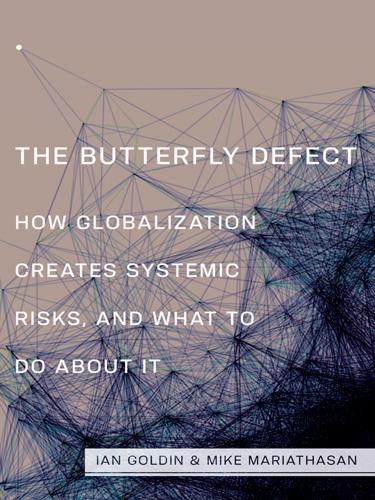
The Butterfly Defect: How Globalization Creates Systemic Risks, and What to Do About It
by
Ian Goldin
and
Mike Mariathasan
Published 15 Mar 2014
We examine how political changes and technological innovation gave rise to global supply chains. An analysis of “best practices” in supply chain management shows how these supply networks are vulnerable to systemic risk. We then seek to identify ways to make supply networks more resilient. This chapter’s conclusion draws lessons for systemic thinking from supply chain management and considers how the resilience and robustness of the system may be improved. GLOBAL SUPPLY CHAINS We begin by considering the rise of global supply chains in the late twentieth and early twenty-first centuries. We show how political and technological changes shaped global trade and international relations and how supply chain management adapted to suit this new transnational environment.
…
In a recent survey of international supply chain managers, McKinsey and Company found that product complexity and financial volatility were among the most important determinants of supply chain strategies.48 Their survey also documents that these professionals perceived supply chain risk as being greater in 2008 than in 2006. The risks that executives reported were linked to the difficulty of obtaining accurate information on the state of global supply chains, something that has become more difficult as globalization has made the world more complex. The executives emphasized that substantial resources are required for the management of global supply chains. These findings are consistent with the results from a separate, more extensive survey conducted among three hundred global manufacturing companies by the Massachusetts-based consultancy PRTM.49 The company’s research found that some managers today actually believe that outsourcing is an impediment to competitiveness under certain circumstances as a result of its negative impact on resilience, going against the core of lean management philosophy.
…
We have shown that connectivity in both the financial sector and the real economy has increased dramatically in the twenty-first century and that global governance has failed to match the speed of global integration. The resulting governance gap has led to systemic risk in the financial sector and to instability in the global supply chain network. Global supply chains and financial systems operate on the foundation of increasingly sophisticated infrastructure networks. Infrastructure includes the freight and travel networks touched on in chapter 3 but also the world’s energy grid and the information superhighway that has given us the World Wide Web.
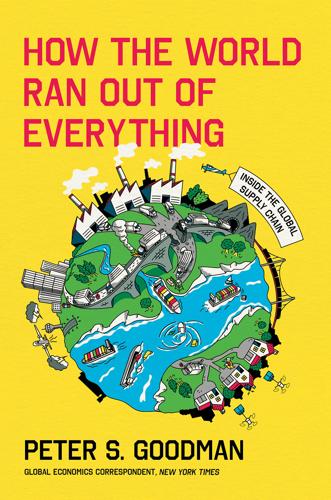
How the World Ran Out of Everything
by
Peter S. Goodman
Published 11 Jun 2024
That warning rested on the sensible assumption that China would be inundated with more factory orders than it could manage, slowing the gears of the global supply chain. And that understanding was based on the fact that around the world, major businesses had compounded their excessive reliance on Just in Time with a colossal failure to anticipate the impacts of the pandemic itself. They had concluded—incorrectly—that the global spread of a lethal coronavirus would destroy demand for factory goods. And once they figured out that theory was wrong, they sought to adjust by sending a flood of new orders to the factories of China. Part of the miscalculation by the people running the global supply chain reflected a basic failure to anticipate the course of the pandemic.
…
The shipping container was the workhorse of the global supply chain. It was nothing more than a steel box that could be packed with cargo. But its development in the middle of the twentieth century represented a crucial technological breakthrough. Shipping containers could be stacked atop others on enormous vessels, then plucked easily off the decks by crane and deposited on the docks. That basic feature had dramatically accelerated the movement of cargo. It had effectively shrunk the oceans, compressing the distance between shores. There was no global supply chain without the shipping container. There was no Just in Time.
…
Still, Walker’s container was an ideal object to follow—as we will do in the course of this book—because its passage traced the voyage of countless other loads of cargo traversing the Pacific and the American continent. Its odyssey, at once commonplace and astounding, afforded an ideal vantage point on the breadth of the troubles assailing the global supply chain. The journey of that single box revealed how and why trillions of dollars’ worth of goods, some critical to saving lives, effectively went missing in the midst of a public health catastrophe. By the time the Maersk Emden joined the floating queue off Long Beach bearing Walker’s shipment, people from Europe to Africa to North and South America had endured a terrifying scarcity of personal protective gear like face masks and medical gowns.

Connectography: Mapping the Future of Global Civilization
by
Parag Khanna
Published 18 Apr 2016
It is not countries as a whole that ascend value chains but such circuits of people who are attached to global nodes. Gradually, places such as garment production centers in Dhaka and Addis Ababa begin to feel almost detached from their own country even as they become key drivers of its growth; they belong as much to the global supply chain as to their nation. So synchronized are global supply chains that they serve as a seismograph of our amplified connectivity. Like earthquakes causing equally powerful aftershocks, the financial crisis of 2008 contracted world trade five times more severely than it did world GDP. First the credit crunch created a demand shock, meaning a huge slump in purchases of durable goods.
…
This trend is playing out around the world from East Africa to Southeast Asia as dynamic new regional federations take shape through common infrastructures and institutions. North America too is growing into a truly united supercontinent. Third, the nature of geopolitical competition is evolving from war over territory to war over connectivity. Competing over connectivity plays out as a tug-of-war over global supply chains, energy markets, industrial production, and the valuable flows of finance, technology, knowledge, and talent. Tug-of-war represents the shift from a war between systems (capitalism versus communism) to a war within one collective supply chain system. While military warfare is a regular threat, tug-of-war is a perpetual reality—to be won by economic master planning rather than military doctrine.
…
Supply chains are the complete ecosystem of producers, distributors, and vendors that transform raw materials (whether natural resources or ideas) into goods and services delivered to people anywhere.*7 Whether you are awake or asleep, scarcely a moment of our daily lives—sipping morning coffee, driving a car, talking on the phone, sending an email, eating a meal, or going to the movies—doesn’t involve global supply chains. And yet as universal as they are, supply chains are not things in themselves. They are a system of transactions. We do not see supply chains; rather, we see their participants and infrastructures—the things that connect supply to demand. What we can see, however, by tracing supply chains link by link is how these micro-interactions add up to large global shifts.
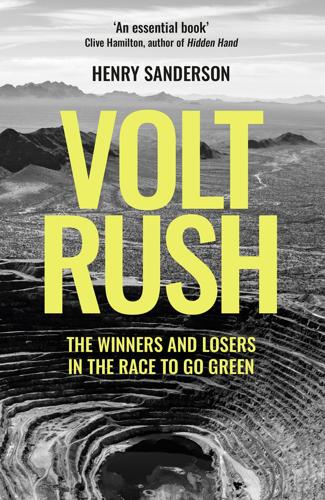
Volt Rush: The Winners and Losers in the Race to Go Green
by
Henry Sanderson
Published 12 Sep 2022
The same year, a young man called Robin Zeng made his way to southern China, to the bustling coastal city of Dongguan in southern Guangdong province near Hong Kong, which was embracing capitalism and openness to the world, despite the widespread crackdown on political speech that followed the Tiananmen violence. For an ambitious young man in 1989 moving to Dongguan was like heading to the centre of the world, a place becoming connected to global supply chains where workers lived in crowded dormitories and could watch Hong Kong TV. In the city, which a few years earlier had been farmland and rice paddies, foreign investors were being encouraged by the local government to invest in manufacturing enterprises. Dongguan attracted significant Taiwanese, Hong Kong and other foreign investment in factories, and acted as a magnet for Chinese migrant workers (Dongguan’s population doubled in the 1980s).
…
While Tesla and Elon Musk got all the attention, the real growth was going to come from China, where the government had launched generous subsidies for EV purchasers. In 2015 China launched an ambitious plan to dominate future technologies, called ‘Made in China 2025’, which was a significant government-led effort to decouple China from global supply chains and support indigenous innovation. One of the key sectors was electric vehicles. That led to a rapid expansion in Chinese battery capacity. Over seventy percent of new battery cell capacity was being built in China.9 ‘It is not unusual to go to a battery factory and to be standing in the first of maybe one or two battery production lines but in the meantime, they have already installed sheds three through to eight and they are backfilling equipment and starting commissioning some of them,’ he said.10 Brinsden believed China would ‘surprise the world’ with the battery revolution.
…
‘We are poised to become a central actor in the creation of the new electrical world economy,’ Óscar Landerretche, the former chairman of Codelco, the world’s largest copper producer, owned by the Chilean state, told me in the company’s grand dark-panelled wooden offices in central Santiago. The Atacama is the beginning of a global supply chain that enables all our digital lives – from iPhones to iPads and laptops. It is a reminder that for all our ability to live on our smartphones and store our data in the cloud we have still not moved beyond digging up finite minerals from the earth to meet our needs. As Max Planck once observed: ‘Mining is not everything, but without mining everything is nothing.’1 In early 2016 I was picked up in the dusty mining town of Calama, where copper miners once spent the fortunes they made from feeding China’s insatiable demand for the metal in the mid-2000s.

MegaThreats: Ten Dangerous Trends That Imperil Our Future, and How to Survive Them
by
Nouriel Roubini
Published 17 Oct 2022
Economist Dani Rodrik and others argue that hyperglobalization, democracy, and national sovereignty create an “inconsistent trilemma.” To maintain democracy and sovereignty, hyperglobalization needs to be curtailed. More recently, as the consequence of the COVID-19 crisis and the ensuing disruptions to global supply chains, logistics, and transportation networks, calls for reshoring or friend-shoring of manufacturing and global supply chains have become louder and more popular. Indeed, global pandemics that spread faster because of globalization have first led to draconian restrictions of the movement of people—as during the peak of COVID-19—when foreign travel became nearly impossible and is still hampered.
…
Mounting evidence began suggesting as much in 2021 to anyone following the financial news. Inflation, the precursor to stagflation, flared up thanks to the COVID-19 shock, which was both a negative supply and demand shock. The COVID-19 recession led to massive and unprecedented monetary and fiscal stimulus in 2020–21 that, together with global supply chain bottlenecks, commodity price surges, and a shrinkage in labor supply, nudged inflation rates to levels not seen since the 1980s. Things got worse in 2022, when some observers hoped that the fading of the COVID-19 contagion would reduce the supply bottlenecks that cause inflation. Instead, the Russian invasion of Ukraine raised the price of commodities that Russia and Ukraine supply: oil and natural gas, industrial metals, fertilizers and agricultural goods.
…
Instead, the Russian invasion of Ukraine raised the price of commodities that Russia and Ukraine supply: oil and natural gas, industrial metals, fertilizers and agricultural goods. Then the Omicron variant of COVID-19 struck China. A draconian Zero-COVID policy forced the shutdown of entire cities that are major hubs for business, trade and transportation. This further clogged global supply chains. When goods are scarce, prices rise. Inflation climbed in advanced economies and emerging markets. Severe droughts heightened concerns about access to food, a prescription for volatility. Poor crops in Russia and Ukraine and a drought in parts of the Middle East sparked food riots in 2010 that launched the Arab Spring.
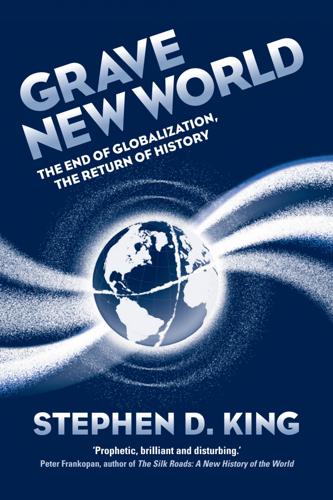
Grave New World: The End of Globalization, the Return of History
by
Stephen D. King
Published 22 May 2017
CHAPTER 9: THE DARK SIDE OF TECHNOLOGY 1.Although it is worth noting that we may be close to reaching the physical limits of miniaturization: quantum mechanics suggests life could become a lot less certain. 2.The phrase ‘mass production’ wasn’t coined until the 1920s. It originally referred to the Ford Motor Company. 3.For a useful summary of the evolution of global supply chains, see R. Baldwin, Global Supply Chains: Why they emerged, why they matter, and where they are going, Centre for Trade and Economic Integration Working Paper CTEI-2012-13, Graduate Institute, Geneva, 2012. 4.Lord Reith, director general of the BBC between 1927 and 1938, was keen to deliver to his audience ‘All that is best in every department of human knowledge, endeavour and achievement … The preservation of a high moral tone is obviously of paramount importance.’ 5.Winston Churchill appeared to thrive on alcohol in ways that would likely be unacceptable today, yet he was rarely criticized.
…
Where David Ricardo’s comparative advantage applied, countries would have ended up specializing in some areas and exiting from others.10 In other words, there would have been both winners and losers in the US labour market, even if overall economic activity had ended up at a higher level (labour standards across the region would also have ended up higher, one reason why TPP’s demise comes at considerable cost).11 Where global supply chains were formed, specialist production would have been concentrated in some countries, and would have disappeared from others: again, there would have been labour market disruption even if the pie had increased in size. Meanwhile, countries integrated into Asian supply chains that had not signed up to TPP would have found themselves excluded from those supply chains in the future: for them, the playing field would not so much have been levelled, but rather tilted dramatically against them.
…
Yet without the information technology revolution, it is difficult to imagine that the world would have experienced anything like the degree of globalization witnessed since the 1980s. At a stroke, the nineteenth-century coordination problem – which led to a concentration of industrial activities in a limited number of areas – was removed. Global supply chains took over. Apple could design its iPhone in California, yet make it in China, courtesy of FoxConn. BMW could build its Minis in Oxford, yet have the engines made in Brazil. JP Morgan could package up US sub-prime mortgages, knowing that the bundles it had assembled could then be distributed to Norwegian pension funds.
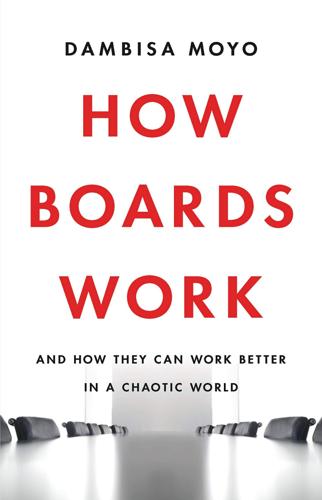
How Boards Work: And How They Can Work Better in a Chaotic World
by
Dambisa Moyo
Published 3 May 2021
In recent years, corporate leadership has rightly prioritized addressing cyber risks, the threat of technological obsolescence, and the consequences of a jobless underclass as a result of increased automation. However, there are now mounting concerns that something more fundamental is at risk. Many observers have begun to wonder whether global supply chains—a critical factor in the success of many multinational corporations—will continue to function as they once had. Over the past fifty years, multinational corporations have built and relied on global supply chains to source goods from low-cost regions and sell them in other countries for higher prices. This drove the success of many companies—catalyzing their profits by lowering costs, helping to drive global GDP, and underpinning the economic success of many emerging economies such as China’s.
…
The prospect of seeing the profit gains of low-cost production all but wiped out is just another strand boardrooms must confront. Ultimately, companies are left with a choice between absorbing these higher costs or passing them on to the consumer. Yet another threat to global supply chains is the emerging “splinternet”—an increasingly fragmented internet with competing China-led and US-led platforms. This technological fragmentation has the potential to dramatically disrupt global supply chains by eliminating centralized procurement and thereby raising costs and reducing the efficiency gained from shared global services. Furthermore, a balkanized internet promises to increase the complexity of companies’ operations and erode their ability to respond quickly to market forces.
…
If today’s global economic and political system is upended, boards will have to rethink their business models or risk failure. The prevailing globalized economy has allowed corporations to tap relatively cheap capital, deploy it around the world, and garner higher returns (the carry trade), while hiring and recruiting the best talent internationally. Multilateralism has significantly lowered the costs of global supply chains, enabling companies to manufacture goods in low-cost environments and sell them at higher prices in developed markets—as Apple has done with its iPhones. This has driven trade and investment, and thus economic growth, at a global scale to levels not previously seen. But in a rapidly de-globalizing world, these benefits could quickly disappear.
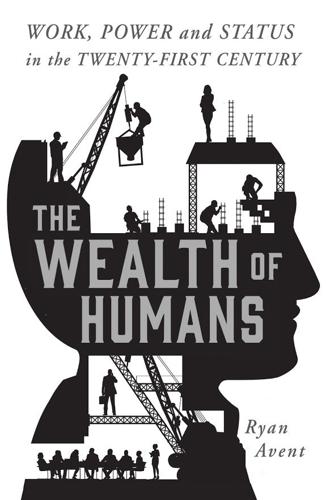
The Wealth of Humans: Work, Power, and Status in the Twenty-First Century
by
Ryan Avent
Published 20 Sep 2016
Machines are becoming defter and software is becoming cleverer, and these improvements are increasing the set of human tasks that can be cheaply automated. At the same time, the digital revolution has supercharged a second force: globalization. It would have been nearly impossible for rich Western firms to manage the sprawling global supply chains that wrapped around the world over the last twenty years without powerful information technology. And while China and other emerging markets might have become better integrated in the world economy even without companies such as Apple scattering production across the globe, such growth would have been much slower and less dramatic.
…
Electrification upended all sorts of industrial processes, and also gave us electric light, telephone calls and rock music. The digital revolution is no exception to this pattern. The web causes hardship for publishers precisely because it is so good for news consumers, who now enjoy access to massive amounts of information at very low cost. The global supply chains enabled by information technology have been hard on some workers but very good for shoppers as a whole, who now enjoy cheaper electronics, clothing and toys as a result. One marvels at the pure, massive consumer surplus generated by something like Wikipedia. When I was a kid, there were still people who would knock on your door to try to sell you encyclopedias, and school essays often needed to be written in a library, where you could easily turn to the Britannica on the shelves or dig through the card catalogue, looking for just the right source.
…
But property rights have been secure enough to satisfy lots of multinational firms, who have been willing to contract with Chinese companies or invest directly in the Chinese economy. Yet the role of foreign capital points to a second force at work in China’s rise, without which Chinese liberalization would have generated far more meagre returns. Over the last generation, technological change enabled explosive growth in global supply chains. Supply-chain trade has had far-reaching consequences for global development. Success in export markets once required economies to develop an entire suite of capabilities. To export electronics or cars, South Korea and Japan needed to build an entire, high-quality supply chain domestically: they needed lots of firms capable of designing and manufacturing components, and well-organized corporations capable of planning and coordinating the design, production and sale of complex goods.

The Fissured Workplace
by
David Weil
Published 17 Feb 2014
From the beginning of his tenure, Lenny pursued a “value-enhancing strategy” focused on shifting production and related activities away from the company via outsourcing.51 Indicative of this effort, Hershey outsourced elements of production of its chocolate liquor—the chocolate core of products like Kisses—to other companies, leaving only final reassembly steps to its own facilities and workforce. As a further extension of that strategy, the company announced its “global supply chain transformation” in February 2007. The official objective of the three-year program could not be a clearer statement of fissuring as applied to supply chain strategy. “The transformation program will result in a flexible, global supply chain capable of delivering Hershey’s iconic brands, in a wide range of affordable items and assortments across retail channels in the company’s priority markets.”52 The plan entailed further reducing the number of Hershey’s own production lines, “outsourcing production of low value-added items” to other companies, and building a new production facility in Monterrey, Mexico.
…
This included a more aggressive stance toward the Bakery, Confectionary, Tobacco, and Grainmillers Union, which represents Hershey’s workers. In 2002 the breakdown in negotiations over wages and benefits led to a forty-four-day strike. Although the parties settled the strike, the longer-term effort to reduce jobs continued. 52. See “Hershey Announces Global Supply Chain Transformation,” PR Newswire, February 15, 2007 (http://www.prnewswire.com/news-releases/hershey-announces-global-supply-chain-transformation-57933727.html, accessed July 21, 2012). 53. In addition to corporate documents and contemporaneous accounts, this section is based on Cleeland (2009). 54. Weekly stock price increases outpaced the Dow Jones Industrial Average consistently from 2002 through the first half of 2007.
…
Compliance, Commitment and the Improvement of Labor Conditions in Global Supply Chains.” Politics and Society 27, no. 2: 319–351. Locke, Richard, Greg Distelhorst, Timea Pal, and Hiram Samel. 2012. “Production Goes Global, Standards Stay Local: Private Labor Regulation in the Global Electronics Industry.” MIT Political Science Department Research Paper No. 2012–1. Locke, Richard, Fei Qin, and Alberto Brause. 2007. “Does Monitoring Improve Labor Standards? Lessons from Nike.” Industrial and Labor Relations Review 61, no. 1: 3–31. Locke, Richard, and Monica Romis. 2007. “Improving Work Conditions in a Global Supply Chain.” Sloan Management Review 48, no. 2: 54–62.

Arriving Today: From Factory to Front Door -- Why Everything Has Changed About How and What We Buy
by
Christopher Mims
Published 13 Sep 2021
The robots could still be coming,” Los Angeles Times, June 28, 2019, https://www.latimes.com/local/lanow/la-me-ln-deal-port-dockworkers-automation-ilwu-union-permit-245-maersk-robot-jobs-20190628-story.html. some portion of the workers within an industry: Cole, “The Tip of the Spear.” choke points in the global supply chain: Jake Alimahomed-Wilson and Immanuel Ness, eds., Choke Points: Logistics Workers Disrupting the Global Supply Chain (London: Pluto Press, 2018). full pensions: Andrea Bernstein, “Why 80K People Applied for 2,400 Positions at LA’s Ports,” KPCC, June 5, 2017, https://www.scpr.org/news/2017/06/05/72573/why-80k-people-applied-for-2-400-positions-at-la-s.
…
The shocks to the supply chain that were to come would only accelerate this dispersion of manufacturing capacity across the globe, wresting from mainland China its monopoly on the creation of countless objects. This is not to say that the world’s multinationals, and Vietnam itself, were ready. In the immediate aftermath of the black dawn of the coronavirus, manufacturers tested the hypothesis that factories outside China could protect them from shocks to global supply chains, and in many cases found it wanting. What so many companies couldn’t get around, no matter where their factories were located, was that the parts and materials that are fed into today’s factories still so often come from China. Manufacturing in the twenty-first century isn’t material in, finished products out, as it was in the days of Bethlehem Steel and Henry Ford.
…
These workers, many of whom have specialized skills and knowledge even if their work is technically blue-collar, have the ability to shut down that much more economic activity should they choose to walk off the job. At ports, this is especially true, since they are, as has been amply demonstrated through the power of striking transportation workers all over the world, choke points in the global supply chain. Thus, for workers whose skills are especially in demand, think of coders in Silicon Valley, or sufficiently well organized, like unionized dockworkers, automation can make them more powerful, not less. The more than 7,000 full ILWU members who work at the Port of Los Angeles have translated that power into salaries in excess of $100,000 a year, free health insurance, and full pensions.
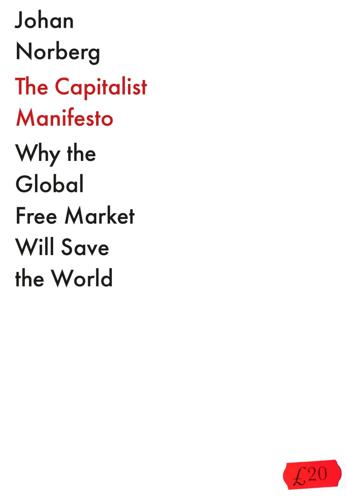
The Capitalist Manifesto
by
Johan Norberg
Published 14 Jun 2023
Then there was a revolution, thanks to the emergence of international supply chains. Foreign investors and global companies now consider suppliers in a poor country an integral part of their own business and it is in their own commercial interest to invest massively in their productivity. This is one reason why many countries that have been integrated into global supply chains – not least through much-maligned low-wage factories and ‘sweatshops’ – have been able to skip several stages of development and grow at a record pace. Once you have built factories, roads and ports to manufacture and transport clothes and toys, you can then also use them to produce and export high-tech components.33 Surprisingly, this spread of technology has gone hand in hand with stronger local protection for intellectual property.
…
When the crisis comes You might think yes, yes, all that sounds nice, as long as everything goes smoothly, but then there are pandemics, natural disasters or wars and then we need the government. In desperate times, politicians need exceptional powers to get us to behave properly and produce what is needed. A common interpretation is that the pandemic showed that we can’t rely on global supply chains where tens of thousands of people across the globe manufacture our face masks, protective equipment and medical technology. Like China, many countries now think they should have had large domestic production, or at least have large stockpiles full of protective equipment like Finland did. We must ‘limit our dependence on other countries,’ said EU Health Commissioner Stella Kyriakides.
…
New trade barriers were created, a large part of the workforce stayed at home while others were forbidden to cross national borders, and deliveries to the restaurant industry collapsed at the same time as demand for other food supplies soared when shoppers became preppers. The incredible thing about your shop shelves was that almost nothing happened. Through round-the-clock work to change suppliers, reallocate labour, adjust production methods and redirect transportation, the food industry managed to rebuild global supply chains in just a few weeks. It is an absolutely amazing achievement and we consumers noticed almost none of it. It was not done by any food tsar who dictated what everyone should do. It worked because it was not a centralized process. Each adjustment of the processes was based on local knowledge of what could be done in a particular place with the available raw materials and the workforce present – and what they could stop doing without creating catastrophic shortages elsewhere.

Makers
by
Chris Anderson
Published 1 Oct 2012
Bales of raw cotton came in by sea from far-off lands and were transformed by miraculous machines—combing, tight weaving, and precision dyeing—into thread, cloth, and finally clothes. Then those goods were sent off through the same channels to markets around the world. It was a glimpse of the future: global supply chains, competitive advantage, and automation made a once-unremarkable city the center of the global textile trade. Impressive as the new manufacturing machines were, the supply networks that fed them were equally important. Bigger, more efficient factories needed more and cheaper raw materials—not just cotton from Egypt and the Americas, but dyes and silk from Asia and eventually mineral resources such as iron ore and coal.
…
Manufacturing has now become just another “cloud service” that you can access from Web browsers, using a tiny amount of vast industrial infrastructure as and when you need it. Somebody else runs these factories; we just access them when we need them, much as we can access the huge server farms of Google or Apple to store our photos or process our e-mail. The academic way to put this is that global supply chains have become “scale-free,” able to serve the small as well as the large, the garage inventor and Samsung. The non-academic way to say it is this: nothing is stopping you from making anything. The people now control the means of production. Or, as The Lean Startup author Eric Reis puts it, Marx got it wrong: “It’s not about ownership of the means of production, anymore.
…
People should do only what they do best, he said, and trade with others who make other specialized goods. No one person or town should try to do it all, since a society can do far more collectively with an efficient division of labor—comparative advantage plus trade equals growth. What was good in the eighteenth century is even better in the twenty-first, now that specialists have access to global supply chains for their commodity input materials and global consumer markets for their niche output products. Nearly thirty years ago, two MIT professors, Michael Piore and Charles Sabel, predicted this transition in a book titled The Second Industrial Divide. They argued that the mass-production model that defined twentieth-century manufacturing economies (the “first industrial divide” between people and production) was neither inevitable nor the end of innovation in making things.
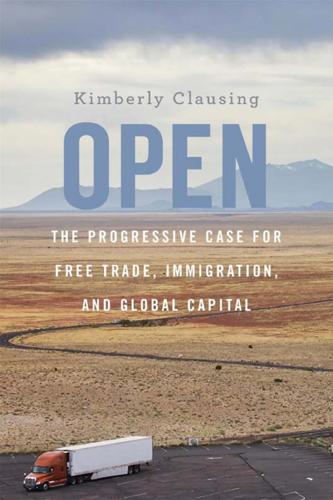
Open: The Progressive Case for Free Trade, Immigration, and Global Capital
by
Kimberly Clausing
Published 4 Mar 2019
Membership expanded from 18 members at inception, to 84 members in 1980, to 164 members today (fig. 2.10).20 Also helping to fuel increasing trade have been falling communication and transportation costs. The greater access to information afforded by computerization and the Internet makes it far easier to do business across borders. Technological changes have also enabled global production processes, by solving the complicated logistical puzzles of global supply chains. Finally, economic growth abroad has also increased international trade flows, which tend to increase with the size of the economy. For the United States and more broadly the world, the importance of trade in the overall economy has grown by about 50 percent relative to its level in 1980.
…
US auto producers would similarly face higher prices for imported auto parts. Apple, Intel, and other globally integrated corporations would also see increased costs due to trade frictions. Further, a US decision to cut imports would negatively affect our nation’s own production, given that many products manufactured abroad draw on global supply chains in which US producers participate as suppliers. For example, in the goods we import from Mexico, a very large share of the value is made up of US content.6 For that matter, it turns out that the US firms who are the biggest exporters are also often the biggest importers. It is difficult to reduce imports without creating collateral damage.7 Figure 3.2: Imports Help the Boeing 787 Fly Reprinted with permission from Reuters Graphics, Thomson Reuters Markets LLC.
…
Again, it is difficult to truly disentangle these two sources of labor market disruption, especially as international trade and technological change fuel each other. Globalization allows quicker technological diffusion, and competitive forces encourage labor-saving innovation. Technological change enables globalization by lowering communication costs and creating solutions to the logistical puzzles of global supply chains. Figure 4.5: Almost Everywhere, the Manufacturing Share of Employment is Falling Data sources: International Labor Comparisons, US Bureau of Labor Statistics. Monopoly and Excess Profits in the Global Economy As Chapter 2 showed, excess profits also play an important role in this story of workers’ woes.

Covid-19: The Pandemic That Never Should Have Happened and How to Stop the Next One
by
Debora MacKenzie
Published 13 Jul 2020
Let me emphasize that this was a total coincidence: this was a “what if” scenario playing out in a computer model of US society, featuring a made-up virus. They chose a coronavirus for the simulation partly to show how disruptive even a relatively mild virus can be. They succeeded. The result of the simulation was what we are living out now: overwhelmed health care, disrupted global supply chains, needless death, economic dislocation. And a table full of officials from government and industry sitting there saying, If this were to happen, there’s not much my sector/department/office could do. And the people who wrote that simulation were going easy on the officials—maybe so they’d sit through the entire afternoon and not be so horrified they’d quietly slip out at the coffee break, trying to forget what they’d seen.
…
But as the villages become more tightly coupled, both may suffer when one is attacked. A loose network absorbs shock; a tightly coupled one transmits it. That is happening in the Covid-19 pandemic. Countries go into lockdown; people stop shopping, traveling, and producing; and the effects ricochet through a tightly coupled global economy. The global supply chains of money, materials, people, energy, and component parts that underpin industries falter and break. Airlines go under as they are not set up to weather even a temporary disappearance of travelers. Malaria worsens in Africa as insecticide and antimalarial bed net deliveries falter. Microcredit that underpins small businesses throughout the developing world defaults because payment collectors are locked down, causing ramifications throughout an economy.
…
In the future, if deliveries depend more on automated systems, trucking may not remain as vulnerable—but the principle remains that if certain hub industries are paralyzed by loss of people, the impact can be far-reaching. There will be other choke points that depend on people: doctors and nurses, engineers who run power grids or essential manufacturing, or global supply chain managers are not all readily replaced. Even transient absences of key workers can cause snowballing problems. During Covid-19 lockdowns, oil refineries are shutting due to plummeting demand as air and road traffic fall. In a pandemic with a high loss of people, absence of workers at oil refineries starts becoming a problem.
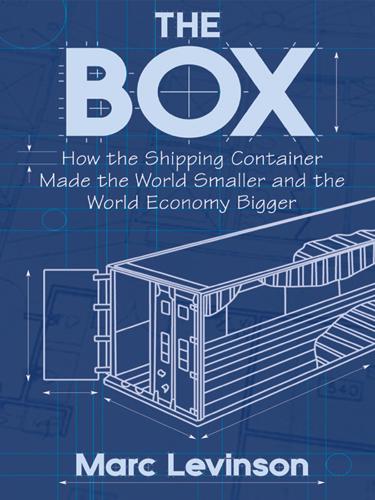
The Box: How the Shipping Container Made the World Smaller and the World Economy Bigger
by
Marc Levinson
Published 1 Jan 2006
If Peru were as effective at port management as Australia, the World Bank estimated, that alone would increase its foreign trade by one-quarter. If it cannot be, it will receive the maritime equivalent of branchline service on a single-track railway. The big containerships that link national economies in the global supply chain, carrying nothing but stacks of metal boxes, will pass it by.16 Global supply chains were not in anyone’s mind in the spring of 1956. Over the next half century, freight transportation developed in ways that could not have been imagined by the dignitaries watching the Ideal-X take on those first containers at Port Newark. Perhaps the most remarkable fact about the remarkable history of the box is that time and again, even the most knowledgeable experts misjudged the course of events.
…
Workers in China produced her statuesque figure, using molds from the United States and other machines from Japan and Europe. Her nylon hair was Japanese, the plastic in her body from Taiwan, the pigments American, the cotton clothing from China. Barbie, simple girl though she is, had developed her very own global supply chain.1 Supply chains like Barbie’s are a direct result of the changes wrought by the rise of container shipping. They were unheard-of back in 1956, when Malcom McLean placed his first containers on board the Ideal-X, and in 1976, when high oil prices brought sky-high freight costs that stifled the flow of world trade.
…
With modern communications and container shipping, the retailer could design its own shirts and transmit the designs to a factory in Thailand, which used local labor to combine Chinese fabric made from American cotton, Malaysian buttons made from Taiwanese plastics, Japanese zippers, and decorations embroidered in Indonesia. The finished order, loaded into a 40-foot container, would be delivered in less than a month to a distribution center in Tennessee or a hyper marché in France. Global supply chains became so routine that in September 2001, when U.S. customs authorities stepped up border inspections following the terrorist attack that destroyed the World Trade Center in New York, auto plants in Michigan began shutting down within three days for lack of imported parts. The improvement in logistics shows up statistically in reduced inventory levels.

The New Prophets of Capital
by
Nicole Aschoff
Published 10 Mar 2015
Global and grassroots environmental groups focused their energies on getting states, networks of states, and intergovernmental bodies like the United Nations to implement restrictions to stop companies from dumping toxic waste in streams and rivers, clear-cutting forests, and belching exhaust into the atmosphere. Over the past decade and a half, this state-centered focus has shifted to a consumer-centered focus as fears stoked by globalization have changed the frame of environmentalism. In the age of global supply chains, free trade agreements, and capital flight, states have increasingly come to be seen as incapable of protecting their citizens from big global problems like ozone depletion, climate change, and biodiversity loss, and even more tractable problems, like controlling hazardous waste flows or regulating toxic substances in consumer goods.14 But while processes of globalization have delegitimized states and made citizens feel disconnected from the protective embrace of their respective governments, they have also helped to forge new, global identities based on feelings of “world-citizenship.”15 Westerners in particular have become uneasily aware of their power as consumers in shaping and driving global value chains.
…
States, aside from the big players, appear weaker than ever (with less autonomy, power, authority), and their ability to tell corporations what to do is limited by their need for economic development and their membership in international bodies like the World Trade Organization that explicitly prohibit most environmental restrictions. On the flip side, transnational corporations are stronger than ever. One giant company, like Unilever or Walmart, affects millions of people around the world every day through its global supply chains. Free markets don’t exist, but maybe corporations are still the best, most sensible, way to heal the planet. They have reach, influence, and an unrivaled ability to coordinate action quickly. In Mackey’s story an enlightened corporation with a positive mission that honors all its stakeholders can heal the planet.
…
The probusiness environmental message of the 1987 Brundtland Report, in combination with the weakened power of states to control the actions of corporations, have pushed big environmental NGOs to change their stance toward corporations over the past decade and to focus on the marketplace as the most viable lever of change.32 As Gerald Butts, CEO of World Wildlife Fund Canada, explains about WWF’s decision to partner with Coca-Cola: We could spend fifty years lobbying seventy-five national governments to change the regulatory framework for the way these commodities are grown and produced. Or these folks at Coke could make a decision that they’re not going to purchase anything that isn’t grown or produced in a certain way—and the whole global supply chain changes overnight.33 Big environmental groups may criticize neoliberalism and transnational corporations, but these days their strategic agendas look very similar to those of companies like Whole Foods and Walmart. The state is viewed as a suspect, ineffective force, while the firm becomes the key vehicle for change.
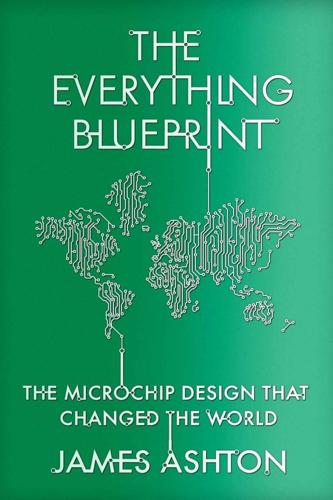
The Everything Blueprint: The Microchip Design That Changed the World
by
James Ashton
Published 11 May 2023
Neither the US, the inventor of this industry decades earlier, nor China, which was striving for self-sufficiency from the US, could cope without Taiwanese output that fulfilled the goods their factories made and consumers and businesses faithfully bought. Demonstrating how closely entwined the two opposing sides were, China consumed 60 per cent of global chip output, but about half of that volume departed the country in finished goods, and many of those were destined for the US, the product of an intricate global supply chain that had been established in better times. All of this explained why Pelosi, alongside the Taiwanese President, Tsai Ing-wen, found time to sit down for lunch with Mark Liu, the chairman of Taiwan Semiconductor Manufacturing Company (TSMC), and its talismanic founder, Morris Chang. TSMC was the world’s largest contract chipmaker, making chips to the specification of its customers but not designing its own.
…
TSMC’s Liu warned that an invasion would bring about the ‘destruction of the world’s rules-based order’ and render its factories as ‘non-operable’.3 And, in the unlikely case the Chinese could overcome that hurdle and keep the facilities running, their output would quickly be cut off from the rest of the global supply chain. ‘How do we get it resolved?’ Liu said. ‘It’s very simple. Keep Taiwan safe.’ He added: ‘If you don’t do that you have to spend hundreds of billions of dollars, (over) maybe 10 or 15 years, before you get back to this point.’ A year before the Pelosi trip, veteran semiconductor industry analyst Malcolm Penn sketched out the catastrophic impact of an attack.
…
But Acorn’s £135m valuation − amounting to paper fortunes of £64m and £51m for Hermann Hauser and Curry respectively − marked an amazing rise for a firm whose profit of £8.6m had mushroomed from just £3,000 in 1979. The pair had put in £50 each to start CPU, and the same again into Acorn. The company’s new investors were banking on further explosive growth, but to achieve that would bring far greater complexity, in part because of the industry’s global supply chain that was already in place. Memory chips had to be ordered up to a year ahead so that production facilities in Wales and Hong Kong could receive components in time for assembly. Acorn’s principal route to market, mail order, gave way to stocking the high-street retailers, which meant expanding the sales team.

The Age of Stagnation: Why Perpetual Growth Is Unattainable and the Global Economy Is in Peril
by
Satyajit Das
Published 9 Feb 2016
By the nineteenth century, England, Spain, Portugal, the Netherlands, Italy, France, and Germany had established major colonies in Asia, Africa, and the Americas, built upon what English naturalist Alfred Russel Wallace termed “the unblushing selfishness of the greatest civilized nations.”1 The objective was to strengthen economic and political power by controlling key resources and strategic trading routes, and to deny these advantages to sovereign rivals. Over time, the colonies came to resemble modern global supply chains. In a thoroughly contemporary twist, Britain even outsourced the management of its colonies to private interests, the British East India Company. Colonialism provided access to low-cost raw materials, fueling the growth and prosperity of the Old World. It provided cheap labor, often in the form of slaves, and new markets for the products of the colonial powers.
…
The Y2K software problems fueled the development of India's software industry. The new economy was centered on China, now the world's factory, exporting around 50 percent of its output. It imported resources and parts that were then assembled or processed and shipped out again. Smaller emerging economies, especially in Asia, became integrated into new Sino-centric global supply chains. Consultant David Rothkopf highlighted the uneven balance of power within emerging markets: “Without China, the BRICs are just the BRI, a bland, soft cheese that is primarily known for the whine [sic] that goes with it…”8 China was now the largest purchaser of iron ore and other metals, and one of the biggest purchasers of cotton and soybeans.
…
They were the result of greater risk-taking, underwritten by the government, in institutions that were seen as too big or too important to fail. In effect, they were the beneficiaries of large, hidden transfers from other parts of society. Increased international trade, improvements in transport and information technology, and the development of global supply chains further altered the structure of labor markets, increasing inequality. Businesses in developed economies lowered costs by outsourcing labor-intensive production to low-cost locations, retaining the more profitable operations requiring higher skills. This allowed the firms to increase their earnings at the expense of workers.

Competing on Analytics: The New Science of Winning
by
Thomas H. Davenport
and
Jeanne G. Harris
Published 6 Mar 2007
At a polymer chemicals company, many of the company’s products had become commoditized. Executives believed that it was important to optimize the global supply chain to squeeze maximum value and cost out of it. The complexity of the unit’s supply chain had significantly increased over the previous couple of years. Responding to the increased complexity, the organization created a global supply chain organization, members of which were responsible for the movement of products and supplies around the world. In the new organization, someone was responsible for the global supply chain, there were planning groups in the regions, and then planners in the different sites.
…
Amazon.com’s business model, in contrast, requires the company to manage a constant flow of new products, suppliers, customers, and promotions, as well as deliver orders directly to its customers by promised dates. With one of the most complex supply chain problems in business, Amazon.com recruited Gang Yu, a professor of management science and a software entrepreneur who is one of the world’s leading authorities on optimization analytics, as the head of its global supply chain. Yu and his team began by integrating all the elements of their supply chain in order to coordinate supplier sourcing decisions. To determine the optimal sourcing strategy (determining the right mix of joint replenishment, coordinated replenishment, and single sourcing) as well as manage all the logistics to get a product from manufacturer to customer, Amazon.com applies advanced optimization and supply chain management methodologies and techniques across its fulfillment, capacity expansion, inventory management, procurement, and logistics functions.

Making It in America: The Almost Impossible Quest to Manufacture in the U.S.A. (And How It Got That Way)
by
Rachel Slade
Published 9 Jan 2024
Each year, the ports handle a combined $370 billion worth of cargo. They load and unload 156.8 million metric tons, or 346,000,000,000 pounds of stuff. That’s roughly equivalent to the weight of the earth’s moon…doubled. And that represents only one third of the goods coming into the United States. In the fall of 2021, the global supply chain was cracking under our insatiable need for things. The port was experiencing “unparalleled import surge, driven by unprecedented demands by American consumers,” said Gene Seroka, the executive director of the Port of Los Angeles. There weren’t enough berths to handle the number of vessels arriving.
…
Nearly 70 percent of the retail price went to tax, profit, and Zara’s operational costs (including marketing, rent, and staff). Just over 7 percent of that price went to the women and men in Turkey who cut and sewed the garment. Public Eye concluded that Zara’s demand for a low price point and a 16 percent profit reverberates across the global supply chain, impoverishing the people harvesting the cotton, transforming raw materials into fabric, and cutting and sewing the hoodie. So what does Zara actually pay workers per hoodie? Just over $2. (For reference, an American cut-and-sew team of stitchers paid an average of $20 per hour can produce a zip-up hoodie for around $4.)
…
Whether China’s 2021 cotton buying spree was motivated by supply concerns or rigging the market in retaliation for embarrassing Western sanctions was above Ned’s and Gary’s pay grade. All they knew, as Gary said, was that “the ground game has changed. People who can are planning out further ahead to lock in a price and make sure they’re gonna get their goods.” American apparel companies that depended on the global supply chain began to scramble back to domestic suppliers, in an effort to stabilize production and stay out of headlines. Consumers’ preferences were also shifting. Before Covid, Gary said, “Everybody was into high-tech stretchy fabrics, so demand for cotton started to slide and they planted less.” Now, with so many people working from home, “they don’t wanna be in that stretchy exercise stuff.
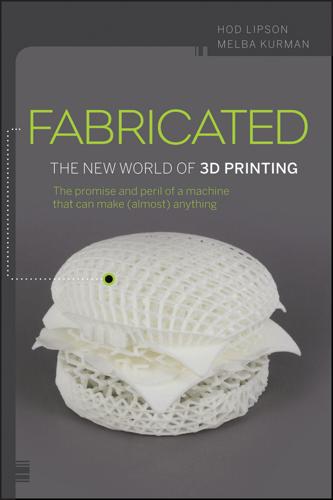
Fabricated: The New World of 3D Printing
by
Hod Lipson
and
Melba Kurman
Published 20 Nov 2012
The process of moving materials and parts around the world generates large amounts of pollution. Wal-Mart estimates that about 80 percent of its corporate carbon footprint is generated by its vast and global network of suppliers. Global supply chains move raw materials to the factory, then to the assembly line, and finally, to the last stop, the consumer. All of us rely on the flow of global supply chains. Nearly every mass produced object we live with, purchase, consume and throw away—from the most humble plastic toy to the medical device that saves lives in surgery—is the product of a long and winding supply chain.
…
Fortunately, the student seemed satisfied with my answer, but his question made me wonder what his generation will witness in their lifetimes. Today 3D printing is already becoming a mainstream tool in industries such as aerospace engineering where product lines involve small batches of complex parts. In the future 3D printing will disrupt the economy in more profound ways. Global supply chains will be replaced by agile and independent small manufacturers able to respond quickly to fluctuating inventories and market demands. Less directly, perhaps the biggest contribution of 3D printing technologies to the economy will be to reduce the risk and friction associated with trying out new business models.
…
Some metal manufacturing methods leave 90 percent of the raw metal behind in waste byproduct. For example, it can take up to 15 kilograms of raw metal to make a 1 kilogram airplane part.4 Since their goal was to study the carbon footprint generated over an entire product lifecycle, researchers studied the downstream impact of 3D printing on the global supply chain. Manufacturing could be greened if companies used digital inventory and local, just-in-time production—a de-centralized manufacturing model that 3D printing is ideally suited for. The Atkins Study concluded that “The application of AM for suitable parts and components, especially those that are of low volume but high value, can result in a significant reduction in stock costs and inventory levels.”

Frugal Innovation: How to Do Better With Less
by
Jaideep Prabhu Navi Radjou
Published 15 Feb 2015
Adapt R&D R&D engineers also need to take full advantage of digitised and flexible supply chain assets and processes when designing products. Three conditions should be in place: Products must be factory-agnostic; in other words, it should be possible to produce them in any factory in the manufacturer’s global supply chain. For instance, John Deere, a US agricultural and construction machinery manufacturer, has an operating model, Design Anywhere Build Anywhere (DABA), which allows it to shift production quickly and seamlessly from one factory to another, depending on relative capacity. R&D should use fewer, more standard components so they can be assembled faster on the shop floor.
…
La Ruche’s nationwide network of over 500 “hives” brings together a critical mass of local customers, giving them direct access to locally produced fresh, seasonal and ecofriendly foods. By cutting out the middleman, La Ruche’s network connects 50,000 members directly to over 2,500 small farmers. Large corporations and big-box retailers run global supply chains that deliver economies of scale that are increasingly unsustainable (such as selling bananas all year around). Collective buying platforms, by contrast, focus on large-scale localisation by supporting small-circuit supply chains that reduce time and distance between production and consumption, and are thus more sustainable environmentally, financially and socio-economically.
…
Tarcher/Putnam, 2000. 8Botsman, R. and Rogers, R., What’s Mine Is Yours: The Rise of Collaborative Consumption, HarperBusiness, 2010. 9Mulliez, V., CEO, Groupe Auchan, interview with Navi Radjou, October 8th 2013. 10McQuivey, J., Digital Disruption: Unleashing the next Wave of Innovation, Forrester Research, 2013. 2Principle one: engage and iterate 1“The History of Quicken”, www.intuit.com. 2Peters, T., Thriving on Chaos: Handbook for a Management Revolution, HarperBusiness, 1987. 3Strategy& (formerly Booz & Company), The 2014 Global Innovation 1000: Proven paths to innovation success (Media report), October 28th 2014. 4Hewitt J., Campbell J. and Cacciotti, J., Beyond the Shadow of a Drought, Oliver Wyman, 2011. 5Grogan, K., “Productivity of pharma R&D down 70% – study”, PharmaTimes, December 2nd 2011. 6Booz & Company, op. cit. 7Prabhu, A., innovation and insights director, Lion Dairy & Drinks, interview with Jaideep Prabhu, February 23rd 2014. 8Booz & Company, op. cit. 9The case study on Fujitsu’s work with farmers at Sawa Orchards in Wakayama, Japan, is based on interviews conducted by the authors with several senior executives at Fujitsu in the US and Japan. 10Booz & Company, op. cit. 11Ries, E., The Lean Startup: How Today’s Entrepreneurs Use Continuous Innovation to Create Radically Successful Businesses, Crown Business, 2011. 12Mayhew, S., head of R&D strategy development, GSK, interview with Jaideep Prabhu, February 17th 2014. 13Cornillon, P., senior vice-president R&D, Arla Foods, interview with Jaideep Prabhu, February 28th 2014. 14Radjou, N., Transforming R&D Culture, Forrester Research, March 20th 2006. 15Scott, M., “The Payments Challenge for Mobile Carriers”, New York Times, February 26th 2014. 16Comstock, B., “We’ve learned these four lessons from startups, and we’re using them to transform GE”, LinkedIn, December 10th 2013. 17Most of the material used in this case study comes from Radjou, N. and Prabhu, J., “Beating Competitors with High-Speed Innovation”, Strategy+Business, December 18th 2013 (www.strategy-business.com). 3Principle two: flex your assets 1Anand, N. and Barsoux, J-L., Quest: Leading Global Transformations, IMD International, 2014. 2Trout, B.L., director of the Novartis-MIT Center for Continuous Manufacturing, interview with Navi Radjou, May 9th 2014. 3“RAF jets fly with 3D printed parts”, BBC News, January 5th 2014. 4“Peter Weijmarshausen: 3D Printing”, etalks, April 2nd 2013. 5This quote from Gérard Mestrallet, CEO of GDF-Suez, is slightly adapted from its original version that appeared in his interview with a French magazine, L’Expansion, in December 2013. 6Dugan, J., Caterpillar to Expand Manufacturing and Increase Employment in the United States with New Hydraulic Excavator Facility in Victoria, Texas, Caterpillar press release, August 12th 2010. 7Wong, H., Potter, A. and Naim, M., “Evaluation of postponement in the soluble coffee supply chain: A case study”, International Journal of Production Economics, Vol. 131, Issue 1, May 2011, pp. 355–64. 8O’Marah, K., chief content officer, SCM World, and senior research fellow at Stanford Global Supply Chain Management Forum, interview with Navi Radjou, March 11th 2014. 9Beasty, C., “The Chain Gang”, Destination CRM, October 2007. 10Morieux, Y., “As work gets more complex, 6 rules to simplify”, TED Talk, October 2013. 11Lopez, M., CEO, Lopez Research, interview with Navi Radjou, March 28th 2014. 12O’Connell, A., “Lego CEO Jørgen Vig Knudstorp on leading through survival and growth”, Harvard Business Review, January 2009. 13“The Return to Apple”, All About Steve Jobs: http://allaboutstevejobs.com/bio/longbio/longbio_08.php. 14O’Connell, op. cit. 15Francis, S., CEO, Flock Associates, and former head of Aegis Europe, interview with Jaideep Prabhu, January 27th 2014. 16This case study is adapted from an original version that appeared in French in L’Innovation Jugaad, published by Diateino in 2013.
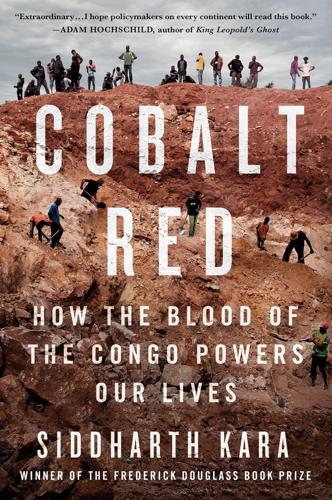
Cobalt Red: How the Blood of the Congo Powers Our Lives
by
Siddharth Kara
Published 30 Jan 2023
By the time one traces the chain from the child slogging in the cobalt mine to the rechargeable gadgets and cars sold to consumers around the world, the links have been misdirected beyond recognition, like a con man running a shell game. This system of obfuscating the severity of exploitation of poor people of color at the bottom of global supply chains goes back centuries. Few people sitting for breakfast in England in the 1700s knew that their tea was sweetened by sugar harvested under brutal conditions by African slaves toiling in the West Indies. The slaves remained far removed from the British breakfast table until a band of abolitionists placed the true picture of slavery directly in front of the English people.
…
Consider the first sentence, because this is the important one. If the OECD and its constituents concede that 70 percent of 72 percent of the world’s supply of cobalt “has some touch” with child labor, that would imply that half of the cobalt in the world was touched by child labor in the Congo. This fact alone indicted a preponderance of the global supply chain of cobalt, yet child labor was far from the only problem in the Congo’s artisanal mining sector. How much of the Congo’s cobalt was “touched” by the hundreds of thousands of Congolese people suffering the consequences of toxic exposure to cobalt, uranium, lead, nickel, mercury, and other heavy metals?
…
They all played their roles, but they were also symptoms of a more malevolent disease: the global economy run amok in Africa. The depravity and indifference unleashed on the children working at Tilwezembe is a direct consequence of a global economic order that preys on the poverty, vulnerability, and devalued humanity of the people who toil at the bottom of global supply chains. Declarations by multinational corporations that the rights and dignity of every worker in their supply chains are protected and preserved seem more disingenuous than ever. The translator for my interviews, Augustin, was distraught after several days of trying to find the words in English that captured the grief being described in Swahili.
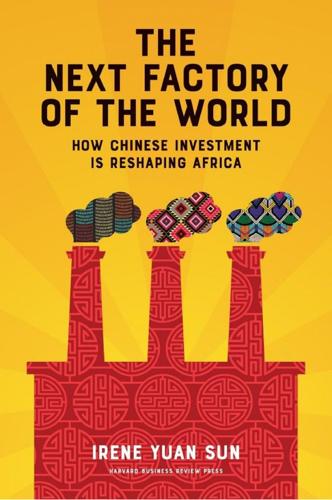
The Next Factory of the World: How Chinese Investment Is Reshaping Africa
by
Irene Yuan Sun
Published 16 Oct 2017
Landlocked and completely surrounded by its much larger neighbor, South Africa, it has few natural resources and a population of only 2 million. With these scare resources, it has to contend with the third-highest rate of HIV infection in the world.9 But even here, Chinese factories have found a niche due to Lesotho’s favorable position under US trade policy. As a result, Lesotho has become a link in the global supply chain that churns out the yoga pants and T-shirts ubiquitous in the United States. A world apart from both Nigeria and Lesotho, Kenya is the flagship economy of East Africa, boasting its own brand of entrepreneurship and innovation. Although youth unemployment has been worrisome and security concerns about neighboring Somalia lurk, Kenya’s GDP has grown consistently at a robust 5–6 percent a year over the past five years, and its burgeoning tech sector has earned Nairobi the moniker “Silicon Savannah.”
…
That year alone, 14,000 out of 50,000 garment workers lost their jobs as factory after factory shuttered its doors.2 If such an event were to repeat itself today, Mrs. Shen would have little room to maneuver—her factory’s small size and the lack of pricing power that clothing contractors command mean that she would be unable to raise prices in order to maintain margins. Indeed, the clothing industry is now dominated by a global supply chain within which Mrs. Shen’s factory is but one small link. Designs are made by retailers in the United States, Europe, and other developed countries. These are the brand names we’ve all heard of—Levi’s, Kohl’s, Reebok, Walmart. Those retailers go to a few giant sourcing firms (one expert I spoke to called them Big Sourcing), located mainly in Hong Kong and Taiwan, to get an agreement to have their designs made by a specified date and at a specified price.
…
See also labor-intensive production cardboard box factory, 89–91 cash flow, 118 celadon, 21 Central Bank of Kenya, 144, 145 Central Bank of Lesotho, 68 Chang, Leslie, 100 Chaplin, Charlie, 100–101 Chen, Jennifer, 62–63, 115–116, 126 China African exports to, 109–110 African factories of, 5–8 economic development in, 18–19, 21, 161–163 economic slowing in and African industrialization, 171–172 Four Great Families in Nigeria from, 34–35 GDP in, 2–3, 29–30 governance and governance development in, 129–134, 147 government aid to Africa, 179n7 Great Leap Forward, 28 immigration to Africa from, 32, 167–169, 181n1 industrialization of, 1–3 investment in Africa, 42–44 labor costs in, 92 match between Africa and, 167–168 migrants from, 123–127 negative effects of factories in, 8 outward turning by, 173–177 pharmaceutical industry, 161–163 plastic wrap in, 28–29 poverty in, 180n10 size of economy in, 179n2 textiles smuggled from, 40–41 China Road and Bridge Corporation, 175–177 Clinton, Hillary Rodham, 129 clothing manufacturing automation in, 172 competition among, 71–72 failure rates in, 114–115 global supply chain and, 55–57 infrastructure and, 62–63 labor requirements of, 54–57 in Lesotho, 7, 49–50, 53–54, 67–69, 71–72 local ownership of factories in, 113–119, 188n5 partnerships in, 114–117 textiles vs., 52 unions in, 102–105 See also textile manufacturing Coca-Cola, 138 colonialism, 129 commitment, personal, 32–33, 45–47, 70–71, 85, 167–169 commodity prices, 65 competitor sets, 52–53 corruption, 7–8, 74, 130 in manufacturing, 74–81 in Nigeria, 39, 40–41, 63, 75–78, 136–140 Corruption Perceptions Index, 77 Côte d’Ivoire, 120 cultural differences, 97–98 customers, 52–54, 65 Dangote, Aliko, 10 demand, changes in, 65 demographics, 92–94, 181n11, 190n14 Deng Xiaoping, 29–30, 175 Department for International Development, UK, 82, 154 diversity, 51–54 Doctors Without Borders, 158–159 donor fatigue, 158–159 Dutch disease, 36 East Asian miracle, 29 Ebola virus, 158 economic development, 106–107 bootstrapping, 132–136, 147–148, 165–166 China, 18–19, 28, 29–30 East Asia, 29 education and, 4–5 endowment theory of, 9–10, 135–136 flying geese theory and, 27–29 future of, 174–177 industrialization and, 12–13, 20 leapfrogging, 22 overconfidence for, 165–166 Washington Consensus on, 20–22 education, 4–5, 30, 95–96 worker skills training, 129–134, 148–150 Edwards, Lawrence, 57 efficiency, 46–47, 71–72, 118 employment, 43–44, 89–107 benefits of manufacturing, 94–96 cultural differences and, 96–98 difficulty of factory, 91, 100–101 fluctuations in, 57, 64 full, 91, 93 informal sector, 94 labor- vs. capital-intensive production and, 51, 52 learning manufacturing through, 17–19, 23–26, 89–91 of locals vs. expatriates, 57, 92–93, 184n5 stability in, 60–61, 64 of youth, 130 enabling context, 135 endowment theory of development, 9–10, 135–136 environmental issues, 7–8, 70, 74, 75, 81, 175–177 ethics issues, 159–160 Ethiopia, 11, 73 factory ownership in, 113 local ownership in, 120–123 pharmaceutical industry, 121–123, 156–157, 163–169 Eubank, Nicholas, 140–141 European Union, 53–54 exchange rates, 36–37, 54, 56, 65 FAW, 2, 5–6, 12 flexibility, 146–148 flip-flops, 46–47, 63 flying geese theory, 9, 23–30, 93, 112–113 Fokuo, Isaac, 129–132 Ford Foundation, 82 foreign investment, 33–34, 42–44, 73–74 Formosa denim mill, 57–61, 64, 184n6 Forum on China-Africa Cooperation, 137 Four Asian Tigers, 29 Frederick, Kenneth, 79–81 French, Howard, 97 Gap, Inc., 117 Gates Foundation, 154 GDP from African manufacturing, 41 China, 2–3, 29–30 Ghana, 41 Lesotho, 62, 184n13 manufacturing and increased, 26–27 Nigeria, 36, 62 gel capsules, 121–123 Germany, pharmaceutical industry in, 156, 192n12 Gerschenkron, Alexander, 99 Ghana, 41 GlaxoSmithKline (GSK), 166, 167, 194n37 global competition, 37–39, 40–41, 70, 71–74 Global Corruption Barometer, 137 Global Fund, 154, 159 Goodall, Jane, 129 governance, 22, 82 bootstrapping development and, 132–136 good enough, 129–150 improving through using, 136–142 innovation and, 142–148 Nigerian customs agency and, 136–140 prevailing views on, 134–136 government development of with industrialization, 82–84 enforcement capacity and, 79–81 export-oriented manufacturing and, 63–64 loans, 65 Nigerian textile manufacturing and, 35, 37–39, 53 pharmaceutical industry and, 164–165 regulatory systems, 70, 74–75 in shaping manufacturing sectors, 65–66 Washington Consensus on, 20 Gu, Barry, 67–69, 84–85 Han, Jason, 138–140 hardships, willingness to endure, 167–168.
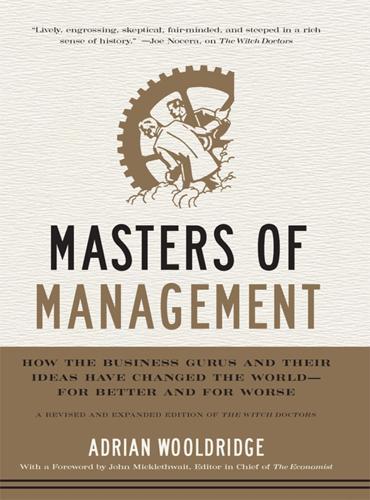
Masters of Management: How the Business Gurus and Their Ideas Have Changed the World—for Better and for Worse
by
Adrian Wooldridge
Published 29 Nov 2011
But once again he produced compelling reporting and vivid phrases (though the trope about the flattening of the world became a little tiresome). He was one of the first Western journalists to write extensively about companies such as Infosys (he came up with the book’s title during a brainstorming session with one of the company’s founders, Nandan Nilekani). He grasped the importance of global supply chains as well as global communications—and produced fascinating accounts of the internal operations of companies such as Walmart and UPS to illustrate his point. And once again Friedman acted like an enthusiastic tour guide to the future, introducing us to the companies that are inventing the future and giving us a few minutes of face time with the new masters of the universe.
…
In The Next American Frontier (1983) he blamed America’s economic woes on its “paper entrepreneurialism”—its preference for financial gamesmanship over making and improving things—and called for more protectionism. But then he produced a series of articles and books that challenged the left to rethink some of its basic assumptions. In “Who Are We?” he demolished the case for protectionism in a world of global supply chains. What does it mean to protect the “American” car industry when the components of the average car are made all around the world? In The Work of Nations (1991) he argued that a country’s competitiveness depends on its human capital—on the education and skills of its population—rather than on the profitability of the companies that happen to have their headquarters within its borders.
…
Muscular emerging-market champions such as India’s ArcelorMittal in steel and Mexico’s Bimbo in baked goods are gobbling up Western companies. Brainy ones such as Infosys and Wipro are taking over office work. And consumers in developing countries are getting richer faster than their equivalents in the West. In some cases the traditional global supply chain is being reversed: Embraer buys many of its component parts from the West and does the high-value-added work in Brazil. Old assumptions about innovation are also being challenged. People in the West like to believe that their companies cook up new ideas in their laboratories at home and then export them to the developing world, which makes it easier to accept job losses in manufacturing.
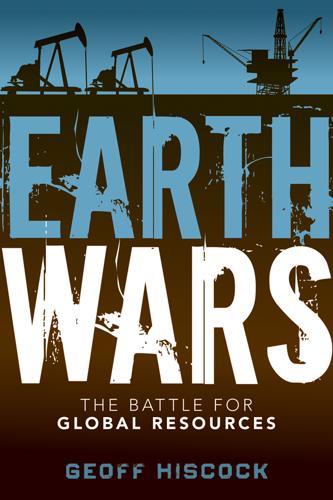
Earth Wars: The Battle for Global Resources
by
Geoff Hiscock
Published 23 Apr 2012
When Molycorp hits its stride at the end of 2012, it expects to be processing 20,000 tonnes a year of oxide, in what it calls its “mines to magnets” strategy. Molycorp also owns a rare-earth processing facility in Estonia, one of only two such plants in Europe. The United States is keen to see a steady supply of strategically critical materials coming from its own mines or from friendly nations. “Diversified global supply chains and multiple sources of materials are required to manage supply risk,” the Department of Energy noted in its December 2010 report. “This means taking steps to facilitate extraction, refining and manufacturing here in the United States, as well as encouraging additional supplies around the world.”2 Industry expert Jack Lifton of Technology Metals Research says that whatever actions the United States takes, the focus must be on the security of the U.S. supply chain for rare earths, and their availability.
…
It is the main supplier for a variety of rare-earth elements and other scarce metals such as antimony, tungsten, mercury, carbon (graphite), and bismuth.1 That gives it enormous weight in any discussion of what happens next. The United States, Europe, Japan, and India are all big consumers of various commodities and in some cases—such as coal, conventional oil and shale oil/gas in the United States, and coal in India—have substantial supply capacity. But none will dominate global supply chains in the way that China seems likely to do, over the next 20 years. This presupposes, of course, that there is no social implosion in China that leads to a splintering of the country into coastal, hinterland, northern or southern empires. The major long-term task of the expected new team of Xi Jinping and Li Keqiang when they take over as president and premier in 2012–2013 will be to manage continued high economic growth without any further breakdown in social harmony.
…
Expansion of the Pilbara iron ore region in Western Australia, where BHP Billiton, Rio Tinto, Fortescue Metals Group, and Hancock Prospecting could lift combined output to almost 1 billion tonnes a year by 2020. Chinese and Japanese groups are major investors. 17. The Mount Weld rare earths mine, Western Australia. Along with Molycorp of the United States, Lynas Corp. is considered the most likely of the many rare earth miners outside China to get finished product into the global supply chain. 18. The brine-based lithium deposits of the “Lithium Triangle,” where Bolivia, Chile, and Argentina meet. Salar de Atacama in Chile is the most productive salt pan, but Bolivia has high hopes for its Salar de Uyuni. 19. The Belo Monte dam in Brazil, due for completion after 2015. Hydropower is a big contributor to Brazil’s energy mix, but Belo Monte raises environmental hackles in the same way as China’s Three Gorges Dam and the various Upper Mekong dam projects. 20.

The Truth Machine: The Blockchain and the Future of Everything
by
Paul Vigna
and
Michael J. Casey
Published 27 Feb 2018
the company said that the prototype’s use had generated $6.5 million: Andrew Sawers, “Foxconn Uses Blockchain for New SCF Platform after $6.5m Pilot,” SCF Briefing, March 17, 2017, http://www.scfbriefing.com/foxconn-launches-scf-blockchain-platform/. Blockchain-proven digital tokens point to what blockchain: Michael J. Casey and Pindar Wong, “Global Supply Chains Are About to Get Better, Thanks to Blockchain,” Harvard Business Review, March 13, 2017, https://hbr.org/2017/03/global-supply-chains-are-about-to-get-better-thanks-to-blockchain. Belt and Road Blockchain Consortium: https://www.beltandroadblockchain.org/. Some have described it as a Beijing-led Marshall Plan: “China’s One Belt, One Road: Will It Reshape Global Trade?”
…
But, as painful as that would be for the company’s reputation, the reality was actually worse: Chipotle had no way to pinpoint where the dangerous virus got into its food offerings; it only knew that it came from one of its many third-party beef suppliers. Five months later, the best management could come up with was that it “most likely” came from contaminated Australian beef. At the heart of the problem was the lack of visibility that Chipotle—like any food provider—has over the global supply chain of ingredients that flow into its operations. That lack of knowledge meant that Chipotle could neither prevent the contamination before it happened, nor contain it in a targeted way after it was discovered. Supply chains are composed of distinct, inherently independent businesses. Their interests align around the goal of maximizing the sale of an end product—the makers of transistors, chips, capacitors, screens, and other components of a Samsung smartphone will, for example, gain if Samsung experiences rising demand.
…
To tackle this problem, Regenor’s team at Moog has launched a service it calls Veripart, which uses blockchain technology to, among other things, verify the software design and upgrading work performed by different providers of 3D-printed products along a supply chain. It plans to incorporate a host of features that, among other things, will protect intellectual property and make it more flexible and dynamic as an asset. The team at Moog plans to invite all members of its far-flung global supply chain to participate. Meanwhile, defense contractor Lockheed Martin, one of Moog’s biggest customers, has also seen the light with regard to blockchain’s value in secure work processes within this highly sensitive industry. The company announced that it has entered into a joint venture with Virginia-based GuardTime Federal to integrate blockchain technology into its supply-chain risk management.

Digital Empires: The Global Battle to Regulate Technology
by
Anu Bradford
Published 25 Sep 2023
Post (May 31, 2018), https://www.washingtonpost.com/business/economy/trump-imposes-steel-and-aluminum-tariffs-on-the-european-union-canada-and-mexico/2018/05/31/891bb452-64d3-11e8-a69c-b944de66d9e7_story.html; Humeyra Pamuk & Andrea Shalal, Trump Administration Pushing to Rip Global Supply Chains from China: Officials, Reuters (May 4, 2020), https://www.reuters.com/article/us-health-coronavirus-usa-china/trump-administration-pushing-to-rip-global-supply-chains-from-china-officials-idUSKBN22G0BZ. 201.Remarks by President Biden on the American Jobs Plan, White House (Mar. 31, 2021), https://www.whitehouse.gov/briefing-room/speeches-remarks/2021/03/31/remarks-by-president-biden-on-the-american-jobs-plan/. 202.Kori Schake, Biden Brings More Class Warfare to Foreign Policy, Atlantic (May 27, 2021), https://www.theatlantic.com/ideas/archive/2021/05/biden-foreign-policy-america-first-middle-class/618999/. 203.Nikki Haley, Free Enterprise, Not Central Planning, Will Beat China, Wall St.
…
This ongoing rivalry has also fueled a subsidy race as the US and China both seek to shore up their capabilities in critical technologies such as semiconductors. Other countries, including those in the EU, are also turning to industrial policy in the midst of the growing US–China tensions and unraveling global supply chains. As a result, the tech war risks entrenching techno-nationalism as a global norm. This can be seen as a victory for the Chinese state-driven model as governments are abandoning the US’s vision of an open, free, and global digital economy. The chapter predicts that the US–China conflict is likely to continue, even intensify.
…
This superpower conflict, many would argue, is also the main theatre of war where the highest-stakes battles for the future of the global digital economy are being fought. The US–China tech war is casting a lengthening shadow over the global digital economy. This unfolding rivalry between the two economic and geopolitical superpowers is unraveling global supply chains, battering tech companies, frightening financial markets, and unsettling international relations far beyond the bilateral US–China relationship. This new era of a great power contest has replaced the more optimistic era of globalization where China was seen as integrating into the global economy—in particular, in the years after it joined the World Trade Organization (WTO) in 2001.

Stakeholder Capitalism: A Global Economy That Works for Progress, People and Planet
by
Klaus Schwab
Published 7 Jan 2021
. ▪▪▪ Swabia in the 21st century, is in many ways as wealthy as it has ever been, with high wages, low unemployment, and many leisurely activities. The beautiful city centers of Ravensburg and Friedrichshafen in no way resemble the sorry state they were in in 1945. Ravensburg still provides a welcome for refugees, but this time the wars are further afield. Even the city's puzzle game manufacturer has adapted to a world of global supply chains and jigsaws disrupted by digital gaming. But the puzzle the people of this region, its drivetrain and jigsaw manufacturers, and other societal stakeholders here and in other parts of the world have to solve is not an easy one. It is a global one, with many complex and interdependent pieces.
…
Despite this, economists today don't regard this era as one of true globalization. Trade had certainly started to become global, and the search for new trade horizons had even been the main reason for starting the Age of Discovery. But the resulting global economy was still very much siloed and lopsided. The European empires set up global supply chains, but most of these were limited to their own colonies and areas of control. Moreover, the colonial model was chiefly one of exploitation. Not only were local civilizations and societies subverted and dismantled, but the slave trade was integral to the new colonial economy. The empires had thus created both a mercantilist and a colonial economy but not a truly globalized one: the exchanges that happened on a global scale were not mutually beneficial or even agreed upon by all parties involved.
…
At the same time, new technologies from the Third Industrial Revolution, such as the Internet, connected people all over the world in an even more direct way. The orders Keynes could place by phone in 1914 could now be placed over the Internet and delivered through a global network of large ships, trains, and planes. Importantly, members of the middle class had access to the goods produced in the global supply chain. Global trade was no longer a luxury. Instead of having them delivered in a few weeks, they would arrive at one's doorstep in a few days. What was more, the Internet also allowed for a further global integration of value chains. You could do R&D in one country, sourcing in others, production in yet another, and distribution all over the world.
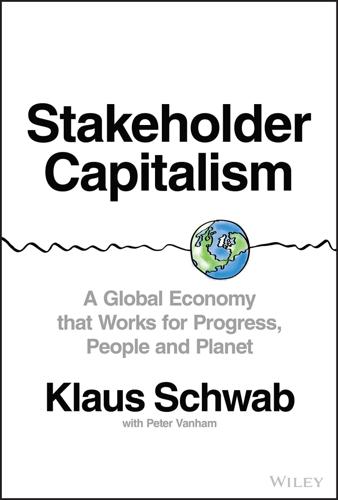
Stakeholder Capitalism: A Global Economy That Works for Progress, People and Planet
by
Klaus Schwab
and
Peter Vanham
Published 27 Jan 2021
. ▪▪▪ Swabia in the 21st century, is in many ways as wealthy as it has ever been, with high wages, low unemployment, and many leisurely activities. The beautiful city centers of Ravensburg and Friedrichshafen in no way resemble the sorry state they were in in 1945. Ravensburg still provides a welcome for refugees, but this time the wars are further afield. Even the city's puzzle game manufacturer has adapted to a world of global supply chains and jigsaws disrupted by digital gaming. But the puzzle the people of this region, its drivetrain and jigsaw manufacturers, and other societal stakeholders here and in other parts of the world have to solve is not an easy one. It is a global one, with many complex and interdependent pieces.
…
Despite this, economists today don't regard this era as one of true globalization. Trade had certainly started to become global, and the search for new trade horizons had even been the main reason for starting the Age of Discovery. But the resulting global economy was still very much siloed and lopsided. The European empires set up global supply chains, but most of these were limited to their own colonies and areas of control. Moreover, the colonial model was chiefly one of exploitation. Not only were local civilizations and societies subverted and dismantled, but the slave trade was integral to the new colonial economy. The empires had thus created both a mercantilist and a colonial economy but not a truly globalized one: the exchanges that happened on a global scale were not mutually beneficial or even agreed upon by all parties involved.
…
At the same time, new technologies from the Third Industrial Revolution, such as the Internet, connected people all over the world in an even more direct way. The orders Keynes could place by phone in 1914 could now be placed over the Internet and delivered through a global network of large ships, trains, and planes. Importantly, members of the middle class had access to the goods produced in the global supply chain. Global trade was no longer a luxury. Instead of having them delivered in a few weeks, they would arrive at one's doorstep in a few days. What was more, the Internet also allowed for a further global integration of value chains. You could do R&D in one country, sourcing in others, production in yet another, and distribution all over the world.

The Measure of Progress: Counting What Really Matters
by
Diane Coyle
Published 15 Apr 2025
The globotics upheaval: Globalization, robotics, and the f uture of work. Oxford University Press. Baldwin, R. (2022, August). Globotics and macroeconomics: Globalisation and automation of the service sector (Working Paper No. 30317). National Bureau of Economic Research. Baldwin, R., and Freeman, R. (2022). Risks and global supply chains: What we know and what we need to know. Annual Review of Economics, 14, 153–180. https://doi.org/10.1146/annurev -economics-051420-113737 Baldwin, R., and Robert-Nicoud, F. (2014). Trade-in-goods and trade-in-tasks: An integrating framework. Journal of International Economics, 92(1), 51–62.
…
American Economic Review, 57(3), 415–426. https://www.jstor.org/stable/1812111 Bayard, K., Byrne, D., and Smith, D. (2015). The scope of U.S. “factoryless manufacturing.” In S. Houseman and M. Mandel (Eds.), Measuring globalization: better trade statistics for better policy: Vol. 2. Factoryless manufacturing, global supply chains, and trade in intangibles and data (pp. 81–120). W. E. Upjohn Institute for Employment Research. Becker, G. S. (1962). Investment in human capital: A theoretical analysis. Journal of Political Economy, 70(5), 9–49. https://www.jstor.org/stable/1829103 Becker, G. S. (1965). A theory of the allocation of time.
…
Wired. https://www.wired .com/story/tiktok-platforms-cory-doctorow/ Doherty, M. (2015). Reflecting factoryless goods production in the U.S. statistical system. In S. N. Houseman and M. Mandel (Eds.), Measuring globalization: Better trade statistics for better policy: Vol. 2. Factoryless manufacturing, global supply chains, and trade in intangibles and data (pp. 13–44). W. E. Upjohn Institute for Employment Research. Dolan, P., and Metcalfe, R. (2012). Measuring subjective wellbeing: Recommendations on measures for use by national governments. Journal of Social Policy, 41(2), 409–427. Donaldson, D. (2018).

This Is How They Tell Me the World Ends: The Cyberweapons Arms Race
by
Nicole Perlroth
Published 9 Feb 2021
Or maybe the CEO himself? Or maybe that factory worker wasn’t bribed, but blackmailed? Or maybe he was a CIA line officer all along? The opportunities to sabotage the global supply chain were endless, Gosler told me. My mind also darted back to Times headquarters, to Sulzberger’s closet, to one of those two classified NSA documents Glenn Greenwald was so hesitant to give up—the one that laid out, in intelligence jargon, how the NSA was spiking the global supply chain. The document was a 2013 NSA intelligence budget request, outlining all the ways the agency was circumventing encryption on the web. The NSA called it the SIGINT Enabling Project, and the vast reach of the agency’s meddling and incursion into the world’s digital privacy was disguised in typical agency lingo: The SIGINT Enabling Project actively engages the US and foreign IT industries to covertly influence and/or overtly leverage their commercial products’ designs.
…
Right above those states in this taxonomy were the Tier III and IV adversaries, who trained their own teams of hackers but also relied on outside contractors to discover zero-day vulnerabilities, write exploits, deploy them on a target, and “make hay,” as Gosler put it. And above those states were the “big dogs,” as Gosler called them, the Tier V and VI nation-states who spent years and billions of dollars finding mission-critical zero-days, developing them into exploits, and—in a feat of glory—inserting them into the global supply chain. The only difference between Tier V states and Tier VIs, Gosler told me, was that the VIs were doing all of this on a massive, push-button scale. At that time, at least, the only countries capable of that level of sabotage were Russia, China, and—though he would never say it—the United States.
…
I asked how he’d figured out how to hack the world’s most protected networks. “It’s easy,” he told me. “They never anticipated they would be attacked.” Chip manufacturers hired the Gaucho to make sure that their chips were secure. He’d discovered all sorts of ways one could hack chips to get into the global supply chain. He showed me how to hack a chip with a “side channel attack,” sending malware via radio emissions to the copper in the chip itself. There were at least ten of these chips now in every device. “It’s hard to find one that’s been compromised,” he told me—albeit not impossible. The Gaucho had come across other hackers’ handiwork before.

Age of the City: Why Our Future Will Be Won or Lost Together
by
Ian Goldin
and
Tom Lee-Devlin
Published 21 Jun 2023
While the impact of global trade on workers has in recent decades been profoundly uneven – an issue we return to in Chapter 3 – the gains to consumers have been immense, with specialization helping to significantly lower the price of many goods. It is cities that have made this possible, and without them, the complex networks of global supply chains we so rely upon would quickly unravel. Invention While specialization allows societies to make the most of resources given the current state of technology, it is the power of invention that truly pushes the frontier. Thanks to technological progress, billions of people around the world are now able to achieve a level of material comfort that would have been unimaginable only a few centuries ago.
…
Rather than opening the economy to foreign influence all at once, the Chinese leadership established ‘Special Economic Zones’ in four coastal cities – Shenzhen, Shantou, Zhuhai and Xiamen – in which foreign multinationals were offered tax incentives and a more business-friendly operating environment in exchange for establishing export manufacturing facilities. The rapid success of these early experiments led to the designation of a raft of ‘Open Coastal Cities’ in 1984 that integrated China into global supply chains. As in Japan and Korea, China’s booming population presented a potential hurdle for its transition to a prosperous urban society. By the late 1970s fertility rates had already fallen to around three children per woman, thanks to a combination of concerted government media campaigns and the development of China’s own version of the contraceptive pill.30 However, with rapidly falling mortality rates, the population by 1980 had already hit one billion people, having nearly doubled since the Communist Party took power in 1949.
…
Bangladesh has established itself as a major manufacturer in the labour-intensive garment industry thanks to its abundant and cheap workforce.64 But robots capable of sewing could soon pull the rug out from underneath Bangladesh’s manufacturing sector.65 For poor economies that have not yet started on the journey, the prospects look even more bleak. With many rich countries actively looking to bring a greater share of manufacturing back home in a bid to keep voters happy and reduce reliance on global supply chains, the challenge is likely to grow. In the absence of the traditional path to industrialization, what other avenues for development are available? Many poor countries blessed with attractive scenery or a warm climate will continue to benefit from tourists. But the jobs this sector creates tend to be relatively low paid, and many poor countries do not have the beaches of Thailand or the wildlife of Tanzania.
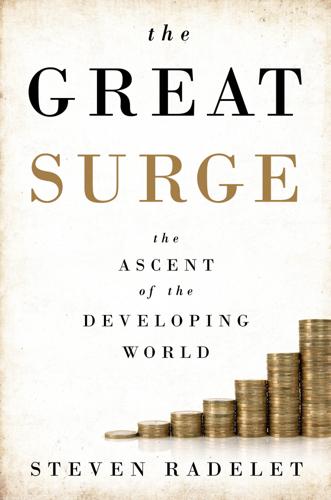
The Great Surge: The Ascent of the Developing World
by
Steven Radelet
Published 10 Nov 2015
• The fastest-growing region for mobile broadband penetration is Africa, which leapt from 2 percent penetration in 2010 to 20 percent in 2014.5 THE GLOBALIZATION OF TRADE AND FINANCE—AND VACCINES When working well, global integration provides families and businesses in developing countries with more choices, options, and opportunities for progress. For poor people living on subsistence incomes, the availability of cheaper goods boosts their effective income. Whatever income they have goes further. At the same time, integration creates new markets for exports that can accelerate growth and raise incomes. Global supply chains allow firms to specialize more narrowly, build expertise in specific areas, and sell goods and services into larger global markets, all of which helps create jobs. Telecommunications technologies allow developing countries to provide services—such as backroom accounting or call centers—that didn’t exist a few decades ago.
…
Similarly, horticulture producers in Uganda and Kenya rely on air transportation to fly fresh-cut flowers grown in greenhouses located near their airports to markets in Europe, where the flowers can be sold on the streets the next morning. FIGURE 7.3: AIR TRAVEL IS MUCH CHEAPER Real Cost per Mile in the United Sates Source: “Annual Round-Trip Fares and Fees: Domestic,” Airlines for America. More important, cheaper airfares mean that people can move much more easily, and with them ideas and knowledge. Global supply chains benefit from managers and engineers connecting on the internet and by cell phones, but also from the ease with which people can move from one city to the next for planning and problem solving. Businesses are much more connected and integrated because people can move so easily. Inexpensive airfares also have been crucial to the growth of tourism.
…
More extensive trade, and the skills and technologies that come with it, will continue to be a major driver of growth in the decades to come. In a more globalized world, businesses in developing countries will look for opportunities to specialize, find niche markets, and integrate themselves into global supply chains. Financial and insurance markets need further development, since access to finance remains a major constraint for many businesses, especially small ones. In many countries, considerable scope remains for reducing tariff and other trade restrictions. In others, limited amounts of protection may be helpful in some circumstances, especially if tariffs are time limited and applied in sectors where firms can become competitive quickly.
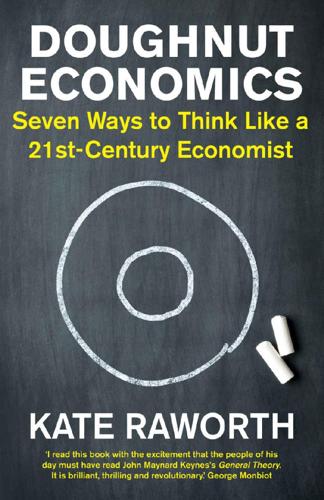
Doughnut Economics: Seven Ways to Think Like a 21st-Century Economist
by
Kate Raworth
Published 22 Mar 2017
I then hopped to the very different island of Manhattan, spending four years at the United Nations on the team writing the annual flagship Human Development Report, while witnessing barefaced power games block progress in international negotiations. I left to fulfil a long-held ambition and worked with Oxfam for over a decade. There I witnessed the precarious existences of women – from Bangladesh to Birmingham – employed at the sharp end of global supply chains. We lobbied to change the rigged rules and double standards governing international trade rules. And I explored the human-rights implications of climate change, meeting farmers from India to Zambia whose fields had been turned to bare earth because the rains had never come. Then I became a mother – of twins, to boot – and spent a year on maternity leave, immersed in the bare-bum economy of raising infants.
…
Thanks to the scale of global income inequality, responsibility for global greenhouse gas emissions is highly skewed: the top 10% of emitters – think of them as the global carbonistas living on every continent – generate around 45% of global emissions, while the bottom 50% of people contribute only 13%.43 Food consumption is deeply skewed too. Around 13% of people worldwide are malnourished. How much food would it take to meet their caloric needs? Just 3% of the global food supply. To put that in context, 30%–50% of the world’s food gets lost post-harvest, wasted in global supply chains, or scraped off dinner plates and into kitchen bins.44 Hunger could, in effect, be ended with just 10% of the food that never gets eaten. From these examples it is clear that getting into the Doughnut calls for a far more equitable distribution of humanity’s use of resources. A third factor is aspiration: whatever people consider necessary for a good life.
…
Acemoglu, D. and Robinson, J. (2013) Why Nations Fail: The Origins of Power, Prosperity and Poverty. London: Profile Books. 45. Goodman, P. (2008) ‘Taking a hard new look at Greenspan legacy’, New York Times, 8 October 2008. http://www.nytimes.com/2008/10/09/business/economy/09greenspan.html?pagewanted=all 46. Raworth, K. (2002) Trading Away Our Rights: women workers in global supply chains. Oxford: Oxfam International. 47. Chang, H-J. (2010) 23 Things They Don’t Tell You About Capitalism, London: Allen Lane. 48. Ferguson, T. (1995) Golden Rule: The Investment Theory of Party Competition and the Logic of Money-Driven Political Systems. London: University of Chicago Press, p. 8. 49.

Exponential: How Accelerating Technology Is Leaving Us Behind and What to Do About It
by
Azeem Azhar
Published 6 Sep 2021
I took the machine in with all the wonder of a seven-year-old. Until then, I had only seen computers depicted in TV shows and movies. Here was one I could touch. But it was more remarkable, I think now, that such a contraption had even got to a small suburb of Lusaka in Zambia in the 1970s. The global supply chain was primordial, and remote shopping all but non-existent – and yet the first signs of the digital revolution were already visible. The build-it-yourself kit piqued my interest. Two years later, I got my own first computer: a Sinclair ZX81, picked up in the autumn of 1981, a year after moving to a small town in the hinterlands beyond London.
…
And new technologies, and the businesses built on them, often need large numbers of people interacting with each other in close proximity – something only cities can offer. As the twenty-first century unfolds, the localising potential of technology will only become more powerful. The coronavirus pandemic which began in 2020 showed how fragile global supply chains could be. But if it was a virus in 2020, it could be war or extreme weather – exacerbated by anthropogenic climate change – in the future. The result is an era in which, once again, geography matters – with economic activity set to become increasingly local. There is an irony here. The economic paradigm that brought about the Exponential Age, globalisation, has fostered technologies that will lead to a return to the local.
…
Analysts at the Dutch bank ING reckon it might eliminate up to 40 per cent of world imports by 2040.23 This sum is colossal – an estimated $22 trillion – and will wipe out a decade’s growth in the trade of goods and services. And if such proximate, distributed manufacturing did take hold, it would transform the whole nature of the global supply chain. UPS, the preeminent global logistics company, has already started to invest in technologies that will enable it to print parts that its customers need in a trice – instead of delivering packages across the world.24 Thanks to the compounding effect of these technologies, finished products won’t need to be shipped from Mexico or Bangladesh; they can be printed in a nearby facility.
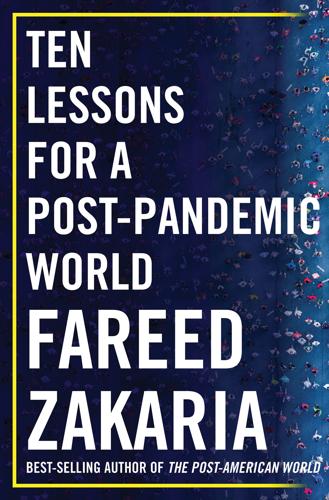
Ten Lessons for a Post-Pandemic World
by
Fareed Zakaria
Published 5 Oct 2020
Writing in the early weeks of the pandemic, the author Zachary Karabell concluded that once we examine the data more closely, “we are likely to find fresh confirmation of what we already know about globalization: that it’s easy to hate, convenient to target and impossible to stop.” The current anti-globalization argument is that we are all too intertwined, our lives and economies so entangled that we have lost control over our own destiny. One particular element of this concern is that in an emergency like Covid-19, global supply chains make us vulnerable to critical shortages in medical goods. The new conventional wisdom is that some things must be manufactured locally. It is hardly the first time we have seen renewed anxiety about the loss of control that accompanies a bewildering global economy. In the late 1960s, Harold Wilson, as prime minister of Great Britain, faced pressures from international markets and vowed to resist the “gnomes of Zurich.”
…
At the height of the pandemic in mid-March 2020, the arteries of world trade narrowed and clogged up. With far fewer flights, the per-pound cost of transporting goods across the Pacific tripled. Seeking security, many governments—from the EU to Japan to India—announced their resolve to pursue greater self-sufficiency, or at least make the system of global supply chains more resilient. Even previously committed globalists suddenly began talking about “reshoring.” In a national address, French president Emmanuel Macron lamented his country’s “dependence on other continents,” and announced his new post-pandemic goal would be to achieve the “independence of France” in technology and industry.
…
The US president largely dismissed international warnings about the disease, and when he finally acted, did so unilaterally, not even bothering to inform his closest European allies before announcing travel bans on those countries. Predictably, Brazil’s Jair Bolsonaro and India’s Narendra Modi—populist nationalists like Trump—approached the pandemic with a similar distrust of any kind of global efforts or multilateral solutions. Modi reminded Indians of the dangers of global supply chains and urged that they be “vocal for local,” buying and promoting all things Made in India. But the pandemic seems to have brought out nationalism even in places where one would least expect it, like Europe. Nationalists like to point out that multilateral cooperation didn’t stop the pandemic.
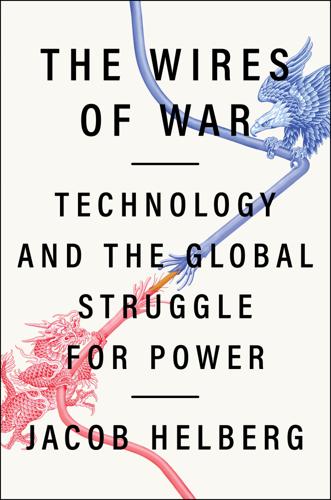
The Wires of War: Technology and the Global Struggle for Power
by
Jacob Helberg
Published 11 Oct 2021
As Priscilla Moriuchi, the director of strategic threat development at a Massachusetts cybersecurity company, has warned, “It’s the technologies of the future and technologies of future security systems that could be the biggest security threat in the Belt and Road project.”32 All of these efforts amount to a bewildering mix of corporate deal-making and state-sponsored extortion. They traverse a tangle of undersea cables, next-generation wireless networks, and global supply chains. But broadly speaking, we can break China’s back-end strategy for dominating the Internet into four main components: controlling the production, controlling the pipes, controlling the protocols, and controlling the post-4G future. To help make sense of how these four puzzle pieces fit together, consider the many steps involved in sending a simple email.
…
If you turn it over—you might have to take off that cracked iPhone cover—you’ll see the words “Designed by Apple in California. Assembled in China.” This inscription hints at the first piece of the back-end puzzle. Even as China seeks to control the world’s Internet networks, it already grasps many of the networks that build the networks—our global supply chains. As with the hardware that spirits our emails and search queries around the globe, most of us rarely spare a thought for the complex global web that produces everything from computers to cars. Still fewer likely dwell on where so many of these supply chains lead. More often than not, the answer is the warehouses and factory floors of China.
…
The application layer transforms that data into what you see on your web browser or email client. All of these layers work together to make sure that the right data gets to the right place in the right fashion.103 China’s aggressive effort to win the back-end battle is not limited to the gleaming factories that make up our global supply chains or the cables buried deep beneath the sea and the earth. Beijing’s ambitions also reach into decidedly less glamorous locations: the bureaucratic and buttoned-down multilateral bodies where technical standards are hammered out. Because in addition to controlling the production and the pipes, China is steadily gaining influence over network protocols.
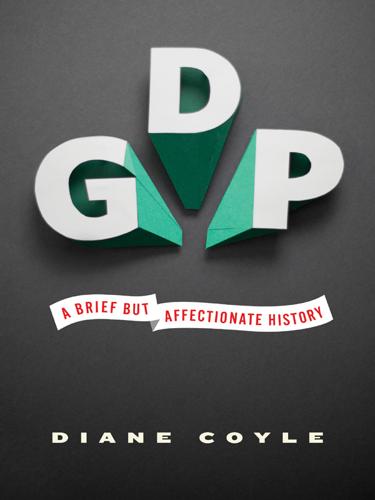
GDP: A Brief but Affectionate History
by
Diane Coyle
Published 23 Feb 2014
Achieving a higher standard of living with fewer demands on natural and labor resources will help ease price pressures and continue this decade’s good news on inflation,” wrote the Dallas Fed’s economists in 1998.4 The promises of “mass customization” they dangled before their readers’ eyes in 1998 are coming to pass, including TV shows on demand so viewers, not schedulers, determine the evening’s viewing; or clothing made-to-measure for the midmarket many, not just the wealthy few. Separate statistical headaches arise from the increasing complexity of the economy, due to the fact that most goods are now “made” in global supply chains. The components will be manufactured in a number of countries, shipped around the world to be assembled in one place, and shipped back out to their destination markets. This is true of goods as apparently simple as a shirt or as sophisticated as an iPhone.5 China, of course, has been the main country of assembly in these global chains, but other Asian countries and their Latin American competitors Brazil and Mexico have been gaining ground.
…
See financial intermediation services indirectly measured Fitoussi, Jean-Paul, 118, 139 Fleming, Alexander, 63 Ford, Henry, 45 France, 8–9, 103 Frank, Robert, 112 free market ideology, 93 Friedman, Thomas, 95–96 Gagarin, Yuri, 47 Geary-Khamis dollars, 52 Genuine Progress Indicator (GPI), 116, 137 Georgiou, Andreas, 1–2, 4 Germany, 17, 41–42, 71 Ghana, 32, 53, 94, 107 Gilbert, Milton, 15, 50 globalization, 93–94 global supply chains, 125 Golden Age, 43, 56 Gosplan, 29 government expenditures (G), 27–29 government role in economy, 14–17, 19–21, 23, 63–66, 77–78. See also fiscal policy; monetary policy; policy and politics government services, 38–39 Great Depression, 12–13, 119, 121 Greece, 1–5, 72, 73, 138 Greenspan, Alan, 83, 88, 94, 102 Gross Domestic Product (GDP): adjustments and reforms of, 92, 117, 136–38; availability of country data on, 78; calculation issues in, 2, 32–34, 52–54; circular flow model of, 26–27, 27f, 57, 63; complexity of, 24–25, 28–31; concept of, 4–5, 24–31 (see also purpose and meanings of); country comparisons of, 42; criticisms of, 5, 14, 104, 110–11; future of, 121–40; GNP vs., 25; “gross” component of, 25, 30; HDI correlated with, 73–74; importance of, 1–6, 42, 135–36; information gathering for, 33, 37, 51–53, 137–38; international comparisons of, 48–57; issues facing, 121–35; loans influenced by, 3; origins of, 7, 16–18, 119–20; postwar, 43–45, 43t, 62–63; purpose and meanings of, 5–6, 92, 121, 136, 138–40 (see also concept of); recommendations concerning, 136–40; revisions of, 36; spending-income relationship in, 30, 33–34; statistical patterns in, 3; well-being and welfare correlated with, 111, 117, 136; well-being and welfare not measured by, 5, 14, 40, 91–92, 111–14, 124–25, 136, 140 Gross National Product (GNP), 15–16, 25, 115–16 Guevara, Che, 68 Haldane, Andrew, 99, 101 happiness, 5, 6, 110–13, 136, 137.
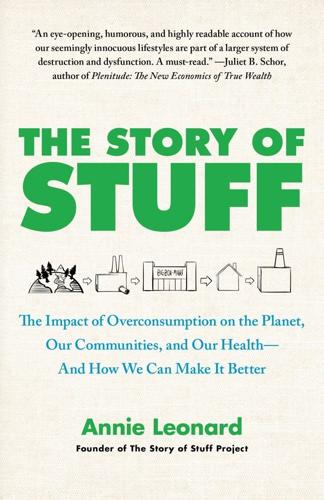
The Story of Stuff: The Impact of Overconsumption on the Planet, Our Communities, and Our Health-And How We Can Make It Better
by
Annie Leonard
Published 22 Feb 2011
That mentality is reflected in the title of a book by former Intel CEO Andy Grove: Only the Paranoid Survive.56 It is impossible to know the exact locations where all the components of a laptop were drilled for, mined, or made, because of the increasingly complex supply chain of the electronics industry, which the UN reports has the most globalized supply chain of all industries.57 But we do know that all the problematic mining practices described in the chapter on extraction—for gold and tantalum, as well as copper, aluminum, lead, zinc, nickel, tin, silver, iron, mercury, cobalt, arsenic, cadmium, and chromium—are involved. The brand name company—Dell, HP, IBM, Apple, etc.
…
But ultimately, we must remember—as Allegheny College political science professor Michael Maniates says—the choices available to us as consumers are limited and predetermined by forces outside the shopping market. Those forces can best be changed through social and political activism.20 Trucks and Container Ships and Planes, Oh My! Ships, trucks, roads, planes, and trains are needed to move Stuff along this globalized supply chain. The transportation infrastructure consumes enormous quantities of fossil fuels and spews out waste, but these are some of the most hidden of externalized costs in consumer goods, and most people are completely unaware of them. Even those shoppers who are aware of the source of the materials in products, the ones who know to ask whether diamonds fueled violence in Africa or whether the cotton fields in Turkey used pesticides, rarely know what to ask about how goods are transported.
…
United Parcel Service, or UPS, has launched trucks with hydraulic hybrid technology that are supposed to “increase fuel efficiency by 60–70% in urban use and lowers greenhouse gas emissions by 40%, compared to UPS’s conventional diesel delivery trucks.”41 Not to be outdone, FedEx has peppered its fleet with hybrid electric vehicles that decrease particulate emissions by 96 percent and go 57 percent farther on a gallon of fuel than a conventional FedEx truck, reducing fuel costs by more than one-third.42 DHL has launched its own version of carbon offsets, offering customers the ability to tack on a 3 percent extra fee that DHL promises to invest in “green projects like vehicle technology, solar panels and reforestation.”43 Nice as those efforts sound, they don’t get to the crux of the problem, which is this set of massive global supply chains (as long as ten thousand miles, according to some experts44), the consumer demand for more cheap Stuff delivered faster and faster, and the economic rules governing the whole show, which make it more profitable to make Stuff on the other side of the planet than close to home. With all of the above in mind, let’s look at the retail distribution of the same three items we zeroed in on last chapter.
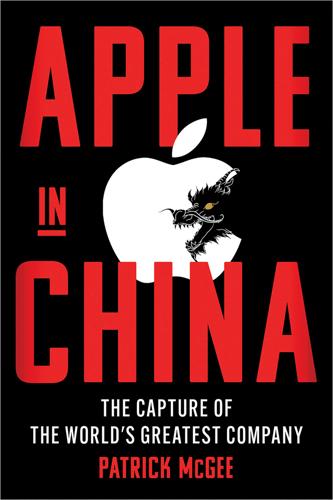
Apple in China: The Capture of the World's Greatest Company
by
Patrick McGee
Published 13 May 2025
For the chrome neck, Jon Rubinstein recalls telling procurement head Jeff Williams not to come back to California until it had been proven that the computer could be built. Williams, he says, “basically tied up almost every machine shop on the entire island.” Sabih Khan, an operations executive who joined Apple in 1995 and would later oversee the company’s entire global supply chain, basically lived at the Grand Hyatt until the iMac G4 was completed. He seemed to know everyone, greeting the hotel staff to the factory workers the way a politician might. Colleagues teased him: “Are you running for the mayor of Taipei?” Apple kept close tabs on its suppliers, moving from one facility to another to ensure they could meet the caliber and scale it needed.
…
These studies were based on opening an iPhone and breaking down where the display, chips, and other components came from. As most expensive parts were typically from Korea, Japan, and the United States, those doing the assessing would conclude that China’s contributions were de minimis. “China [just] happens to be the last stop in a given product’s long global supply chain,” wrote the president of the Export-Import Bank of the United States. “The Chinese make products like the iPhone possible without reaping much of the benefits.” Similarly, at one point, two scholars deduced that the work performed by Chinese workers contributed just 3.6 percent to the $179 wholesale cost of an iPhone.
…
The more Apple scaled, the more economic sense it made for all the components inside its products to be made within the country. Some of the key parts would still be provided by American, German, Korean, Taiwanese, and Japanese companies, but as the years passed all were incentivized to build those parts within the borders of the Middle Kingdom. As O’Marah says of Apple’s supply chain: “It’s not really a global supply chain. In principle, it is; but in practice it’s this totally engineered stack of process and product, engineering and production, and it’s all synced up in one place.” After thinking about this for another moment, he adds, “They’re going to have a helluva time getting out of there.” PART FOUR INSATIABLE DEMAND—THE iPHONE IN CHINA CHAPTER 20 THE MISSIONARY The thirteen-hour flight to Beijing was uncomfortable.

The War Below: Lithium, Copper, and the Global Battle to Power Our Lives
by
Ernest Scheyder
Published 30 Jan 2024
International Energy Agency, “Executive Summary—the Role of Critical Minerals in Clean Energy Transitions—Analysis,” official website, accessed January 7, 2023, www.iea.org/reports/the-role-of-critical-minerals-in-clean-energy-transitions/executive-summary. 9. International Energy Agency, “Global Supply Chains of EV Batteries,” official website, accessed January 7, 2023, www.iea.org/reports/global-supply-chains-of-ev-batteries. 10. Rachel Coker, “The Nobel Journey of M. Stanley Whittingham: Distinguished Professor Earns Chemistry Prize for Lithium-ion Battery Development,” BingUNews, May 6, 2020, www.binghamton.edu/news/story/2424/the-nobel-journey-of-m-stanley-whittingham; and EnergyFactor Europe by ExxonMobil, “Pioneer of Innovation: The Battery That Changed the World,” official website, November 29, 2019, energyfactor.exxonmobil.eu/news/lithium-ion-whittingham/. 11.
…
Sometimes we are chased by dogs, but mostly, we are not disturbed.”59 These miners do not use sophisticated equipment and sometimes die when the tunnels they dig to reach the cobalt deposits collapse. Companies such as China Molybdenum implicitly encourage the trade by buying the metal from these amateur miners, with some of that cobalt filtering down through global supply chains and ending up in millions of consumer goods. Cobalt can irritate skin and repeated exposure to cobalt dust can cause lung scarring. Both pose challenges for any amateur miner, especially a child. Amnesty International warned in a 2016 report that: “The children told us that they endured long hours—up to 12 hours a day—working at the mines hauling back-breaking loads of between 20 and 40 kilograms for US$1–2 per day.”
…
Geological Survey, “2009 Minerals Yearbook: California,” official publication, 2009, d9-wret.s3.us-west-2.amazonaws.com/assets/palladium/production/mineral-pubs/rare-earth/myb1-2011-raree.pdf. 59. U.S. House Committee on Science and Technology, “Hearing on Rare Earth Minerals and 21st Century Industry,” official publication, March 16, 2010, www.govinfo.gov/content/pkg/CHRG-111hhrg55844/pdf/CHRG-111hhrg55844.pdf, 70. 60. Ibid. 61. Marc Humphries, “Rare Earth Elements: The Global Supply Chain,” Congressional Research Service, September 30, 2010, www.everycrsreport.com/files/20100930_R41347_280a374dedfad91970bb123b0a05180bd8f18159.pdf, page. 62. Simony Parry and Ed Douglas, “In China, the True Cost of Britain’s Clean, Green Wind Power Experiment: Pollution on a Disastrous Scale,” DailyMail Online, January 26, 2011, www.dailymail.co.uk/home/moslive/article-1350811/In-China-true-cost-Britains-clean-green-wind-power-experiment-Pollution-disastrous-scale.html. 63.

No Ordinary Disruption: The Four Global Forces Breaking All the Trends
by
Richard Dobbs
and
James Manyika
Published 12 May 2015
The accelerations in global interconnectivity require an intuition reset on the part of companies. They must plan early to scale up globally, tailor business models to new markets, get to know new competitors, develop global talent, and prepare for shocks and volatility in an increasingly interconnected world economy. Businesses that focused mainly on cost effectiveness in global supply chains now need to consider how “value” chains may evolve—who the participants may be, which regions could play a role, and how value could shift along the value chain. Just as the introduction of electricity was an important factor in pushing the world’s industrialized economies into higher gear a century ago, the current of economic energy from global economic flows coursing through the system offers similar potential today.
…
In fast-growing developing economies, more than 143,000 Internet-related businesses launch every year.57 Jumia, a Nigerian e-commerce company that now operates in Ivory Coast, Kenya, Egypt, and Morocco, in 2013 became the first African winner of the World Retail Award for “Best Retail Launch of the Year.”58 M-pesa, a mobile-money service started in Kenya, is now disrupting traditional banking, payments, and money-transfer service providers across Africa. Build New Global—and Digital—Ecosystems Digital platforms enable companies to expand rapidly and profitably to customers further away from their home markets than was possible in the past. Building cross-border ecosystems ranging from global supply chains to innovation networks could help companies take advantage of this opportunity. Many companies are exploiting global interconnections and digital platforms to weave together networks of suppliers, distributors, and after-sales service providers—not just for procurement but also for preemptive maintenance that reduces production downtime, and for more efficient parts supply.
…
Bisson et al., “The great rebalancing.” 43. Atsmon et al., “Winning the $30 trillion decathlon.” 44. Chatterjee et al., “The decade ahead.” 45. Tom Glaser, “2013 investor day,” VF Corporation, June 11, 2013, www.vf17×17.com/pdf/2013%20VFC%20Investor%20Day-Glaser%20Transcript.pdf; Gary P. Pisano and Pamela Adams, VF Brands: Global Supply Chain Strategy, Harvard Business School case number 610–022, November 2009, www.hbs.edu/faculty/Pages/item.aspx?num=38127. 46. Atsmon et al., “Winning the $30 trillion decathlon.” 47. Alejandro Diaz, Max Magni, and Felix Poh, “From oxcart to Wal-Mart: Four keys to reaching emerging-market consumers,” McKinsey Quarterly, October 2012. 48.
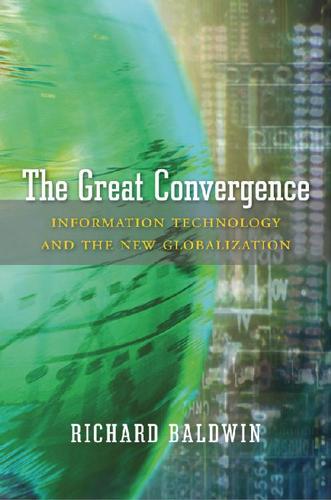
The Great Convergence: Information Technology and the New Globalization
by
Richard Baldwin
Published 14 Nov 2016
This smile curve is also consistent with the trend called “servicification” of manufacturing since the total value being added in what looks like the manufacturing sector (the fabrication stages) is falling while the value being added in what look like service sectors is rising. SOURCE: Baldwin, “Global Supply Chains: Why They Emerged, Why They Matter, and Where They Are Going,” Centre for Economic Policy Research, Discussion Paper No. 9103, August 2012. Figure 18. Today, most Apple products are designed in California and Apple handles the marketing, distribution, after-sales service, and many add-on services via its App Store, iTunes, etc.
…
Someone has to be in charge of getting each task done, so the next level is “occupations,” defined as the individual workers performing the task (often with the help of machinery). In most production processes, workers are placed close to other workers, which defines the third natural grouping: stages. In most cases, the second unbundling (which is to say offshoring) concerns stages of production, not occupations or tasks. SOURCE: Richard Baldwin, “Global Supply Chains: Why They Emerged, Why They Matter, and Where They Are Going,” in Global Value Chains in a Changing World, ed. Deborah K. Elms and Patrick Low (Geneva: World Trade Organization, 2013). Figure 11. The Specialization versus Coordination Tradeoff Deciding how to organize production is impossibly complex in the real world—that is, in the world of Mein Herr’s one-mile-to-the-mile-map world.
…
Communication Technology (CT), however, is only one half of the ICT revolution. The other half concerns Information Technology (IT). As the discussion about production unbundling in Chapter 6 makes clear, both IT and CT affect the course of offshoring, but they work in opposite directions. When thinking about the future of global supply chains, we must speculate about the possibility of truly revolutionary IT developments. One such possible development relates to computer-integrated manufacturing (CIM). This is not futurology. It has already had a big impact. It has already produced a tectonic shift in manufacturing in high-wage nations—moving manufacturing from a situation where machines helped workers make things to a situation where workers help machines make things.
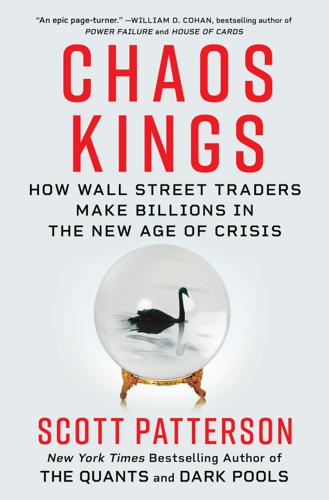
Chaos Kings: How Wall Street Traders Make Billions in the New Age of Crisis
by
Scott Patterson
Published 5 Jun 2023
It was the same phenomenon that led Sornette (who cited Tainter’s work) to forecast a looming societal collapse—and Bar-Yam wholly agreed. “Complexity leads to higher vulnerability,” he told the New Scientist. “This is not widely understood.” Breakdowns in a highly complex system can spread due to the interlocking networks, like the global supply chain, which act like a vast complex ecosystem with myriad choke points. A car dealer in Rapid City can’t sell cars because Ford can’t get the computer chips it needs because a factory in Taiwan got flooded. A single container ship foundering in the Suez Canal disrupts supply chains worldwide. “The networks that connect us can amplify any shocks.
…
An extreme geomagnetic solar storm that could shut down critical electricity, GPS, and transportation infrastructure around the world for days or months. Accelerating global warming that acts as a risk multiplier amplifying wildfires, flooding, and other natural disasters. Animal disease. Food or critical resource failures, driving a global supply-chain shock. Widespread electricity failure. Widespread telecommunication failure. Widespread cyberattack. “While these scenarios often seem extreme, in our highly interconnected society they may be much more likely than people think,” Neal warned. CHAPTER 23 THE GREAT DILEMMA OF RISK Nassim Taleb lay sprawled in his bed on the top floor of a house in Beirut breathing through an oxygen mask.
…
In Skin in the Game, he wrote somewhat approvingly of Putin, arguing that his position as an autocrat who doesn’t face elections allows him to act “as a free citizen confronting slaves who need committees, approval, and who of course feel like they have to fit their decisions to an immediate rating.” “It turns out there’s no mild version of nationalism,” Taleb told me. The war triggered economic and financial cascades that rippled worldwide. Oil prices surged, providing another kicker to inflationary pressures that had started with Covid and its stranglehold on global supply chains. Stocks nose-dived, hitting bear-market territory in weeks. “The market is in a state of shock,” Brian O’Reilly, head of market strategy at Mediolanum International Funds, told Morningstar in March. Nickel prices doubled in a day amid jitters that the war would disrupt access to the metal—Russia was one of its biggest producers.
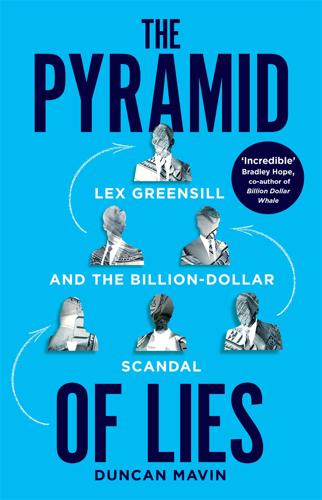
The Pyramid of Lies: Lex Greensill and the Billion-Dollar Scandal
by
Duncan Mavin
Published 20 Jul 2022
One of Gorman’s businesses was selling farming equipment and supplies. He found himself pitching agricultural equipment to Peter, who explained what his brother Lex was up to. Gorman invited Lex to Florida, where he owned an expansive waterfront property. Lex turned on the charm and explained his vision of a global supply chain finance business. By the end of their meeting, instead of Gorman selling tractors to Greensill Farming Group, Lex had persuaded the veteran businessman to invest in Greensill Capital. The company’s accounts show that Gorman, who joined the Greensill board, loaned the company about $24 million.
…
Greensill quickly dropped the client, and earned the praise of Carnell again, which was followed by the usual sort of Greensill press release, this one touting the ombudsman’s praise. The whole episode was like a naughty child scolded by their parents for misbehaving, then earning faint praise for doing the right thing. Greensill was claiming credit for no longer helping its clients bully suppliers. IN AUGUST 2020, the Global Supply Chain Finance Forum, an industry lobby group, put out its own report on the industry bullies. The decision to speak out was a sure sign that the problem was significant, although the report predictably claimed that bullying was rare. Authored by the likes of the International Chamber of Commerce and the European Banking Association, the report clearly sought to put some distance between best practices and the kind of approach taken by some of Greensill’s clients.
…
Index Aar Tee Commodities ref1 Abengoa ref1, ref2 Accenture ref1, ref2 Agritrade ref1 Ahearn, John ref1 AIG ref1, ref2, ref3, ref4, ref5 Aigis Banca ref1, ref2 Allesch-Taylor, Stefan ref1, ref2 Allin, Patrick ref1 anti-money-laundering (AML) questions ref1 ANZ ref1 Apollo Global Management ref1, ref2 Apple ref1 Aramco ref1 ArcelorMittal ref1 Archegos ref1 Arthur Andersen ref1 Asda ref1 Atlantic 57 Consultancy ref1, ref2, ref3, ref4, ref5 Auditing Association of German Banks ref1 Augustus Asset Managers ref1 Austin, Jason ref1, ref2 Australia ref1, ref2, ref3, ref4, ref5, ref6, ref7, ref8, ref9, ref10, ref11, ref12, ref13, ref14, ref15, ref16, ref17, ref18, ref19 Australian Taxation Office ref1 Aviva ref1 BAE Systems ref1 Baer, Julius ref1, ref2 BaFin ref1, ref2, ref3, ref4, ref5, ref6, ref7, ref8, ref9, ref10, ref11 Bailey, Andrew ref1 Bank of America ref1 Bank of England ref1, ref2, ref3, ref4 Barclays ref1, ref2 Barnes, Rob ref1, ref2, ref3 Barrell, Neil ref1 Barron’s ref1, ref2, ref3 Bates, Chris ref1, ref2, ref3, ref4 Battershill, William ref1, ref2 Baylis, Natalie ref1 BBB see British Business Bank BBC News ref1 BBVA ref1 BCLP see Bryan Cave Leighton Paisner BDO ref1, ref2 Becker, Arthur ref1 Berkshire Hathaway ref1 Bethell, Richard, 6th Baron Westbury ref1, ref2 Bingera ref1 Bishop, Julie ref1, ref2 BlackRock ref1, ref2, ref3 Blackstone ref1 Blair, Tony ref1, ref2, ref3, ref4 Bloomberg ref1, ref2, ref3 Bloomberg News ref1, ref2, ref3, ref4 Bluestone Resources Inc. ref1, ref2, ref3, ref4, ref5 Blunkett, David ref1, ref2 BNP Paribas ref1 Boeing ref1, ref2, ref3, ref4 737 Max 8 aircraft ref1 Bond and Credit Company, The (TBCC) ref1, ref2, ref3, ref4, ref5, ref6, ref7 Borbely, Barnabas ref1 Borneo ref1 Breedon, Tim ref1 Breedon report ref1 Brereton, Greg ref1 Brexit referendum ref1 Brierwood, David ref1, ref2, ref3, ref4, ref5, ref6, ref7, ref8 Brighthouse ref1 British Business Bank (BBB) ref1, ref2, ref3 British Gas ref1 Brown, Eliot ref1 Brown, Gordon ref1, ref2 Bryan Cave Leighton Paisner (BCLP) ref1 BSi Steel ref1, ref2, ref3, ref4 Buckingham Palace ref1, ref2, ref3, ref4 Buffett, Warren ref1 Bundaberg, Queensland, Australia ref1, ref2, ref3, ref4, ref5, ref6, ref7, ref8, ref9, ref10 Bunge ref1 Business, Energy and Industrial Strategy committee ref1 Cabinet Office ref1, ref2, ref3 Caillaux, Gabe ref1, ref2, ref3, ref4, ref5, ref6 Callahan, Mark ref1 Cameron, David ref1, ref2, ref3, ref4, ref5 ‘Big Society’ policy ref1 and Earnd ref1 Greensill remuneration ref1 and Greensill’s collapse ref1, ref2, ref3, ref4, ref5 hired as Greensill adviser ref1, ref2 lends credibility to Greensill ref1 and Lex ref1, ref2, ref3, ref4, ref5, ref6, ref7, ref8, ref9 and Mohammed Bin Salman ref1 and the pharmacy plan ref1 role at Greensill during the Covid-19 pandemic ref1 and The Bond and Credit Company ref1 Cameron, Samantha ref1 Cameron administration ref1, ref2 Cantor Fitzgerald ref1, ref2, ref3 Carillion ref1, ref2 ‘early payment facility’ ref1 Carlyle Group ref1 Carna ref1 Carnell, Kate ref1, ref2 Carney, Mark ref1 Carrington ref1 Carson Block ref1 Carusillo, Mickey ref1 Casey, Dame Louise ref1 ‘cash-less rolls’ ref1 Catfoss group ref1, ref2, ref3 central banks ref1 Chap (magazine) ref1 Charles, Prince ref1, ref2, ref3, ref4 Chase Manhattan ref1 CHBG Limited ref1 Chehaoduo ref1, ref2 Chelsea Group ref1 Chelsea Village ref1 Chicago Police Pension Fund ref1 Chilean mining ref1 Chubb ref1 Chuk ref1 CIMIC ref1, ref2 Citibank ref1 Citigroup ref1, ref2, ref3, ref4, ref5, ref6, ref7, ref8, ref9, ref10, ref11, ref12, ref13 City, the ref1 Clarke, Tracy ref1 Clearbrook Capital ref1 Cleland, Robert ref1, ref2, ref3, ref4, ref5, ref6, ref7 coal mining ref1, ref2, ref3 Coca-Cola ref1, ref2 CoFace ref1 Comerford, Robert J. ref1, ref2 Commerzbank ref1 Companies House ref1, ref2, ref3, ref4 Confederation of British Industry (CBI) ref1 Conservative government ref1, ref2 Copenhagen ref1 Coronavirus Business Interruption Loan Scheme (CBILS) ref1, ref2 Coronavirus Large Business Interruption Loan Scheme (CLBILS) ref1, ref2 corporate espionage ref1, ref2, ref3, ref4 Coupe, Mike ref1 Covid-19 Corporate Financing Facility (CCFF) ref1, ref2 Covid-19 pandemic ref1, ref2, ref3, ref4, ref5, ref6, ref7, ref8, ref9, ref10, ref11 government loan schemes ref1, ref2, ref3, ref4, ref5 restrictions ref1, ref2, ref3, ref4 Crain’s (magazine) ref1 Credit Suisse ref1, ref2, ref3, ref4, ref5, ref6, ref7, ref8 and the Covid-19 pandemic ref1 and Greensill Capital ref1, ref2, ref3, ref4, ref5, ref6, ref7, ref8, ref9, ref10, ref11, ref12, ref13, ref14, ref15, ref16, ref17, ref18, ref19, ref20, ref21, ref22, ref23, ref24, ref25, ref26, ref27, ref28, ref29, ref30, ref31, ref32, ref33 and Sanjeev Gupta ref1 Crothers, Bill ref1, ref2, ref3, ref4, ref5, ref6, ref7 Crown Representatives programme ref1 Cunliffe, Sir Jon ref1 CWB ref1 de Botton, Alain ref1 de Botton, Gilbert ref1 de la Rue, Tom ref1 Deal Partners ref1, ref2, ref3 Degen, Michel ref1, ref2, ref3 Dell ref1 Deloitte ref1, ref2, ref3, ref4, ref5 Demica ref1 Department for Business, Energy and Industrial Strategy ref1, ref2 Department of Environment, Food and Rural Affairs ref1 Department of Health ref1 Department of Health and Social Care ref1 Department of Work and Pensions ref1 Deutsche Bank ref1, ref2, ref3, ref4, ref5, ref6 Deutsche Börse ref1 Doordash ref1 Doran, James ref1, ref2, ref3, ref4, ref5, ref6, ref7, ref8, ref9, ref10, ref11, ref12 dotcom boom ref1, ref2 Dow Jones ref1, ref2, ref3, ref4, ref5, ref6, ref7, ref8, ref9, ref10, ref11 Downes, Brett ref1, ref2, ref3, ref4, ref5 Dragon Technology ref1, ref2, ref3 Eadie, Al ref1 Earnd ref1, ref2, ref3, ref4 Ecclestone, Bernie ref1 Edelman ref1 1860 Munich ref1 Ellis, Brett Easton, American Psycho ref1 Enterprise Investment Schemes (EISs) ref1 equity warrants ref1 Ernst & Young ref1 see also EY Euler Hermes ref1, ref2 European Banking Association ref1 Ewing, Fergus ref1 EY ref1, ref2 see also Ernst & Young Eyjafjallajökull ref1 factoring ref1, ref2, ref3 see also supply chain finance Fair Financial ref1, ref2, ref3 Fairmac Reality ref1 Fairymead ref1 Fan, Colin ref1, ref2, ref3, ref4 Farrell, Maureen ref1 FCA see Financial Conduct Authority ‘fee ramp agreements’ ref1 Feeney, Chuck ref1 Ferrin, Ronald ref1 Fidelity ref1 5th Finger ref1 Finacity ref1 Financial Accounting Standards Board ref1 Financial Conduct Authority (FCA) ref1, ref2, ref3, ref4, ref5, ref6, ref7, ref8, ref9, ref10 Skilled Persons Reviews ref1, ref2 financial crisis 2008 ref1, ref2, ref3, ref4 aftermath ref1, ref2, ref3 and central banks ref1 and fintechs ref1 tougher regulations following ref1, ref2 Financial News (banking publication) ref1, ref2, ref3, ref4, ref5, ref6 Financial Reporting Council ref1 Financial Times (newspaper) ref1, ref2, ref3, ref4, ref5, ref6, ref7 Finews (Swiss news site) ref1 ‘fintechs’ ref1, ref2, ref3, ref4, ref5, ref6 Fitch ref1 ‘flash title’ ref1 Fleetsolve ref1 Food Revolution Group ref1 Forbes (magazine) ref1 Ford ref1 Ford, Bill ref1 Formula One ref1 ‘Four Eyes Principle’ ref1 FreeUp ref1, ref2 Friedman, Alex ref1, ref2, ref3, ref4, ref5, ref6, ref7 Galligan, Shane ref1, ref2 GAM Greensill Supply Chain Finance fund (GGSCF) ref1, ref2 Gapper, John ref1 Garrod, Neil ref1, ref2, ref3, ref4, ref5 GBM Banca ref1 General Atlantic (GA) ref1, ref2, ref3, ref4, ref5, ref6, ref7, ref8, ref9, ref10, ref11, ref12, ref13, ref14, ref15, ref16, ref17, ref18, ref19, ref20 General Mills ref1, ref2, ref3 Gentleman’s Journal (magazine) ref1 German Deposit Protection Authority ref1 Global Asset Management (GAM) ref1, ref2, ref3, ref4, ref5, ref6, ref7, ref8, ref9, ref10, ref11, ref12, ref13, ref14, ref15, ref16, ref17, ref18, ref19, ref20, ref21, ref22, ref23, ref24, ref25, ref26 Absolute Return Bond Fund (ARBF) ref1, ref2, ref3, ref4, ref5, ref6, ref7, ref8, ref9 regulators ref1 Global Supply Chain Finance Forum ref1 Global Trade Review (trade finance publication) ref1 Goldman Sachs ref1, ref2 Gorman, John ref1, ref2, ref3, ref4, ref5 Gottstein, Thomas ref1, ref2 government loans ref1, ref2, ref3, ref4, ref5 ‘GovTech’ firms ref1 Grant Thornton ref1, ref2, ref3, ref4, ref5 Gray, Sue ref1 Green, Philip ref1, ref2 Greenbrier hotel ref1 Greene, Stephen ref1 Greensill, Alexander ‘Lex’ David ref1, ref2, ref3, ref4 ambition ref1, ref2, ref3, ref4, ref5 ascent ref1 Australian property investments ref1, ref2 Australian tax obligations ref1 awards ref1, ref2, ref3 CBE ref1, ref2, ref3 birth ref1 and Carillion ref1 celebrity status ref1 childhood ref1, ref2 at Citigroup ref1, ref2, ref3, ref4, ref5, ref6, ref7, ref8, ref9 on the Crown Representatives programme ref1 CV ref1 and Daniel Sheard ref1 and David Cameron ref1, ref2, ref3, ref4, ref5, ref6, ref7, ref8, ref9 directorships ref1 double down strategy ref1, ref2 and Downes ref1 dresses the part ref1, ref2, ref3, ref4 and Duncan Mavin ref1, ref2, ref3, ref4, ref5, ref6 eager to own bank ref1, ref2 education ref1 legal studies ref1 MBA at the Alliance Manchester Business School ref1, ref2, ref3, ref4, ref5, ref6 and 5th Finger ref1 and Greensill Bank AG (formerly NoFi) ref1 and Greensill Capital ref1, ref2, ref3, ref4 acquisitions ref1, ref2 aircraft leasing deals ref1 attempts to raise emergency finance ref1, ref2, ref3 avoids toughest regulators ref1 BaFin probe ref1 Bluestone ref1, ref2 BSi ref1 Covid-19 pandemic ref1, ref2, ref3 Credit Suisse involvements ref1, ref2, ref3, ref4 demise ref1, ref2, ref3, ref4, ref5, ref6, ref7, ref8 Dragon Technology ref1 expansion ref1, ref2, ref3 ‘flak’ (PR advisers) ref1 General Atlantic ref1, ref2, ref3, ref4, ref5, ref6 Global Asset Management ref1, ref2, ref3, ref4, ref5 harmful effect of SCF on small businesses ref1 insurance ref1, ref2, ref3 malpractice ref1 multi-obligor programmes ref1 National Health Service venture ref1, ref2 new category of loans ref1 payroll finance ref1 perilous state ref1 premier ref1, ref2, ref3, ref4, ref5 sells company private jets ref1 Softbank dealings ref1, ref2, ref3, ref4, ref5, ref6, ref7, ref8, ref9 start-up ref1, ref2, ref3, ref4, ref5 Tower Trade ref1 Tradeshift Networks ref1, ref2 and Jeremy Heywood ref1 and John Gorman ref1 legal work ref1 marriage ref1 and Masayoshi Son ref1, ref2, ref3, ref4, ref5 mentors ref1 mission statement, ‘helping out the little guy’ ref1 and Mohammed Bin Salman ref1 at Morgan Stanley ref1, ref2, ref3, ref4, ref5, ref6, ref7, ref8, ref9, ref10, ref11, ref12 remuneration ref1 moves to the UK ref1, ref2 at OzEcom ref1 and politics ref1, ref2, ref3, ref4, ref5 ‘rewilding’ project ref1 risk-taking ref1, ref2, ref3, ref4, ref5, ref6, ref7, ref8, ref9, ref10, ref11, ref12 and Sanjeev Gupta ref1, ref2, ref3, ref4, ref5, ref6, ref7, ref8, ref9, ref10 and Saudi Arabia ref1 sits on Bank of England committee on SCF ref1 skiing ref1 spending ref1, ref2, ref3, ref4, ref5, ref6 takes loan from the Greensill family ref1 and Tim Haywood ref1, ref2, ref3, ref4, ref5, ref6, ref7, ref8, ref9, ref10 at TRM ref1, ref2 wealth ref1 billionaire status ref1, ref2 hits the big time ref1, ref2 Greensill, Andrew (Lex’s brother) ref1 Greensill, Judy (Lex’s mother) ref1, ref2, ref3, ref4, ref5 Greensill, Lloyd (Lex’s father) ref1, ref2, ref3 Greensill, Peter (Lex’s youngest brother) ref1, ref2, ref3, ref4, ref5, ref6, ref7, ref8, ref9, ref10 Greensill, Roy (Lex’s grandfather) ref1, ref2 Greensill, Victoria (Lex’s wife) ref1, ref2 Greensill Bank AG (formerly NoFi) ref1, ref2, ref3, ref4, ref5, ref6, ref7 and the Atlantic 57 loan ref1, ref2 and the BaFin probe ref1, ref2, ref3, ref4 and the end ref1, ref2 and General Atlantic ref1 and government loans ref1 and Gupta ref1, ref2, ref3, ref4, ref5, ref6, ref7 private aircraft ref1 regulation ref1 and Softbank ref1, ref2 technology ref1 and trade credit insurance ref1, ref2 whistle-blower at ref1 Greensill Capital ref1, ref2 aircraft leasing deals ref1 allegations of corruption at ref1 and the Atlantic 57 loan ref1, ref2, ref3, ref4, ref5 avoids toughest regulators ref1 and the BaFin probe ref1, ref2, ref3, ref4, ref5, ref6, ref7, ref8, ref9 and Bill Crothers ref1 billion dollar plus valuation ref1 and Bluestone ref1, ref2, ref3, ref4, ref5 and BSi ref1 business cards ref1, ref2 cash burner ref1 client list ref1 collapse ref1, ref2, ref3, ref4, ref5, ref6, ref7, ref8, ref9, ref10 corporate events ref1 corporate governance ref1, ref2, ref3, ref4, ref5, ref6, ref7 and the Covid-19 pandemic ref1, ref2, ref3, ref4, ref5, ref6 and Credit Suisse ref1, ref2, ref3, ref4, ref5, ref6, ref7, ref8, ref9, ref10, ref11, ref12, ref13, ref14, ref15, ref16, ref17, ref18, ref19, ref20, ref21, ref22, ref23, ref24, ref25, ref26, ref27, ref28, ref29, ref30, ref31, ref32, ref33 Credit Suisse’s investigation into ref1, ref2, ref3 crisis mounts ref1, ref2, ref3 and David Cameron ref1, ref2, ref3, ref4, ref5, ref6, ref7 and David Solo ref1, ref2, ref3 defaults ref1, ref2 and Dragon Technology ref1 early backers ref1 early struggles ref1, ref2 evergreen loans ref1 ‘everyone wins’ pitches ref1 expansion ref1, ref2, ref3, ref4, ref5, ref6, ref7, ref8, ref9 external public relations ref1, ref2 EY investigation into ref1 fault lines ref1 as ‘fintech’ company ref1, ref2 fraud and misconduct allegations ref1 and General Atlantic ref1, ref2, ref3, ref4, ref5, ref6, ref7, ref8, ref9, ref10, ref11, ref12, ref13, ref14, ref15 and Global Asset Management ref1, ref2, ref3, ref4, ref5, ref6, ref7, ref8, ref9, ref10, ref11, ref12, ref13, ref14, ref15, ref16, ref17, ref18, ref19, ref20, ref21, ref22 gossipy culture ref1 and Greensill Bank ref1 and Griffin Coal ref1 and Gupta/Gupta Family Group ref1, ref2, ref3, ref4, ref5, ref6, ref1, ref2, ref3, ref4, ref5, ref6, ref7, ref8, ref9, ref10, ref11, ref12, ref13, ref14 harmful impact on small businesses ref1 headquarters on the Strand ref1 ‘High Risk Franchise Names’ document ref1 hits the big time ref1, ref2 illiquid investments ref1 insolvency ref1, ref2 investment protection ref1 investors abandon ref1, ref2 IPO ref1, ref2, ref3, ref4, ref5, ref6, ref7, ref8 and John Gorman ref1 and Katerra ref1 and the Lagoon Park SPV ref1 launch ref1, ref2 lavish spending at ref1, ref2, ref3, ref4 Lex’s claims about ref1 liquidity ref1, ref2 and Lloyds ref1 loan book ref1 losses ref1 and Maurice Thompson ref1 Morgan Stanley employees ref1 and the NHS ref1, ref2, ref3 obligors ref1, ref2, ref3, ref4, ref5, ref6, ref7, ref8 offices ref1, ref2, ref3 and payroll finance ref1 and Pemex ref1 perilous state ref1 and the pharmacy plan ref1 pre-IPO funding (‘Project Olive’) ref1, ref2, ref3, ref4, ref5 profitability issues ref1, ref2, ref3, ref4, ref5, ref6 ‘reasonably permanent’ funding ref1 reducing the early risks of using ref1 remuneration ref1, ref2, ref3 retrenchment ref1, ref2 risk team ref1, ref2 risky ventures ref1, ref2, ref3, ref4, ref5, ref6, ref7, ref8 and Roland Hartley-Urquhart ref1 and Saudi Arabia ref1 as ‘shadow bank’ ref1 and SoftBank ref1, ref2, ref3, ref4, ref5, ref6, ref7, ref8, ref9, ref10, ref11, ref12, ref13, ref14, ref15, ref16, ref17, ref18, ref19, ref20, ref21, ref22, ref23, ref24 SPAC talks ref1 start-up style management ref1, ref2 takes loan from the Greensill Capital family ref1 technology ref1, ref2, ref3, ref4 and Tim Haywood ref1, ref2, ref3, ref4, ref5, ref6, ref7, ref8, ref9, ref10 and Tower Trade ref1, ref2, ref3 and trade credit insurance ref1, ref2, ref3, ref4, ref5, ref6, ref7, ref8, ref9, ref10, ref11, ref12 ‘Unicorn’ status ref1 and the US capital markets ref1 whistle-blower allegations emerge ref1 and the Wickham SPV ref1 Greensill Corporation Pty ref1 Greensill Farming Group ref1, ref2, ref3, ref4, ref5 Greensill Trust ref1 Grenda Investments ref1 Griffin Coal ref1, ref2 Gross, Bill ref1 Guazi ref1 Gulf Petrochem (GP Global) ref1 Gupta, Nicola ref1 Gupta, Sanjeev ref1, ref2, ref3, ref4, ref5, ref6, ref7, ref8, ref9, ref10, ref11, ref12, ref13, ref14, ref15, ref16, ref17 Australian property ref1 and Bluestone ref1 and the demise of Greensill ref1, ref2, ref3, ref4 and German steel ref1 and Grant Thornton ref1 and Greensill Bank ref1 Gupta Family Group (GFG) ref1, ref2, ref3, ref4, ref5, ref6, ref7, ref8, ref9, ref10, ref11 and Bluestone ref1 and government loans ref1 and Greensill ref1, ref2, ref3, ref4, ref5, ref6, ref7, ref8, ref9, ref10, ref1, ref2, ref3, ref4, ref5, ref6, ref7, ref8, ref9, ref10, ref11 and Greensill Bank ref1 Guttridge, Jane ref1, ref2 Guy, Toby ref1 Gymshark ref1 Haas, Lukas ref1, ref2, ref3, ref4, ref5 Hambro, Jay ref1 Hanafin, Dermot ref1 Hanafin, Sean ref1, ref2, ref3, ref4, ref5 Harris, Piers ref1 Harry, Prince ref1 Hart ref1 Hartley-Urquhart, Roland ref1, ref2, ref3, ref4, ref5, ref6, ref7, ref8, ref9, ref10 Havens, John ref1, ref2 Haywood, Tim ref1, ref2, ref3, ref4, ref5, ref6, ref7, ref8, ref9, ref10, ref11, ref12, ref13, ref14, ref15, ref16, ref17, ref18 Henkel ref1 Hewlett Packard ref1 Heywood, Jeremy ref1, ref2, ref3 Highways Agency ref1 HM Revenue & Customs ref1 HM Treasury ref1, ref2, ref3, ref4 Hobday, Neil ref1, ref2, ref3, ref4 Holmes, Elizabeth ref1 House of Lords ref1 HSBC ref1, ref2, ref3, ref4, ref5 Huawei ref1, ref2, ref3 Hutton Inquiry ref1 IAG see Insurance Australia Group ICBC Standard Bank ref1 Indonesia ref1 Industrial Cadets ref1 Inflexionpoint ref1 ING ref1 Insurance Australia Group (IAG) ref1, ref2, ref3 International Chamber of Commerce ref1 Intrepid Aviation ref1 ‘Iran Notices’ ref1 Iraq, UN weapons inspectors ref1 Isle of Dogs ref1 Jacob, David ref1, ref2, ref3 Jahama Highland Estates ref1 Jain, Anshu ref1 Jakarta ref1 Jardine Matheson ref1 Johnson, Boris ref1 Jones, Karen ref1 J.P.
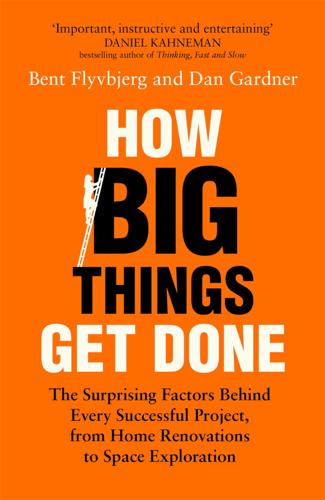
How Big Things Get Done: The Surprising Factors Behind Every Successful Project, From Home Renovations to Space Exploration
by
Bent Flyvbjerg
and
Dan Gardner
Published 16 Feb 2023
Yet on March 23, 2021, it was just such gusts, at just the wrong moment, that pushed the bow of Ever Given, a giant container ship, into a bank of the Suez Canal. The ship got stuck and couldn’t be budged for six days, blocking the canal, halting hundreds of ships, freezing an estimated $10 billion in trade each day, and sending shocks rippling through global supply chains.22 The people and projects who suffered as a result of those supply-chain troubles may never have realized it, but the cause of their trouble was ultimately strong winds in a faraway desert.23 A complex systems theorist might describe what happened by saying that the dynamic interdependencies among the parts of the system—the wind, the canal, the ship, and supply chains—created strong nonlinear responses and amplification.
…
“Former SCANA CEO Sentenced to Two Years for Defrauding Rate-payers in Connection with Failed Nuclear Construction Program,” US Department of Justice, October 7, 2021, https://www.justice.gov/usao-sc/pr/former-scana-ceo-sentenced-two-years-defrauding-ratepayers-connection-failed-nuclear. 21. Restoration Home, season 3, episode 8, BBC, https://www.bbc.co.uk/programmes/b039glq7. 22. Alex Christian, “The Untold Story of the Big Boat That Broke the World,” Wired, June 22, 2021, https://www.wired.co.uk/article/ever-given-global-supply-chain. 23. Motoko Rich, Stanley Reed, and Jack Ewing, “Clearing the Suez Canal Took Days. Figuring Out the Costs May Take Years,” The New York Times, March 31, 2021. 24. Charles Perrow, Normal Accidents: Living with High-Risk Technologies, updated edition (Princeton, NJ: Princeton University Press, 1999). 25.
…
Organizational Behavior and Human Decision Processes 79 (2): 115–53. Charest, Paul. 1995. “Aboriginal Alternatives to Megaprojects and Their Environmental and Social Impacts.” Impact Assessment 13 (4): 371–86. Christian, Alex. 2021. “The Untold Story of the Big Boat That Broke the World.” Wired, June 22. https://www.wired.co.uk/article/ever-given-global-supply-chain. Christoffersen, Mads, Bent Flyvbjerg, and Jørgen Lindgaard Pedersen. 1992. “The Lack of Technology Assessment in Relation to Big Infrastructural Decisions.” In Technology and Democracy: The Use and Impact of Technology Assessment in Europe. Proceedings from the 3rd European Congress on Technology Assessment.

The New Class War: Saving Democracy From the Metropolitan Elite
by
Michael Lind
Published 20 Feb 2020
By this offshoring-friendly definition, if a firm shuts down a factory in the US (GDP per capita in 2017: $59,500 in purchasing power parity) and opens a factory with much cheaper workers in China ($16,700) or Indonesia ($12,400) or Venezuela ($12,100), the resulting exports to the US market are “not from a low-wage country to a high-wage country.”12 In contrast with MGI, the Nobel laureate economist Michael Spence claims that “labor arbitrage has been the core driver of global supply chains for at least three decades—with significant distributional and employment effects.”13 According to the Commerce Department, between 1999 and 2009 US multinational corporations cut 864,600 workers in the US while adding 2.9 million workers abroad. Fifty-seven percent of the foreign hiring by nonfinancial companies was in Asia, with multinationals adding 683,000 workers in China and 392,000 workers in India.
…
Compared to more direct prolabor measures like minimum wages, collective bargaining and limits on global labor arbitrage, pulverizing the most productive firms in the economy is a very roundabout and inefficient way to try to raise wages, like burning down a barn to roast a pig in the famous fable by Charles Lamb.12 Like redistributionism, antimonopolism cannot work at the national level in today’s system of liberalized trade and globalized production. If the Justice Department used antitrust to break up large suppliers in the US, firms that coordinate global supply chains could simply shift those links in production to foreign countries with more lenient competition policies. The result could be accelerated by American deindustrialization, with further massive shifts in employment from the traded sector to the low-wage, low-productivity domestic service sector.

The Passenger
by
AA.VV.
Published 23 May 2022
Its trees had been cut down to the roots—the trunks neatly dominoed, flat and brittle against the earth. That night, I asked a farmer friend, also in walnuts, what had happened at the orchard. A confluence of things, he explained. Walnuts are a billion-dollar industry, but during the pandemic things got complicated. In California, there was an ongoing labor crisis; also, owing to global supply-chain upsets, the costs of machinery and mechanical parts had gone up. My friend guessed that the orchard I had seen would still have been productive for another decade, but it no longer made financial sense to farm and harvest it. Across the state, he said, many produce farmers were weighing the market prices of their crops against the rising cost of water.
…
Farmers were throttling production, razing fields, and disposing of surplus. If these adjustments seemed crude, even unfathomable, they were in response to complex, intertwined issues: immigration policies, trade wars, a housing shortage, agribusiness monopolies, resource mismanagement, climate change, globalization, supply-chain disruption, accelerating financialization. “It’s like something out of a Jonathan Franzen novel,” I said. My friend misheard. “Really?” he replied. “I’d love to read that.” * California went through an extreme drought in 2021, after a decade marked by record-breaking dry spells. Rivers and reservoirs were low and strained.

The Startup Way: Making Entrepreneurship a Fundamental Discipline of Every Enterprise
by
Eric Ries
Published 15 Mar 2017
Today, global communications means that new products can be conceived and built anywhere, and customers can discover them at an unprecedented pace. What’s more, individuals and small companies have unprecedented access to these new global systems, compared to a small number of owners of capital in the past. This setup flips Karl Marx’s old dictum on its head. What he called the means of production can now be rented. Entire global supply chains can be borrowed at little more than the marginal cost of the underlying products they produce. This dramatically lowers the initial capital costs required to try something new. In addition, the basis of competition is shifting. Today’s consumers have more choices and are more demanding. Technology trends reward businesses that have the broadest reach with near-monopoly-type power.
…
Once put into place, the system worked to prevent the kind of miscalculation and waste of resources that had previously occurred in the company. The structure that Alfred Sloan pioneered became the basis for all of twentieth-century general management. You can’t run a multiproduct, multidivision, multinational company and its attendant global supply chains without it. It is one of the true revolutionary ideas of the past one hundred years and is still widely in use today. Everyone knows the drill: beat your forecast, your stock goes up, you get promoted. Miss it and watch out. But when I first read this story, what went through my head was: You’re telling me that… once upon a time… people made forecasts… and they came true?
…
Why does it take so long to build this engine? I don’t want to undersell the technical challenges that led to the original five-year plan. The specifications required an audacious engineering effort that combined a difficult set of design parameters with the need for a new mass-production facility and global supply chain. A lot of brilliant people had done real, hard work to ensure that the plan was feasible and technically viable. But a large part of the technical difficulty of this project was driven by the specifications themselves. Remember that this product had to support five distinct uses in very different physical terrains (visualize how different the circumstances are at sea, in stationary drilling, on a train, for power generation, and in mobile fracking).

We Are All Fast-Food Workers Now: The Global Uprising Against Poverty Wages
by
Annelise Orleck
Published 27 Feb 2018
“The answer is to keep on fighting,” Kalpona Akter insists. “If you are always worrying about dying, you can’t live.” Activists know that their struggles have also brought change: wage increases, hours reductions, enhanced maternity leave, and investigations of labor conditions in complicated global supply chains. The geographic scope and scale of the protests, the vast numbers of people involved, the militancy and the courage of the protesters have been stunning. Many of those rising are the poorest of the poor, willing to risk what little they have for the next generation. We are witnessing the first truly global uprisings since the 1980s “People Power” movements that toppled Duvalier in Haiti, Marcos in the Philippines, Ershad in Bangladesh, and Communist dictatorships across Central and Eastern Europe.
…
The women “cook and eat together; they drink and have music—mini concerts or dances.” They are lonely and isolated, far from family and friends in their villages, Sok says. Workers need community before they can stand up for themselves. Finally, drop-in centers teach workers to understand global supply chains, says Sok. “We show them, this is the profit of Puma, Adidas, Walmart. This is what CEOs earn in a year. We take workers to other countries when we can, to meet people who make clothes there for the same companies. We take them window shopping to see the clothes and shoes they make. They learn what those cost in stores overseas compared to how much they make for sewing each item.
…
See also living wage movement Food Justice certification, 246 Food Policy Councils, 248 food-service workers, 79 Foxx, Anthony, 243 Frattini, Massimo, 21, 24, 27–28, 35, 56 freedom fighters, 75 freedom schools, 59 Free Trade Union of Workers of the Kingdom of Cambodia (FTU), 149, 153–54 Friedman, Thomas, 71 Gallin, Dan, 97 Gandhi, Mahatma, 89–91 Gap (clothing manufacturer), 152, 253 Garcia, Vicky Carlos, 13, 227–28, 230, 232–35, 237 garment industry: environmental costs, 127; ethical apparel manufacturing, 249–50; globalization of, 123–27, 139; profits and earnings, 164–65; “run-away shops,” 129; response to worker demands, 37, 145, 153–56, 171–73, 175; use of migrant workers, 161. See also export-processing zones (EPZs); specific garment factories garment workers: achievements, 172–73, 251–52; bravery in face of state violence, 154–56, 171–73; as contract workers, 177; costs of living, 132–33, 150; educating about global supply chains, 164; exposure to toxic chemicals, 2, 146, 160, 165, 251 factory fires, 136–39; and fast-fashion production techniques, 128; forced labor, 128; Girl Effect campaign/foundation, 130–31; global vision, 174; hunger and mental illness among, 146; identifying manufacturers, challenges of, 149–50; labor laws and protections, 169–70; living wage rallies, 173; minimum wage increases, 172; New York strike, 1909, 38; organizing strategies and actions, 39–41, 53–54, 121–22, 139–40, 148, 154; production quotas, 131; protests organized against the Tuba Group, 142–45; risks faced by, 37; and union tradition, 169; working conditions, 39–40, 119, 126–28, 132, 134, 149, 166–68, 170.
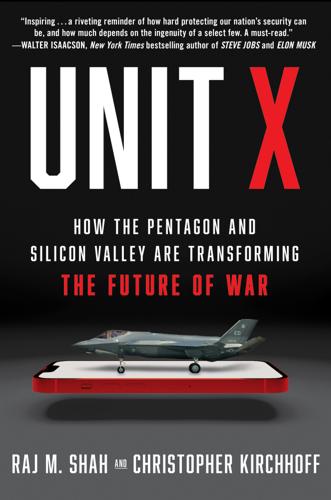
Unit X: How the Pentagon and Silicon Valley Are Transforming the Future of War
by
Raj M. Shah
and
Christopher Kirchhoff
Published 8 Jul 2024
Stephens has no patience for people in Silicon Valley who insist commercial tech companies like Google and Microsoft shouldn’t work for the DoD. “There’s a vocal minority, like the people who pushed Google out of Project Maven, who don’t see why this matters,” Stephens says. “But do you think global supply chains matter? Do you realize that rests on the power of the U.S. Navy? If you care about global supply chains, you should care about national security. If you care about cellular technology, you should care about national security. If you care about freedom of speech, you should care about national security. One thing DIU has accomplished,” he adds, “is that it has created a forum for conversation, a ‘convening power’ for those ideas.”
…
Department of Defense (DoD, the Pentagon), 102, 131 acquisitions, processes, and contracting practices of, x, 37, 38, 39–40, 87, 123–244, 196, 204–5, 214, 215, 239, 246 Advanced Capabilities and Deterrence Panel, 11 AI and, 5, 100, 116–22, 133, 147–48, 152, 212, 239 antiquated technology and military vulnerability, 1–4, 7, 35–36, 53–54, 124–25, 131–33, 148, 204 “bespoke” solutions, 76, 87, 238 biggest obstacle to innovation, 246 bridging the cultural divide, recommendations, 191–96 Brown’s nomination and, 171–73 budget battle in 2016, 71 budgeting system, 245–46 bureaucracy as an impediment to innovations, 109–10, 129 Capella Space and, 87–88, 96–97, 199, 200 Carter’s message to Silicon Valley about, 8 Carter’s vision of public-private cooperation, 9, 99, 132 Chief Digital and Artificial Intelligence Office, 170 “civil-military fusion” and, 191, 196 commercial technology companies and, 76, 131, 132, 196, 197, 238 congressional budget control, 26–28 counter-UAS systems lacking, 238 cyber strategy for, 14 defense contractors, the “primes” and, 5, 53, 59–60, 67, 76, 88, 98, 123, 127, 173, 189, 196, 215, 223, 240, 242 defense venture fellowship program, 239 directive-type memorandum, 17 DIU’s formula for a tech-forward military, 242–43 DIU’s impact on, 242 DIU 3.0 and, 226–27 DIUx companies and modernizing of, 131–32 DIUx mission to bring fast-moving ethos of Silicon Valley to, 56–57, 102 drone program, Blue UAS, 108, 131, 235 drones, ScanEagles and Predators, 103–4 Early Bird news clips, 138 email system, 35 Founders Fund’s lawsuits, 123–24 “frozen middle” problem, 70 “Future Years Defense Program,” 228 innovation as deterrence, 246–47 JAIC, xi, 121–22, 132, 158 joint technology projects with allies, 239, 240, 245 military bases closed by, 193–94 mind-set, versus Silicon Valley’s, 39, 53, 56–57, 196 MOS positions, 55 national security and technology, 237–47 negative cultural trends and, 191–93 OTA contracting system, 239 outdated systems engineering approach, 53–54 Presidential Drawdown Authority (PDA), 204 quick fixes proving impossible, 53 Replicator Initiative, 239–40 resistance to change, 10, 60, 88, 213–14, 223, 242 Rogue Squadron and, 109–10 Senate Armed Services Committee and budget, 63–64, 66–67 size of, number of employees, 10 spending by, 4, 8, 53, 60, 67, 87 spending on technology, 131–32 “Task Force Lima,” 239 Ukraine War and, 203–5 Ukraine War lessons for, 212–16 “Valley of Death” of, 6, 10, 42, 242 war of the future, 199–218, 240–42 U.S. Department of Homeland Security, 126, 127 U.S. Marine Corps, 216 U.S. Navy carrier-launched aircraft and, 9 future of war at sea, x, 114 global supply chains and, 128 largest shipbuilder for, 187 naval mines, 151 PMS-408 (unmanned maritime systems, UUVs), 151–52 role of ocean drones, 114 stereotype of pilots, 65 U.S. Special Operations Command, 127 Vannevar Labs, 181 venture capital (VC) American, in China, 245 angel investing, 131, 180–84, 202 defense investing, 101, 138, 143, 177–97, 237 defense unicorns, 190–91 DIUx helping entrepreneurs raise funds, 9, 17, 85, 87, 92, 96, 97, 98, 99, 101, 103, 112, 127, 184, 202 DIUx set up like a fund, 36 how they raise money, 185 NATO starts fund, 233, 245 the Pentagon as a customer and, 196 risk and reward of, 185–86 Shah and, 131, 180–84, 202 See also Founders Fund; In-Q-Tel; Shield Capital; specific firms Vietnam War, 139 Gulf of Tonkin incident, 147 virtual reality goggles, x, 2, 20, 124 Walker, Ken, 158 Wang, Alex, 239 Wang, Alexandr, 169 Warsaw, Poland, 236–37 DIU-led conference in, 234–36 Washington Headquarters Service, 35 Wert, Steven, 53, 59–60, 64, 67, 68 WikiLeaks, 61–62 Winnefeld, Sandy, xi, 78, 80, 114, 138 Wireshark, 105 Work, Bob, xi, 11, 88, 93–95, 97, 116–17, 144, 156 World Food Programme, 182–83 Xi Jinping, 7, 136, 141, 218, 244 Y Combinator, 103 Yoon Suk Yeol, 98 Zakaria, Fareed, 174 Zegart, Amy, 178 Zelensky, Volodymyr, 200, 206, 209, 211 PHOTO CREDITS 1.
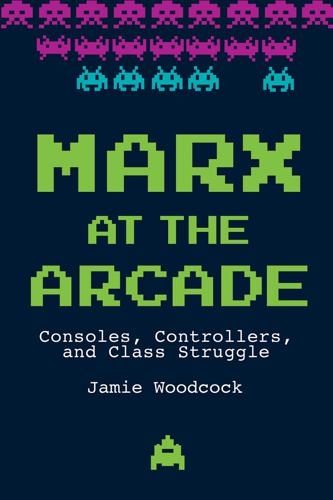
Marx at the Arcade: Consoles, Controllers, and Class Struggle
by
Jamie Woodcock
Published 17 Jun 2019
You disrespect the very city that works day and night so that we may drink this. This miracle. This tea. As I played through this stage of the game, it brought to mind all the different workers and processes that must have come together across the world to allow the player to enjoy “this miracle.” The videogame, like the cup of tea, requires complex global supply chains and different kinds of labor to ensure the final object can be consumed by the player. Uncovering these supply chains today will take more than just studying the lines of an evil monologue. The first encounter with Karl Marx in Assassin’s Creed Syndicate takes place in the packed Whitechapel train station, somewhere I used to pass through daily in modern, real-life London.
…
The production of videogames today involves “the highly disciplined and exploitative control of its cognitariat workforce—increasingly prominent in cognitive capitalism generally.”1 In these pages, we identified new ways companies manage and exploit workers in the games studio, but we also explored the essential global supply chains that mix both material and immaterial production. As Ian Williams has argued, the “exploitation in the video game industry provides a glimpse at how the rest of us may be working in years to come.”2 We discussed this kind of work through Notes from Below’s class composition framework, understood as “a material relation with three parts: the first is the organisation of labour power into a working class (technical composition); the second is the organisation of the working class into a class society (social composition); the third is the self-organisation of the working class into a force for class struggle (political composition).”3 This allowed us to unpack the organization of videogame work.
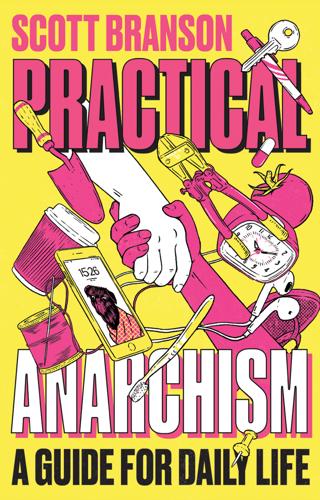
Practical Anarchism: A Guide for Daily Life
by
Scott. Branson
Published 14 Jun 2022
Through the money system, we are forced to engage in capitalism—we can’t spend or not spend our way out of it. As long as we need money to get the bare necessities of life, we participate. Withholding our money can be powerful when coordinated. People can work towards things like food autonomy, for example, creating a community that doesn’t rely on the global supply chains for subsistence. This would lead to a greater withdrawal from the economy—and pose a threat, probably big enough for state retaliation. In your area, you can also form alternative economies and exchanges that don’t use the same dominant money system. However, in the current situation it is quite difficult to end participation.
…
But even the more progressive ideas of encouraging the self-limitation of corporations, or punishing infractions against limits, don’t go far enough to halt an irreversible situation that instead calls for adaptation. From our perspective, we can refuse to participate to a certain extent, but that in itself won’t destroy global supply chains, agricultural industry, or military expenditure, and all of the damaging resources used to fuel them. The global Covid-19 pandemic is a good example of this contradiction. Many people witnessed local organizations pool resources, time, and risk exposure to help make sure that their neighbors had what they needed.

The Secret Life of Groceries: The Dark Miracle of the American Supermarket
by
Benjamin Lorr
Published 14 Jun 2020
By 1998: Michael Power, “Evaluating the Audit Explosion,” Law and Policy 25, no. 3 (July 2003); Timothy Lytton and Lesley McAllister, “Oversight in Private Food Safety Auditing: Addressing Auditor Conflict of Interest,” Wisconsin Law Review, April 7, 2014. $50 billion-per-year bucket that is the for-profit auditing industry: “Auditing Working Conditions: Breaking Through the Conspiracy of Silence,” Ethical Trade Initiative, 2015; Genevieve LeBaron, Jane Lister, and Peter Dauvergne, “Governing Global Supply Chain Sustainability Through the Ethical Audit Regime,” Globalizations 14, no. 6 (2017). five main export facilities for seafood processor Thai Union: Andy Hall to author. Top standards organizations are issuing certifications . . . but . . . “the auditors who certified them were experts in car batteries: Richard Stiler, “Third Party Audits: What the Food Industry Really Needs,” Food Safety Magazine, October 2009.
…
In the next audit, it needs to be 32 inches”—that was eventually resolved by hiring a former auditor as a consultant who recommended the factory “install two hooks and rotate the extinguisher back-and-forth.” Your private sector at work! Sonali Rammohan, “Toward a More Responsible Supply Chain: The HP Story,” Supply Chain Management Review, July 2009; Genevieve LeBaron, Jane Lister, and Peter Dauvergne, “Governing Global Supply Chain Sustainability Through the Ethical Audit Regime,” Globalizations 14, no. 6 (2017). A date is set. Inspection questions previewed: As hinted in the text, the conflicts of interest here are truly impressive. The same auditing firm sent to evaluate the companies will also offer to help them prepare to ensure they will pass.
…
Joe Fassier, “Welcome to Certification Nation,” New Food Economy, October 29, 2015; Richard Stier, “Third Party Audits: What the Food Industry Really Needs,” Food Safety Magazine, October 2009. They cannot open locked doors: Genevieve LeBaron, Jane Lister, and Peter Dauvergne, “Governing Global Supply Chain Sustainability through the Ethical Audit Regime,” Globalizations 14, no. 6 (2017). Retail brands often give auditing firms strict instructions: Ibid. they are duty bound to tell only you: Ibid. Factory managers in China can buy software: Kathy Chu, “A Look at How Some Chinese Factories Lie to Pass Audits,” China Labor Watch, April 30, 2012.

The End of the Free Market: Who Wins the War Between States and Corporations?
by
Ian Bremmer
Published 12 May 2010
It’s essentially a catchall term for all the various processes by which ideas, information, people, money, goods, and services cross international borders at unprecedented speed. Together, these processes have created a much more integrated global economy through trade, foreign direct investment, large-scale capital flows, the construction of global supply chains, innovation in communications technologies, and mass migration. None of these individual elements is entirely new. Global trade has existed for centuries. But the multiplier effect these forces create and the velocity with which they move make this phenomenon qualitatively different from anything that has come before.
…
Some have predicted the rise of the “global citizen” as a challenge to the nation-state. The logic is simple: If you no longer depend for information on news sources broadcasting or publishing within one country, if you can quickly and easily form electronic social networks with people all over the world, if outsourcing and the advent of the global supply chain allow you to work for a company that is headquartered ten thousand miles from your home, if travel to foreign countries becomes ever easier and more affordable, and if more members of your family live and work elsewhere, won’t these globalization-generated changes weaken the ties that bind you to any one country?
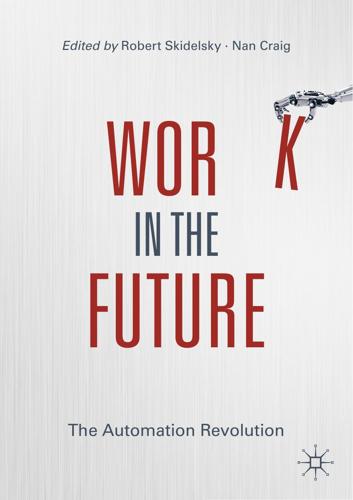
Work in the Future The Automation Revolution-Palgrave MacMillan (2019)
by
Robert Skidelsky Nan Craig
Published 15 Mar 2020
They tried to make the argument that this endless creation of new office jobs is actually necessary—it’s all because with complex global supply chains, production has become so digitized and efficient that we need many times more people to manage it. So bullshit jobs they claimed were the equivalent of the boring alienating factory job of the 1940s or 1950s, but they are also equally necessary. Our wealth depends on them. To which the obvious reply is: well then why is it happening at universities? What’s the academic equivalent of global supply chains, containerized shipping, Japanese style “just in time” production quotas? It is not like education or teaching at universities has become all that more complicated than it was 50 years ago.

Aerotropolis
by
John D. Kasarda
and
Greg Lindsay
Published 2 Jan 2009
It’s the urban embodiment of an evolution from warehousing to distribution to logistics that took less than twenty years and saw it rise from a necessary evil to the front lines in an eternal war on costs and the competition. You can trace the shift in this thinking through title inflation, a local consultant explained. “When I started in the mid-eighties it was the ‘warehouse manager,’ ” he said. “Then it was the ‘assistant manager of logistics.’ Today, it’s the ‘SVP for global supply chain,’ and he might sit on the board of directors.” He or she likely sits on the boards of companies that decided they were better at logistics than anything else, such as Walmart, which achieves “everyday low prices” with a pythonlike squeeze on its suppliers. Everyone else, it seems, moved to Memphis or Louisville to let FedEx and UPS handle it for them.
…
No one has ever tried to run a $16 billion company on Skype calls, e-mail, and the occa-sional Paris rendezvous until now. The company calls this “worldsourcing.” “It’s about leveraging the best people, processes, and costs, no matter where they’re located,” says Gerry Smith, the American running its global supply chain from Singapore. “I have staff in Shenzhen, Raleigh, Baddi [India], and Brazil. I’m a lonely figure in Singapore. I’m here because I have the best airport in the world; we don’t need a brick-and-mortar headquarters to make decisions.” Neither does anyone else. Consultancies like McKinsey and Accenture have long since jettisoned theirs, and scores of multinationals act like they already have.
…
While Kasarda was still a student in 1968, he advanced the heretical idea that the size and reach of international trade and multinational firms had already surpassed the ability of any one nation to control them. The balance of power had been reversed; from now on, corporations would dictate the terms. Today, this is so patently true we have Tom Friedman’s “Dell Theory of Conflict Prevention,” which presupposes that no two countries with pieces of the same global supply chain—such as China, Taiwan, and Dell’s—will ever tempt economic suicide by warring. One of the main drivers behind the rise of multinationals and what Vernon called “globalism” was air travel, which “shrank the Atlantic crossing from four days to seven hours,” he wrote. “It turned transatlantic tourism from a rich man’s indulgence into a middle-class need.

The Global Auction: The Broken Promises of Education, Jobs, and Incomes
by
Phillip Brown
,
Hugh Lauder
and
David Ashton
Published 3 Nov 2010
Take one of the major North American producers of mobile phones that started with basic manufacturing in China but, realizing the potential, rapidly moved their Chinese operations up the value chain to include designing both hardware and software. The company now has over 3,000 research engineers working in China who design and develop products for the global marketplace. We were told how the company had initially invested in manufacturing as part of plans to expand its global supply chain, but when senior American executives realized there were many talented engineers, they rapidly moved into leading-edge R&D. A Chinese manager based in Beijing observed how they moved from “coding work” and “customization” to research “fundamental architecture development, so we’ve created a lot of IPR [intellectual property rights] here in China.”
…
These initiatives are intended to create a better system of checks and balances that recognizes the legitimate claims of all stakeholders—employees, managers, consumer, shareholders, and local communities—that must tackle the way companies excessively profit from the global auction at the expense of working families. There are other possibilities such as that proposed by Barry Lynn, where antitrust laws could be used so that no corporation controls more than a quarter of the American market. The sourcing of goods in the global supply chain could also be limited to only a quarter of products from any one country, which could lead to greater openness in the global economy with workers in many countries being able to gain from it.24 Justice: Beyond Human Capital A new bargain is also more than a matter of equalizing opportunities to join occupational elites even if, as we’ve argued, moving toward a level playing field in the competition for a livelihood is a key policy goal.
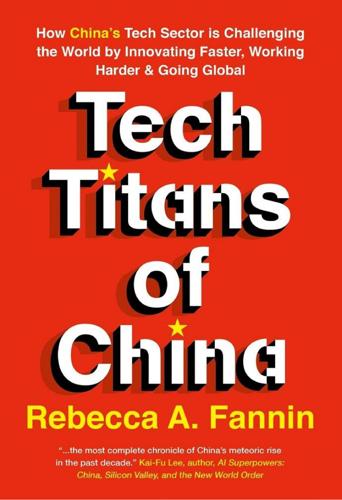
Tech Titans of China: How China's Tech Sector Is Challenging the World by Innovating Faster, Working Harder, and Going Global
by
Rebecca Fannin
Published 2 Sep 2019
David Lam, general partner at cross-border tech investment firm Atlantic Bridge, pointed out that any barrier is largely caused by politics. “Global supply chains are international, and the movement is unstoppable. It’s already happened. So it’s hard to turn back the clock. Some of the political leaders don’t necessarily share that view. They are the ones driving a lot of that policy and that does obviously create barriers, but they are more politically motivated than business motivated.” “Global supply chains are international, and the movement is unstoppable. It’s already happened. So it’s hard to turn back the clock.” David Lam General partner, Atlantic Bridge A US-China Venture Bridge Detours But the rifts are causing the bridge between Silicon Valley and China cross-border investing to be rerouted.

The New Silk Roads: The Present and Future of the World
by
Peter Frankopan
Published 14 Jun 2018
Just as it is possible to talk of win-win when things go well, it is also reasonable to see that it becomes a ‘lose-lose’ scenario when they do not. * The risks to the global economy in the event of a slowdown, correction or crash in China are obvious, given that China is ‘deeply embedded in global supply chains’, says the Bank of England report. There would be potential benefits – for example, a sharp reduction in some commodity prices like coal, steel and copper, as well as a fall in oil prices, leading to lower prices in the UK.129 Assessments like these presumably lie behind the aggressive stance on tariffs being adopted by the United States against China, with steps taken to put pressure on the economy to both weaken Beijing but strengthen consumers in the US at the same time.
…
There would be potential benefits – for example, a sharp reduction in some commodity prices like coal, steel and copper, as well as a fall in oil prices, leading to lower prices in the UK.129 Assessments like these presumably lie behind the aggressive stance on tariffs being adopted by the United States against China, with steps taken to put pressure on the economy to both weaken Beijing but strengthen consumers in the US at the same time. It also explains the robust attempt by China not only to issue economic countermeasures but to warn of the dangers of playing a game the consequences of which are hard to predict. The United States is ‘attacking the global supply chain’, said Ministry of Commerce spokesman Gao Feng, when asked about the introduction of yet more tariffs. ‘The American government is firing shots at the whole world and at itself too.’130 In Britain’s case, as the Bank of England’s report makes clear, the prospect of lower prices in the event of a major financial crisis in China is only one side of the story.
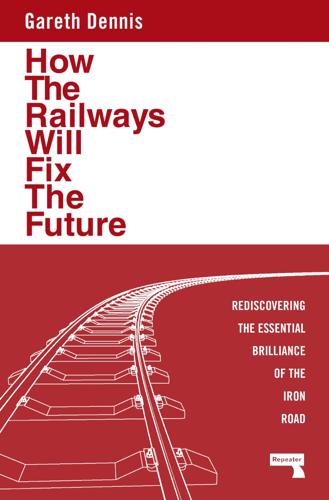
How the Railways Will Fix the Future: Rediscovering the Essential Brilliance of the Iron Road
by
Gareth Dennis
Published 12 Nov 2024
Here, however, rail can provide an alternative, allowing a complete bypass of the Mediterranean Sea for flows between Europe and Asia. The scale of change to global supply chains this will result in cannot be overstated, but the end of uninterrupted use of these two critical logistical pinch points is a certainty. Finally, a key response by the arbiters of the international railway network must be to actually create an international railway network. Standardisation of track gauge was first sought in the 1840s, but we’ve yet to achieve it. To enable global supply chains to rely first and foremost on rail, we need to remove the physical barriers breaking the flow of mobility between the global regions.
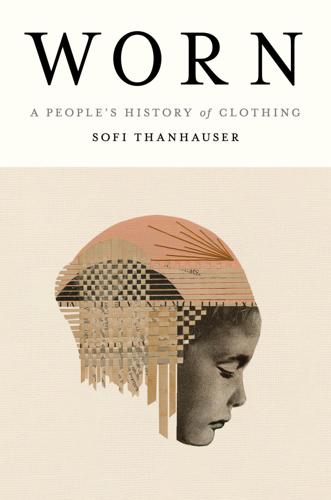
Worn: A People's History of Clothing
by
Sofi Thanhauser
Published 25 Jan 2022
There was some life to be found on the ring road outside of town: some barbecue and big-box stores, a Hooters. Downtown, I walked for blocks without seeing a soul. The windows were boarded over with plywood that glowed orange in the twilight. The Cotton Club, where Buddy Holly’s band used to play, was shut. Lubbock cotton now flows into the global supply chain with an eerie silence: no celebration amongst a community—no matter how flawed and blind to suffering—to see it off. Skip Notes * U.S. agricultural workers are at higher risk of fatal injury than workers in any other industry in the United States, higher than mining, construction, warehousing.
…
* * * — In 2019 two Japanese brands, Muji and Uniqlo, came under fire for their ad campaign advertising the softness of the Xinjiang cotton in their flannel shirts. “What?! They’re actually using that as a slogan?!” fumed Sophie Richardson of Human Rights Watch. One Twitter user declared, “Many Uyghurs love and idolize Japan, but this is a betrayal.” The truth was, however, that Xinjiang cotton had spread so deeply in the global supply chain that there were few global brands that could have accurately claimed their clothes did not contain it. Xinjiang was by then the source of an estimated 20 percent of the world’s cotton. Because this cotton would be spun, knit, or sewn by an international web of producers, it was as likely to be present in a garment marked “Made in Vietnam” as in one marked “Made in China.”
…
With this data, the most productive employees could be made to work during the busiest hours, and unproductive salespeople would see their hours cut. The name was important, one executive said, “because it gave a personality to the system, so [employees] hate the system and not us.” * * * — The global supply chain that brings us our clothing can seem intimidatingly complex. But what if it isn’t? Clothing brands farm out the making of goods to whomever in the world can do it most cheaply, and then divorce themselves in the eyes of customers from the facts on the ground. That’s pretty simple. The complexity only comes in when brands really need it to: to prove how many layers removed they are from the human lives being touched—sometimes lost—as a direct result of their purchase orders.
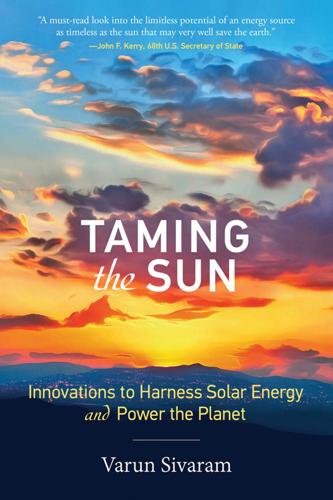
Taming the Sun: Innovations to Harness Solar Energy and Power the Planet
by
Varun Sivaram
Published 2 Mar 2018
One of the reasons that off-grid solar has taken off in East Africa is that tariffs and import duties there are relatively low, which enables Off-Grid Electric and other firms to import components of their solar systems from all over the world and move them freely between their bases of operation in Tanzania and Rwanda. In West Africa, by contrast, higher tariffs and duties make it more complicated and expensive to operate a global supply chain, ultimately raising the cost of off-grid solar. So a lesson for countries seeking to harness off-grid solar to improve domestic energy access is to tear down trade barriers that might artificially increase the cost of solar systems. Getting governments out of the way of innovation is a foundational requirement in order for public policy to enable off-grid solar deployment, but for the sector to flourish, it will need active support.
…
And the United States should reduce trade barriers, opting instead to foster a globalized solar industry. These steps might appear to help the competition. But this is a competition that plays to U.S. strengths. Indeed, in other innovation-led industries, such as semiconductor manufacturing, U.S. firms command global supply chains and invest liberally in the next technology generation. The United States is fully capable of transforming solar—from how it is financed, to what it looks like, to how flexible the system that it plugs into is—and enjoying the benefits of doing so. President Trump should rethink his administration’s priorities.
…
At the time of writing, the Trump administration was preparing to erect additional, sweeping trade barriers to imported silicon solar cells and panels from around the world, relying on the rarely invoked Section 201 of the 1974 Trade Act. But trade barriers are blunt, destructive tools that should be only a small component of America’s innovation strategy. Deployed recklessly, they can provoke trade wars that might stymie U.S. chances of taking the helm of an innovative industry with a global supply chain along which goods, services, and capital can flow efficiently across borders.51 Rather than retreating within its borders, America should embrace the chance to reshape the global solar industry in its innovative image. There are important differences between solar panels and semiconductors, and the business model of the latter may not translate exactly to the former.

After the Gig: How the Sharing Economy Got Hijacked and How to Win It Back
by
Juliet Schor
,
William Attwood-Charles
and
Mehmet Cansoy
Published 15 Mar 2020
Natasha, a Turo renter and Airbnb customer, summed up the rhetoric: “We’re putting money right in the pocket of the community we were visiting, skipping the middle man. So that felt good.” Participants in the nonprofits also saw their activities as an alternative to capitalism, especially those in the time bank. Across both types of sites our informants criticized global supply chains, corporate conformity, and exploitative and alienating social relations. We found an inchoate but powerful nostalgia, in which the sharing economy was envisioned as a household space, what we term a “domestic imaginary.”40 Production takes place within the home, social relations are familial, and the aesthetic is cozy.
…
I don’t feel like it really makes us happy and fulfills us in any way.” But it wasn’t only among time bankers that we heard these views. Food swappers think the food system is “insane.” Airbnb and Turo users talked about disliking chains and brand names. Respondents in multiple sites expressed their discomfort with global supply chains, sweatshops, and the environmental impacts of the consumer culture. Time banker Rachel believed that “we’re running out of resources and . . . it’s creating massive inequalities that are destabilizing our society and our democracy.” Why the Food Swap Failed: Snobbery and Social Exclusion Among our four sites the failure of the food swap was most spectacular.6 Why did things go awry for the well-meaning founders?

More: The 10,000-Year Rise of the World Economy
by
Philip Coggan
Published 6 Feb 2020
When General Motors and Chrysler flirted with collapse in 2009, one of the reasons for a government rescue was that jobs were also at risk at the companies that supplied parts (such as tyres or headlights) to the industry.46 The Motor and Equipment Manufacturers Association (MEMA) estimated that, as of 2018, more than 871,000 American jobs were linked to the creation of cars and trucks.47 Furthermore, these supply chains are international. While it is common to talk of the US or German car industries, these manufacturers depend on global supply chains. Parts may cross international borders many times before they are assembled into the finished product.48 Perhaps 30–50% of the trade in manufactured goods occurs within individual multinational companies.49 As they became aware of this, many developing countries slashed their tariffs so that they could become part of these global value chains.
…
In turn, this meant that manufacturing companies moved, since they no longer needed to rent expensive space in big cities in order to be near the docks. The result was a huge decline in blue-collar jobs in areas like Manhattan and east London. Without containerisation, it would be impossible to run the kind of global supply chains that multinationals operate. Indeed, it would also be impossible for companies to have low inventory levels; they can have minimal supplies of stocks because they know they can resupply themselves quickly. All this from the adoption of a humble metal box. Jet-setters If we could transport our great-great grandparents forward in time, what might surprise and alarm them most?
…
Several executives were arrested in a corruption crackdown in 2015–17.10 In its earliest growth phase, China concentrated on the low-value goods where its low wages gave it a clear competitive advantage. By 1990, it had become the world’s largest textile exporter.11 Later on, the country moved into electronics and became a key part of the global supply chain. By 2018, China was home to more than half of the world’s manufacturing capacity for electronics. Foxconn, which is Apple’s largest supplier, employs 250,000 people in Shenzhen alone.12 When Lenovo, the Chinese technology group, bought IBM’s personal computer business in 2004, it seemed a symbolic power shift from west to east.

The Toaster Project: Or a Heroic Attempt to Build a Simple Electric Appliance From Scratch
by
Thomas Thwaites
Published 27 Sep 2011
Guided by my (evidently misguided) belief that cheapness begets simplicity, I chose as my exemplar toaster the: Argos Value Range 2-Slice White Toaster Cat. # 421/9608 £3.94 — Which includes: • Coolwall • Variable browning control • Mid-cycle cancel • Cord storage — A great value toaster, which embodies the centuries of incremental technological development, rising material wealth, and diverse global supply chains on which modern life depends. A must for any well-appointed kitchen! It doesn’t have a crumb tray, though. Rule 2. I must make all the parts of my toaster starting from scratch. What does from scratch mean? From scratch means making something starting from the very beginning. What does starting from the very beginning mean?
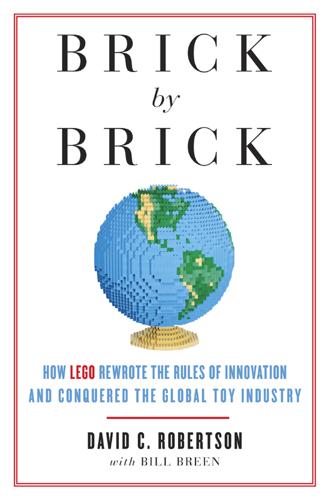
Brick by Brick: How LEGO Rewrote the Rules of Innovation and Conquered the Global Toy Industry
by
David Robertson
and
Bill Breen
Published 24 Jun 2013
Once ensconced at LEGO, Knudstorp became a kind of at-large strategist who roved throughout the company, taking on different assignments as new challenges arose: collaborating with the management team of LEGOLAND to improve the theme parks’ performance, developing an action plan for building out the company’s nascent line of retail stores, deconstructing its global supply chain and recommending improvements. Acting on his belief that “relationships are just as important as results,” Knudstorp formed many critical ties across what was then a heavily compartmentalized organization. Within six months of arriving at LEGO, Knudstorp began reporting directly to the chief operating officer, Poul Plougmann.
…
As Knudstorp dug deeper into the LEGO Group’s malaise, he found the company’s problems were far more systemic than a falling U.S. currency and a failed Christmas. First and foremost, the company’s management team, which consisted of twelve senior vice presidents who oversaw six market regions as well as such traditional functions as the direct-to-consumer business and the global supply chain, was “highly dysfunctional,” recalled Knudstorp. “They didn’t work together. They operated in silos.” The chill from the executive suite often frosted the company’s retail partners, who regarded LEGO as aloof and largely uncaring. Knudstorp also found the company’s designers and developers chronically failed to grasp the business implications of their actions.
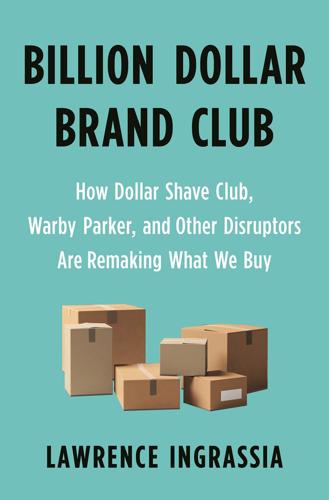
Billion Dollar Brand Club: How Dollar Shave Club, Warby Parker, and Other Disruptors Are Remaking What We Buy
by
Lawrence Ingrassia
Published 28 Jan 2020
This has dramatically lowered one of the main barriers to entry that long posed an obstacle to entrepreneurs and safeguarded the incumbents that had built their own factories and employed legions of deeply knowledgeable specialists on their R&D teams. Companies have outsourced production for decades, but in recent times, the global supply chain has become more diverse and sophisticated than ever. An abundance of potential manufacturing partners, many with excess capacity, can be found in Asia, the shop floor to the world. If anything, the challenge isn’t so much finding a supplier as it is sifting through dozens of possible suppliers to find the right one.
…
“It’s much easier than ever to rapidly build a new disruptive company, at least in the early stages, with limited capital,” notes Christopher Rogers, an analyst for Panjiva, which tracks import data and helps identify suppliers for an astonishing number of products, and puts it all online. Founded in 2005, Panjiva is part of an intricate network of companies devoted to every link in the global supply chain of goods. Information on suppliers that once was available only to big companies because it was buried in raw customs import data that was hard to access and decipher has now been democratized. “Smaller companies didn’t used to have market intelligence,” says Rogers. “Now they do.” * * * In times past, the biggest bazaars had hundreds of physical stalls offering their wares.

The Perfect Police State: An Undercover Odyssey Into China's Terrifying Surveillance Dystopia of the Future
by
Geoffrey Cain
Published 28 Jun 2021
China’s government responded with purges and the firing of officials it thought stood in the way.16 As prison numbers swelled, the Chinese government began building new camps with even stricter security measures and more imposing architecture, including guard towers, heavy concrete walls, and giant iron doors at the entrance, usually patrolled by police with well-trained attack dogs. The camps were completed in six months, as opposed to the many years needed to build prisons. Some camps ran their own factories where inmates were forced to toil on garments and shoes, infecting the global supply chain with slave labor. Most were big enough to hold ten thousand prisoners each, according to a BuzzFeed investigation.17 By October 2018, I was back in Istanbul to pursue the story. Turkey was home to tens of thousands of Uyghur and Kazakh refugees from China, as both the Uyghurs and Kazakhs were Turkic ethnic groups.
…
In 2018, three regions within Xinjiang forcefully transferred at least 570,000 people to do grueling cotton picking by hand for the bingtuan, Xinjiang’s paramilitary force.22 After the findings became public in December 2020, the United States banned cotton imports from the bingtuan, accusing it of “slave labor.”23 “The reported situation is of a scale, scope, and complexity that is unprecedented during the modern era of global supply chains,” the Retail Industry Leaders Association, a trade lobbying group consisting of leading clothing brands, announced in a statement with other industry groups, after the details of the labor transfers were made public. “Accepting the status quo is not an option.”24 [ ] In December 2017, the Communist Party began Becoming Family Week, a project that placed one million party cadres in Uyghur family households.
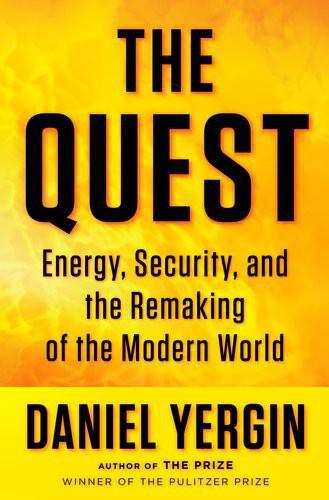
The Quest: Energy, Security, and the Remaking of the Modern World
by
Daniel Yergin
Published 14 May 2011
The Fukushima accident, compounded by damage to other electric generating plants in the area, led to power shortages, forcing rolling blackouts that demonstrated the vulnerability of modern society to a sudden shortage of energy supply. The effects were not limited to one country. The loss of industrial production in Japan disrupted global supply chains, halting automobile and electronics production in North America and Europe, and hitting the global economy. The accident at Fukushima threw a great question mark over the “global nuclear renaissance,” which many had thought essential to help meet the power needs of a growing world economy.
…
American and European companies were setting up supply chains that gathered components from different parts of the world, assembled them in still other parts, and then packed the finished goods into containers and shipped them across oceans to customers anywhere in the world. Although China did not formally join the WTO until 2001, it had by then already become the linchpin in this new system of global supply chains. As factories went up all along the coastal region, the inscription “Made in China” became ubiquitous on all sorts of products shipped all over the world. China had now become what was said of Britain two centuries earlier—“the workshop of the world.” In due course, these new trade and investment linkages would have much greater impact on world energy than anyone might have imagined.
…
The huge earthquake and tsunami that struck Japan in 2011 killed more than 15,000 people, devastated a major part of the country, and set off a nuclear accident. It also took down the region’s power system, knocking out services, immobilizing communication and transportation, disrupting the economy and global supply chains, and paralyzing efforts to respond to the tragedy. In China, India, and other developing countries, chronic shortages of electric power demonstrate the costs of unreliability. The Internet and reliance on complex information-technology systems have created a whole new set of vulnerabilities for energy and electric power infrastructure around the world by creating entry paths for those who wish to disrupt those systems.

The Third Pillar: How Markets and the State Leave the Community Behind
by
Raghuram Rajan
Published 26 Feb 2019
More generally, even as they outsource the low-value-added manufacturing segments of the production chain, developed countries retain the high-value-added and profitable premanufacturing segments like R&D and the equally profitable post-manufacturing segments like marketing and finance.13 Such a division of labor is not unattractive to emerging markets that are trying to move up the complexity chain to build more technology-intensive products. Since the early 1990s, the possibility of participating in global supply chains has convinced a number of these countries to lower their tariffs, improve their business environment, sign treaties protecting foreign investment, and enhance their protection of intellectual property. This has eased the way for more segments of the value chain to be moved to emerging markets.
…
Initially, this has favored the highly educated and skilled in developed countries, much as has technological development. As emerging markets train their own people well (with students often finishing with an advanced degree from a developed country), capabilities are migrating to the rest of the world. The highly educated and skilled everywhere now compete for business from global supply chains. In some countries, their wage differential relative to others, while high, is plateauing or even falling.15 The losers are clearer: the moderately educated workers in developed countries. When the supply chain was entirely in the developed country, they benefited from the competitive edge that developed-country design or R&D gave them.
…
Also, to the extent that countries continue adhering to international agreements when the government changes—which will be the case if there are significant costs to domestic industry of withdrawing from commitments—it gives firms across the world predictability of tariffs over time, and thus a stronger incentive to invest. As we have seen, such a low tariff regime has proven so attractive that a number of emerging markets have lowered tariffs significantly so that their producers can become part of global supply chains. All this is to suggest that we should resist the populist nationalist turn to protectionism, and redouble our efforts to lower tariffs globally. The merits of cross-border flows other than those of goods and services are more uncertain and contingent on circumstances. As a series of financial crises have shown us, capital flows into a country are not an unmitigated blessing, especially if the flows are short-term in nature, and the country has poorly developed financial markets and institutions.

The Climate Book: The Facts and the Solutions
by
Greta Thunberg
Published 14 Feb 2023
Their energy infrastructure is old, and energy and climate policy have made solar and wind power cost-competitive. As their coal power plants are nearing their end of life, and since energy use is stable, the deployment of solar and wind power in these countries is largely replacing their ageing energy infrastructure. Meanwhile, they are also taking advantage of global supply chains, whereby the import of consumable goods means there is less pressure placed on the energy system and emissions. Middle- and low-income countries have a different reality. Living standards are, at the aggregate level, considerably lower than in Europe and the US. To improve them, energy use is growing rapidly.
…
For some, this has brought the possibility of commuting long distances to work; for others, opportunities to undertake their education in a different country or go on holiday overseas. Technological advances in vehicles have also transformed trade: while international trade by sea has a long history, the things we consume today have complex global supply chains, and many of us are accustomed to having products arrive from a faraway origin sometimes just hours after we’ve ordered them. Yet for all the benefits that transport offers, it has significant and wide-ranging impacts on the environment. Extracting resources to make roads and railways, bikes and heavy goods vehicles, requires energy, generates pollution and often harms biodiversity.
…
There it was, an enormous dark green ship stuck in the desert, the word ‘EVERGREEN’ painted in gigantic white letters across the hull, while a lonely excavator chipped away at the vast shoreline. It was the perfect image for our modern world: the 400-metre-long vessel, leased by a Taiwanese shipping company and registered in Panama for tax reasons, which single-handedly brought global supply chains and large parts of the world’s trade to a one-week standstill. The Ever Given was on its way from China and Malaysia to the Netherlands, carrying some 18,000 containers filled with whatever stuff containers are filled with – electronics, household products, footwear, fast fashion, mountain bikes, outdoor furniture, barbecues, and so on.
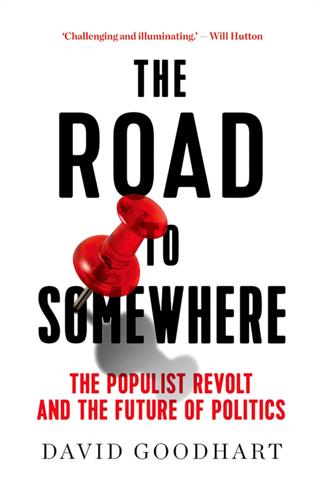
The Road to Somewhere: The Populist Revolt and the Future of Politics
by
David Goodhart
Published 7 Jan 2017
There are now fewer than 2,000 factories employing more than 200 workers and about one third of manufacturing jobs are in foreign owned companies. Foreign ownership can be a great blessing—just think of Nissan in Sunderland—but foreign owned companies often have ‘ambitions limited by their role in global supply chains … and small UK manufacturers are routinely exposed to the sourcing decisions of overseas multinationals and the vagaries of economic decisions that are beyond their control,’ as the CRESC ‘Rebalancing’ paper referred to earlier puts it.48 Of course any modern economy has to be a relatively open one—consider how when the pound fell after the Brexit vote the FTSE100 share index rose because so many of those big companies’ earnings and assets are in dollars or Euros which are now more valuable in relation to sterling.
…
Meanwhile, the rapidity of industrial decline has created so-called ‘broken supply chains’, meaning even successful manufacturers have to source most of the product from elsewhere. JCB, often cited as a great British success story, has seen the British content of its diggers decline from almost 100 per cent in 1979 to about one third today. Similarly Dyson vacuum cleaners outsources everything except design. Global supply chains are a common feature of today’s global companies but according to CRESC British manufacturers import far more than their German counterparts.50 The Dyson effect can deliver dynamism, but only in a few pockets as British industry returns to a small workshop base last seen in the early stages of the industrial revolution—and such units are too small to combat weak export performance or high import penetration.

Essential: How the Pandemic Transformed the Long Fight for Worker Justice
by
Jamie K. McCallum
Published 15 Nov 2022
By the time it arrived in Europe, it collided with a society made vulnerable by the horrific conditions wrought by feudalism—famine, poverty, slavery, and the roving armies of the Hundred Years’ War. Plague killed a staggering fifty million people, wiping out almost one-half of Europe’s population. Likewise, COVID-19 traversed the circuits of capital of the world economy, emanating from the major trading and travel hubs and passing through labor-intensive nodes in the global supply chain—warehouses, rail stations, air- and seaports, and the rest stops in between.18 Wuhan itself is often dubbed the Chicago of China because its airport, like bustling O’Hare, is a way station for so much domestic and international travel. The virus ripped across China in a few days, and within two months it was active in seventy-five countries.19 As the plague shows us, there have been pandemics across social systems; they’re not particular to capitalism.
…
In the meantime, in search of cheaper labor, many of the major domestic PPE producers, like 3M and Honeywell, outsourced their production to Asia. This meant that when we desperately needed PPE, we had to import it. More than any rich country in the world, we were suddenly hyper-reliant on a smooth and functioning global supply chain, which did not exist. China was the largest exporter, but its own stock was rapidly depleting, given that the outbreak happened there first. It also didn’t help that the Trump administration had started a trade war with that country not long before, fracturing international relations. The one major PPE producer that remained in the US, Halyard Health, developed technology to make 1.5 million N95s per day, ten times the going rate and seemingly enough to satisfy the predicted surge demand in the event of a US outbreak.24 But the Trump administration chose not to fund the project.
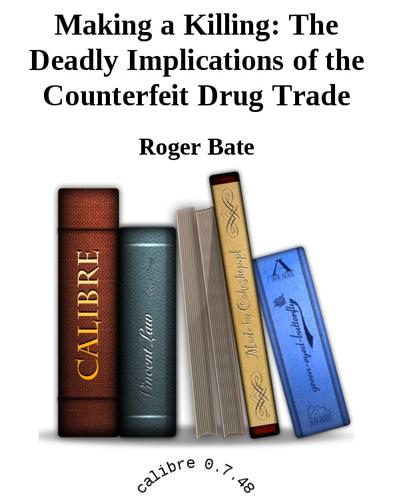
Making a Killing: The Deadly Implications of the Counterfeit Drug Trade
by
Roger Bate
Published 25 Jun 2008
Many have begun to implement track-and-trace technology on their drugs to provide an effective “e-pedigree” to distributors and consumers. Some have experimented with using radio frequency identification (RFID) technology to check the e-pedigrees of drug shipments, although, in the United States, this is not yet required by the FDA.101 To help secure the complex, vulnerable global supply chain, many drug companies have implemented their own security measures. Pfizer announced in December 2003 that all distributors in the United States selling its products would have to purchase them directly from the company or from selected wholesalers.102 In September 2006, Pfizer announced that it would cease selling drugs to eighteen wholesalers in the United Kingdom and instead distribute drugs there only through UniChem.103 These moves are attempts to cut down the size of the secondary wholesale market, which includes sales among wholesalers.104 Other pharmaceutical firms will need to secure their own supply chains and alert the public when they become aware of counterfeit drugs.
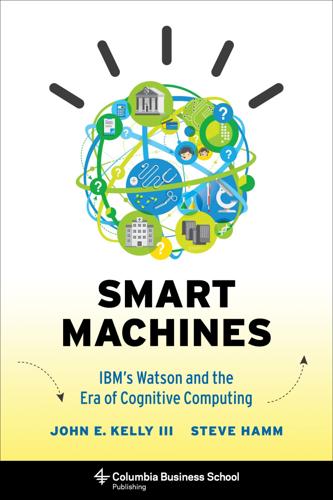
Smart Machines: IBM's Watson and the Era of Cognitive Computing (Columbia Business School Publishing)
by
John E. Kelly Iii
Published 23 Sep 2013
VARIETY Over the past decade or so, computer scientists and mathematicians have become quite proficient at handling specific types of data by using specialized tools that do one thing very well. For example, a sales manager can employ data analytics software to reveal past sales trends and forecast future sales, using a specific tool for a specific data type. But that approach doesn’t work for complex operational challenges such as managing cities, global supply chains, or power grids, where many interdependencies exist and many different kinds of data have to be taken into consideration. What’s required is a holistic approach to data management and analysis. You have to be able to mash together different kinds of data and act on them with different kinds of tools.
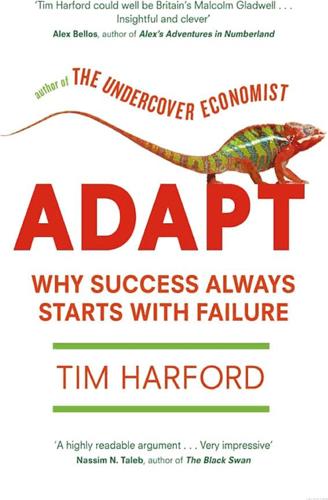
Adapt: Why Success Always Starts With Failure
by
Tim Harford
Published 1 Jun 2011
‘But I’m not sure what will happen if I plug it into the mains.’ Eventually, he summoned up the courage to do so. Two seconds later, the toaster was toast. 2 Problem solving in a complicated world The modern world is mind-bogglingly complicated. Far simpler objects than a toaster involve global supply chains and the coordinated efforts of many individuals, scattered across the world. Many do not even know the final destination of their efforts. As a lumberjack fells a giant of the Canadian forest, he doesn’t know whether the tree he topples will make bed frames or pencils. At the vast Chuquicamata mine in Chile, a yellow truck the size of a house growls up an incline blasted into the landscape; the driver does not trouble himself to ask whether the copper ore he carries is destined for the wiring of a toaster or the casing of a bullet.
…
It’s probably a safe bet that cars would become more efficient, buildings would be built with more insulation and passive heating and cooling systems, and that we’d see more use of technologies such as nuclear, hydroelectric and even ‘carbon capture’ – preventing carbon dioxide emerging from a coal-fired power station. But what other changes we might see, who knows? Global supply chains might be reconfigured. Hundreds of millions of people might move to places where the climate or the geography allows a more energy-efficient lifestyle. Or world-saving ideas could emerge from even more unexpected sources. If there was some way to reduce the methane being belched out by cows and sheep – almost a tenth of the total contribution to greenhouse gas emissions – then that would be a huge achievement.

The Deficit Myth: Modern Monetary Theory and the Birth of the People's Economy
by
Stephanie Kelton
Published 8 Jun 2020
Many developing countries also lack the ability—or have been told they don’t have the ability—to produce enough food, energy, and medicine to meet their own domestic demand. So, they rely on developed countries to supply them with imports of food, energy, and medicine. And, as we’ve discussed, they almost always need US dollars to pay for those crucial imports. As MMT economist Fadhel Kaboub has argued, this position at the bottom of global supply chains brings fundamental economic problems—many of them arising from the historical legacy of colonization itself.23 Exporting cheap labor and commodities, while importing expensive high-value items, tends to leave developing countries with perpetual trade deficits. The problem is that there isn’t a robust, permanent appetite for developing countries’ financial assets or real estate.
…
US Department of Labor, “Trade Adjustment Assistance for Workers” (webpage), www.doleta.gov/tradeact/. 15. Candy Woodall, “Harley-Davidson Workers Say Plant Closure after Tax Cut Is Like a Bad Dream,” USA Today, May 27, 2018, updated May 28, 2018, www.usatoday.com/story/money/nation-now/2018/05/27/harley-davidson-layoffs/647199002/. 16. Committee on Decent Work in Global Supply Chains, “Resolution and Conclusions Submitted for Adoption by the Conference,” International Labour Conference, ILO, 105th Session, Geneva, May–June 2016, www.ilo.org/wcmsp5/groups/public/---ed_norm/---relconf/documents/meetingdocument/wcms_489115.pdf. 17. Office of the Historian, “Nixon and the End of the Bretton Woods System, 1971–1973,” Milestones: 1969–1976, history.state.gov/milestones/1969-1976/nixon-shock. 18.

The Raging 2020s: Companies, Countries, People - and the Fight for Our Future
by
Alec Ross
Published 13 Sep 2021
But more often than not, large companies tend to use their clout to entrench their own dominance. Thanks to their wealth and global distribution, these companies have access to resources that remain out of reach for their smaller competitors. Large firms can use the offshore financial system to optimize their tax bills. They can leverage global supply chains and labor markets to lower costs. They can wage effective influence campaigns to win over policy makers. They can weather price wars, raise barriers to entry, and buy out would-be rivals before they get off the ground. They have access to larger data sets that they can use to optimize against smaller rivals.
…
Different cultures require different business strategies, different customer experiences, and different government relations. If companies do not learn how to do business in different cultural contexts, they will fail. Multinational companies must also develop something of an intelligence apparatus to help them see around the corner. In today’s global supply chains, civil unrest in southeast Asia could impact sales in North America and civil unrest in North America could impact sales in Europe. Effective geopolitical forecasting could make a significant difference to a company’s bottom line. At the same time, companies on the global stage now need to know how to defend themselves when it comes to cybersecurity.

Freedom
by
Daniel Suarez
Published 17 Dec 2009
"We also project reductions in export crops such as cotton in Asia and Russia. Security services in various countries are reporting labor unrest in both the agricultural and industrial sectors. The number of container ships being placed into warm and cold layup from lack of cargo is rising." It's tearing apart the global supply chain. Staring at the screen, The Major could visualize it like a full-scale nuclear attack. But one that the average person wouldn't notice--until it was beyond the tipping point. The British chap took over. "We project that if corn and soybean harvests drop another seven percent, raw material costs for almost all processed food products will skyrocket.
…
My family's been doing industrial farming for forty years and all it produces is debt, pollution, and water shortages. It ruins the land and the people on it." Ross nodded to the uniform fields out the window. "You think these other farmers will change?" "They'll have no choice. Gas is, what--eighteen bucks a gallon now? Industrial farming and the global supply chain gobble up fossil fuel." He peeled off each item with his fingers. "Natural gas in the fertilizers, petroleum-based pesticides, fuel for the tractors, more fuel for transport to food processors, fuel to process the raw crops into food additives, then to manufacture them into products, and then to transport the products across the country or world to be consumed--thirteen hundred miles on average."
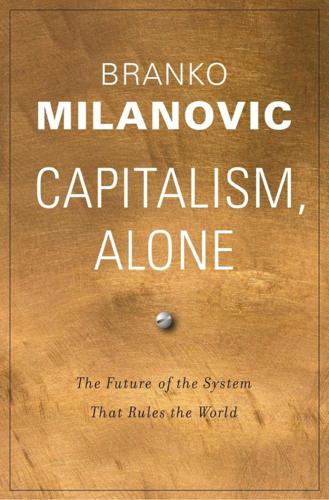
Capitalism, Alone: The Future of the System That Rules the World
by
Branko Milanovic
Published 23 Sep 2019
South Korea, Brazil, and Turkey were the best examples of countries following such policies. In the 1990s, with the second globalization, things changed. What has become crucial for the success of developing countries is no longer to develop through various predetermined stages using their own economic policies, but to become part of the global supply chains organized by the center (the Global North). And moreover, not merely to go into higher value-added stages by copying what richer countries are doing, but, as China is doing now, to become technological leaders themselves. The second unbundling has made it possible to skip the stages that were earlier thought necessary.
…
As recently as the 1980s, it was unthinkable that countries that were overwhelmingly rural and poor, like India and China, would within two or three generations become technological leaders, or at least come close to the production possibility frontier in some areas. Thanks to their insertion into global supply chains, it became a reality. The way to interpret Asia’s success in the current era is not by seeing China, India, Indonesia, Thailand, and so on as the latest versions of South Korea. They are the trailblazers of a new road to development which, through integrating one’s economy to the developed world, leapfrogs over several technological and institutional stages.
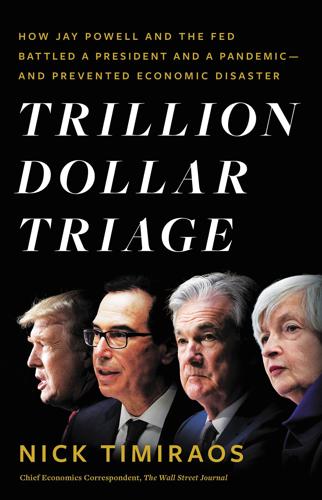
Trillion Dollar Triage: How Jay Powell and the Fed Battled a President and a Pandemic---And Prevented Economic Disaster
by
Nick Timiraos
Published 1 Mar 2022
Powell imagined an increasingly likely scenario: desolate shopping malls, kids home from school early, the TV playing reruns of past NBA finals. This was looking less like Y2K—the classic example of the government over-preparing for a calamity that never materialized—and more like a significant and sustained shock to the economy. The Fed was facing two distinct economic problems. As workplaces shuttered and global supply chains became squeezed, the first was a jolt to the economy’s capacity to produce goods and services, or its supply side. Lower interest rates couldn’t do much about that. But the Fed could help alleviate the second problem, a demand shock, in which households and businesses hold off on spending or investment.
…
Rental-car companies, which had liquidated their idle fleets to pay debts during the lockdowns, suddenly needed more vehicles, sending used-car prices skyrocketing. Cargo ships idled outside ports, with containers piling up on the docks or in warehouses. Lumber prices spiked. It was a sign of the global supply chain in disarray. These and other commodities caused measures of inflation to jump, generating rumblings of discontent against the Fed and the administration’s stimulus policies. Powell sought to preempt worries about higher inflation and described them as transitory. First, prices had plunged early in the pandemic, so as those declines dropped out of the twelve-month rates of change, the year-over-year comparisons would jump, exaggerating actual pressures.
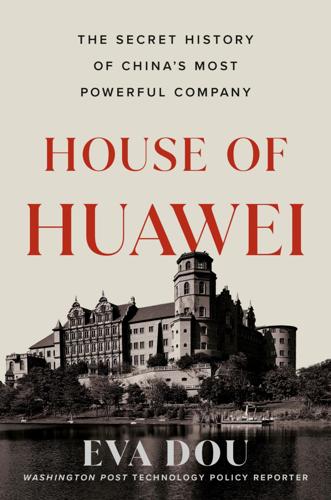
House of Huawei: The Secret History of China's Most Powerful Company
by
Eva Dou
Published 14 Jan 2025
Gary Garner, one of the early IBM consultants, recalled that his first impression of Huawei was that it was a vibrant but undisciplined company where things were sometimes just scrawled on sticky notes instead of being filed properly. “President Ren had a whole bunch of bright young PhDs,” he said, “but it was disorganized. It wasn’t ready to go to the international market.”[8] Guo Ping was in charge of the project, in which IBM would help Huawei map out a professional R&D workflow and global supply chain. This advice didn’t come cheap. Ren later claimed the company paid $680 per IBM consultant per hour,[9] nearly the average monthly salary at Huawei, though some former IBM consultants said they didn’t recall it being quite that high. Some of Huawei’s managers protested the new systems, which they found burdensome.
…
Security hawks in Beijing saw it as proof that the country needed to reduce its reliance on US technology as fast as possible. For years, the idea that Washington could assassinate Chinese tech companies by severing their supply chains had floated in the realm of conspiracy theory. Few in Beijing believed that such a thing was possible in an age of globalized supply chains. But now it was real. At Huawei, there were more specific reasons for panic. Whispers swirled that Huawei was the top prize, the big fish that US investigators were actually seeking to bring down. Ashley Yablon, the ZTE whistleblower, had previously worked as a senior lawyer for Huawei in the United States.
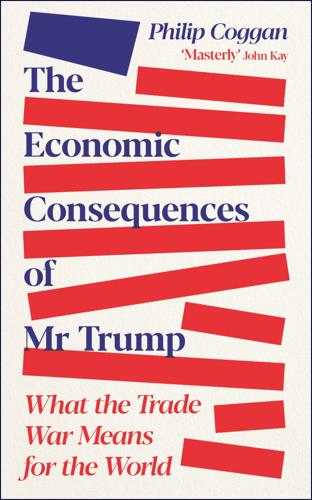
The Economic Consequences of Mr Trump: What the Trade War Means for the World
by
Philip Coggan
Published 1 Jul 2025
If the aim is to cut the trade deficit, then Mr Trump’s tax cuts for the wealthy will drive up the budget deficit and thus make the trade deficit worse. Tariffs are initially paid by importers, not by foreign countries, and are mostly absorbed by domestic businesses or passed on to consumers. They make no sense in an era of global supply chains and will lead to higher prices and potential shortages of goods. A decline of manufacturing jobs has occurred across the developed world over many decades, even in countries with trade surpluses, and has a stronger link to automation than trade practices. US companies buy goods from overseas because they are cheaper (or not available in the home market).
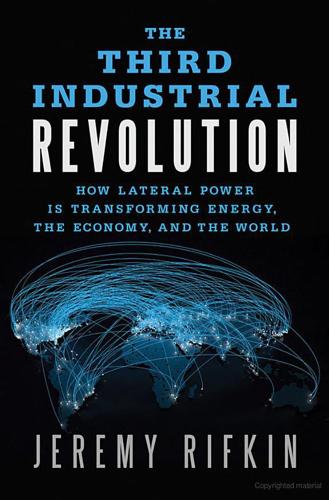
The Third Industrial Revolution: How Lateral Power Is Transforming Energy, the Economy, and the World
by
Jeremy Rifkin
Published 27 Sep 2011
My comments were greeted with widespread skepticism and even derision. “Not in our lifetime” came the retort from the oil industry, as well as most geologists and economists. Shortly thereafter, the price of oil dramatically rose. When the price went over $70 per barrel in mid-2007, the price of products and services across the entire global supply chain began to rise as well, for the simple reason that virtually every commercial activity in our global economy is dependent on oil and other fossil fuel energies.5 We grow our food in petrochemical fertilizers and pesticides. Most of our construction materials—cement, plastics, and so on—are made of fossil fuels, as are most of our pharmaceutical products.
…
Millions of people all over the world were more than happy to provide the goods and produce the services in return for our dollars. The global buying spree and the dramatic rise in aggregate output that accompanied it pushed up the demand for an ever-dwindling oil supply, resulting in a steep increase in prices on world markets. The sharp acceleration in the price of oil triggered price hikes across the global supply chain for everything from grain to gasoline, finally leading to a worldwide collapse of purchasing power when oil hit a record $147 per barrel in July 2008. Sixty days later, the banking community, awash in unpaid loans, shut off credit; the stock market crashed, and globalization came to a standstill.
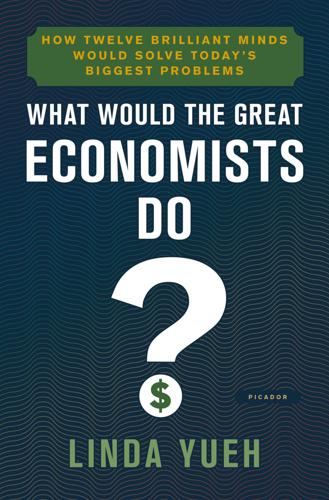
What Would the Great Economists Do?: How Twelve Brilliant Minds Would Solve Today's Biggest Problems
by
Linda Yueh
Published 4 Jun 2018
China is predicted to surpass even US R&D spending in the coming years. Of course, it’s not just what is spent or the number of patents filed that determines innovation. It’s how useful these inventions are. And that data does not yet exist for China. To complicate matters, much manufacturing now involves global supply chains. For instance, half of China’s exports are made by foreign-invested enterprises, so it’s multinational companies that are producing in China as well as domestic firms. Harvard economist Dani Rodrik estimated that the value of Chinese exports suggests that they come from a country with a much higher per capita income.
…
The statistics tell the story: in 2011 just 6 per cent of the population had access to a mobile device and only about 10 per cent had a bank account. Decades of military rule have left Myanmar underdeveloped and one of the poorest countries in Asia. But that also means that, with the right sorts of institutional reforms, it has significant potential to grow quickly. It sits in the world’s fastest-growing region with well-established global supply chains, which can help an economy industrialize and grow rapidly if it is part of the worldwide manufacturing network. Unlike many smaller countries in developing Asia, Myanmar, with a population similar in size to that of South Korea, can utilize a significant home market to promote growth as well as expand its exports.
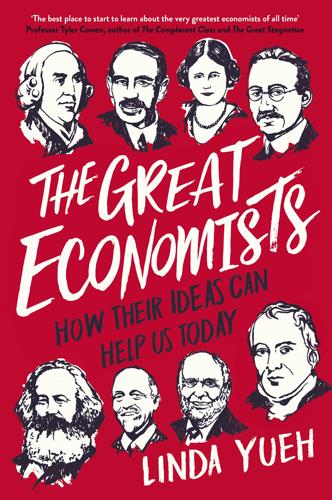
The Great Economists: How Their Ideas Can Help Us Today
by
Linda Yueh
Published 15 Mar 2018
China is predicted to surpass even US R&D spending in the coming years. Of course, it’s not just what is spent or the number of patents filed that determines innovation. It’s how useful these inventions are. And that data does not yet exist for China. To complicate matters, much manufacturing now involves global supply chains. For instance, half of China’s exports are made by foreign-invested enterprises, so it’s multinational companies that are producing in China as well as domestic firms. Harvard economist Dani Rodrik estimated that the value of Chinese exports suggests that they come from a country with a much higher per capita income.
…
The statistics tell the story: in 2011 just 6 per cent of the population had access to a mobile device and only about 10 per cent had a bank account. Decades of military rule have left Myanmar underdeveloped and one of the poorest countries in Asia. But that also means that, with the right sorts of institutional reforms, it has significant potential to grow quickly. It sits in the world’s fastest-growing region with well-established global supply chains, which can help an economy industrialize and grow rapidly if it is part of the worldwide manufacturing network. Unlike many smaller countries in developing Asia, Myanmar, with a population similar in size to that of South Korea, can utilize a significant home market to promote growth as well as expand its exports.
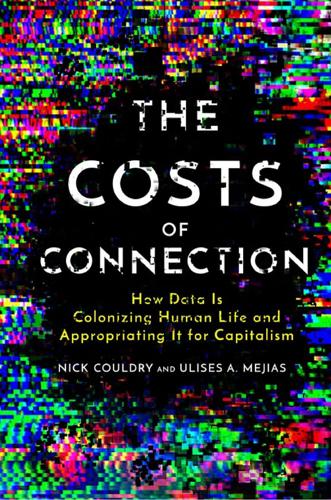
The Costs of Connection: How Data Is Colonizing Human Life and Appropriating It for Capitalism
by
Nick Couldry
and
Ulises A. Mejias
Published 19 Aug 2019
Colonialism requires an infra structure that facilitates the movement of resources, and what makes the Cloud Empire colonial is the scale and scope of this worldwide network of extraction and distribution, which is managed through increasingly sophisticated logistics. And we should not forget the debt that the concept and sometimes the practice of logistics owes to the military spirit. The smooth movement of resources along global supply chains is a movement in which corporations and armies have often supported each other during colonial times. To be sure, Amazon does not require its own army, like the East India Company did. But as Deborah Cowen argues, logistics “[map] the form of contemporary imperialism,”7 and as Ned Rossiter points out, “Increasingly, logistics infrastructure is managed through computational systems of code and software,”8 that is, through data.
…
In another sense, the kinds of changes that—in the West, at least—neoliberalism advocated or celebrated (the “liberalization” of trade and markets, the emergence of global financial markets, and the huge growth of the personal finance sector) were among the practical preconditions for data colonialism.13 Indeed, the tools of data colonialism (such as Machine Learning) emerged in part as solutions to the practical challenges thrown up by the need, for example, to manage complex global supply chains and massively accelerating financial flows. Both contextualizations are, in our view, important. Whether we see the emergence of the Cloud Empire more in terms of continuities or as a decisive break from what preceded it, its strategic importance in capitalism’s history remains clear. The Cloud: From Metaphor to Episteme Today’s data empires are not necessarily interested in land, but they are interested—at least allegorically—in air.

Empty Vessel: The Story of the Global Economy in One Barge
by
Ian Kumekawa
Published 6 May 2025
Speaking with people over Zoom, peering into their homes as they peered into mine, it was hard to escape how small the world was and how global an experience could be. At the same time, the pandemic brought physical boundaries and physical infrastructure out of the shadows and into the limelight. The breakdown of global supply chains and the inability to source face masks or toilet paper exposed how quotidian life depended on a whole hidden world. As everyday activities became fraught with danger, it became impossible to avoid considering how important grocery store workers were. It was impossible to ignore how vital buses were, and airplanes, and ships.
…
The refit not only fully automated Emden’s assembly line into a marvel of smoothly moving parts, it also linked the plant with another automated line sixty kilometers away. In fact, this computerized network would reach far beyond East Frisia. After all, Emden was the German port of departure for Volkswagen Passats destined for global supply chains. Today, the whole world depends on “just-in-time” manufacturing, in which highly integrated supply chains allow factories to create products essentially as they are demanded, rather than in advance. Doing so avoids the costs of having to store surplus material or finished products; it allows the most efficient use of labor and capital.

Four Battlegrounds
by
Paul Scharre
Published 18 Jan 2023
Fearing that Chinese leaders would feel emboldened by perceived American military weakness, the United States sent two aircraft carriers to the region to engage in exercises with India, Japan, and Australia. In response to increased Chinese assertiveness, nations are taking steps to restructure global supply chains for critical technologies. India, Japan, and Australia launched a trilateral supply chain resilience initiative to reduce their dependence on China. As part of its economic stimulus, the Japanese government allocated $2.2 billion to incentivize companies to move production out of China. The French government began working with French pharmaceutical companies to re-shore production.
…
News & World Report, June 16, 2020, https://www.usnews.com/news/world-report/articles/2020-06-16/dozens-killed-as-india-china-face-off-in-first-deadly-clash-in-decades. 76dismantle Hong Kong’s freedoms: Laignee Barron, “How Beijing’s National Security Crackdown Transformed Hong Kong in a Single Month,” Time, August 4, 2020, https://time.com/5874901/hong-kong-national-security-law-timeline/. 76incursions across the midline of the Taiwan Strait: Sara Zheng, “Fighter Jets Cross a Line in Taiwan Strait, Says Taipei as It Hosts US Health Official Amid Rising US-China Tension,” South China Morning Post, August 10, 2020, https://www.scmp.com/news/china/military/article/3096776/fighter-jets-cross-line-taiwan-strait-says-taipei-it-hosts-us; “Taiwan Scrambles Fighters as Chinese Jets Again Fly Near Island,” Reuters, September 19, 2020, https://www.cnbc.com/2020/09/19/taiwan-scrambles-fighters-as-chinese-jets-again-fly-near-island.html; Brad Lendon, “Almost 40 Chinese warplanes Breach Taiwan Strait Median Line; Taiwan President Calls It a ‘Threat of Force,’” CNN, September 21, 2020, https://www.cnn.com/2020/09/21/asia/taiwan-china-warplanes-median-line-intl-hnk-scli/index.html. 76United States sent two aircraft carriers to the region: Sanjeev Miglani, “U.S. Holds Naval Exercises with Allies in Asia amid China Tension,” Reuters, July 21, 2020, https://www.reuters.com/article/us-india-usa/u-s-holds-naval-exercises-with-allies-in-asia-amid-china-tension-idUSKCN24M0RB. 76restructure global supply chains: Katrin Hille, “US and Taiwan to Work on Reshaping Supply Chains Away from China,” Financial Times, September 4, 2020, https://www.ft.com/content/64be66cd-91eb-4862-a8fe-7c998b2e4770. 76trilateral supply chain resilience initiative: Dipanjan Roy Chaudhurhy, “India-Japan-Australia Decide to Launch Resilient Supply Chain Initiative in the Indo-Pacific Region,” Economic Times, September 2, 2020, https://economictimes.indiatimes.com/news/economy/foreign-trade/india-japan-australia-decide-to-launch-resilient-supply-chain-initiative-in-the-indo-pacific-region/articleshow/77870346.cms. 76$2.2 billion to incentivize companies: David Arase, “Tokyo Prods Japanese Firms to Leave China,” interview by Mercy A.
…
Hikvision is a socially-responsible company. Our mission is to keep people, organizations, and property safe and secure. We are proud that our company is trusted in Europe and we will continue to invest in Europe’s security. We are confident in our business continuity plan that ensures the sustainability of our global supply chain and we have the capability to continuously provide quality products to our valued partners and customers in Europe.” (“Hikvision Europe’s statement regarding the U.S. Commerce Department’s decision,” Hikvision, n.d., https://www.hikvision.com/europe/newsroom/latest-news/2019/hikvision-europe-s-statement-regarding-the-u-s--commerce-departm/.)

Conscience of a Conservative: A Rejection of Destructive Politics and a Return to Principle
by
Jeff Flake
Published 31 Jul 2017
The solution to our problems was to erect physical barriers between us and the world as well as metaphorical barriers between Americans, as populists will do. Our multilateral trade deals were suddenly the worst deals in the history of mankind, and other countries were benefiting and we had been left holding the bag—when in truth, all of the countries engaged in trade were doing better. Efficient and truly global supply chains mean that the component parts of an “American” car sometimes cross four or five borders—or our own borders four or five times—before that car rolls off the assembly line. Specialization, modernization, and mechanization mean a better standard of living for everyone and make for a more peaceful world as well.
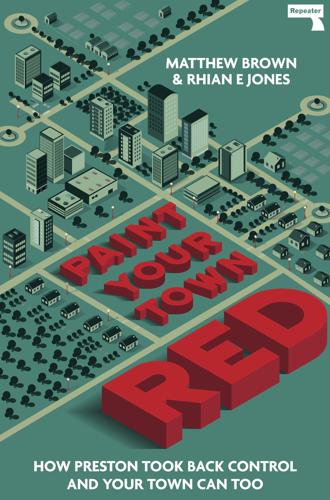
Paint Your Town Red
by
Matthew Brown
Published 14 Jun 2021
In the UK, too, where local authorities have broken from the status quo in favour of ambitious local experiments, they are gaining success at the ballot box. In the 2019 general election, Preston was one of the few constituencies to buck the national swing that saw heavy losses for Labour in its former heartlands. Recently, and most obviously, the Covid-19 pandemic has exposed the extent of our reliance both on complex and overextended global supply chains and on the poorest and least valued workers in the cleaning, health, transport and care work sectors to keep the economy and society going. Jobs in these sectors, despite their vital importance, tend to be insecure and poorly paid, and are dominated by young, female, BAME and migrant workers.

World Cities and Nation States
by
Greg Clark
and
Tim Moonen
Published 19 Dec 2016
The city’s industrial base relocated to the neighbouring PRD region for cost reasons. The new access to a large workforce in growing cities such as Shenzhen and Guangzhou meant that Hong Kong was able to manage and finance a huge number of manufacturing joint ventures. Hong Kong capital flooded into the regional subcontracting market that became essential to global supply chains of consumer goods. Hong Kong benefited greatly from growth on the mainland, which resulted in many newly listed mainland companies listing on the HKSE, a huge rise in Chinese tourism, a very large deposit base of RMB and a soaring domestic export market (Fung, 2008, 2011). It is no exaggeration to say that Hong Kong played a decisive role in the transformation of the Chinese economy.
…
National frameworks that outline an inclusive vision of urbanisation and create predictability around long‐term public infrastructure priorities and funding streams appear to offer benefits for both world cities and other cities. This kind of multi‐cycle approach allows cities to understand how they should compete in global supply chains and complement the most globally oriented cities. Even in federal systems, the national tier still has responsibility to co‐ ordinate with state and local partners to create lasting policy and identify viable funding mechanisms. Taking a longer view, the kind of tensions and disparities that are emerging between world cities and the other cities and rural areas in the nation state are 238 World Cities and Nation States only just beginning.
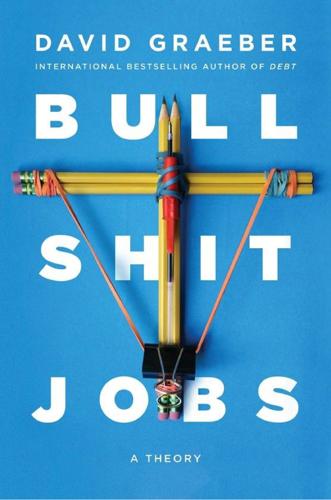
Bullshit Jobs: A Theory
by
David Graeber
Published 14 May 2018
Since this is the period that also saw the rise of finance capitalism, it might be best to return to the FIRE sector (finance, insurance, real estate) to seek insight into what overall dynamic in the economy sparked such changes. If those whom the Economist believes to be administering complex global supply chains are not, in fact, administering complex global supply chains, then what exactly are they doing? And does what is happening in those offices provide any sort of window on what is happening elsewhere? why the financial industry might be considered a paradigm for bullshit job creation • expedited frictionless convergences • coordinated interactive market institutions • contracted virtual clearinghouses • directed margin adjustments 21 On a superficial level, of course, the immediate mechanisms that create bullshit jobs in the FIRE sector are the same ones that produce them anywhere else.
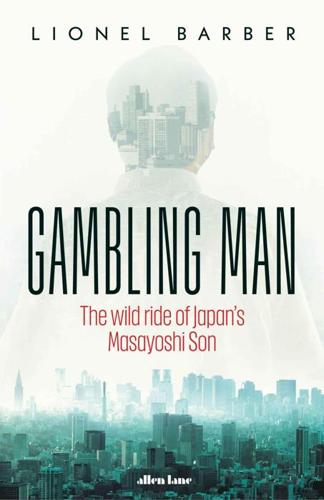
Gambling Man
by
Lionel Barber
Published 3 Oct 2024
‘He was largely [author italics] making transactions based on my direction. So if anybody should be criticized it’s me … They were just executing my strategy and my strategy was bad with the timing and so on.’6 As the Northstar strategy unravelled, Masa spoke of a winter storm enveloping SoftBank and the global economy. The coronavirus pandemic disrupted global supply chains, reminding the West about the dangers of dependency on China, where many believed the virus had originated. For more than a quarter of a century, SoftBank had been a leading beneficiary of China’s opening to the rest of the world. Alibaba was the golden goose which had laid a multitude of eggs.
…
Masa had touted Katerra as the future of the building industry, earning it a place alongside favoured members of the SoftBank family such as OYO Hotels and WeWork. Both SoftBank and Greensill had poured money into Katerra, which at its peak employed 8,000 workers. Masa brushed off these failures. He thought he was reliving the dot-com movie; but Covid had ripped up the script. The shock to global supply chains triggered a burst of worldwide inflation, which in turn triggered higher interest rates and higher borrowing costs, especially in the US and Europe. Once market sentiment shifted, Masa and SoftBank were highly indebted, highly leveraged and dangerously exposed. The geopolitical context had shifted too.
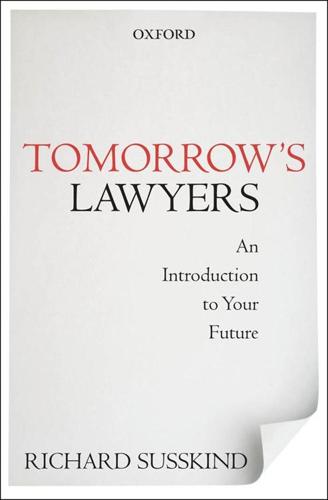
Tomorrow's Lawyers: An Introduction to Your Future
by
Richard Susskind
Published 10 Jan 2013
Thus, for a particular deal or dispute, a few if not many sources might contribute to the final product. To achieve this, we may find it useful to apply production-line or manufacturing mentality and methodology to the delivery of legal services: using, for example, just-in-time logistics and global supply chain techniques (underpinned by IT). On this model, one individual organization—a law firm or perhaps a new-look legal business—will likely take over all responsibility for the delivery of the completed, multi-sourced service (as a main contractor will do in a building project). I am emphatically not advocating some kind of mass production model for legal service.

Smart Cities: Big Data, Civic Hackers, and the Quest for a New Utopia
by
Anthony M. Townsend
Published 29 Sep 2013
Technology could fix all that, they argued, by stretching existing resources to deal with the first two problems and ratcheting down the excesses of industrial growth to deal with the third. If we replicated the logistics systems of global business and applied them to the very local problems of cities, it seemed, all would be well. As Colin Harrison, one of the architects of IBM’s smart-cities strategy explained it, “For much of the last twenty years, we instrumented the global supply chain. That hasn’t happened in city governments.”32 Remodeling cities in the image of multinational corporations requires three new layers of technology according to Arup, a global engineering giant. The first layer is “instrumentation”—the sensor grids embedded in infrastructure that measure conditions throughout the city, much as companies use GPS trackers, bar codes, and cash-register receipts to measure what is going on in their businesses.
…
His bio lauded many achievements, including leading the development of the first commercially useful MRI system in 1978, but also his “many failed innovations,” including an intriguing one named “magnetic bubble memories.”25 For Harrison, the weaving of SABRE-like information systems into everything was an inevitable historical process. “Over the last two decades,” he explained in 2011 at a conference in New York, “the planet became wired for transactions. The global supply chains that existed for centuries suddenly became instrumented,” fitted out with sensors that could track the movement of people, goods, and money. Manufacturers could track operations and sales worldwide, in real time. Suddenly, suppliers could tap into their customers’ mainframes to update delivery schedules.
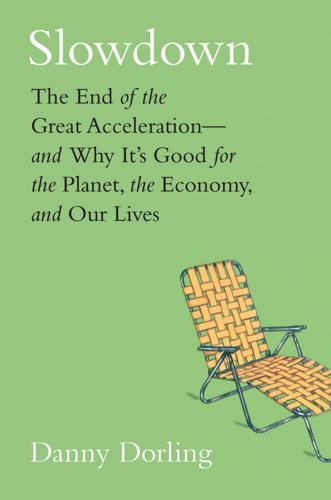
Slowdown: The End of the Great Acceleration―and Why It’s Good for the Planet, the Economy, and Our Lives
by
Danny Dorling
and
Kirsten McClure
Published 18 May 2020
Bruce Masse (London: Geological Society, Special Publications, 2007), 273, 271–78, http://sp.lyellcollection.org/content/specpubgsl/273/1/271.full.pdf. 10. Jason Hickel, The Divide: A New History of Global Inequality (London: William Heinemann, 2017), 275, 285. 11. Walmart, “Walmart on Track to Reduce 1 Billion Metric Tons of Emissions from Global Supply Chains by 2030,” 8 May 2019, https://corporate.walmart.com/newsroom/2019/05/08/walmart-on-track-to-reduce-1-billion-metric-tons-of-emissions-from-global-supply-chains-by-2030. 12. Mary Schlangenstein, “Airline Shares Reach Record as Buffett’s Berkshire Extends Bet,” Bloomberg News, 15 February 2017, https://www.bloomberg.com/news/articles/2017-02-15/airlines-rise-to-a-record-as-buffett-s-berkshire-deepens-bet. 13.

Shutdown: How COVID Shook the World's Economy
by
Adam Tooze
Published 15 Nov 2021
Nor did China put itself in quarantine or constructively advocate for movement restrictions.4 The WHO condoned that position, arguing against unnecessary travel bans.5 On all sides February 2020 delivered a staggering demonstration of the collective inability of the global elite to grasp what it would actually mean to govern the deeply globalized and interconnected world they have created. * * * — Among those who had immediate reason to take the virus seriously were those who manage global supply chains. At the time of the SARS crisis, China had accounted for only 4 percent of the world economy. In 2020, its world share was closer to 20 percent. For a manufacturing sector like automobiles, China was both the largest market and the largest production hub. In 2019, 80 percent of car production around the world involved Chinese parts.6 As one carmaker noted: “Everyone sources from China.”
…
Mai, “China Postpones Year’s Biggest Political Gathering Amid Coronavirus Outbreak,” South China Morning Post, February 17, 2020. 53. R. McMurrow, K. Hille, and N. Liu, “Coronavirus Hits Return to Work at Apple’s Biggest iPhone Plant,” Financial Times, February 18, 2020. 54. T. Ng, Z. Xin, and F. Tang, “Help China’s Key Manufacturers Plug Back Into Global Supply Chain, Xi Jinping Says,” South China Morning Post, February 21, 2020. 55. D. Yi and H. Shujing, “Foxconn Allows Henan Workers to Return to Its Zhengzhou Complex,” Caixin, February 21, 2020. 56. Y. Ruiyang and L. Yutong, “China’s Roads to Be Toll-Free Until Epidemic Ends,” Caixin, February 17, 2020. 57.
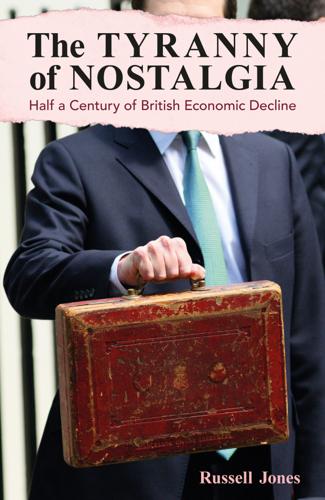
The Tyranny of Nostalgia: Half a Century of British Economic Decline
by
Russell Jones
Published 15 Jan 2023
But in a competitive world, ascribing good outcomes to skill rather than luck is what gets you elected. No one seeking the highest office is going to say out loud: ‘Wow, we really got lucky there with Chinese deflation, a global collapse in rates, a ton of new tech that came on line at the right time, the consolidation of global supply chains, and the end of labour militancy – vote for me!’ Even if it was those things that were, at least partly, driving the result. And even the most skilled operators – and Blair and Brown were, by Russell’s account, the best the UK have produced over the last fifty years – have their limits. Sometimes it is simply down to poor choices, such as with Blair and Iraq.
…
The regulation of patents and intellectual property may have played a role in this, as indeed might the growing importance of economies of scale in encouraging natural monopolies in technology-rich activities. Finally, there is evidence of widespread management failings, especially among smaller, family-owned firms. In contrast, larger exporting and foreign-owned firms were more integrated into global supply chains and more exposed to the disciplines of global competition. The impact of many of these productivity constraints seems to have faded over time. The banks’ health gradually improved, and credit conditions eased. Labour hoarding diminished. The closer the economy came to full employment, the more efficiently labour was utilized and the greater were both the incentive to expand capacity and the demand for labour-saving technology.

Design of Business: Why Design Thinking Is the Next Competitive Advantage
by
Roger L. Martin
Published 15 Feb 2009
“Apple realized the same thing we knew about Nokia and Motorola and all the others, which is that they were too successful and focused on feature phones (without e-mail and Web capability). They weren’t betting on the future,” says Lazaridis. “They were betting on their engine—their low-cost, high-volume, global supply chain juggernaut. They were missing the point. There will be no feature phones in the future. It will all be smart phones.” Long before the iPhone was even a rumor, Lazaridis was back to work creating the 3G Bold with a dramatically enhanced screen and the media-handling capabilities of an iPod.

How to Survive a Pandemic
by
Michael Greger, M.D., FACLM
We live in a global, just-in-time economy, which allows manufacturers worldwide to streamline their production to precisely meet demand, thereby reducing inventory warehousing costs and waste. The problem is that a single glitch in the supply chain can almost instantly dry up supply. During a crisis in which we shut down our borders, globalized supply chains will be shattered and vital goods like pharmaceuticals in general will be in short supply or unavailable.661 Antibiotics only work against bacteria. Although they can be effective in treating secondary bacterial infections, they are useless against viral pneumonia. Antibiotics were useful during the 1957 and 1968 pandemics because these were essentially just bad flu seasons when more people than expected came down with the flu due to the novelty of the bird/human hybrid viruses.
…
There are fewer than a hundred thousand full-feature ventilators in all of America’s hospitals,691 and most are already in use at any given time for everyday medical care year round.692 Experts like Irwin Redlener, then director of Columbia University’s National Center for Disaster Preparedness, saw the ventilator shortage as being emblematic of the country’s overall lack of preparedness. “This is a life-or-death issue, and it reflects everything else that’s wrong about our pandemic planning,” Redlener said.693 Within days of a pandemic, ventilators will be just one of many pieces of medical equipment that would be in short supply with the collapse of global supply chains. “Throughout the crisis,” Osterholm wrote in the public policy journal Foreign Affairs, “many of these necessities would simply be unavailable for most health-care institutions.”694 With COVID-19, we’re seeing a desperate lack of even basic protective gear for health-care workers, such as masks and gowns.
…
The AMA duty-to-care clause has since been removed.712 According to the journal of the American Bar Association, though, thirty-two state governments have considered legislation that would effectively force health-care workers to show up for work in a medical crisis by threatening to yank their licensure.713 Population Bust A Category 5 pandemic today could be many times worse than the pandemic of 1918, the world’s greatest medical catastrophe. In 1918 we were, as a nation and as a people, much more self-sufficient.714 Now, with the corporate triumph of free trade, just-in-time inventory management and global supply chains characterize all major economies and business sectors.715 Economic analysts predict a pandemic would cause a global economic collapse unprecedented in modern history.716 With the world’s population at an historical high, this could lead to unprecedented human suffering, something the global community is getting a taste of due to the COVID-19 pandemic.

Capitalism and Its Critics: A History: From the Industrial Revolution to AI
by
John Cassidy
Published 12 May 2025
All these things made it easier for companies to unbundle their supply chains and spread them out around the world: distance was shrinking. Considered separately, the neoliberal pivot in the West, the embrace of market forces by underdeveloped countries, and the rise of information technology and global supply chains all had huge ramifications. (The opening up of China and India alone potentially expanded the global capitalist workforce by more than a billion people.) Taken together, these three developments amounted to a new industrial revolution, and in Kondratiev’s terms, they created the basis for a new long wave of global economic development.
…
The Global Financial Crisis and the pandemic were obviously two very different phenomena, but both of them highlighted the dangers of unleashing the market and relying on the profit motive to allocate resources and capital. In advance of the 2008 blowup, deregulation led to excessive risk-taking by large financial institutions. During the pandemic, the global supply chain froze up, leaving many Western countries short of essential items like respiratory masks, diagnostic testing kits, computer chips, and baby formula. “The industries at the center of the supply chain—from shipping and rail to meat processing—had liberated themselves from rules imposed to limit their dominance,” the journalist Peter S.
…
15. International Monetary Fund, World Economic Outlook, April 2024, 138, table A1, “Summary of World Output,” https://www.imf.org/en/Publications/WEO/Issues/2024/04/16/world-economic-outlook-april-2024#statistical. 16. Peter S. Goodman, How the World Ran Out of Everything: Inside the Global Supply Chain (New York: Mariner Books, 2024), 346. 17. Erik Brynjolfsson and Andrew McAfee, The Second Machine Age (New York: W. W. Norton, 2014), 9. 18. Brynjolfsson and McAfee, Second Machine Age, 82. 19. Nicholas Crafts, “AI as a GPT: An Historical Perspective,” March 25, 2020, https://warwick.ac.uk/fac/soc/economics/staff/nfrcrafts/ai_as_a_gpt.ppt.pdf. 20.

The Zero Marginal Cost Society: The Internet of Things, the Collaborative Commons, and the Eclipse of Capitalism
by
Jeremy Rifkin
Published 31 Mar 2014
Setting up the fully equipped lab costs around $50,000.10 There are now over 70 Fab Labs, most in urban areas in highly industrialized countries, but many, surprisingly enough, are in developing countries where access to the fabricating tools and equipment creates a beachhead for establishing a 3D printing community.11 In remote areas of the world, unconnected to the global supply chain, being able to fabricate even simple tools and objects can greatly improve economic welfare. The great majority of Fab Labs are community-led projects managed by universities and nonprofit associations, although a few commercial retailers are beginning to explore the idea of attaching Fab Labs to their stores—so that a hobbyist can buy the supplies he or she needs and then use the Fab Lab to create the product.12 The idea, says Gershenfeld, is to provide the tools and materials anyone would need to build whatever they can envision.
…
“Wohlers Associates Publishes 2012 Report on Additive Manufacturing and 3-D Printing: Industry Study Shows Annual Growth of Nearly 30%,” Wohlers Associates, May 15, 2012, http://wohlersassociates.com/press56.htm (accessed August 16, 2013). 4. Richardson and Haylock, “Designer/Maker.” 5. Irene Chapple, “Dickerson: Etsy Is Disrupting Global Supply Chains,” CNN, June 5, 2013, http://edition.cnn.com/2013/06/05/business/etsy-leweb-craft-disrupting (accessed June 28, 2013). 6. “A Brief History of 3D Printing,” T. Rowe Price, December 2011, http://individual.troweprice .com/staticFiles/Retail/Shared/PDFs/3-D_Printing_Infographic_FINAL.pdf (accessed November 2, 2013). 7.

Behemoth: A History of the Factory and the Making of the Modern World
by
Joshua B. Freeman
Published 27 Feb 2018
This reflects a fundamental shift in relations between the two parties. Until fairly recently, the design, manufacture, and marketing of consumer products generally occurred within the confines of one company. But since the 1970s they have been delinked. And, as sociologist Richard P. Appelbaum has argued, in contemporary global supply chains it is retailers and branders (designers and marketers that depend on others for manufacturing) who have the most power to establish the arrangements and terms of production, not factory owners. Factory giantism serves their interests.33 Early in the history of factory production, some of the most successful manufacturers established their dominance by selling their products under brand names and controlling distribution networks.
…
MacWorld, Dec. 19, 2014, http://www.macworld.com/article/2861381/bbc-documentary-highlights-conditions-at-a-chinese-iphone-factory-but-is-it-all-apples-fault.html. 7.Ngai, Migrant Labor, 102; Boy Lüthje, Siqi Luo, and Hao Zhang, Beyond the Iron Rice Bowl: Regimes of Production and Industrial Relations in China (Frankfurt: Campus Verlag, 2013), 195, 198; Hao Ren, ed., China on Strike: Narratives of Workers’ Resistance, English edition edited by Zhongjin Li and Eli Friedman (Chicago: Haymarket Books, 2016), 11, 201–03; Jennifer Baichwal, Manufactured Landscapes (Foundry Films and National Film Board of Canada, 2006). 8.David Barboza, “In Roaring China, Sweaters Are West of Socks City,” New York Times, Dec. 24, 2004; Ngai, Migrant Labor, 102. 9.New York Times, Nov. 8, 1997, Mar. 28, 2000; Nelson Lichtenstein, The Retail Revolution: How Wal-Mart Created a Brave New World of Business (New York: Metropolitan Books, 2009), 173; Richard P. Appelbaum, “Giant Transnational Contractors in East Asia: Emergent Trends in Global Supply Chains,” Competition & Change 12 (Mar. 2008), 74; “About PCG,” http://www.pouchen.com/index.php/en/about/locations, and “Yue Yuen Announces Audited Results for the Year 2015,” http://www.yueyuen.com/index.php/en/news-pr/1147-2016-03-23-yue-yuen-announces-audited-results-for-the-year-2015 (both accessed June 3, 2016); International Trade Union Confederation, 2012 Annual Survey of Violations of Trade Union Rights—Vietnam, June 6, 2012, http://www.refworld.org/docid/4fd889193.html. 10.Some ten thousand Soviet technicians were posted to China to help with the industrialization drive, while nearly three times that many Chinese went to the Soviet Union for training.

Spies, Lies, and Algorithms: The History and Future of American Intelligence
by
Amy B. Zegart
Published 6 Nov 2021
Now they can attack privately owned critical infrastructure like power grids and financial systems in cyberspace—anytime, from anywhere, without crossing a border or firing a shot. In the twentieth century, economics and security politics were separate spheres because the Soviet-bloc command economies were never part of the global trading order. In the twenty-first century, economics and security politics have become tightly intertwined because of global supply chains and dramatic advances in dual-use technologies like AI that offer game-changing commercial and military applications. Until now, intelligence agencies focused on understanding foreign governments and terrorist groups. Today they also have to understand American tech giants and startups—and how malign actors can use our own inventions against us.
…
The 2019 threat assessment issued by the Office of the Director of National Intelligence warned that the United States “faces a complex global foreign threat environment” and that technological advances are enabling more states and non-state actors to steal information “to the detriment of U.S. interests.”22 The 2016 National Counterintelligence Strategy noted that global supply chains and communications have made information and assets essential to American national security more distributed and vulnerable. At the same time, hostile intelligence services have more tools at their disposal for stealing and exploiting sensitive data.23 Defensive and Offensive Counterintelligence Counterintelligence can be divided roughly into two sets of activities: defensive or passive counterintelligence, which consists chiefly of security measures, and offensive counterintelligence, which involves infiltrating a hostile intelligence service to understand how it operates and thwart its activities through disruption and deception.
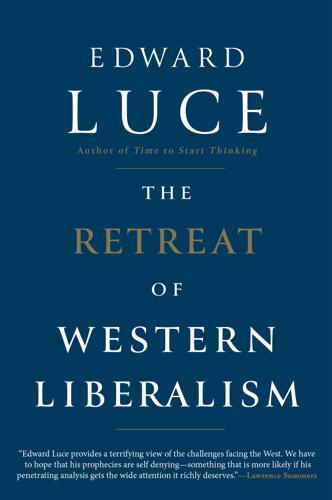
The Retreat of Western Liberalism
by
Edward Luce
Published 20 Apr 2017
What steam did in the nineteenth century, aeroplanes, supertankers and mechanised ports did for the last third of the twentieth century. The explosion of communications technology in the twenty-first century is enabling Western companies to do precisely the same in the knowledge economy today. Companies’ ability to go offshore via diversified global supply chains is no longer confined to physical goods. In the short term it is not artificial intelligence the West should worry about. It is what Baldwin calls remote intelligence. In some respects it has already arrived. Over the last twenty years, India and the Philippines reaped the rewards of the telecoms revolution to create lower-skilled service sector jobs at call centres, and on technology helpdesks.
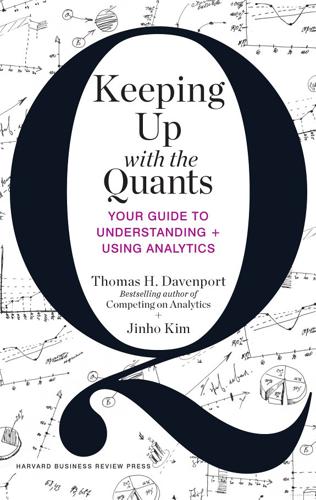
Keeping Up With the Quants: Your Guide to Understanding and Using Analytics
by
Thomas H. Davenport
and
Jinho Kim
Published 10 Jun 2013
Analytical Thinking Example: Demand Forecasting at Cisco Forecasting customer demand is a problem for many firms, particularly in manufacturing.9 It is a particularly important issue for Cisco Systems, the market-leading provider of telecommunications equipment. The company has a very complex global supply chain, and doesn’t manufacture most of the products it sells. As Kevin Harrington, vice president of global business operations in Cisco’s Customer Value Chain Management organization put it: “Forecasting customer demand is, of course, a central part of supply chain management and a critical enabler of lean manufacturing.

The Age of AI: And Our Human Future
by
Henry A Kissinger
,
Eric Schmidt
and
Daniel Huttenlocher
Published 2 Nov 2021
For example, the NotPetya malware deployed by Russian operators against Ukrainian financial institutions and government agencies in 2017 eventually spread well beyond targeted entities in Ukraine to power plants, hospitals, shipping and logistics providers, and energy companies in other countries, including Russia itself. As Senator Angus King and Representative Mike Gallagher, chairs of the United States Cyberspace Solarium Commission, said in their March 2020 report, “Like an infection in the bloodstream, the malware spread along global supply chains.” See page 8 of Report of the United States Cyberspace Solarium Commission, https://drive.google.com/file/d/1ryMCIL_dZ30QyjFqFkkf10MxIXJGT4yv/view. 8. See Andy Greenberg, Sandworm: A New Era of Cyberwar and the Hunt for the Kremlin’s Most Dangerous Hackers (New York: Doubleday, 2019); Fred Kaplan, Dark Territory: The Secret History of Cyber War (New York: Simon & Schuster, 2016). 9.
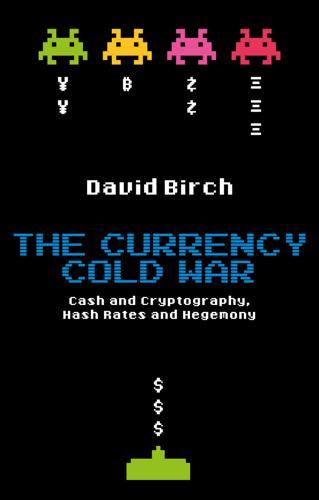
The Currency Cold War: Cash and Cryptography, Hash Rates and Hegemony
by
David G. W. Birch
Published 14 Apr 2020
The US dollar is involved in around 9 in 10 FX trades (compared with around 1 in 25 for China’s renminbi), and BIS figures show that non-US banks hold some $12 trillion in dollar assets (of which China accounts for a trillion) that must be funded with dollar liabilities. The US dollar’s dominance as a transaction currency has serious implications (Sandbu 2020). One of them is that global trade, in a globalized world of global supply chains, is held back by a strong US dollar. These long supply chains, constructed to deliver efficiency within industries, have significant financing requirements for importers and exporters. It appears this often takes the form of dollar lending to companies outside the United States who transact in dollars.
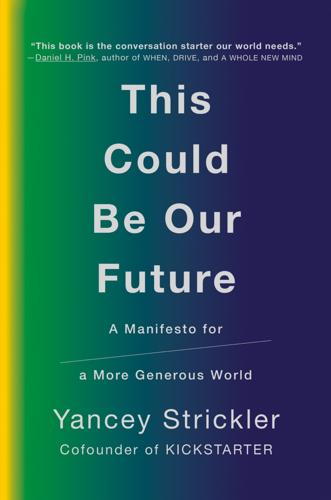
This Could Be Our Future: A Manifesto for a More Generous World
by
Yancey Strickler
Published 29 Oct 2019
This matters. As an industry report notes: “Collection is not recycling. A product is not recycled until it is made into another product.” Since modern recycling began, China has bought most of America’s recyclables. Millions of tons of it were shipped across the Pacific and reintegrated into the global supply chain. American cities and waste facilities sold recycling by the cargo load to China at a profit. Everybody won. But those days appear to be over thanks to the messiness of America’s single-stream recycling. In 2018, China raised its standards for the recycling it would buy. According to the new rules, only 0.5 percent of it can end up in landfill.

Uncontrolled Spread: Why COVID-19 Crushed Us and How We Can Defeat the Next Pandemic
by
Scott Gottlieb
Published 20 Sep 2021
In that hearing, I told the Senate that “China’s chemical industry, which accounts for 40 percent of global chemical industry revenue, provides a large number of ingredients for drug products. It’s these starting materials—where in many cases China is the exclusive source of the chemical ingredients used for the manufacture of a drug product—that create choke points in the global supply chain for critical medicines.”14 When it came to testing, the shortages of key components would persist for months. In July, a survey conducted by the Association of Public Health Laboratories found that 20 percent of public health labs would run out of at least one item required to do their tests within a week without steady resupply.15 In the case of testing systems, the low-margin components that went into shortage were the reagents used to run the tests, and the swabs used to collect samples.
…
Going forward, extending an approach to public health preparedness that views these risks through a lens of national security protection also means building more resilience into our public health infrastructure. It means expanding our healthcare system’s capacity to deal with a crisis, particularly our ability to conduct massive diagnostic testing and to implement large-scale manufacturing of biologicals. It also means reexamining the global supply chain that has left us vulnerable to shortages when every country that we depend on was suddenly hoarding the same equipment. It means we need a no-regrets ethos when it comes to pandemic preparedness. There must be no repentances or recriminations if we overinvest in preparedness when a new pathogen emerges only to see the virus fizzle out rather than explode into the next pandemic.24 Finally, it means bringing back to the US more of the manufacturing of critical healthcare components and finished goods.

Hit Refresh: The Quest to Rediscover Microsoft's Soul and Imagine a Better Future for Everyone
by
Satya Nadella
,
Greg Shaw
and
Jill Tracie Nichols
Published 25 Sep 2017
Business leaders and policymakers need to ask: What do we have that others do not have? And how can we turn that unique advantage into a source of growth and wealth for all our people? China has clearly done this with proactive industrial policy that supports their entrepreneurs and economy across manufacturing and consumer Internet services. China strategically used the global supply chain and their own domestic market to amplify their comparative advantage and bootstrap their economic growth. The combination of industrial policy, public sector investment, and entrepreneurial energy is what many other countries will also look to replicate from China’s success. I see the beginnings of this in India with the creation of the new digital ecosystem known as IndiaStack.

Think Like an Engineer: Use Systematic Thinking to Solve Everyday Challenges & Unlock the Inherent Values in Them
by
Mushtak Al-Atabi
Published 26 Aug 2014
This well-written book provides coverage of a number of important issues and techniques not commonly covered in most introductory engineering textbooks. It would benefit both engineers and non-engineers to read it as it may help them solve problems or develop opportunities in the real world.” Mastura Mansor, Vice President-Global Supply Chain, Scomi “The challenges of the 21st century will require a whole new kind of engineer: engineers who can both design complex technical systems and appreciate their interaction with society; engineers who possess both analytical intelligence and emotional intelligence; engineers who can work with others, take risks, and learn from failure.
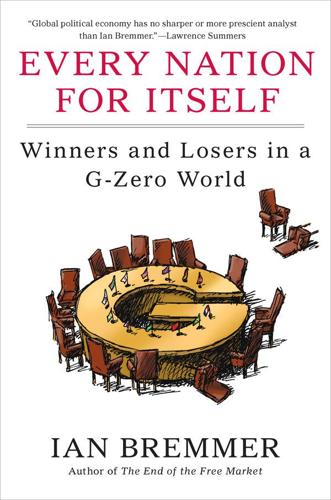
Every Nation for Itself: Winners and Losers in a G-Zero World
by
Ian Bremmer
Published 30 Apr 2012
Strife within so many important countries could inflict considerable damage on the global economy, with dire consequences for volatile and vulnerable states like Pakistan, which relies on Saudi, U.S., and Chinese help to keep its government afloat. Globalization faces a fundamental setback as global supply chains become unmanageable and a lot more borders appear within states. Local actors refuse to respect agreements signed at the national level that exploit their resources. In some cases, they seize assets and property owned by the state (pipelines, reservoirs, ports) or by companies based beyond their borders.

The Self-Made Billionaire Effect: How Extreme Producers Create Massive Value
by
John Sviokla
and
Mitch Cohen
Published 30 Dec 2014
This is clearly a big issue for Target and other retailers struggling to protect their reputations, but it is most often addressed by looking at the best practices of best-in-class retailers or financial companies to understand how they prevent security breaches. Natural Producers would look at the problem at a higher level, namely, how does the structure of the global credit card system compromise security and is there a global change that could improve it? In the same way that Walmart is influencing the environmental footprint of its global supply chain, could Target change the security footprint of retail payments? In this way, companies shift their organizational focus from day-to-day minutiae to the larger purpose of what the organization is about and what foundational solutions it can offer. Questions at this level of scale are rarely posed at all, much less at all levels in corporate environments—another example of the ways that many large businesses constrain the collective imaginations of their employees.
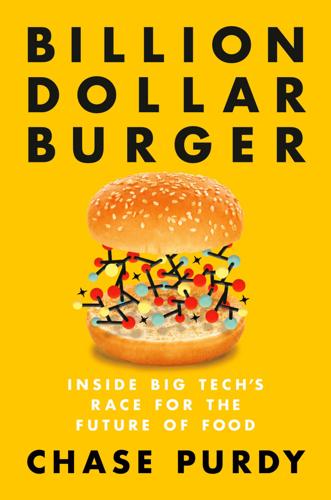
Billion Dollar Burger: Inside Big Tech's Race for the Future of Food
by
Chase Purdy
Published 15 Jun 2020
Feria started her career at General Mills, literally making brownies and Cheerios, brands that sell in virtually every US supermarket. Then she went to the Procter & Gamble Company, where she worked in consumer goods. This was also about the time she became vegan. She operates her investing from the perspective that animals need to be removed from global supply chains. Whether that means growing leather from cells, funding start-ups that create non-animal-based gelatin, or pumping money into a cell-cultured meat start-up, Feria knows that interest from investors will be crucial if these start-ups ever want a shot at challenging the multibillion-dollar status quo.
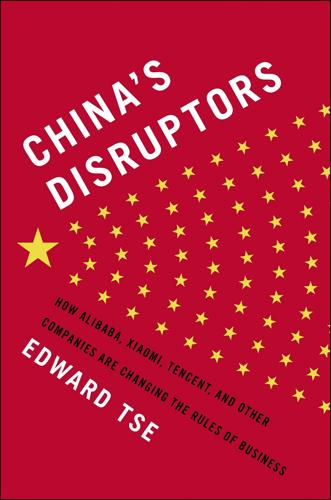
China's Disruptors: How Alibaba, Xiaomi, Tencent, and Other Companies Are Changing the Rules of Business
by
Edward Tse
Published 13 Jul 2015
Born in Yichang, a city on the Yangtze in central China, after graduating from Wuhan University in 1983 he moved to the United States, where he became a business-school professor at the University of Texas. Yu went on to launch an airlines-related computer systems business that he eventually sold to Andersen Consulting (the forerunner of Accenture) and worked as a multinational executive running Amazon’s and Dell’s global supply chains. His job at Dell took him back to China, with a post in Shanghai managing the company’s $18 billion procurement budget. For most people, that would have been challenge enough. But Yu found himself caught up in the tide of entrepreneurial fever that was sweeping the country. The idea for Yihaodian emerged from a business lunch with fellow Dell executive—and current Yihaodian CEO—Liu Junling.

Belt and Road: A Chinese World Order
by
Bruno Maçães
Published 1 Feb 2019
It was always like that, as you will be told in Beijing. The difference is that now someone else is inching closer to the center. The Belt and Road is the name for a global order infused with Chinese political principles and placing China at its heart. In economic terms this means that China will be organizing and leading an increasing share of global supply chains, reserving for itself the most valuable segments of production and creating strong links of collaboration and infrastructure with other countries, whose main role in the system will be to occupy lower value segments. Politically, Beijing hopes to put in place the same kind of feedback mechanism that the West has benefited from: deeper links of investment, infrastructure and trade can be used as leverage to shape relations with other countries even more in its favor.

Imagining India
by
Nandan Nilekani
Published 25 Nov 2008
Abhijit Banerjee remarked to me how villagers have begun to oversee public road works in their areas. “Old men will sit by the side of the road, watching the contractors,” he says, “and if they mess up on the tarring and levelling, they make them fix it.” In the long term, world markets also have the power to improve governance standards. The integration across industry sectors with global supply chains has brought in international scrutiny and standards for local businesses, such as in food safety laws. It is also driving governments to respond to supply chain inefficiencies, which are bringing in reforms in agriculture, port and highway infrastructure, and a push toward less draconian controls in manufacturing.
…
For instance, a villager without access to a good government school is able to access either a rural private school or education provided by a long-distance tutor through one of Sriram Raghavan’s IT kiosks. Group-based entitlements—in education, employment and infrastructure—are also becoming less difficult to sustain as the private sector expands and the country links itself with global supply chains in infrastructure and labor. Dr. Madhav Chavan, cofounder and director of the NGO Pratham, tells me, “Workers in Bombay are refusing to join unions on minimum wage, since they can negotiate directly with a company and get jobs at higher incomes.” This is creating broader support for markets and economic reforms and is also slowly bringing down the strength of interest groups such as teachers unions in schools and of unionized employees in the public sector.

Aftershocks: Pandemic Politics and the End of the Old International Order
by
Colin Kahl
and
Thomas Wright
Published 23 Aug 2021
Some of these nations enjoyed geographical advantages that made it easier to keep the virus at bay, but they generally had one other thing in common: they had experience mishandling recent epidemics, pandemics, or other national disasters, and had learned their lessons. The coronavirus caused the worst economic downturn in modern times, and it also nearly triggered a massive financial crisis in the United States—averted only because of a timely and overwhelming response by the U.S. Federal Reserve. The pandemic exposed the vulnerability of global supply chains as countries experienced shortages of critical medical supplies and other goods. It tore at the fabric of the European Union—a coalition of twenty-seven countries supported by shared economic, social, and security concerns—as national border closings and the scramble for medical supplies unraveled its common purpose and raised questions about its very survival.
…
It was no surprise, therefore, when French president Macron continued to emphasize the importance of Europe moving toward greater “strategic autonomy” even after Biden won the U.S. election.21 PREPARING FOR THE NEXT PANDEMIC Each year, between two and five new zoonotic viruses are discovered that have jumped from animals to humans.22 As the world grows more urban, as deforestation further displaces animals from their natural habitat, and with meat very much a part of global supply chains, the chances of another major pandemic will only accelerate.23 In the years ahead, shifting climatic zones will also force animals out of their habitats and into greater contact with people (thus increasing the risk of zoonotic diseases) and expand the range of mosquitoes and other sources of vector-borne infectious diseases.

The Long Game: China's Grand Strategy to Displace American Order
by
Rush Doshi
Published 24 Jun 2021
And since 2016, Beijing has launched several similar and heavily resourced programs, including a plan to become a world leader in AI by 2030, a plan to dominate standard-setting by 2035, and a plan to invest $1.4 trillion in five years to build 5G networks across China.73 Third, Chinese sources see their role in supply chains as an enormous advantage worth preserving as technology competition intensifies. Even as countries around the world sought to diversify away from China following COVID-19, President Xi declared that protecting China’s role in global supply chains was one of his top national priorities. These chains are one reason some scholars like Jin Canrong argue that “China has a greater chance of winning” the Fourth Industrial Revolution.74 Although the United States does have “the best innovation capabilities,” he argues, the country now “has a major problem, which is the hollowing out of its industrial base.”75 This means it “cannot turn technology into a product acceptable to the market” without China’s factories.
…
“China has just about every industry” and its “manufacturing industry will account for more than 50 percent of the world’s total by 2030.”76 The country’s superior numbers of engineers, its ability to reverse-engineer, and its factories’ centrality to global technology are “China’s real advantage in long-term industrial competition.”77 China should press this advantage. “Regardless of how the United States feels,” he argues, “China . . . must work hard to seize the Fourth Industrial Revolution” and become the “leader” of it.78 For now, China is retaining its hold on global supply chains despite foreign pressure. The European Chamber of Commerce in China found that only about 11 percent of its members were considering relocation out of China in 2020; similarly, the president of AmCham China noted that the majority of the group’s members are not planning on exiting China.79 For these firms, the rationale goes beyond cost alone.

Empire of AI: Dreams and Nightmares in Sam Altman's OpenAI
by
Karen Hao
Published 19 May 2025
During Hurricane Irma in Florida and Hurricane Harvey in Texas, even as millions of people lost power, some hospitals evacuated patients, and hundreds of thousands of homes and businesses faced damage and destruction, the data centers in those areas continued to hum along—so well that the displaced families of one facility’s employees moved into it for the duration of the natural disaster. The land and energy required to support these megacampuses are but two inputs in the global supply chain of data center expansion. So, too, is the extraordinary volume of minerals including copper and lithium needed to build the hardware—computers, cables, power lines, batteries, backup generators—and the extraordinary volume of potable—yes, potable—water often needed to cool the servers. (The water must be clean enough to avoid clogging pipes and bacterial growth; potable water meets that standard.)
…
Pena also sent a petition to the ministry, with over four hundred signatories, demanding a more extensive environmental and social impact study of the full supply chain of the data center: where the minerals for producing its hardware are being extracted, how the labor involved is being treated, how much carbon will be emitted, how the generated e-waste will be disposed of in a way that doesn’t leach chemicals into someone’s community. Most of these other impacts won’t befall Uruguay, but Pena feels a solidarity with the other countries where they will. They are “generally all from the Global South,” he says. “We all end up with the same consequences, but from different links in the global supply chain.” In 2024, Chile’s environmental court ruled that Google cannot build a water-using data center in Santiago. The Google Chile spokesperson said the company remains committed to the country and Latin America, and plans to begin the permitting process for an air-cooled data center in Cerrillos when needed.
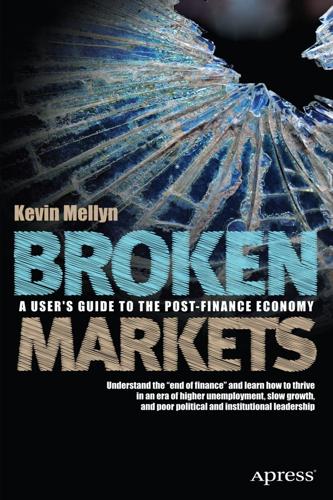
Broken Markets: A User's Guide to the Post-Finance Economy
by
Kevin Mellyn
Published 18 Jun 2012
That would aid other developing markets that depend on low-cost labor to compete internationally, and it would raise the cost of Chinese goods to United States consumers considerably, so Americans would learn to do without their 72-inch TVs in many instances. That does not mean that the “jobs” supposedly “shipped” to China would return to high-cost, high-tax, and high-regulation localities in the United States.The development of global supply chains, “lean manufacturing,” and offshore production are responses to increased global competition and technologies that change factor costs while shrinking time and distance. Even doubling the value of the RMB in dollar terms would change none of that. On the other hand, removing Chinese savings and reserves from the global financial economy could be catastrophic.

Humans as a Service: The Promise and Perils of Work in the Gig Economy
by
Jeremias Prassl
Published 7 May 2018
See Matthew Finkin, ‘Beclouded work, beclouded workers in historical per- spective’ (2016) 37(3) Comparative Labor Law & Policy Journal 603; Susan Kitchell, ‘Tonya, the Japanese wholesalers: why their domination position’ (1995) 15(1) Journal of Macromarketing 21; J Lautner, Altbabylonische Personenmiete und Erntarbeiterverträge (1936) 164. 16. Select Committee on Homework, Reports of the Select Committee on Homework (HC 290-IV, 1907–8), xxv. The parallels are by no means limited to history: think, for example, of twentieth-century outsourcing and global supply chains. 17. Arun Sundararajan, The Sharing Economy: The End of Employment and the Rise of Crowd-Based Capitalism (MIT Press 2016), 159–75. * * * Notes 167 18. Consider, for example, this dizzying description of clothing manufacture: [T]he middleman fixes the garment, and passes it on to the tailor or ‘maker’ to baste for fitting; from this it passes to the ‘machiner’ to machine the main seams; again back to the fixer to fix the shoulder seams, collars and sleeves; back again to the tailor to put in the stitching; and a last to the whom to fell in the lining and stitch buttons and buttonholes.

Cogs and Monsters: What Economics Is, and What It Should Be
by
Diane Coyle
Published 11 Oct 2021
Comparative advantage is another unintuitive concept, yet specialisation on the basis of comparative advantage and trade can deliver large mutual benefits (as well as always-destabilising disruption). Specialisation and exchange, either domestic or international, are the source of the transformative economic growth of the past quarter millennium. They are the drivers of the global supply chains now under attack for reasons of national advantage or resilience during a crisis. Common sense finds it equally hard to accept that jobs have no objective existence in the economy separate from the people who currently do them (the ‘lump of labour fallacy’), or that it can be a good thing for the economy’s growth rate if some businesses are allowed to fail.
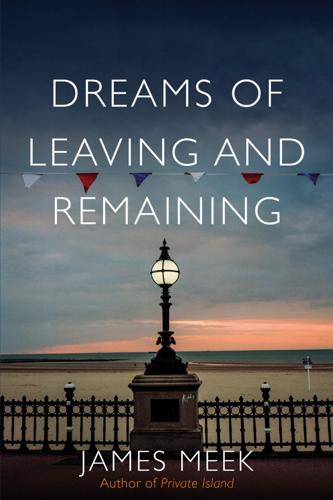
Dreams of Leaving and Remaining
by
James Meek
Published 5 Mar 2019
The chocolate factory is a giant shed, a blank oblong with a series of slightly higher blank oblongs jutting out of it. Most new factories are monochrome but the Mondelez factory is two-tone – grey and another, darker grey. It is digital-neat, as if it hadn’t so much been built as computer-rendered onto the bright white snow. On either side are other industrial sheds, nodes in the global supply chain: a distribution centre for the Portuguese food company Jerónimo Martins, an air filter plant built by the Minneapolis firm Donaldson and a car-seat maker, Johnson Controls, based in Wisconsin. There’s a set of turnstiles in the fence around the factory but nobody stopped me going through. A sign promoted a kind of managerial cult called Integrated Lean 6 Sigma, designed to reduce defects on the production line.

What's Wrong With Economics: A Primer for the Perplexed
by
Robert Skidelsky
Published 3 Mar 2020
These outcomes can serve as indicators of what will happen in the real world without the need for further interrogation. Network analysis studies economic networks, which are ‘webs’ whose nodes represent economic agents (individuals, firms, consumers, organisations, industries, countries, etc.) and whose links depict market interactions. This is useful for studying the rise of networks in the global supply chain. The most important networks today are programmed computer networks. System dynamics, derived from Forrester’s (1971) attempts to model the world ecosystem, take a similar approach but focus on links between aggregate variables rather than agents. These can be economic variables such as GNP or capital stock, but could also refer to physical quantities such as forested areas or oil stocks, which has made this technique particularly popular in ecological economics.
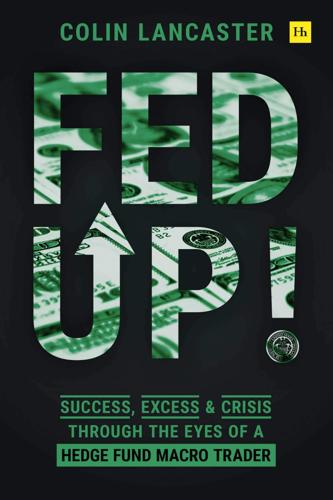
Fed Up!: Success, Excess and Crisis Through the Eyes of a Hedge Fund Macro Trader
by
Colin Lancaster
Published 3 May 2021
I have asked the Rabbi to put together a deck and walk the team through his views for the upcoming year. He loves having the spotlight. He even dressed up for this. He turns to his summary slide. It tells us that the global economy is flat-lining. The Big D’s trade war with China, while now resolved, still has the global supply chain heaving. Data has stabilized in the USA, but globally, it’s fragile; global GDP growth is the lowest since the GFC. Only 10% of the world is in expansion and world trade actually declined last year. That rarely happens. In the USA, industrial production is down, the third straight year-over-year decline.

Death Glitch: How Techno-Solutionism Fails Us in This Life and Beyond
by
Tamara Kneese
Published 14 Aug 2023
Digital remains are necessarily tied to physical objects in the world; media archaeology requires the preservation of consoles and disks in addition to software files.31 Digital objects are persistent while, at the same time, they erode; or, as the media theorist Wendy Hui Kyong Chun puts it, digital media are contingent on an “enduring ephemeral, creating unforeseen degenerative links between humans and machines.”32 In Chun’s estimation, digital information is itself “undead,” having ghostly qualities that she likens to Karl Marx’s commodity fetishism: “if a commodity is, as Marx famously argued, a ‘sensible supersensible thing,’ information would seem to be its complement: a supersensible sensible thing.”33 Digital remains are not ethereal but made of materials that can also suffer breakdown. The attributes that make digital technologies appear ghostly, disembodied, and otherworldly are belied by their material, industrial, and sometimes boring infrastructural qualities.34 Digital remains depend on the global supply chains and human exploitation underlying the success of corporate platforms, including the extraction of minerals necessary for the production of hardware, factories in cities like Shenzhen, and call center workers and content moderators in cities like Manila and Mumbai.35 Digital remains also rely on vast server farms that dot rural landscapes, sapping up endless amounts of energy, and on physical fiber optic cables under the ocean floor.36 Despite the material nature of computer technologies and their practical uses in commerce, offices, schools, and the military, there has long been a sense that they can foster communication with the dead.37 Although Marxist definitions of labor and the valorization of affect are helpful when considering how capitalism extracts profit from digital interactions, data are not just tied to political economic processes but rely on notions of legacy, kinship, posterity, and sentiment.38 “Data” originally referred to things given, perhaps as a gift.
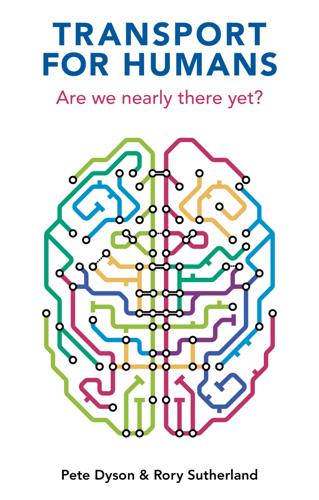
Transport for Humans: Are We Nearly There Yet?
by
Pete Dyson
and
Rory Sutherland
Published 15 Jan 2021
UK business travel has been stagnant for the past ten years according to Department for Transport statistics. But one thing hasn’t changed: across the world, emissions from transport are growing faster than those from any other sector.31 We cannot yet know exactly how all this will affect transport planning. Uncertainty over economic performance and global supply chains is affecting both travel demand and travel supply through disruption to energy, fuel, construction, car manufacture and distribution. Hybrid working might be evenly spread across the week, but if everyone takes advantage of work-from-home Fridays and sticks to the same start and finish times, transport will suffer continued peak-time demand troubles.
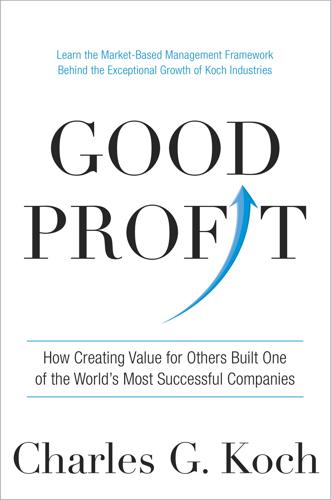
Good Profit: How Creating Value for Others Built One of the World's Most Successful Companies
by
Charles de Ganahl Koch
Published 14 Sep 2015
Both businesses are using digital media and advanced analytic tools—which lower the cost of distributing information and help turn it into knowledge—to create more value for their customers and end users. Another transformative use of this new technology is a focus by all our businesses on the Internet of Things, which greatly increases connectivity—not only within the business and Koch, but across our global supply chains. In GP this includes experiments such as the “washroom of the future.” All our businesses use the Internet to improve the safety and reliability of our manufacturing plants. The ability of a business—any business—to transform itself through information technology requires several elements: Recognition by the business leaders that they, not the company’s internal IT group, own the vision, strategy, and implementation for the transformation.
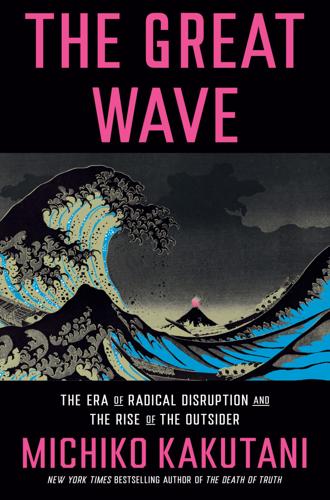
The Great Wave: The Era of Radical Disruption and the Rise of the Outsider
by
Michiko Kakutani
Published 20 Feb 2024
The foreign policy expert Jared Cohen argues that the international balance of power may be determined in the near future by what he calls “geopolitical swing states” like India, Brazil, Germany, France, Saudi Arabia, and Vietnam. Because of natural resources, wealth, location, or their place in global supply chains, he argues, such countries have the “agency to chart their own course” between the United States and China, and may well choose “multi-alignment” on an issue-by-issue basis, which makes them “critical—and sometimes unpredictable—forces in the world’s next stage of globalization.” * * * — It’s difficult to convey just how strange life in the third decade of the third millennium has become: It often feels like a preposterous mash-up of political satire, disaster movie, reality show, and horror film tropes all at once.
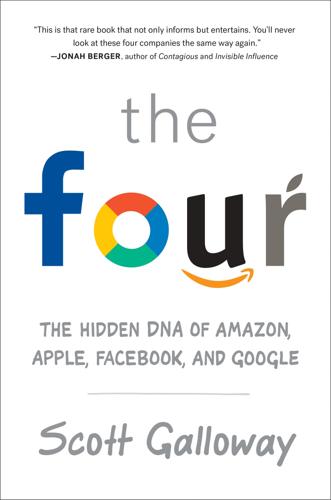
The Four: How Amazon, Apple, Facebook, and Google Divided and Conquered the World
by
Scott Galloway
Published 2 Oct 2017
Iconic brand consistency is achieved by key design elements: glass—a glass pane, a cube, or cylinder as an entry, often a clear glass staircase, patented by Jobs; open space, minimal interiors, no inventory in store (products are brought out to purchase). The 492 stores, dropped into exclusive shopping districts in eighteen countries, draw more than 1 million worshippers every day.33 The Magic Kingdom only drew 20.5 million people total in 2015.34 Apple also runs a global supply chain. The components stream in, from Chinese mines, Japanese studios, and American chip fabs, to contractors’ immense manufacturing plants and settlements in multiple nations (notably, and notoriously, China), and then on to Apple stores, both brick and mortar and online. Meanwhile, the billions in earnings from the sale of these products follow their own circuitous routes back to a network of tax havens, including Ireland.

The Locavore's Dilemma
by
Pierre Desrochers
and
Hiroko Shimizu
Published 29 May 2012
Globally-imported ingenious agricultural heritage systems Glaeser, Edward Global food supply chain history of human body transformations and initiatives for local Globalization critics of of food supply chain Globally-imported ingenious agricultural heritage systems (GIAHS) Gould, David Government food purchasing intervention leaders managed food and food security run reserves Gráda, Cormac Ó Grades (food) Graff, Gordon Grain(table) Battle for Grain ( ) government-purchased producing states reserves Grapes Great grandmother Great Leap Forward Greater Toronto Green cities Green peas, ripening periods Greenbelt Greenhouse gas emissions air freight consumer behavior and production transportation seasonality and storage transportation mode load Gros Michel bananas Gross Domestic Product (GDP) Haiti Han China Hardy, Thomas Harrison, Harry Harte, William Hawaii Hayes, Peter Health Healthy, Hunger-Free Kids Act Height nutrition and Herbal remedies Herbert, Claude-Jacques High-yield agriculture History, of food agriculture global supply chain of government intervention local food initiatives meatpacking Hitier, Henri Hobby gardening Hobson, John Atkinson Hoefner, Ferd Holden, Patrick Homogecene Hongerwinter 1944–1945 Hoover, Herbert Horse Association of America Howe, Frederic Clemson Huber, Peter W. Human body agribusiness and changing evolution of Human intellect Hundred Years War Hunger See also Famine; Food shortage Hunter, William Wilson Hurst, Blake Hybridization Imperfections Imports rice urbanization and India Initiatives, local food economic depression and history of support wartime(photo) Inner cities Innovation Integrated Regional Information Networks Intermediaries Invasive species Invisible hand Irish potato famine Jacks, Graham Vernon Jacobs, Jane Japan famine in World War II and Jefferson, Lorian P.
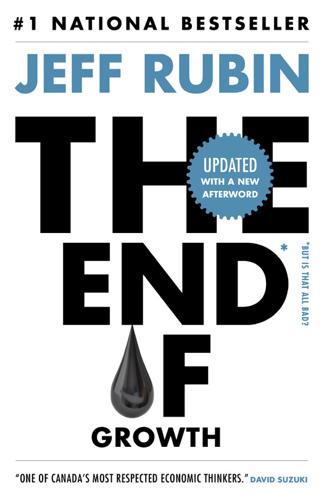
The End of Growth
by
Jeff Rubin
Published 2 Sep 2013
In a world of triple-digit oil prices, distance costs money, pure and simple. Connecting cheap labor in Asia with rich consumers in North America makes all kinds of economic sense when oil is $20 a barrel. But when oil prices escalate, it’s less profitable to ship most goods across the Pacific. Changes in transport costs are radically rerouting global supply chains, bringing many of them much closer to home. Hauling iron ore from Brazil to feed Chinese steel factories and then shipping the finished product back across the Pacific to North America isn’t economically viable when oil prices are trading in the triple-digit range. Instead, we could see iron ore from Labrador loaded on trains and shipped to factories in Rust Belt cities such as Pittsburgh, Cleveland or Hamilton, Ontario.

The Glass Cage: Automation and Us
by
Nicholas Carr
Published 28 Sep 2014
“March of the Machines,” 60 Minutes, CBS, January 13, 2013, cbsnews.com/8301-18560_162-57563618/are-robots-hurting-job-growth/. 26.Bernard Condon and Paul Wiseman, “Recession, Tech Kill Middle-Class Jobs,” AP, January 23, 2013, bigstory.ap.org/article/ap-impact-recession-tech-kill-middle-class-jobs. 27.Paul Wiseman and Bernard Condon, “Will Smart Machines Create a World without Work?,” AP, January 25, 2013, bigstory.ap.org/article/will-smart-machines-create-world-without-work. 28.Michael Spence, “Technology and the Unemployment Challenge,” Project Syndicate, January 15, 2013, project-syndicate.org/commentary/global-supply-chains-on-the-move-by-michael-spence. 29.See Timothy Aeppel, “Man vs. Machine, a Jobless Recovery,” Wall Street Journal, January 17, 2012. 30.Quoted in Thomas B. Edsall, “The Hollowing Out,” Campaign Stops (blog), New York Times, July 8, 2012, campaignstops.blogs.nytimes.com/2012/07/08/the-future-of-joblessness/. 31.See Lawrence V.

The End of Big: How the Internet Makes David the New Goliath
by
Nicco Mele
Published 14 Apr 2013
And even after all those hours knitting, she is constantly sketching new designs or trading e-mail messages with 50 or more customers a day.34 I spoke with Maria Thomas, the former CEO of Etsy. She agrees that the promise of Etsy was to encourage “local living economies,” but she also noted the critical role of the global supply chain for most of the small businesses to be successful. Knitting scarves is possible because the wool might be grown on sheep in Lubbock, Texas, but shipped to China for processing and dye, and then shipped back to New York to be sold in a store.35 But even so, the rise of crafting requires businesses to stay small.
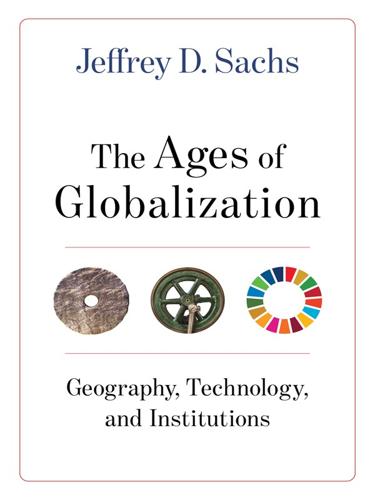
The Ages of Globalization
by
Jeffrey D. Sachs
Published 2 Jun 2020
This was truly a grim and horrific stage of global capitalism. The cruelty that accompanied the development of the modern world economy must not be forgotten, because that cruelty shows up in other ways today; human trafficking is one of the greatest examples, which also continues in the form of bonded labor and child labor as part of global supply chains. Humanity is not done with the horrific abuse of others in pursuit of greed and profit. Feeding Europe’s Factories: Cotton The British and Dutch East India companies may rightly be considered the first corporations of modern capitalism. As profit-driven and greed-based joint-stock companies, they set the tone and behavior for what was to come.
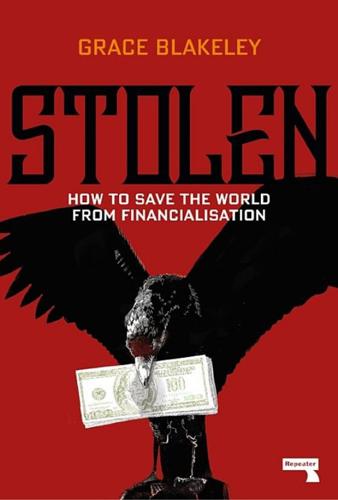
Stolen: How to Save the World From Financialisation
by
Grace Blakeley
Published 9 Sep 2019
But it would take a national crisis for the remnants of the post-war order finally to fall. The Political Consequences of Social Democracy Just as Bretton Woods was collapsing, the social democratic model was starting to show signs of strain.17 Bretton Woods created a global economy, with global corporations, global supply chains, and global competition. Eventually, the system became a victim of its own success. Some companies — notably the US multinationals — thrived, but many others found it harder and harder to compete with the rising industries located in Germany, China, and Japan. UK corporations in particular found themselves struggling to benefit from the new wave of globalisation, partly because sterling was pegged to the dollar at too high a level, making British exports more expensive to international consumers.18 These firms struggled to cope with increasing international competition, and by the end of the 1960s, their profits had been seriously reduced.

The Last Job: The Bad Grandpas and the Hatton Garden Heist
by
Dan Bilefsky
Published 22 Apr 2019
They decided it was better to hide at least part of it and then lie low, or at least as low as was humanly possible, given their somewhat understandable pride in their accomplishment. Tiny and easily concealed, diamonds have long been coveted by thieves seeking to move cash without being traced. Sew a ten-carat £1 million ($1.5 million) into a pair of underwear, fly out of the country, and the gem could quickly vanish into a global supply chain of millions of diamonds that extends from Hatton Garden to New York and Tel Aviv. The gang’s stash contained millions of dollars in both uncut and polished diamonds, leaving them with a few options. The uncut diamonds could be smuggled out of Britain and sent to cutting centers in Gujarat, Tel Aviv, or New York, where characteristics such as weight and size could be transformed out of all recognition.
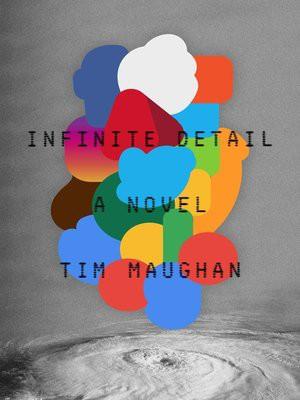
Infinite Detail
by
Tim Maughan
Published 1 Apr 2019
Which had been the root of huge frustration and anxiety for Simon; Rush had seen it eating him up, the usually unfazed and endlessly enthusiastic figure reduced to pacing the bridge during the day, moping in his office at night. It was, of course, the main reason for this whole elaborate mission, for the last four months they’d spent risking their lives at sea: to take a container ship halfway around the world and back up the global supply chain. It wasn’t the first time Simon had done it—he’d taken the Dymaxion up the chain at least once a year, to Rush’s knowledge—but it was the first time he’d done it since the crash. The first time he’d done it since global capitalism had collapsed, since the vast data networks that managed the ships and ports had vanished, and since the algorithms that decided what you wanted to buy and then brought it halfway around the globe from a Chinese sweatshop to the shelves of your local store had burned in the data fires along with the rest of the digital age.

Artificial Unintelligence: How Computers Misunderstand the World
by
Meredith Broussard
Published 19 Apr 2018
She tinkered with the robot for a little bit, looking at the directions and fiddling with the wiring and turning the switch on and off a few times. “It’s not working,” she said finally. “Why not?” I asked. She could have just told me that the motor was broken, but my mother believed in complete explanations. She told me that the motor was broken, and then she also explained global supply chains and assembly lines and reminded me that I knew how factories worked because I liked to watch the videos on Sesame Street featuring huge industrial machines making packages of crayons. “Things can go wrong when you make things,” she explained. “Something went wrong when they made this motor, and it ended up in your kit anyway, and now we’re going to get one that works.”

Big Business: A Love Letter to an American Anti-Hero
by
Tyler Cowen
Published 8 Apr 2019
They have integrated tech into their organizations at a world-beating pace, making them more competitive and thus producing better wages for their employees. Economists sometimes speak of CEOs as arbitrary beneficiaries of a variable called “skill-biased technical change.” That phrase refers to new technologies that boost the return to skilled labor. For instance, email and smartphones allow for easier management of global supply chains at a distance, and that in turn increases the influence and eventually the compensation of many of the best managers in multinational enterprises. But skill-biased technical change does not fall from the sky; rather, it comes about because it was the vision, deeply held and tenaciously enacted, of a number of CEOs.

Ask Your Developer: How to Harness the Power of Software Developers and Win in the 21st Century
by
Jeff Lawson
Published 12 Jan 2021
They buy steel from a steel company, leather from a leather company, seats from a seat company, speedometers from a speedometer company, and so on. All those Camrys and F-150 pickup trucks zipping past you on the highway contain parts provided by hundreds, maybe thousands, of major suppliers. Those suppliers in turn draw from hundreds or even thousands of smaller part makers along the global supply chain. As industries mature, so do their supply chains, allowing many companies to specialize in parts of the process, making the entire industry more efficient and productive. Until recently, the software industry had no such thing. Most software companies—think of companies like Microsoft, Oracle, or SAP—pretty much wrote all of their own software end to end.

Cloudmoney: Cash, Cards, Crypto, and the War for Our Wallets
by
Brett Scott
Published 4 Jul 2022
It is not interested in working with Alibaba, Tencent, Huawei or Baidu. On to the final point. In Chapter 1 I sketched out how Wall Street capitalises big companies who in turn send money rippling through the international payments system like neural impulses. When those international companies are trying to reach out into global supply chains and markets, they come up against a zone of slower conductivity in those pockets of informality where cash is used. Thus, in order to do business in Nairobi, Uber has to allow its Kenyan drivers to accept cash, but the Kenyan cash system jars with Uber’s planetary ambitions. If they could flick a switch to replace it with US-controlled Mastercard transfers, they would.

Road to Nowhere: What Silicon Valley Gets Wrong About the Future of Transportation
by
Paris Marx
Published 4 Jul 2022
“From social media to the global economy to supply chains,” Maughan explained, “our lives rest precariously on systems that have become so complex, and we have yielded so much of it to technologies and autonomous actors that no one totally comprehends it all.”18 These systems are designed to speed up transactions and interactions in service of efficiency, but, in the process, we have given up a lot of democratic power over them, even as we have failed to equip those systems with “an ability to make ethical decisions and moral judgments.”19 The stock market, where automation has increased both the speed and quantity of trades, is an example of this, but the best one is the system of logistics and global supply chains that has been built out over the past fifty years. After World War II, the increasing use of standardized containers began to transform the shipping industry, reducing the cost and time of shipping, as well as the power of dock-workers. But the technology did not transform everything on its own.
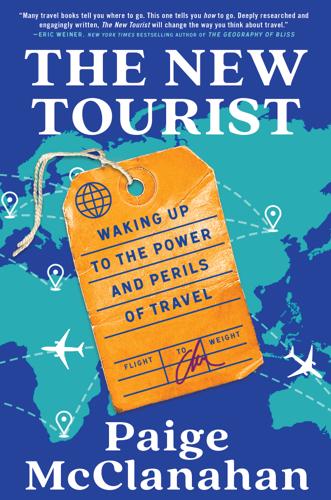
The New Tourist: Waking Up to the Power and Perils of Travel
by
Paige McClanahan
Published 17 Jun 2024
In Globalization 3.0 you are your own ticket agent.”1 Friedman used the anecdote, among many others, to illustrate the power and reach of the forces that he saw “flattening the world” at the dawn of the twenty-first century: the end of the Cold War and the domination of free-market capitalism; the creation of a single global market; the spread of internet browsing, workflow software, open-sourcing, outsourcing, and offshoring; the rise of global supply-chaining and logistics management; and the power of services offered by Google, Skype, and—yes—Napster (remember: this was twenty years ago) to transform people’s everyday lives. The analog-to-digital jump and nascent boom of global tourism was both a driver and a consequence of the “flattening” phenomenon of globalization, broadly speaking, that Friedman described in his book, though at that point the real impacts of the shift were only starting to make themselves apparent.
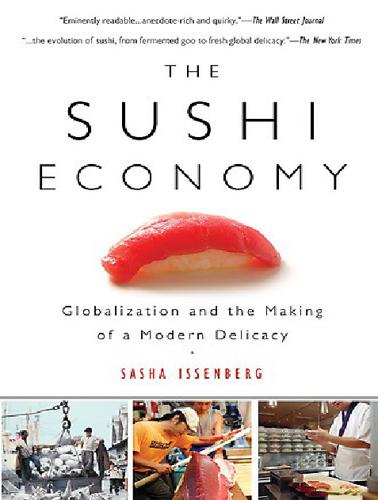
The Sushi Economy: Globalization and the Making of a Modern Delicacy
by
Sasha Issenberg
Published 1 Jan 2007
At each stage, players get more information about the product they own, all while diminishing its life span through further exposure to air—a delicate juggle of swapping knowledge of its worth for the ability to realize some of that value. With sushi, unlike technology or clothing or most things moved along global supply chains, the product can never sell itself. Freshness demands more. Due to nature’s fiat, every piece is different and bears no trail of ownership; by the time the actual quality of a cut of fish is known, it is sitting on somebody’s tongue, usually with a touch of soy sauce—too late for anyone to reassess its price.
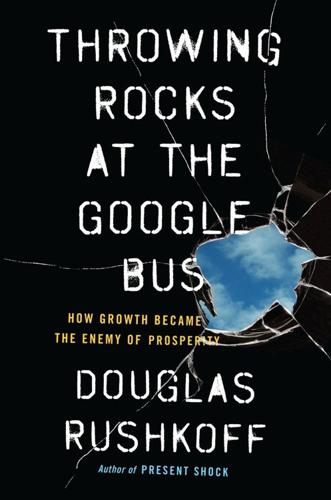
Throwing Rocks at the Google Bus: How Growth Became the Enemy of Prosperity
by
Douglas Rushkoff
Published 1 Mar 2016
If there’s really not enough work to go around and there are so many extra people to employ, we can always farm in shifts. Those with a penchant for global conquest can still work overtime and become legendary by solving the real problems of our society: topsoil depletion, global warming, slave populations, and energy production, to name just a few. They can track the entire global supply chain of the products everyone is using and root out the parts that place an unfair labor burden upon certain people. (A low-cost smartphone that requires workers to dig for rare metals in dangerous mines is not a low-cost smartphone.) Some of these problems will be mitigated simply by taking our emphasis off this relentless quest to employ more people the old way.
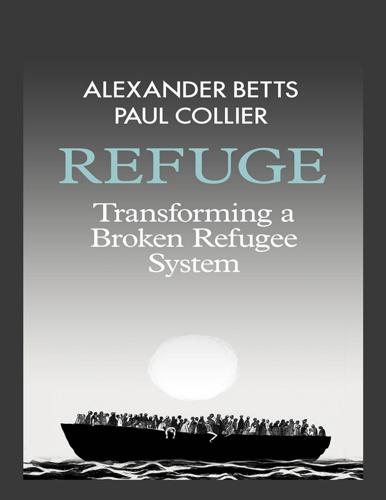
Refuge: Transforming a Broken Refugee System
by
Alexander Betts
and
Paul Collier
Published 29 Mar 2017
In November 2015 we ourselves went public with the idea, with an article aimed at both the public-policy and business communities in the influential American policy journal Foreign Affairs. In January 2016 at Davos, the forum for global business, Queen Rania acclimatized CEOs to the idea that corporate social responsibility to refugees did not mean diverting some profits into sending blankets, it meant putting their core skills to use by integrating refugees into global supply chains. In the context of emerging business interest in solutions to the refugee crisis, a range of manufacturing company CEOs began to take notice. The formal launch of the pilot project came as part of the London pledging conference on Syrian refugees on 4 February 2016. There, both David Cameron and King Abdullah spoke about the pilot, as did CEOs, including, for example, Andy Clarke, CEO of Asda, the UK subsidiary of Walmart.
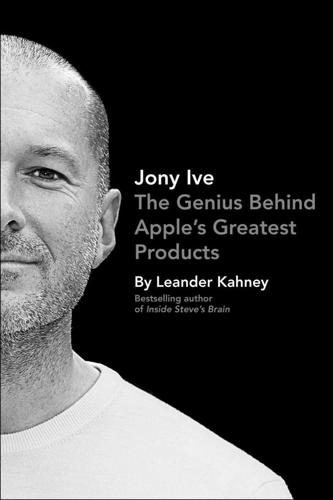
Jony Ive: The Genius Behind Apple's Greatest Products
by
Leander Kahney
Published 14 Nov 2013
Explaining that Jony had no interest in the business side of Apple—just as he had hated the business side at Tangerine—the designer concluded, “He just wants to focus on ID.” “All I’ve ever wanted to do is design and make; it’s what I love doing,” Jony told one interviewer. “It’s great if you can find what you love to do. Finding it is one thing but then to be able to practise that and be preoccupied with that is another.”7 As the master of Apple’s global supply chain, Tim Cook was, in fact, much the logical successor. In just thirteen years, Cook had constructed a complex apparatus that allowed the company to build superb gadgets—albeit of Jony’s design—at unparalleled speed, volume, efficiency and profitability. Cook might not possess Jobs’s charisma, but he was a logistics titan who had been effectively running the company ever since Jobs had gone on his most recent medical leave.
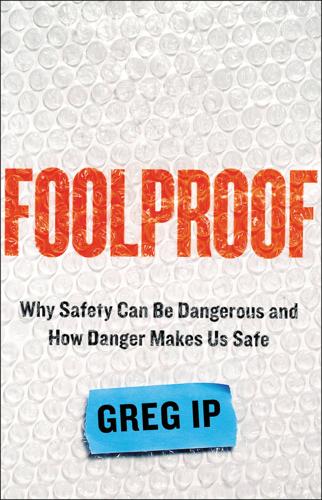
Foolproof: Why Safety Can Be Dangerous and How Danger Makes Us Safe
by
Greg Ip
Published 12 Oct 2015
Science is relatively unequivocal that climate change should intensify hurricanes, worsen droughts and fires, and increase periods of intense rainfall. And as global temperatures have risen, so has the economic toll of record-breaking environmental catastrophes, from Katrina and Sandy in America to devastating wildfires in Australia in 2009 and the floods that crippled Thailand and disrupted global supply chains in the fall of 2011. But climate change could not explain Sandy’s destructive toll. After all, it wasn’t even a hurricane by the time it came ashore, having been downgraded to a “post-tropical cyclone.” The principal reason for Sandy’s devastating impact is that millions of productive, affluent people live and work in a place that is inherently dangerous.

The Post-American World: Release 2.0
by
Fareed Zakaria
Published 1 Jan 2008
It is legendary for its efficient—some would say ruthless—efforts to get the lowest price possible for its customers. To that end, it has adeptly used technology, managerial innovation, and, perhaps most significantly, low-cost manufacturers. Walmart imports about $27 billion worth of goods from China each year. The vast majority of its foreign suppliers are there. Walmart’s global supply chain is really a China supply chain. China has also pursued a distinctly open trade and investment policy. For this among many reasons, it is not the new Japan. Beijing has not adopted the Japanese (or South Korean) path of development, which was an export-led strategy that kept the domestic market and society closed.
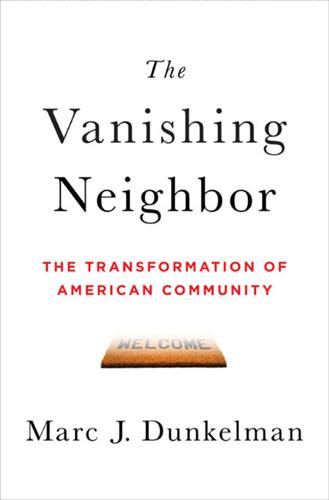
The Vanishing Neighbor: The Transformation of American Community
by
Marc J. Dunkelman
Published 3 Aug 2014
—Cassandra Bissell, my date to the 1996 Amherst Central High School prom, December 20, 2013, as posted on Facebook It is one of the great unremarked ironies that Bowling Alone was released within months of another best seller, Thomas Friedman’s The Lexus and the Olive Tree.1 Now considered a quintessential exploration of “globalization,” the New York Times columnist’s turn-of-the-twenty-first-century exposé shined a spotlight on how new information technology, global supply chains, and huge multinational corporations have integrated Americans into a new post-Cold War economic system. Though no one has seemed to notice, Friedman’s observation cut right at the heart of Putnam’s central argument. If Bowling Alone was arguing that Americans were becoming more isolated, The Lexus and the Olive Tree contended that we were actually becoming more globally connected.

Leading From the Emerging Future: From Ego-System to Eco-System Economies
by
Otto Scharmer
and
Katrin Kaufer
Published 14 Apr 2013
The ratio of work to nature is much higher than in the case of the apple that we harvest in our backyard. What gets lost in translation throughout this journey to a global division of labor is meaning. Meaning emerges from seeing one’s own connection and contribution to the whole. But being underpaid in Asia as I assemble a product for the global supply chain of, say, the iPad—what meaning and purpose can I derive from that? Very little. Today’s challenge of reinventing labor does not concern only the issues of jobs and living wages. It also concerns the issue of meaning, that is, of relinking work (jobs) with Work (passion and purpose). THE JOURNEY FROM 0.0 TO 3.0 As depicted in table 3, the role of work and labor has changed profoundly throughout history.

Black Code: Inside the Battle for Cyberspace
by
Ronald J. Deibert
Published 13 May 2013
But ingenuity in cyberspace is as bountiful and unpredictable as the individuals who go online, and for the newly connected digital natives of the global South and East operating an email scam or writing code for botnets, viruses, and malware represents an opportunity for economic advancement, a relatively safe route around structural economic inequality and mass unemployment, an avenue for tapping into global supply chains and breaking out of local poverty and political inequality. Sitting in front of a glowing monitor thousands of miles from their victims, essentially immune from the law in St. Petersburg or Rio de Janeiro, scam-ming online must feel more like a virtual crime, with very tangible monetary rewards.

This Is Your Country on Drugs: The Secret History of Getting High in America
by
Ryan Grim
Published 7 Jul 2009
Stop growing so much coca, and we’ ll stop snorting it. But both sides miss—or ignore—a crucial fact: Americans’ involvement in the international drug market extends well beyond our appetite to get high. For decades and for a variety of reasons, the United States has been an important link in the global supply chain, protecting and often funding major drug-running organizations. The government has denied it for just as long. Anyone who believes it is labeled a conspiracy nut. And the American media, Webb discovered the hard way, can tie itself in knots trying to avoid discussing it. In the forties, Americans may well have fought a “good war,” but that doesn’t mean we waged it like angels.

There Is No Planet B: A Handbook for the Make or Break Years
by
Mike Berners-Lee
Published 27 Feb 2019
But it is a wish list of the stuff that I think every one of us needs to cultivate as best we can. (1) Big picture perspective. Since the problems we face are now global, our thinking needs to be global. In this book we have seen time and again how almost everything we buy and do requires a global supply chain and sends ripples around the world. We need to tune into this even though we rarely see any of it with our own eyes. We have also seen how the global system dynamics often ensure that small scale positive actions in one place are undone elsewhere unless the global perspective is properly understood. (2) Global empathy.
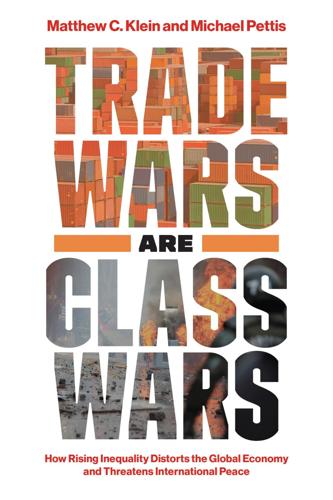
Trade Wars Are Class Wars: How Rising Inequality Distorts the Global Economy and Threatens International Peace
by
Matthew C. Klein
Published 18 May 2020
action=n&pn=3800; and Statistics Canada, “Canada’s Merchandise Trade with the U.S. by State,” June 19, 2017, https://www.statcan.gc.ca/pub/13-605-x/2017001/article/14841-eng.htm. 21. Based on manufacturing value added by country according to the World Bank, https://data.worldbank.org/indicator/NV.IND.MANF.CD; Richard Baldwin, “Global Supply Chains: Why They Emerged, Why They Matter, and Where They Are Going,” in Global Value Chains in a Changing World, ed. Deborah K. Elms and Patrick Low (Washington, D.C.: Brookings Institution Press for the World Trade Organization, 2013); Robert C. Johnson and Guillermo Noguera, “Accounting for Intermediates: Production Sharing and Trade in Value Added,” Journal of International Economics 86, no. 2 (May 2011): 224–36; Marcel P.

Beginners: The Joy and Transformative Power of Lifelong Learning
by
Tom Vanderbilt
Published 5 Jan 2021
-Tropez—and an unfiltered, rather dour charm. One night at dinner, my wife received a compliment on the shirt she was wearing. She nonchalantly declared, “It’s from H&M.” Patricia suddenly slammed her hand on the table, startling everyone. “I am boycotting them!” she shouted. It had something to do with their global supply chains. But it was only one of a series of boycotts she seemed to be undertaking, and for sport we tried guessing which companies had or hadn’t escaped her withering attention. When we pulled up to the dock at one oceanfront seafood spot for lunch, she noticed a cluster of bleached shells conspicuously close to the restaurant.

Green Swans: The Coming Boom in Regenerative Capitalism
by
John Elkington
Published 6 Apr 2020
Many such terms bubble up on the edges of such gatherings. Many wither on the vine, but sometimes events and wider trends push once-marginal concepts into the mainstream. That certainly happened with resilience, as a growing number of natural disasters hit major cities and battered and tangled global supply chains. One moment when this new normal forcibly impressed itself on businesspeople came when manufacturers of products like car parts and computer hard drives were hit by massive floods in Thailand during 2011.30 Billions of dollars of damage resulted, putting some 650,000 people at least temporarily out of work.
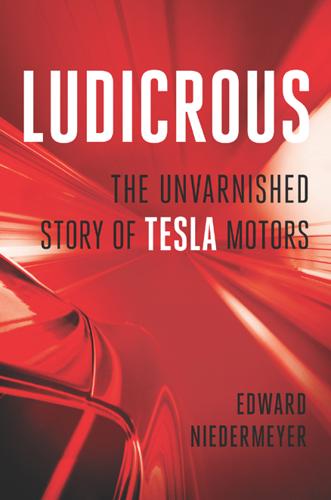
Ludicrous: The Unvarnished Story of Tesla Motors
by
Edward Niedermeyer
Published 14 Sep 2019
Today, every major automaker has embraced the fundamentals of the Toyota Production System—and so have businesses in every kind of manufacturing and beyond. Part of this success stems from the fact that TPS is values based rather than prescriptive, making it easily adaptable to almost any business undertaking. But it remains most effective—indeed, necessary—in the massive and complex business of making cars, where every step in global supply chains is an opportunity for defects and inefficiencies to work into the system. One of the best known and most fundamental principles of lean manufacturing culture is kaizen, or continuous improvement. This goes in hand with another core value, long-term perspective. Both of these principles are part of Toyota’s managerial approach, called the Toyota Way.
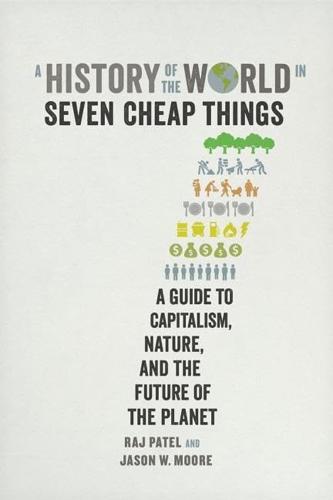
A History of the World in Seven Cheap Things: A Guide to Capitalism, Nature, and the Future of the Planet
by
Raj Patel
and
Jason W. Moore
Published 16 Oct 2017
One result is a meat-production system that can turn a fertile egg and a nine-pound (four-kilogram) bag of feed into a five-pound (two-kilogram) chicken in five weeks.71 Turkey production times almost halved between 1970 and 2000, down to twenty weeks from egg to thirty-five-pound (sixteen-kilogram) bird.72 Other animals have seen similar advances from a combination of breeding, concentrated feeding operations, and global supply chains. Half of the world’s pork is eaten in China, and its feed import sources are a planetary affair. As are the consequences: 14.5 percent of all anthropogenic carbon dioxide (CO2) emissions are from livestock production.73 One pound (about half a kilogram) of beef requires 1,799 gallons (6,810 liters) of water and seven pounds (three kilograms) of feed to produce.74 The environmental consequences of meat production are, of course, external to the profit calculus of the industrial food system.
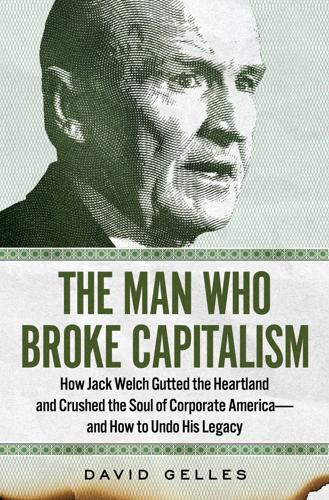
The Man Who Broke Capitalism: How Jack Welch Gutted the Heartland and Crushed the Soul of Corporate America—and How to Undo His Legacy
by
David Gelles
Published 30 May 2022
The funeral, held just as the Covid-19 pandemic was taking hold in the United States, was the last time such a collection of business luminaries would gather for more than a year. Within a matter of weeks, much of the global economy ground to a halt. Travel all but stopped. Restaurants were shuttered. Offices emptied out. Factories closed. Global supply chains sputtered. The stock market plunged and the mass layoffs began. Unemployment spiked to 15 percent in the United States. The ripple effects were endless. The pandemic provided a test case for companies that had boasted about stakeholder values and shared sacrifice, giving them an opportunity to recapture the spirit of the Golden Age of Capitalism and make good on the recently updated commitments of the Business Roundtable.

How to Prevent the Next Pandemic
by
Bill Gates
Published 2 May 2022
In the United States, the federal government is in the best position to drive large-scale development and production of vaccines, treatments, and personal protective equipment. But management of testing and hospital resources is inherently more local. And what about something like vaccine distribution? Although there will always be national and even global supply chains, the last mile for distribution is inherently local in nature. Japan did a good job of clarifying responsibilities at different levels and is a good model for others to study. Each government’s plan needs to account for the distribution of all the necessary tools, including masks, tests, treatments, and vaccines.
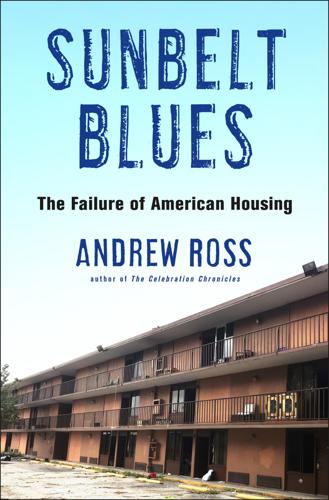
Sunbelt Blues: The Failure of American Housing
by
Andrew Ross
Published 25 Oct 2021
Subsequent exposés by Students and Scholars Against Corporate Misconduct (SACOM), China Labor Watch, and the Institute for Global Labor Rights focused on facilities in mainland China producing Disney garments, toys, and children’s books. See SACOM, Looking for Mickey Mouse’s Conscience—A Survey of the Working Conditions of Disney’s Supplier Factories in China (Hong Kong: SACOM, 2005); and SACOM and Stop Toying Around, Exploitation of Toy Factory Workers at the Bottom of the Global Supply Chain (Hong Kong: SACOM, 2009). In almost every case of reported labor abuse, the company has denied responsibility, claiming that the problems lay with subcontractors. 43. But this arrangement typically gave the employer far too much control over employees’ lives (as would have been the case in the ur-EPCOT company town).

Chokepoints: American Power in the Age of Economic Warfare
by
Edward Fishman
Published 25 Feb 2025
In his 1992 manifesto The Twilight of Sovereignty, published a year after the collapse of the Soviet Union, Wriston predicted that national governments would grow obsolete as the twin forces of finance and information technology took command of the levers of history. Multinational corporations would stitch together global supply chains, further locking in the dominance of industry over politics. “As these alliances grow and strengthen over time,” Wriston argued, “it will become harder and harder for politicians to unscramble the emerging global economy and reassert their declining power to regulate national life.” Wriston was describing a process and system that we now call “globalization.”
…
That unseen force—human self-interest—ensured a more efficient allocation of resources than any central planner could devise. Today’s global economy relies on another unseen force, one that is far less theoretical: the invisible infrastructure that enables cross-border finance, which in turn underlies everything from commodity sales and global supply chains to international trade and foreign investment. Just about every major transaction in the global economy relies on this infrastructure, no matter which countries or companies are involved. If you do any business outside your home country, you use this infrastructure, whether you’re aware of it or not.
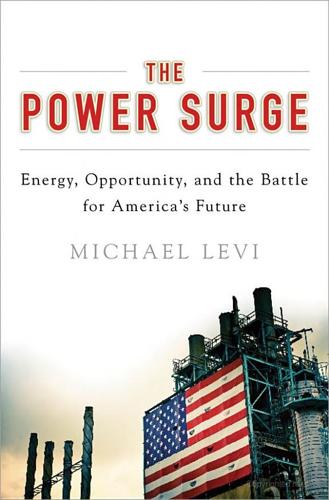
The Power Surge: Energy, Opportunity, and the Battle for America's Future
by
Michael Levi
Published 28 Apr 2013
Daniel J. Cordier, “Mineral Commodity Summaries, U.S. Geological Survey (USGS),” January 2012, minerals.usgs.gov/minerals/pubs/commodity/rare_earths/mcs-2012-raree.pdf. 83. For information regarding Canada, see Cordier, “Mineral Commodity Summaries.” 84. Marc Humphries, “Rare Earth Elements: The Global Supply Chain,” Washington, D.C., Congressional Research Service, June 8, 2012. 85. Michael Allan McCrae, “Substitution Hurts Rare Earth Demand,” October 2, 2011, http://www.mining.com/substition-hurts-rare-earth-demand/. 86. Lee Levkowitz and Nathan Beauchamp-Mustafaga, “China’s Rare Earths Industry and Its Role in the International Market,” Washington, D.C., U.S.

Future Files: A Brief History of the Next 50 Years
by
Richard Watson
Published 1 Jan 2008
Students are busy pushing organic, seasonal, slow food and food-miles agendas to catering giants such as Sodexho and Armamark Corporation. However, while these students are full of idealism for eco-eating, they (and we) are finding out the hard way the practicalities of global economics. Sourcing local ingredients from a multitude of small suppliers is time-consuming and expensive compared to hiring a single company with a global supply chain. But, like they say, principles aren’t principles until they cost time and money. 194 FUTURE FILES Buying an organic tomato in a supermarket is all very well, but if the tomato has been grown using child labor in Zimbabwe and then flown from Harare to London by a company owned by a corrupt politician it’s not ethically produced, is it?
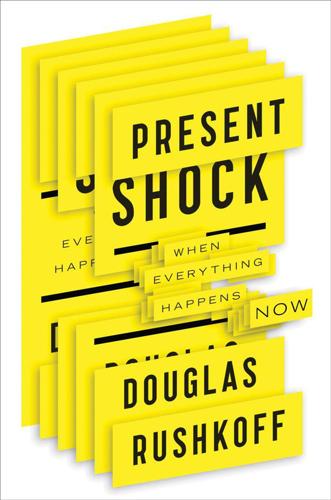
Present Shock: When Everything Happens Now
by
Douglas Rushkoff
Published 21 Mar 2013
Their business is about storing value, wagering on the future, and then using contracts to leverage present expectations against future realities. They may make a lot of money without creating any tangible value, but they do help create liquidity in markets that need it and force a bit of planning or austerity when something is going to be in short supply. However, new technologies and global supply chains are turning formerly seasonal commodities into year-round products. And consumers’ decreasing awareness of seasons is changing what we expect to find at our local market and when. This longer now of both supply and demand cycles is doing to many commodities traders what twenty-four-hour cable did to the evening news: in a world of constant flow, the ability to compress time becomes superfluous.
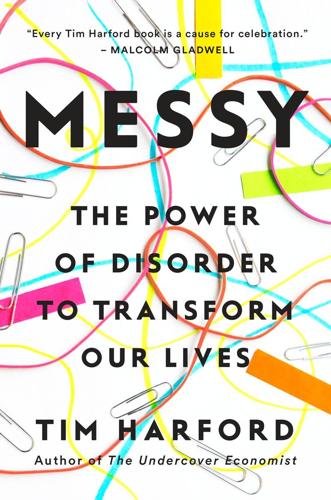
Messy: The Power of Disorder to Transform Our Lives
by
Tim Harford
Published 3 Oct 2016
And in the summer of 2015, Amazon discovered that it was selling a magazine produced by and promoting the murderous group Daesh, better known to Westerners as ISIS.37 Embarrassing episodes are an almost unavoidable by-product of the messy way in which Amazon lets third parties hawk their goods on the Amazon website. As the designer Tim Maly comments, “Amazon isn’t a store, not really. Not in any sense that we can regularly think about stores. It’s a strange pulsing network of potential goods, global supply chains, and alien associative algorithms with the skin of a store stretched over it, so we don’t lose our minds.”38 Amazon’s experiments with third-party sellers began with Amazon auctions—“That didn’t work out very well,” admits Bezos39—and then Z-shops, and finally Marketplace. Marketplace drove Amazon’s own category managers crazy because they found themselves undercut on their own website by third-party sellers; meanwhile it leads to the never-ending risk that a third-party seller will do something embarrassing—such as sell pro-rape T-shirts—on the Amazon site, right beneath the Amazon logo.
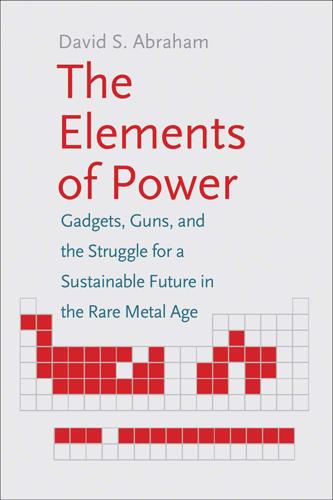
The Elements of Power: Gadgets, Guns, and the Struggle for a Sustainable Future in the Rare Metal Age
by
David S. Abraham
Published 27 Oct 2015
Our high-tech, green society is built on a wobbly foundation. Many have written about the economic and social effects of our international supply lines. Articles on abuse and mistreatment of workers in sweatshops and factories now abound in the press. Business journals examine which countries profit from the globalized supply chain of our electronic gadgets. Even coverage of the world’s electronic waste, burned in Africa and Asia, has now entered the global discussion. This book builds on those reports by examining the supply chain of the hidden rare metals that make modern life possible. These metals permeate our lives, allowing buildings to soar and our televisions to show vibrant colors.
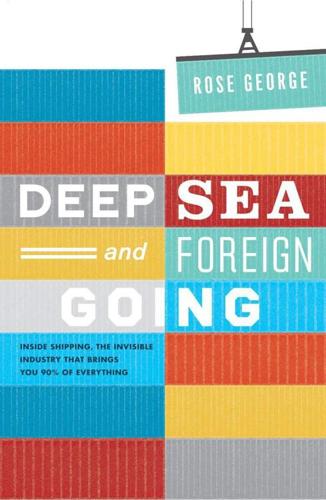
Deep Sea and Foreign Going
by
Rose George
Published 4 Sep 2013
While the box is sailing safely onwards, updates on its progress are electronically transmitted to the United States. If further doubt remains about the level of risk it poses, upon arrival the container is screened with more non-intrusive inspection equipment and detained or set free to furnish an American home or fuel an American car. It is a beautiful vision of a safer global supply chain. For now, it is still only a vision. According to the Implementing Recommendations of the 9/11 Commission Act, enforced in 2007, a system to scan 100 per cent of all US-bound cargo had to be in place by July 2012. Six foreign ports signed up to the 100 per cent requirement, and by February 2012, five had dropped out.
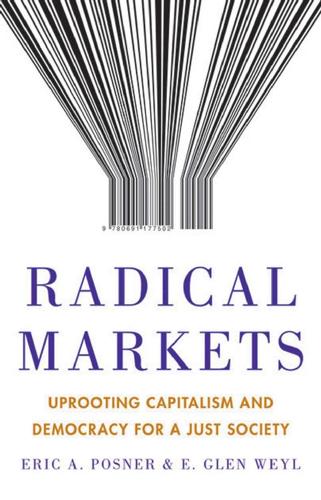
Radical Markets: Uprooting Capitalism and Democracy for a Just Society
by
Eric Posner
and
E. Weyl
Published 14 May 2018
Governments try to step into the shoes of the village gossip, but the regulations and rulings their bureaucrats and judges hand down are never as responsive to local conditions as community members are. Despite these advantages, moral economies break down as the scope and scale of trade expand. We benefit from mass production and global supply chains because fixed costs of production are spread over millions of people and we can draw on diverse skills and inputs from around the world, resulting in delightful products at very low prices. But if millions of people worldwide consume a product, it is impractical for them to coordinate a boycott—except in unusual cases—if the product is hazardous or of low quality.
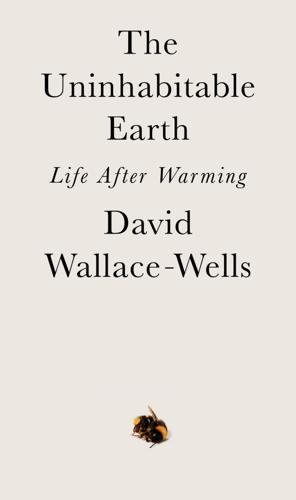
The Uninhabitable Earth: Life After Warming
by
David Wallace-Wells
Published 19 Feb 2019
It’s just the lowest-hanging fruit: “smaller than the challenge of electrifying almost everything that uses power,” Steffen says, by which he means anything that runs on much dirtier gas engines. That task, he continues, is smaller than the challenge of reducing energy demand, which is smaller than the challenge of reinventing how goods and services are provided—given that global supply chains are built with dirty infrastructure and labor markets everywhere are still powered by dirty energy. There is also the need to get to zero emissions from all other sources—deforestation, agriculture, livestock, landfills. And the need to protect all human systems from the coming onslaught of natural disasters and extreme weather.
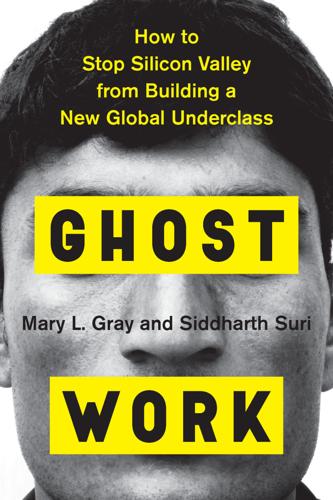
Ghost Work: How to Stop Silicon Valley From Building a New Global Underclass
by
Mary L. Gray
and
Siddharth Suri
Published 6 May 2019
By doing so, they shed the obligations, costs, and worker safety nets that accompany traditional employment classifications. Nation-states like India sweetened the deal for conglomerates with state-funded expansion of global satellite systems and tax-free IT industrial parks. These new links in the global supply chain hired and fired locals at will to process everything from airline schedules and insurance audits to full-time employees’ paychecks. India’s economic liberalization, in 1991, included the development of the Software Technology Parks of India (STPI) in every major city in the country.38 Finance minister Manmohan Singh, a Cambridge- and Oxford-trained economist who would later be prime minister, argued that India’s socialist economy, long propped up by its trading partner the Soviet Union, would need to liberalize and to deregulate its markets to survive the fall of the Iron Curtain.

Reimagining Capitalism in a World on Fire
by
Rebecca Henderson
Published 27 Apr 2020
One study, for example, analyzed the effectiveness of private sector regulation in the apparel and electronics industries. It drew on five years of research, more than 700 interviews, visits to 120 factories, and extensive quantitative data.57 The author concluded that while there was much that could be done, private sector compliance programs were unlikely to solve the full set of labor problems in the global supply chain. In his words: After more than a decade of concerted efforts by global brands and labor rights NGOs alike, private compliance programs appear largely unable to deliver on their promise of sustained improvements in labor standards.… Compliance efforts have delivered some improvements in working conditions… (but) these improvements seem to have hit a ceiling: basic improvements have been achieved in some areas (e.g.: health and safety) but not in others (e.g. freedom of association, excessive working hours).
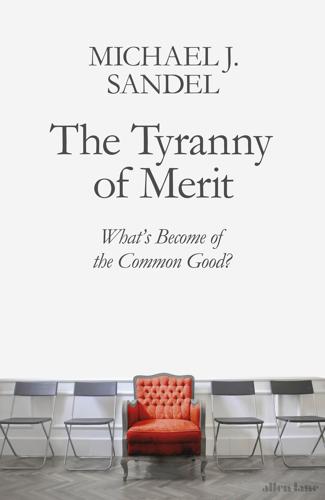
The Tyranny of Merit: What’s Become of the Common Good?
by
Michael J. Sandel
Published 9 Sep 2020
This requires a sense of community sufficiently robust to enable citizens to say, and to believe, that “we are all in this together”—not as a ritual incantation in times of crisis, but as a plausible description of our everyday lives. Over the past four decades, market-driven globalization and the meritocratic conception of success, taken together, have unraveled these moral ties. Global supply chains, capital flows, and the cosmopolitan identities they fostered made us less reliant on our fellow citizens, less grateful for the work they do, and less open to the claims of solidarity. Meritocratic sorting taught us that our success is our own doing, and so eroded our sense of indebtedness.
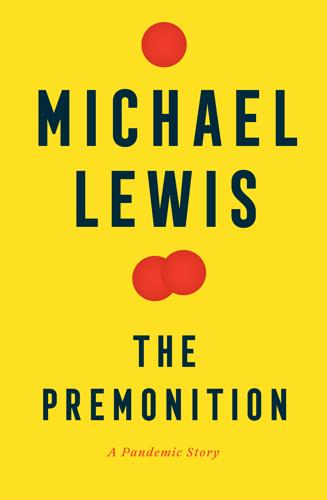
The Premonition: A Pandemic Story
by
Michael Lewis
Published 3 May 2021
The Panther would remain in hibernation right through the first months of the pandemic as the company that made it scrambled to make the materials required to run it. A weird black market would arise in the stuff you needed to wake the Panther up: Joe had a photo of a guy selling Panther equipment out of the back of his car. “Here is the frightening aspect of the global supply chain,” said Joe. “When there is a surge in demand, inventory goes to zero. Just-in-time manufacturing. Great concept! Horrible in a pandemic.” Microbiology labs across America all had the same frustration: fancy razors with no razor blades. Joe knew enough about the sample-to-answer testing machines to know they’d be a constraint.

The Stack: On Software and Sovereignty
by
Benjamin H. Bratton
Published 19 Feb 2016
This “thing” is ultimately indistinguishable from (if not reducible to) the traces that it produces about itself and its various relations with the world that brought it into being.16 The SPIME is then a kind of meta-diagram that precedes the object's manufacture, couches its real physical life in the world, and outlasts its recycling; it is the “thing” defined as an artificial temporal instance of digital-physical relations from beginning to end. The politics of the SPIME motivates interest in making global supply chains deeply transparent, and in principle more accountable and sustainable. The hope is that if any interested User can “read” the complete biography of a thing, measure all of the conditions of its appearance, use, and disappearance now captured as extensible metadata, then the politics of its chemical and mineral origins (as discussed in Earth chapter) or factory labor conditions, or nutritional authenticity, or post-use death cycle might become more legible currencies of everyday material culture.
…
The hope is that if any interested User can “read” the complete biography of a thing, measure all of the conditions of its appearance, use, and disappearance now captured as extensible metadata, then the politics of its chemical and mineral origins (as discussed in Earth chapter) or factory labor conditions, or nutritional authenticity, or post-use death cycle might become more legible currencies of everyday material culture. From other highly controlled perspectives, such transparencies are common in global supply chains but are guarded proprietary sources of competitive information, not public platforms (see the discussion in the Cloud chapter on Amazon and Walmart). But as object fashioning also moves from far-flung extraction-design-factory-distribution chains to scenarios associated with networked 3D printing, then the public constitution of the thing as a traceable data shell is perhaps both more apparent and more salient for end Users.

Cheap: The High Cost of Discount Culture
by
Ellen Ruppel Shell
Published 2 Jul 2009
-China Chamber of Commerce, summed matters up with some reluctance “As long as consumers are looking for the lowest possible costs,” he said, “[regulations are] not going to have a long-term impact.” ROUGHLY 25 PERCENT of the global workforce is now Chinese. Given such enormous firepower, China inevitably sets the norm for wages and working standards in the global supply chain. American corporate interests have chipped away at those standards and wages in order to maximize profits and influence, and to serve their shareholders. The chronic disregard for workers’ rights in China’s foreign-invested private sector threatens wages and working conditions around the globe, including the hard-won gains of American workers.
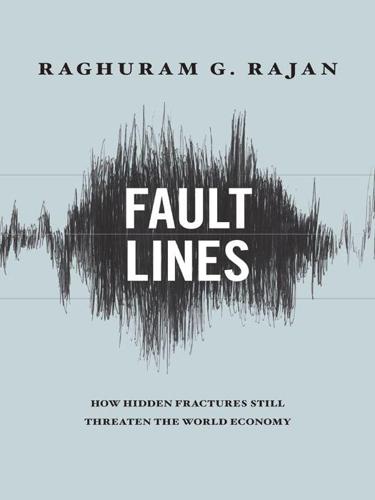
Fault Lines: How Hidden Fractures Still Threaten the World Economy
by
Raghuram Rajan
Published 24 May 2010
And the public’s anxiety gives them the license to bring out all their pet projects, all the favors to special interests, and all the schemes their ideological leanings and political connections predispose them to. Similarly, as we have seen, the Federal Reserve, though ostensibly independent, has a very difficult task. It is extremely hard to ensure rapid job growth in an integrated, innovative economy where firms use recessions to refocus on becoming more productive or to strengthen their global supply chains, shifting jobs elsewhere. Moreover, the new technologies employed in hiring allow firms the luxury of waiting to fill positions. The sustained easy monetary policy that is maintained while jobs are still scarce has the effect of increasing risk taking and inflating asset-price bubbles, which again weaken the fabric of the economy over the longer term.

The Metropolitan Revolution: How Cities and Metros Are Fixing Our Broken Politics and Fragile Economy
by
Bruce Katz
and
Jennifer Bradley
Published 10 Jun 2013
And we have been reminded of this fact as a nation in just the past few years—that just as cities are a source of strength, they are often vulnerable to the shocks and disruptions of our modern world. When Superstorm Sandy barreled up the East Coast of the United States, making a direct hit on New York City, economic activity and commerce felt its impact all over the world. When Bangkok flooded in 2011, many global supply chains ground to a halt. Cities themselves are weakened by vulnerabilities in individual communities within the city. When one part of the city loses connection to a critical system, the stability of the entire region can be threatened. But examples of innovation happening all over the world give us good reason for optimism.

The Industries of the Future
by
Alec Ross
Published 2 Feb 2016
Thus, by frugal innovation, the country leapfrogged over the creation of a traditional banking system, at least as it exists in much of the rest of the world. While many of the world’s economies have stagnated since the economic crisis in 2008, Africa’s have continued to grow at a fast pace. With this growth, Africans are increasingly both the founder-entrepreneurs as well as a part of global supply chains. More and more of Africa’s technology-savvy youth are entering the workforce and starting their own companies or working remotely for Asian, American, or European companies. This is changing the nature of Africa’s relationship with the rest of the world as its connections shift from being rooted in philanthropy and development aid to being rooted in business.
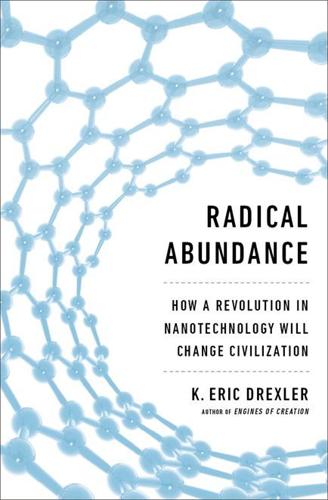
Radical Abundance: How a Revolution in Nanotechnology Will Change Civilization
by
K. Eric Drexler
Published 6 May 2013
As for mining, APM naturally consumes and produces a different mix of materials (no need for the iron and chromium in stainless steel, no need for lead and tin in solder) and as it happens, the most useful elements—including carbon, nitrogen, oxygen, and silicon—are not at all scarce. On grounds of performance and cost, even common structural materials will be subject to widespread displacement, and with them, most mines. (Chapter 11 explores questions of APM-based product performance, cost, and resource requirements in greater depth.) Today, trade builds global supply chains that lead from mines and wells to smelters and refineries, to materials processing plants, to networks of factories that shape and assemble components to make final products. As we will see, with APM-based technologies it would be natural for these long, specialized supply chains to collapse to a few steps of local production, progressing from common materials to simple chemical feedstocks; from simple feedstocks to generic, microscale building blocks; and then from generic components to an endless range of products, much as printers can be used to arrange generic pixels to form an endless range of images.
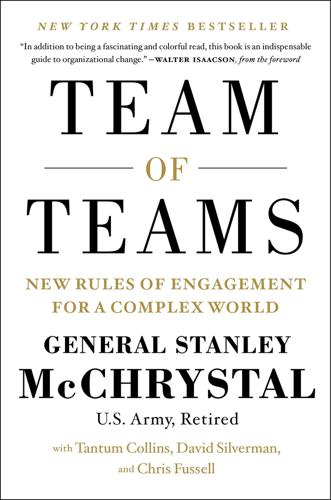
Team of Teams: New Rules of Engagement for a Complex World
by
General Stanley McChrystal
,
Tantum Collins
,
David Silverman
and
Chris Fussell
Published 11 May 2015
We might recoil today at the brutal consequences of mechanized warfare and the dehumanizing connotations of the assembly line, but the principles that undergird these systems remain firmly embedded in the way organizations of all types approach management and leadership. We still search faithfully for the one best way to do things; we still think of organizational leaders as planners, synchronizers, and coordinators—chess-player strategists responsible for overseeing interlocking troop movements, marketing initiatives, or global supply chains. The structures of our organizations reflect this ideal. Whether imbued with a “lazy worker” Theory X or a “motivated worker” Theory Y disposition, the “org charts” of most multiperson endeavors look pretty similar: a combination of specialized vertical columns (departments or divisions) and horizontal tiers that denote levels of authority, with the most powerful literally on top—the only tier that can access all columns.

Don't Be Evil: How Big Tech Betrayed Its Founding Principles--And All of US
by
Rana Foroohar
Published 5 Nov 2019
Newspapers have essentially been in decline since the mid-1990s, when the commercial Internet took off.35 Today, over 62 percent of the U.S. population gets news from some form of social media, with Facebook being the dominant source, according to the Columbia Journalism Review. But looking at the patent issue makes it clear that there is a price to be paid for the “information wants to be free” approach in other industries as well—including the technology business itself. While the complexity of global supply chains and investments makes it tough to show clear causality between patent protection and innovation in the United States, the trend lines do not look good. According to one study, the shifts in patent regulation have cost the U.S. economy $1 trillion. Venture capital investment in biotech has been down in recent years, in part because it’s tougher to patent certain kinds of innovation.

Sandworm: A New Era of Cyberwar and the Hunt for the Kremlin's Most Dangerous Hackers
by
Andy Greenberg
Published 5 Nov 2019
Jeffrey Bader, president of a Port Newark–based trucking group, the Association of Bi-State Motor Carriers, estimates that the unreimbursed cost for trucking companies and truckers alone was in the tens of millions. “It was a nightmare,” Bader said. “We lost a lot of money, and we’re angry.” The wider cost of Maersk’s disruption to the global supply chain as a whole—which depends on just-in-time delivery of products and manufacturing components—is far harder to measure. And, of course, Maersk was only one victim. Only when you start to multiply Maersk’s story—imagining the same paralysis, the same serial crises, the same grueling recovery—playing out across dozens of other NotPetya victims and countless other industries does the true scale of Russia’s cyberwar crime begin to come into focus.

Reset
by
Ronald J. Deibert
Published 14 Aug 2020
As Ensmenger puts it, “For the most part, we experience only the positive benefits of information technology, in large part because the labor and geography associated with the construction, maintenance, and dismantling of our digital devices has been rendered largely invisible.”388 That device you hold in your hand is but a tiny manifestation of a vast and extended global supply chain, and the culmination of numerous labour-intensive, highly industrialized, energy-intensive, and environmentally damaging processes spread around the world. Each time you swipe, text, or search, in your own small way you are contributing to a planet-wide syndrome that risks our very survival as a species.
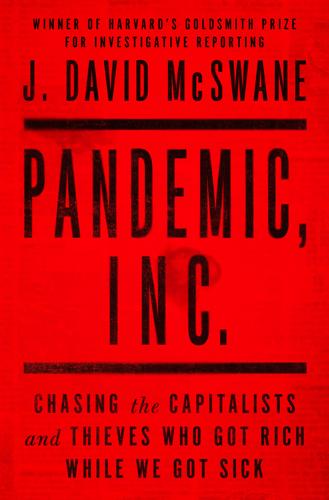
Pandemic, Inc.: Chasing the Capitalists and Thieves Who Got Rich While We Got Sick
by
J. David McSwane
Published 11 Apr 2022
When Trump appointed Navarro to enforce the Defense Production Act and compel U.S. companies to prioritize manufacturing for the COVID-19 response, Yossi Sheffi, the director of the MIT Center for Transportation and Logistics, expressed disbelief. “We have some of the largest companies in the world who are running global supply chains [and] have contractor relationships all over the world,” Sheffi told Mother Jones magazine. “There are literally thousands of them. Any of them would be doing a better job than a crackpot economist.” I would not deign to resort to such hyperbole, as I’ve never met Navarro, nor do I claim to be an economist, crackpot or otherwise.

Invention: A Life
by
James Dyson
Published 6 Sep 2021
We deliberately avoided traditional ventilator components due to potential supply issues, using instead those we knew were readily available and which we could rely on. The team grew quickly to about 450 people working across the U.K. and Singapore so we could achieve twenty-four-hour working cycles and draw on our global supply chains and knowledge. Our Singapore engineering team picked up while the U.K. team was sleeping and vice versa, but the days were still long, often stretching deep into the night. It was an extraordinary project. The feedback we got from clinicians was good, and within two weeks we had a new ventilator ready for clinical testing.

Filterworld: How Algorithms Flattened Culture
by
Kyle Chayka
Published 15 Jan 2024
Then I had to seek it out and set up my computer, bathing in the cold light of the close-by screen in a darkened room. It was a long way from turning on the living room television as a child in the 1990s and watching whatever was on cable. But my viewing habits changed during the onset of the COVID-19 pandemic in 2020. As news of quarantine set in and hints of global supply-chain slowdowns started, the one thing I made sure to acquire for my apartment was a large television, the first one I had ever bought for myself—a sixty-inch flat-screen that loomed in the living room like an alien, all jet-black shiny plastic. It replaced a chair in the corner. For a while, my partner, Jess, and I couldn’t get used to its presence in our apartment, but then we had no choice: during lockdown there wasn’t much to do besides catch up on the backlist of prestige TV shows.
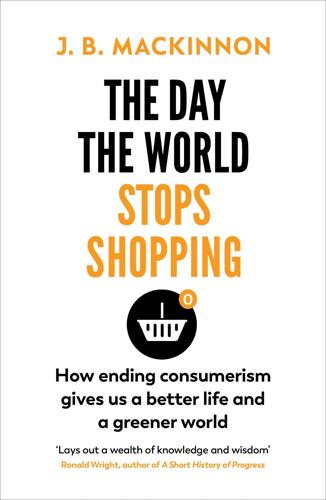
The Day the World Stops Shopping
by
J. B. MacKinnon
Published 14 May 2021
To make a durable dress shirt, you need cotton with a long “staple,” or fibre length, which makes for finer, stronger thread. Plenty of cotton is grown in the United States, but there is so little demand for both organic cotton—about 1 percent of the market—and long-staple cotton that Tuckerman had to draw on a global supply chain. It took five hundred phone calls to find a single mill that was both able to make fabric to Tuckerman’s standards and willing to switch between conventional and organic cotton stocks to deal with their orders. That mill was the Albini Group, a fifth-generation family business in northern Italy.

Limitarianism: The Case Against Extreme Wealth
by
Ingrid Robeyns
Published 16 Jan 2024
We don’t just need a reasonable balance of economic power in each country; we need this balance to apply to the global economy and to international trade relations. In 2022 a citizens’ initiative was launched in the European Union to ask for legislation that forces fashion companies to pay their own workers, and those in their global supply chain, fairly. As the campaigners write, if garment workers were paid a living wage (that is, a wage that allows each worker to lead a decent life), the final cost of a piece of clothing would increase by a mere 1 percent—a price increase that could, of course, equally be taken from the vast profits enjoyed by the billionaire owners of fashion multinationals.

EuroTragedy: A Drama in Nine Acts
by
Ashoka Mody
Published 7 May 2018
Italian stocks fell by 3.3 percent; banks and insurers, who held substantial quantities of government bonds, took a special beating.47 Soon enough, another rating agency, Moody’s, placed the Italian government and banks on “review for possible downgrade.”48 All this while, global economic and financial tensions had been rising. On March 11, a monstrous earthquake and tsunami off the northern coast of Japan damaged nuclear reactors, the fallout from which threatened to cause vast additional damage. Amid the human tragedy, the Japanese link in global supply chains broke, disrupting world trade. Torsten Sløk, chief international economist at Deutsche Bank, captured the change in global mood: “the world is rapidly becoming a scarier place.”49 Starting in early April, global stock markets tumbled at a pace not seen since the days following the Lehman Brothers bankruptcy.
…
However, the dividend from world trade has diminished over the years as several eurozone economies, especially those in the south, have lost competitiveness. Moreover, significant and extended pickups in world trade have become less frequent, confirming researchers’ views that the era of hyperglobalization is over.7 Global supply chains—set up to source materials, parts, and equipment from low-cost locations around the world—are now largely in place. Compared with the blistering 9 percent growth rate in the pre-global-crisis years between 2004 and 2007, the rate of world trade growth now stays, generally, in the range of 3 to 5 percent a 5 Per capita GDP growth rate of the median euroarea country, percent 1946–1970 1920–1929 Before 1991 4 3 1971–1990 1890–1899 1999–2008 2 1991–1998 1930–1939 1 2009–2016 After 1991 0 –2 0 2 4 6 8 10 Annual average world trade growth, percent Figure 10.1.
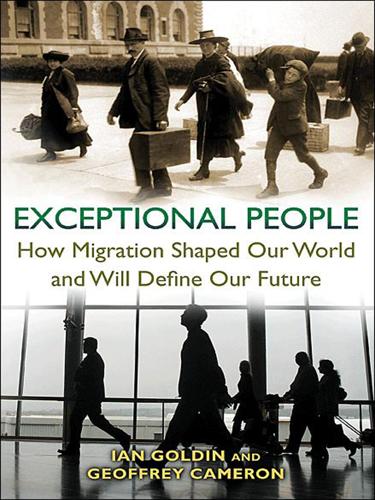
Exceptional People: How Migration Shaped Our World and Will Define Our Future
by
Ian Goldin
,
Geoffrey Cameron
and
Meera Balarajan
Published 20 Dec 2010
“Network diasporas,” Kuznetsov argues, “are but the latest bridge institutions connecting developing economy insiders, with their risk mitigating knowledge and connections, to outsiders in command of technical know-how and investment capital.”103 For countries to successfully tap into their overseas expertise, there need to be conditions at home that are attractive for expatriates to return to or invest in. Migrants in a diaspora are unlikely to spontaneously fire up a flailing national economy; they are a resource that can reinforce or accelerate existing positive trends.104 India's Dynamic Diaspora Network The development of global supply chains, decentralized systems of production, and modern information technologies have facilitated the transformation of brain drain from India into “diaspora networks” that are supporting the IT sector at home. India's universities are thriving, and many of its best graduates seek out jobs in Silicon Valley, where they are supported by established professional networks for Indian nationals.
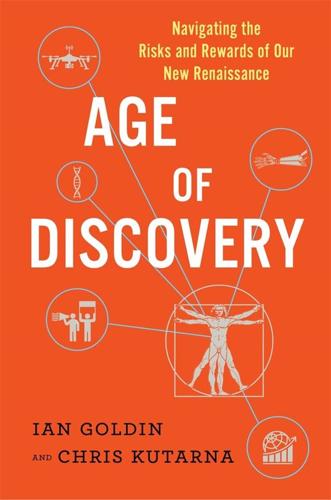
Age of Discovery: Navigating the Risks and Rewards of Our New Renaissance
by
Ian Goldin
and
Chris Kutarna
Published 23 May 2016
The Economist. Retrieved from www.economist.com. 65. For more on the Thailand case, see Goldin, Ian and Mike Mariathasan (2014), The Butterfly Defect. Princeton, NJ: Princeton University Press. 66. Chongvilaivan, Aekapol (2012). “Thailand’s 2011 Flooding: Its Impact on Direct Exports and Global Supply Chains.” ARTNeT Working Paper Series, No. 113. Retrieved from hdl.handle.net/10419/64271. 67. Thailand Board of Investment (2012). “Expertise, New Investment Keep Thai E&E Industry at the Top.” Thailand Investment Review. Retrieved from www.boi.go.th. 68. Abe, Masato and Linghe Ye (2013).
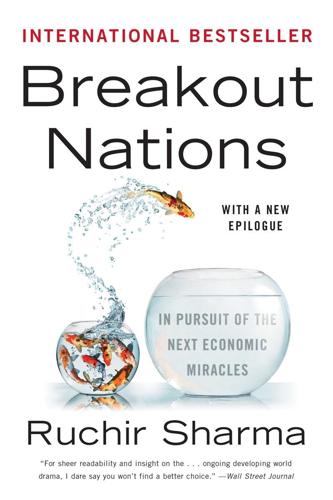
Breakout Nations: In Pursuit of the Next Economic Miracles
by
Ruchir Sharma
Published 8 Apr 2012
Trade between nations is rising much faster than income within nations. Back in 1960 every percentage point increase in global income was accompanied by a 2 percent increase in trade flows; today every percentage point increase in income is matched by a 4 percent rise in trade. The increasing integration of global supply chains is a major reason why developed and developing economies began to expand and contract in sync over the last decade. It is also why emerging markets, too, can expect a shift to more frequent downturns. If the historical record cited above is any guide, the expansion phases are likely to shorten by a half or more to around three years across the global economy.
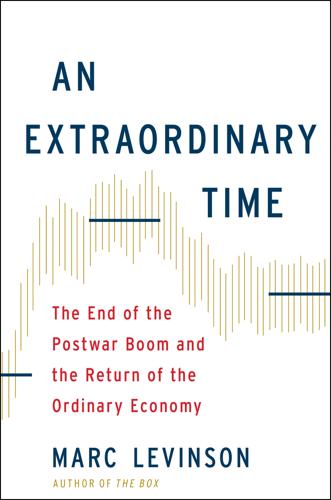
An Extraordinary Time: The End of the Postwar Boom and the Return of the Ordinary Economy
by
Marc Levinson
Published 31 Jul 2016
It accounted for three-quarters of the world’s population in 1973, as crisis enveloped Western Europe, the United States, Canada, and Japan, but only a third of the world’s output of goods and services. China, with an income per person one-twentieth that of the United States, had yet to launch the economic reforms that would turbocharge its growth in later decades. And Southeast Asia, far from being a critical link in global supply chains, seemed hopelessly crippled by war and internal violence. The Third World was connected to the international economy mainly as a source of raw materials. It supplied a scant 7 percent of the world’s exports of manufactured goods. The Third World’s explosive growth in the 1970s was fueled by the petrodollars that were causing such worry for central bankers like Gordon Richardson and Arthur Burns.
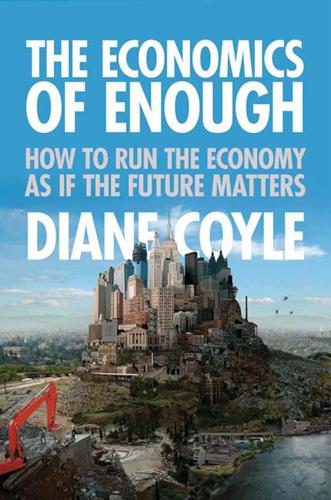
The Economics of Enough: How to Run the Economy as if the Future Matters
by
Diane Coyle
Published 21 Feb 2011
They’ve created the diversity of the modern city and workplace, bringing many people into contact daily with a much wider variety of others than ever used to be the case. And there are much larger geographical distances in production too, due the fact that economies have become more open to trade and investment, and that companies are more likely to be part of a global supply chain. THE CHALLENGE OF BUILDING TRUST There are, then, a number of ways in which the technology-driven structural changes in the economy have been simultaneously increasing the importance of trust or social capital and making it more fragile. At the heart of this tension is the way so many people of so many different backgrounds, expectations, and habits are now in contact with each other.

Miracle Cure
by
William Rosen
Published 14 Apr 2017
The new law, yet another amendment to the original 1938 Food, Drug, and Cosmetic Act, included dozens of provisions regarding everything from a new protocol for the approval of medical devices, to the authorization of fees for users of generic and prescription pharmaceuticals, to protection of the global supply chain for finished drugs. Less well publicized, but almost certainly as important, it incorporated into the legislation a series of provisions known collectively by the acronym GAIN: Generating Antibiotic Incentives Now. Intended to increase the likelihood that pharmaceutical companies would invest in the development of antibiotics that treat serious or life-threatening conditions, GAIN offered fast-track approval for compounds that promised to combat infections, and a five-year extension of their exclusive term of patent.
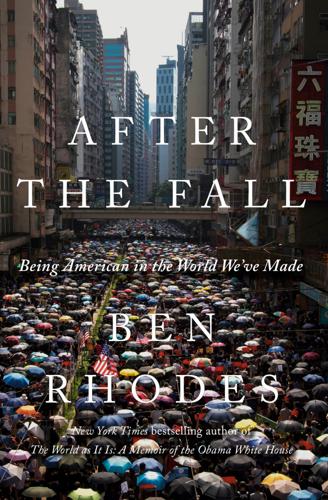
After the Fall: Being American in the World We've Made
by
Ben Rhodes
Published 1 Jun 2021
The first American presidential campaign after the Berlin Wall came down was driven by a slogan—“It’s the economy, stupid”—whose very effectiveness became a trap. GDP growth. Deficits. Gas prices. The markets. The politics of wealth creation. The wealth that funds politics. The wealthy and the politicians appearing on panel discussions at international conferences to discuss vague concepts of global security, global supply chains, and global sustainability in a world where consumption has made life on earth unsustainable. Washington and Brussels, London and New York, Shanghai and Silicon Valley. The computer, laptop, phone—devices that host platforms that offer the convenience of mind-numbing, socially isolating content in exchange for vast troves of data that make you a more perfect consumer.
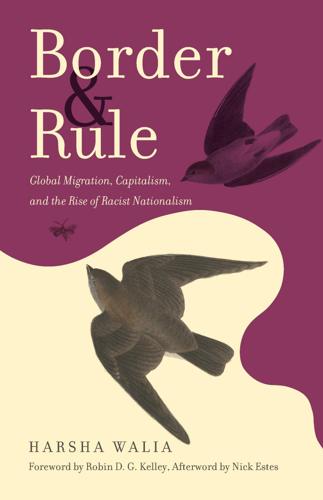
Border and Rule: Global Migration, Capitalism, and the Rise of Racist Nationalism
by
Harsha Walia
Published 9 Feb 2021
A 2018 independent fact-finding mission report describes the unfolding process of dispossession: “Appropriation of vacated land and terrain clearance, erasing every trace of the Rohingya communities, and the construction on this land of houses for other ethnic groups.”102 The insertion of Myanmar into the global supply chain has also opened lands to capital investment for agribusiness, industrial manufacturing, timber extraction, geothermal projects, and mining. India and China, with their respective Look East policy and Belt and Road Initiative, have invested in multimillion-dollar infrastructure projects, including pipelines and ports in the Rakhine region, dubbed “Asia’s final frontier.”
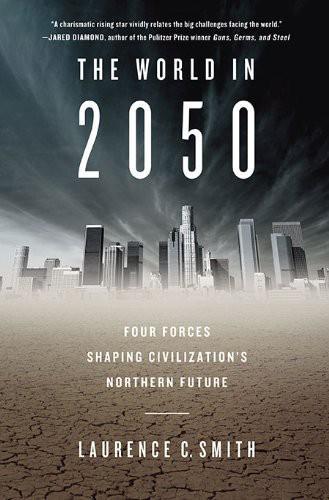
The World in 2050: Four Forces Shaping Civilization's Northern Future
by
Laurence C. Smith
Published 22 Sep 2010
To be sure, routes are shorter across the Arctic Ocean, but the travel speeds, owing to the danger of ice, are lower.368 If the region’s emerging regulatory framework demands that only polar-class ships be allowed in, then those vessels will cost considerably more than ordinary single-hulled ships. And how attractive will a short, unpredictable shipping season really be for today’s tightly scheduled global supply chains? What about the relative lack of emergency and port services, environmental liability for oil spills, or fees charged by Russia and Canada should they reaffirm their positions that the Northwest Passage and Northern Sea Route are not international straits?369 Might the Suez and Panama canals lower their prices in response to the new competition?

Machine, Platform, Crowd: Harnessing Our Digital Future
by
Andrew McAfee
and
Erik Brynjolfsson
Published 26 Jun 2017
The Korean company Samsung had been a dominant force early in the smartphone era as it rolled out a series of popular phones and tablets, but it, too, eventually saw sales and earnings deteriorate. Total unit sales in 2016, after four consecutive years of decline, were lower than they had been since 2011. Modern smartphones are incredibly complicated devices that must be designed well and built reliably. The engineering expertise and global supply chain capabilities required to do this are so formidable that only a handful of companies in the world ever try. Yet, as expectations and specifications continually change, few of them make much money for any length of time, even though they serve an enormous global market that has emerged in less than a decade.

Radical Technologies: The Design of Everyday Life
by
Adam Greenfield
Published 29 May 2017
We know that economic forces, and requirements founded in the material conditions of production, shape the organization of human settlements at every scale. Local and precise control over the physical form of things therefore challenges the way we think about the spatial form and social life of cities. To offer just two examples: should local fabrication eliminate extended global supply chains, much of the land we now dedicate to warehousing and distribution could be repurposed, along with the transport capacity now required to move things around. And if we consider that retail is primarily the short-term storage and display for sale of branded goods, the implications of widespread fabrication are equally clear.
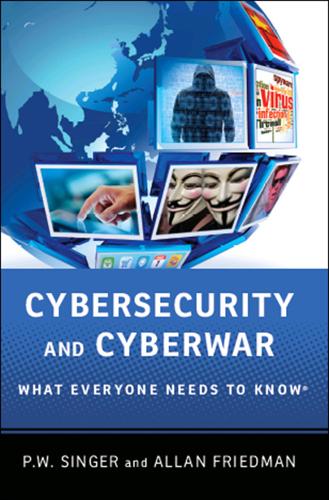
Cybersecurity: What Everyone Needs to Know
by
P. W. Singer
and
Allan Friedman
Published 3 Jan 2014
. “$100 million helicopter” Katie Drummond, “Military’s New Plan to Weed Out Counterfeits: Plant DNA,” Danger Room (blog), Wired, January 20, 2012, http://www.wired.com/dangerroom/2012/01/dna-counterfeits/. “trusted delivery systems” Darrell West, “12 Ways to Build Trust in the Global ICT Trade,” Brookings, April 18, 2013, http://www.brookings.edu/research/papers/2013/04/18-global-supply-chain-west. “America’s digital infrastructure” Executive Office of the President of the United States, “The Comprehensive National Cybersecurity Initiative,” March 2, 2010, http://www.whitehouse.gov/sites/default/files/cybersecurity.pdf. APPROACH IT AS A PUBLIC-PRIVATE PROBLEM: HOW DO WE BETTER COORDINATE DEFENSE?
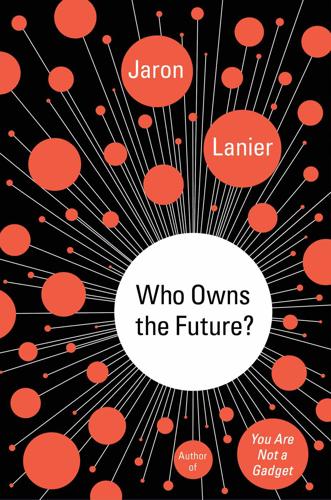
Who Owns the Future?
by
Jaron Lanier
Published 6 May 2013
Wal-Mart’s customers weren’t the critical population for it to capture, however. Retail customers gradually became a little captured in some locations where retail choice was eventually reduced, but for the most part they could shop elsewhere if they were so inclined, but it was the optimization of the global supply chain through the use of punishing network effects that really empowered and enriched Wal-Mart. CHAPTER 14 Obscuring the Human Element Noticing the New Order Every tale of adventure lately seems to include a scene in which characters are attempting to crack the security of someone else’s computer.
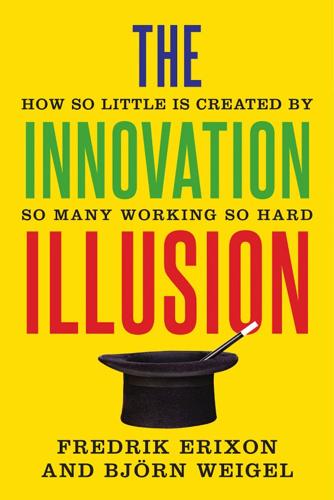
The Innovation Illusion: How So Little Is Created by So Many Working So Hard
by
Fredrik Erixon
and
Bjorn Weigel
Published 3 Oct 2016
Nokia’s new strategy was decided long before the cell-phone market revolution had gathered speed and one can only admire Nokia’s decision to abandon what was familiar for something uncertain. The strategy paid off – handsomely. Thirteen years later Nokia had sold over 1 billion phones. It mastered, even spearheaded, the practice of new market sales and lean operations through globalized supply chains. In 2007 the Nokia brand was the fifth most valued in the world. At its peak, the company’s stock market value exceeded $350 billion. Nokia is an example of a company that did not just develop a technology but brought it successfully to market through a good deal of creative destruction.
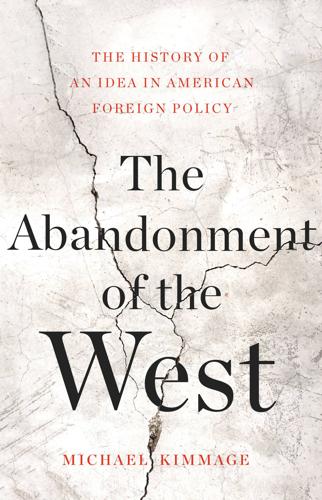
The Abandonment of the West
by
Michael Kimmage
Published 21 Apr 2020
By not placing the adjective Western or European or American before the noun civilization, Harris and Blaine could argue that Japan and Latin America might be culturally or historically different from the United States and from the West, but with sufficient tutelage or sufficient force they would achieve the American standard of wealth, education and comfort. Properly raised up, they could enter into the global supply chains and industrial productivity that described modern civilization. This was civilization as process, as technique, civilization as a matter of economic stages. The twentieth-century language of economic modernization and development has its precursors in the nineteenth-century language of civilization.
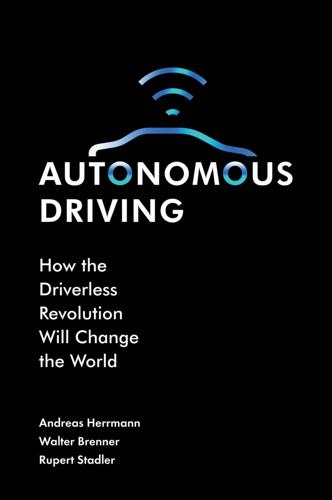
Autonomous Driving: How the Driverless Revolution Will Change the World
by
Andreas Herrmann
,
Walter Brenner
and
Rupert Stadler
Published 25 Mar 2018
Apparently, machine learning methods and graphics processors are being applied that have not previously been used in motor vehicles. The RIO platform, which is developed by MAN, is an example of the increasing digitisation of the transport and logistics eco-system. This open, cloud-based platform covers the global supply chain from the consigner via the forwarding agent and transport company, shipper, dispatcher and driver to the recipient. In this way, all information of the goods traffic of logistics companies can be bundled, no matter whether it originates from a freight plane or freight ship, from a goods train or from a lorry.
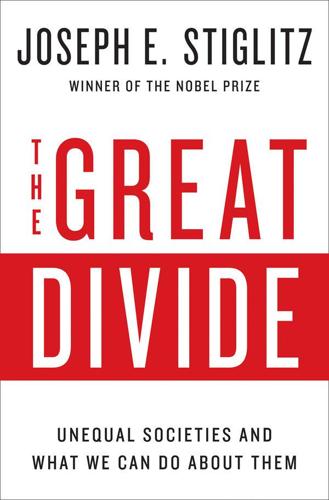
The Great Divide: Unequal Societies and What We Can Do About Them
by
Joseph E. Stiglitz
Published 15 Mar 2015
The former would exacerbate the country’s slowdown, and neither change is in the cards. As China increases its consumption, it will not necessarily buy more goods from the United States. In fact, it is more likely to increase consumption of nontraded goods—like health care and education—resulting in profound disturbances to the global supply chain, especially in countries that had been supplying the inputs to China’s manufacturing exporters. Finally, there is a worldwide crisis in inequality. The problem is not only that the top income groups are getting a larger share of the economic pie, but also that those in the middle are not sharing in economic growth, while in many countries poverty is increasing.
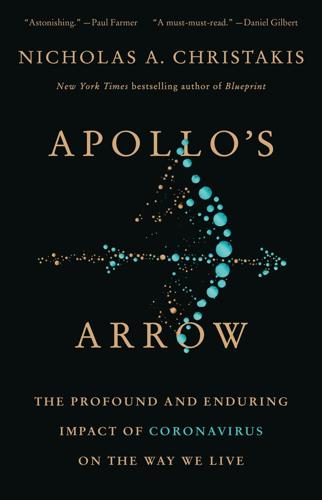
Apollo's Arrow: The Profound and Enduring Impact of Coronavirus on the Way We Live
by
Nicholas A. Christakis
Published 27 Oct 2020
Liquor distilleries began making hand sanitizer, and some gave it away for free to help out.56 Sportswear manufacturers shifted from making T-shirts to making masks.57 Working with GE and 3M, Ford Motor Company used repurposed car parts, such as fans and batteries, to make simplified ventilators.58 Many of the industries that provide items to combat the virus itself will see elevated demand continue for the duration of the immediate pandemic period, though not with the same intensity as during the first wave. While distilleries will probably switch back to making drinks, and Ford will go back to making cars, other structural changes in our economy could be long-lasting. Global supply chains could shrink, and there might be full repatriation of manufacturing facilities of certain industries—for instance, the pharmaceutical industry or high-tech machinery.59 Before the pandemic, the emphasis was on just-in-time production, with parts being delivered just when they were needed in the manufacturing process.

Greater: Britain After the Storm
by
Penny Mordaunt
and
Chris Lewis
Published 19 May 2021
sh=5beba7d41dfe 37 https://www.asianentrepreneur.org/why-are-rich-chinese-entrepreneurs-leaving-china/ 38 https://www.investopedia.com/articles/investing/092415/chinas-stock-markets-vs-us-stock-markets.asp 39 https://www.investopedia.com/articles/investing/092415/chinas-stock-markets-vs-us-stock-markets.asp 40 https://www.ilo.org/wcmsp5/groups/public/---dgreports/---dcomm/---publ/documents/publication/wcms_650553.pdf 41 https://www.forbes.com/sites/kenrapoza/2017/08/16/china-wage-levels-equal-to-or-surpass-parts-of-europe/#5f4a34d53e7f 42 https://napsintl.com/manufacturing-in-mexico/mexico-vs-china-manufacturing-comparison/ 43 https://www.economist.com/special-report/2020/02/06/china-wants-to-put-itself-back-at-the-centre-of-the-world 44 https://thediplomat.com/2017/05/reviving-the-comatose-bangladesh-china-india-myanmar-corridor/ 45 https://thediplomat.com/2016/08/tibet-and-chinas-belt-and-road/ 46 https://globalshippersalliance.org/wp-content/uploads/2018/01/Study_EP_IPOL_STU2018585907_EN.pdf 47 https://www.mhlnews.com/global-supply-chain/article/22042478/more-competition-for-us-west-coast-ports 48 https://www.bangkokpost.com/business/2001843/controversial-thai-canal-back-in-spotlight 49 https://www.smithsonianmag.com/science-nature/new-canal-through-central-america-could-have-devastating-consequences-180953394/ https://www.forbes.com/sites/wadeshepard/2020/01/31/inside-the-belt-and-roads-premier-white-elephant-melaka-gateway/?
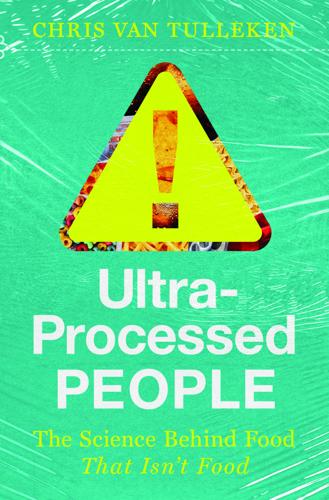
Ultra-Processed People: The Science Behind Food That Isn't Food
by
Chris van Tulleken
Published 26 Jun 2023
Smell is all about selecting safe and nutritious food, while avoiding toxic, unsafe food. It’s one of the earliest warning systems for whether something is safe to eat. After all, by the time you can taste something, it may already be too late, but there is also the safety net of bitter receptors at the back of the mouth, which we’ll come to. Thanks to the global supply chains of modern supermarkets, many of us are used to fruit being ready to eat and ripe all year round, but in a tropical forest this isn’t the case. Toxin levels vary, and a piece of fruit may be edible for quite a narrow window, typically determined by exactly when the plant wants the animal to eat it and disperse the seeds.

Collision Course: Carlos Ghosn and the Culture Wars That Upended an Auto Empire
by
Hans Gremeil
and
William Sposato
Published 15 Dec 2021
Even the World Economic Forum (WEF), the quintessential talking shop for the rich and powerful, clearly noticed the winds changing in 2020, using its fiftieth anniversary to launch a new Davos Manifesto. As it was described by WEF founder Klaus Schwab, “companies should pay their fair share of taxes, show zero tolerance for corruption, uphold human rights throughout their global supply chains, and advocate for a competitive level playing field.”1 This is closer to the ethical underpinnings of 1,400-year-old Japanese companies than today’s hedge funds. The need to accept the American-led world of post–World War II global capitalism in itself reflects a key element of Japan, in which society has long demonstrated a history of being able to adapt without making fundamental change.
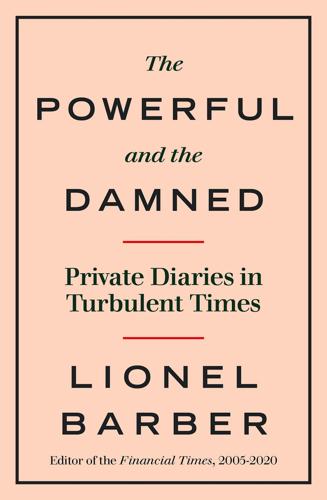
The Powerful and the Damned: Private Diaries in Turbulent Times
by
Lionel Barber
Published 5 Nov 2020
In a world of populists and strongmen, she was doubling down on the EU as (almost) the last liberal democrat standing. Seven weeks later, the coronavirus pandemic brought the world to a stop. This was not just a bookend to my editorship; it was an emphatic exclamation mark. The fragility of the modern economy and its finely tuned global supply chains was exposed brutally. To be sure, between 2005 and 2020, there were signs that globalisation was in trouble. The financial crisis, mass migration, the rise of national populism and President Trump’s weaponisation of trade tariffs: all these trends threatened the free flow of goods, people and ideas which represented the benign face of globalisation.

Frostbite: How Refrigeration Changed Our Food, Our Planet, and Ourselves
by
Nicola Twilley
Published 24 Jun 2024
Before the introduction of the container, a cargo ship would typically spend as much time at berth, being loaded and unloaded, as it did at sea. This was the real significance of McLean’s innovation and the Ideal X’s maiden voyage: by shrinking both the time and the cost involved in maritime trade, they made today’s just-in-time global supply chains possible. Despite these enormous advantages, container shipping took a while to catch on. Railways and trucking companies were initially reluctant to embrace this new intermodal form of transport: their existing cargo carriages and trailers represented a significant sunk cost. Throughout the sixties, as dockworkers protested at the prospect of losing their jobs, port authorities dithered about whether it was worth investing in the new cranes and facilities needed to handle shipping containers.
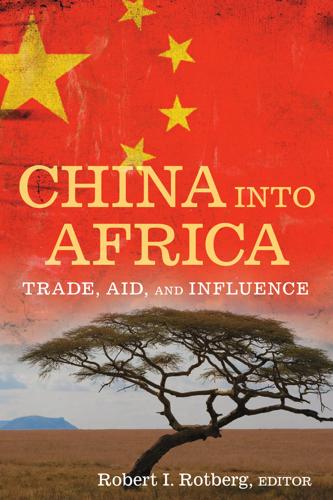
China into Africa: trade, aid, and influence
by
Robert I. Rotberg
Published 15 Nov 2008
Going forward, African countries should focus on engaging the Chinese to work with African firms to enhance value-added production, both in natural resources to create backward and forward linkages domestically and in other (non–natural resource related) sectors to enable Africa to participate more effectively in global supply chains. Notes 1. Puri Lakshmi, “A Silent Revolution in South-South Trade,” World Trade Organization (Geneva, 2004), available at www.wto.org/english/tratop_e/dda_e/symp04_ paper7_e.doc (accessed 25 February 2008). 05-7561-4 ch5.qxd 9/16/08 4:14 PM Page 108 108 harry g. broadman 2. Harry G.
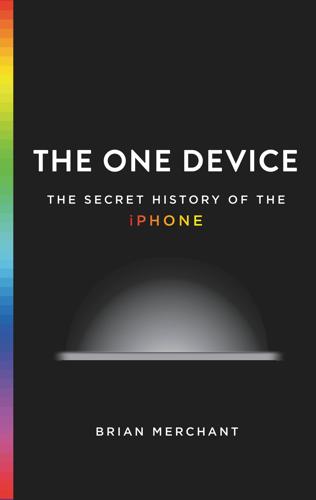
The One Device: The Secret History of the iPhone
by
Brian Merchant
Published 19 Jun 2017
A web of transit lines spans the area around Atacama, and the next day, Enrique, Jason, and I spend hours driving down private mining roads, passing semitrucks and tankers hauling lithium and potassium or returning to the salar for another load. More memorials marking fatal accidents dot the sides of the road. On the rare occasions it rains, flooding can shut down the entire operation and send a ripple through the entire global-supply chain. But mostly, the plight belongs to wearied drivers, taking extra trips to earn extra money and pushing the limits. There’s no spectacular white desert at Salar del Carmen, just a series of towering cylinders, a couple more pools, and rows of thrumming machinery. The refinery operation is an industrial winter wonderland.
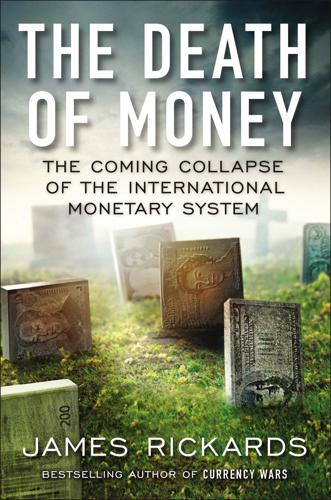
The Death of Money: The Coming Collapse of the International Monetary System
by
James Rickards
Published 7 Apr 2014
However, the aftermath will include a resumption of Chinese efforts to cap or even devalue the yuan in foreign exchange markets to promote exports, create jobs, and restore wealth lost in the collapse. In the short run, this will prove deflationary as underpriced Chinese goods once again flood into global supply chains. In the longer run, Chinese deflation will be met with U.S. and Japanese inflation, as both countries print money to offset any appreciation in the yen or the dollar. At that point, the currency wars will be reignited, never really having gone away. Not all of these seven signs may come to pass.

How Markets Fail: The Logic of Economic Calamities
by
John Cassidy
Published 10 Nov 2009
Apple’s iPod, of which more than 175 million have been sold, was conceived in Silicon Valley; most of the software it operates on was written in Hyderabad, India; and it is manufactured in China, where Apple has outsourced production to a number of Taiwanese companies. The music player contains 451 parts, including a hard drive made by Japan’s Toshiba; two microchips produced by American companies, Broadcom and PortalPlayer; and a memory chip made by Samsung, a Korean firm. Each of these components, in turn, has a complicated global supply chain. The iPod is rightly seen as a triumph of American innovation and marketing. It is also a pocket-size emblem of the division of labor. (In June 2006, The Mail on Sunday, a British newspaper, revealed that many of the Chinese workers assembling iPods were young women who worked fifteen hours a day and lived in corporate dormitories, earning less than fifty dollars a month.

Sacred Economics: Money, Gift, and Society in the Age of Transition
by
Charles Eisenstein
Published 11 Jul 2011
In the absence of local government support, because complementary fiat currencies are not easily convertible into dollars, businesses are generally much less willing to accept them than they are proxy currencies. That is because in the current economic system, there is little infrastructure to source goods locally. Locally owned businesses are plugged into the same global supply chains as everyone else. Regrowing the infrastructure of local production and distribution will take time, as well as a change in macroeconomic conditions driven by the internalization of costs, the end of growth pressure, and a social and political decision to relocalize. Noneconomic factors can influence the social agreement of money.
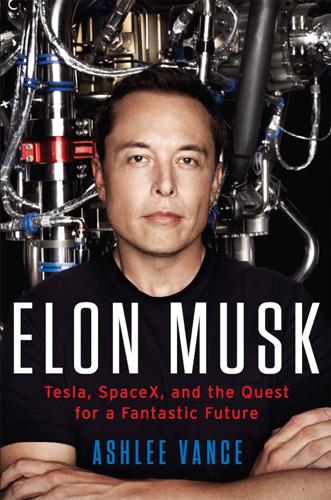
Elon Musk: Tesla, SpaceX, and the Quest for a Fantastic Future
by
Ashlee Vance
Published 18 May 2015
said Lyons. (The work on the Smart car eventually led to Daimler buying a 10 percent stake in Tesla.) Marks’s inclination was to try to package Tesla as an asset that could be sold to a larger car company. It was a perfectly reasonable plan. While running Flextronics, Marks had overseen a vast, global supply chain and knew the difficulties of manufacturing intimately. Tesla must have looked borderline hopeless to him at this point. The company could not make its one product well, was poised to hemorrhage money, and had missed a string of delivery deadlines and yet its engineers were still off doing side experiments.

The Euro: How a Common Currency Threatens the Future of Europe
by
Joseph E. Stiglitz
and
Alex Hyde-White
Published 24 Oct 2016
There is another kind of transaction cost that sharing a currency may reduce: the exchange-rate risk going forward of longer-term investments that we discussed earlier in the chapter. But these costs have had at best a second-order effect in major production and supply chain decisions. China, for instance, has become integrally incorporated into the global supply chain, in spite of exchange-rate risk as well as political and supply-side risks. Of course, if the benefits of integration were small, then these costs might be an impediment; but by the same token, the welfare losses (for instance, from increased costs of production) arising from the lack of integration would also likely be small.

Imaginable: How to See the Future Coming and Feel Ready for Anything―Even Things That Seem Impossible Today
by
Jane McGonigal
Published 22 Mar 2022
,” UK Office for National Statistics, December 14, 2020, https://www.ons.gov.uk/peoplepopulationandcommunity/healthandsocialcare/conditionsanddiseases/articles/whyhaveblackandsouthasianpeoplebeenhithardestbyCOVID19/2020-12-14; Alissa Greenberg, “How the Stress of Racism Can Harm Your Health—and What That Has to Do with COVID-19,” PBS, July 14, 2020, https://www.pbs.org/wgbh/nova/article/racism-stress-covid-allostatic-load/. 34 William J. Hall et al., “Implicit Racial/Ethnic Bias Among Health Care Professionals and Its Influence on Health Care Outcomes: A Systematic Review,” American Journal of Public Health 105, no. 12 (2015): e60–76. 35 Sonu Bhaskar et al., “At the Epicenter of COVID-19—the Tragic Failure of the Global Supply Chain for Medical Supplies,” Frontiers in Public Health 24, no. 8 (November 2020): 562882, https://doi.org/10.3389/fpubh.2020.562882. 36 Peter S. Goodman and Niraj Chokshi, “How the World Ran Out of Everything,” New York Times, June 1, 2021, https://www.nytimes.com/2021/06/01/business/coronavirus-global-shortages.html. 37 Diane Brady, “COVID-19 and Supply-Chain Recovery: Planning for the Future,” October 9, 2020, in The McKinsey Podcast, 29:09, https://www.mckinsey.com/business-functions/operations/our-insights/COVID-19-and-supply-chain-recovery-planning-for-the-future. 38 Sarah Gibbens, “These 5 Foods Show How Coronavirus Has Disrupted Supply Chains,” National Geographic, May 19, 2020, https://www.nationalgeographic.com/science/article/covid-19-disrupts-complex-food-chains-beef-milk-eggs-produce; “Food Security and COVID-19,” World Bank, August 17, 2021, https://www.worldbank.org/en/topic/agriculture/brief/food-security-and-covid-19. 39 “Burn-Out an ‘Occupational Phenomenon’: International Classification of Diseases,” World Health Organization, May 28, 2019, https://www.who.int/news/item/28-05-2019-burn-out-an-occupational-phenomenon-international-classification-of-diseases. 40 Jennifer Moss, “Beyond Burned Out,” Harvard Business Review, February 10, 2021, https://hbr.org/2021/02/beyond-burned-out; Anitra Lesser, “The Impacts of COVID on Rising Burnout Rates,” Employers Council, October 23, 2020, https://blog.employerscouncil.org/2020/10/23/the-impacts-of-COVID-on-rising-burnout-rates/. 41 “Long Working Hours Increasing Deaths from Heart Disease and Stroke: WHO, ILO,” World Health Organization, May 17, 2021, https://www.who.int/news/item/17-05-2021-long-working-hours-increasing-deaths-from-heart-disease-and-stroke-who-ilo. 42 Maria Cristina Rulli et al., “Land-Use Change and the Livestock Revolution Increase the Risk of Zoonotic Coronavirus Transmission from Rhinolophid Bats,” Nature Food 2 (June 2021): 409–16, https://doi.org/10.1038/s43016-021-00285-x; “Coronavirus, Climate Change, and the Environment: A Conversation on COVID-19 with Dr.
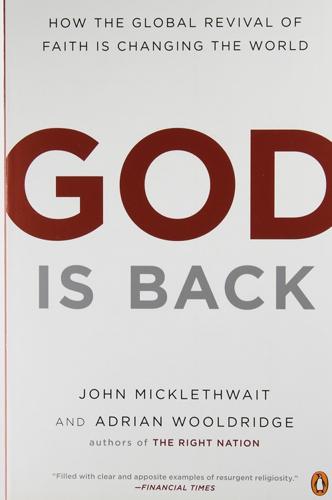
God Is Back: How the Global Revival of Faith Is Changing the World
by
John Micklethwait
and
Adrian Wooldridge
Published 31 Mar 2009
They are the modern equivalents of the historian Thomas Babington Macaulay’s Musalmans—“Indians in blood and color, but English in taste, in opinions, in morals and in intellect.” These global figures are hardwired into the global world. They are trained in American-style business schools—the boot camps of globalization—and they spend their time dealing with people who speak the same dismal language. This is a world of “global supply chains” and “value propositions” rather than local traditions and obligations. GO FORTH AND MULTIPLEX The assault on tradition is often an assault on religion. Most of the time this is unintentional: Western companies embody a message about consumption and personal autonomy that raises many hackles.

People, Power, and Profits: Progressive Capitalism for an Age of Discontent
by
Joseph E. Stiglitz
Published 22 Apr 2019
Predictions that tariffs would lead to less employment in these green jobs seem to have been borne out, and that means environmentally friendly energy production has been reduced. Jobs were certainly destroyed in the process of globalization, but they will be destroyed again in the process of the reckless deglobalization proposed by Trump. The world has created efficient global supply chains, and wise nations take advantage of them. For America to walk away from these supply chains will make our firms less competitive. Most importantly, there are large costs of adjustment. Adjusting to globalization was hard, and we—and especially our workers—paid a high price. But we will pay another high price as we try to adjust to deglobalization.32 Global Cooperation in the Twenty-First Century While protectionism won’t help the US, or even those who have suffered from deindustrialization, it can have profoundly negative effects on America’s trading partners and the global economy.

The Future Is Asian
by
Parag Khanna
Published 5 Feb 2019
The overflowing street-side cafés of Lahore and Karachi represent the onset of what the Pakistani novelist Mohsin Hamid describes as “infinite demand.” E-commerce is also growing along with 4G and broadband connectivity. Alibaba launched a national AliExpress.com shopping site for Pakistan in 2017. The Hong Kong–based global supply chain manager Li & Fung is a superb proxy for South Asia’s thriving logistics and retail sectors. In the words of the company’s CFO, Spencer Fung, the company’s size makes it a “bowling ball amidst grains of sand.” As Li & Fung shifts from simple wage arbitrage (cost optimization) toward geographic arbitrage (speed optimization), it is becoming ever more a global company first and a Chinese company second.

The Billionaire Raj: A Journey Through India's New Gilded Age
by
James Crabtree
Published 2 Jul 2018
Unable to rely on India’s ramshackle infrastructure, the tycoon built his own private railways and power lines. Lacking easy access to domestic coal, he bought mines in Indonesia and Australia, and took their contents back home through his port. In the process he built “a vertically integrated global supply chain reminiscent of when Henry Ford once owned Brazilian rubber plantations to supply his car factories,” as the New York Times put it.1 More to the point, his was an expansion that closely mirrored India’s own. As the country enjoyed its fastest ever growth in the mid-2000s, so Adani undertook one of its most extravagant investment sprees.
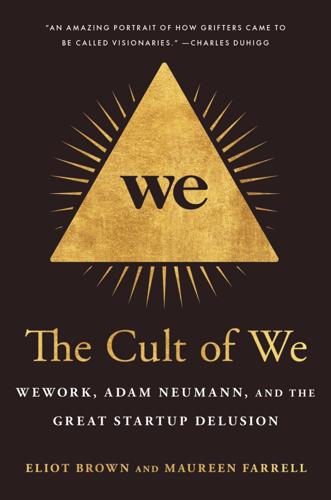
The Cult of We: WeWork, Adam Neumann, and the Great Startup Delusion
by
Eliot Brown
and
Maureen Farrell
Published 19 Jul 2021
A company adding a Kansas City’s worth of office space should be able to negotiate great prices; it should need far fewer people working in administration at headquarters for every office. WeWork’s CFO, Artie Minson, had long touted the financial benefits of this expansion. “This is a business where scale matters,” Minson told Bloomberg in 2018. “We’re building global supply chain capabilities.” He was referring to economies of scale, a crucial elixir for any company aiming to improve its margins and undercut smaller competitors. The reality for WeWork, though, was diseconomies of scale. The bigger the company got, the more it managed to spend. Neumann’s desire to prioritize rapid growth above all else meant there was no time to slow down and take stock of what was going wrong.

Open: The Story of Human Progress
by
Johan Norberg
Published 14 Sep 2020
By the early 1950s, most pre-war trade barriers had already been dismantled, and a rapid increase in trade helped Europe to quickly get back on its feet. The world embraced an open, global order as many communist and military dictatorships fell in the 1980s – and as China and India began to open up their closed economies to the world. Combined with container shipping and the digital revolution, this made global supply chains possible. If the transportation cost is small enough and the coordination ability is large enough, it is possible for more companies and countries to participate in the building of just one product, as every component is produced where it makes the most economic sense. Today we have deeper, faster and cheaper connections than ever, but there are also many more of us.
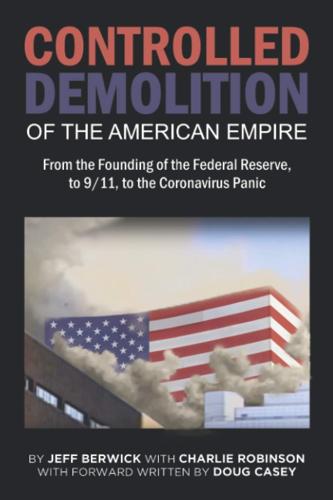
The Controlled Demolition of the American Empire
by
Jeff Berwick
and
Charlie Robinson
Published 14 Apr 2020
Even the most pandemic-prepared nations were quickly overwhelmed when the virus streaked around the world, infecting nearly 20 percent of the global population and killing 8 million in just seven months, the majority of them healthy young adults. The pandemic also had a deadly effect on economies: international mobility of both people and goods screeched to a halt, debilitating industries like tourism and breaking global supply chains. Even locally, normally bustling shops and office buildings sat empty for months, devoid of both employees and customers.” This white paper was titled Scenarios for the Future of Technology and International Development and it hoped to show how to create “a world of tighter top-down government control and more authoritarian leadership, with limited innovation and growing citizen pushback”.

Doppelganger: A Trip Into the Mirror World
by
Naomi Klein
Published 11 Sep 2023
On the other hand, powerful revolutionary iconography was being used to actively hide and distract from the all-too-real shadow worlds that created the products being advertised—the homesick and chronically harassed teenage girls in Indonesia and China making the sneakers and electronics; the pollutants and toxins seeping out of the global supply chain at every stage; the jobs that were turning into slippery contracts while we were told to buck up and be our own brands. It was a co-optation, a cover-up, and a con all at once. But there was a bigger picture that I didn’t quite see, and that was the all-out war on meaning that this new stage of progressive-cloaked capitalism represented.
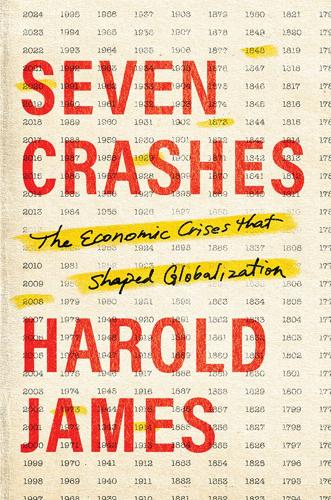
Seven Crashes: The Economic Crises That Shaped Globalization
by
Harold James
Published 15 Jan 2023
Fed Chair Jerome Powell announced that “we expect that the illness and the measures now being put in place to stem its spread will have a significant effect on economic activity in the near term. . . . In addition, the effects of the outbreak are restraining economic activity in many foreign economies, which is causing difficulties for US industries that rely on global supply chains. . . . Inflation, which has continued to run below our symmetric 2 percent objective, will likely be held down this year by the effects of the outbreak.”8 Business activity closed down, both because of official lockdowns and because many employees withdrew from contagious and dangerous work environments.
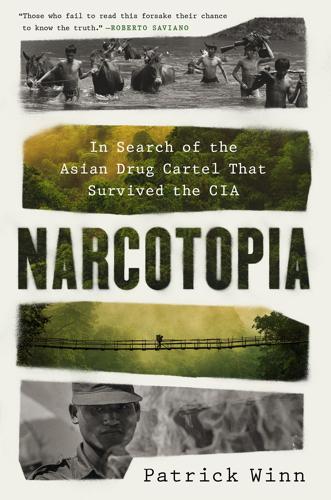
Narcotopia
by
Patrick Winn
Published 30 Jan 2024
No longer would addicts in New York City keel over from their China White. That product was discontinued. Decoupling from the US market also brought potential security benefits. How could US narcs ever justify a big-budget assault on Wa State if not a single American citizen OD’d on Wa drugs? Though the UWSA didn’t control global supply chains, international traffickers wouldn’t buy ya-ba in bulk and smuggle it to the United States; the American appetite for speed was already well sated by Mexican cartels and biker gangs. Wei’s shift to speed even called into question the DEA’s huge footprint in Southeast Asia: many dozens of agents and analysts protecting American citizens from—what exactly?
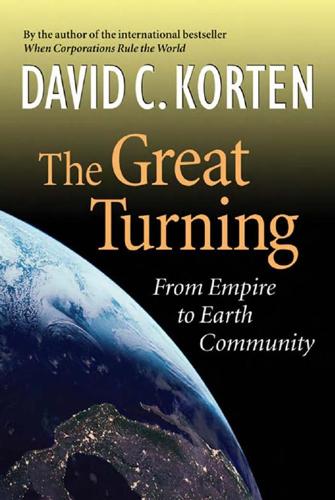
The Great Turning: From Empire to Earth Community
by
David C. Korten
Published 1 Jan 2001
The imminent encounter with the point at which oil production peaks and goes into inexorable decline will eliminate the energy The Imperative 71 subsidies on which much of the capital infrastructure of the corporate global economy depends. 2. Severe weather events and climatic changes associated with global warming will disrupt food production and global supply chains. 3. A collapse in the international exchange value of the U.S. dollar will force the United States to restructure its economy to live within its means; those countries that have built economies geared to exporting to U.S. markets will need to redirect their attention to producing for their own domestic markets. 4.
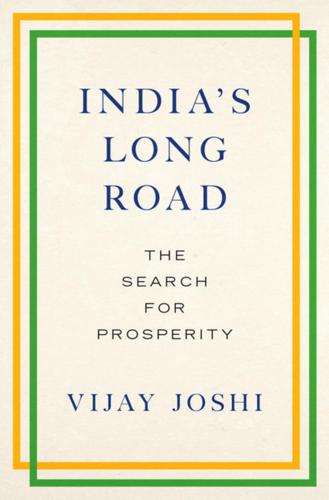
India's Long Road
by
Vijay Joshi
Published 21 Feb 2017
(According to the WTO, every country, except Mongolia, is part of at least one PTA!) This suggests that PTAs are undertaken for motives such as the desire to bind partner countries to lower and more stable levels of ‘behind the border’ barriers to trade. The desire follows quite naturally from the growth of ‘offshoring’, ‘global supply chains’, and ‘international fragmentation of production’. It is now quite usual to find manufactured products whose parts and components are made in several different countries and assembled in yet another country, with only design and coordination functions performed in the home-country headquarters.

Cities Under Siege: The New Military Urbanism
by
Stephen Graham
Published 30 Oct 2009
162 Stephen Flynn, ‘The False Conundrum: Continental Integration versus Homeland Security’, in The Rebordering of North America, Peter Andreas and Thomas Biersteker, eds, New York: Routledge, 2003, 11. 163 Echevarria and Tussing, From ‘Defending Forward’ to a ‘Global Defense-In-Depth’. 164 This term draws on Deborah Cowen’s idea of containing insecurity’ published in her contribution to a book I edited, Disrupted Cities: When Infrastructures Fail, New York: Routledge, 2009. 165 See Keller Easterling, Enduring Innocence, Cambridge MA: MIT Press, 2006. 166 This system organizes 90 per cent of global trade through global supply chains and advanced logistics and delivers 95 per cent of the overseas trade entering the US. 167 ‘When trade and security clash’, The Economist, 4 April 2002. 168 Jon Haveman and Howard Shatz, Protecting the Nation’s Seaports: Balancing Security and Cost, San Francisco: Public Policy Institute of California, 2006. 169 IBM, Expanded Borders, Integrated Controls, marketing brochure. 170 Cowen and Smith After Geopolitics?’.
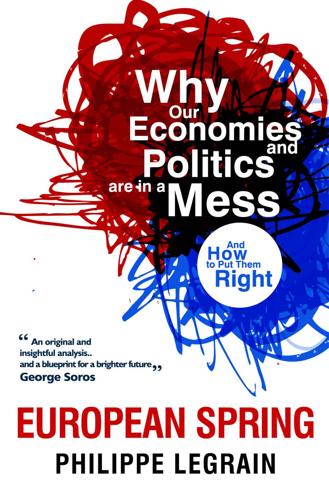
European Spring: Why Our Economies and Politics Are in a Mess - and How to Put Them Right
by
Philippe Legrain
Published 22 Apr 2014
Some of it is reasonably predictable: higher demand for ice cream in summer. Some of it isn’t: out of nowhere, Gangnam Style became a global hit. Big changes often happen unexpectedly. The Berlin Wall falls. The Fukushima earthquake knocks out a big chunk of the Japanese economy and with it crucial links in global supply chains. Hydraulic fracturing (“fracking”) leads to a shale-gas boom that transforms America’s energy landscape – and Europe’s – within a few years. Apple was left for dead at the turn of the century, then vaulted to being the world’s most valuable listed company. American house prices never fell – and then they did.

Chaos Monkeys: Obscene Fortune and Random Failure in Silicon Valley
by
Antonio Garcia Martinez
Published 27 Jun 2016
Piled like Legos on the ship, the boxes arrive at another port and are loaded onto a truck frame, and are driven to their destinations. It’s universal: whether the ship docks in Singapore or Oakland, its cargo will be swiftly loaded and unloaded via the magic of containerization. Intermodal containers make our global supply chain possible. What’s that got to do with ads? Modern digital advertising has also settled on a containerized box—or, rather, a set of them. They’re known as Internet Advertising Bureau (IAB) ad units for desktop ads, and Mobile Marketing Association (MMA) ad units for mobile. They come in the standard sizes, measured in pixels—728×90, 300×250, and so forth—of every banner ad on the Web, with other sizes for mobile.

Algorithms to Live By: The Computer Science of Human Decisions
by
Brian Christian
and
Tom Griffiths
Published 4 Apr 2016
Some of the most fundamental domains of human life, such as the question of what we should put in our bodies, seem curiously to be the ones most dominated by short-lived fads. Part of what enables these fads to take the world by storm is how quickly our culture can change. Information now flows through society faster than ever before, while global supply chains enable consumers to rapidly change their buying habits en masse (and marketing encourages them to do so). If some particular study happens to suggest a health benefit from, say, star anise, it can be all over the blogosphere within the week, on television the week after that, and in seemingly every supermarket in six months, with dedicated star anise cookbooks soon rolling off the presses.
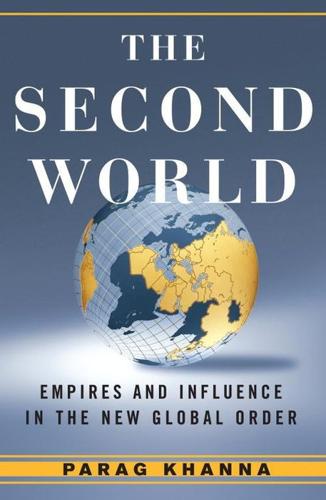
Second World: Empires and Influence in the New Global Order
by
Parag Khanna
Published 4 Mar 2008
As one swerves along its perfectly paved, leafy avenues, tardiness is impossible. “America is third-world compared to us,” Singaporeans frequently joke. “Singapore is virtually synonymous with globalization,” a multinational businessman reminded, pointing out how frequently he has changed jobs with the times. For decades it has constantly shifted its place in the global supply chain, becoming a center of oil-refinery and oil-rig construction even though it has no oil. Its new Biopolis for life sciences (including stem cell) research attracts Western scientists seeking hassle-free employment. The world-class port management, controlled prostitution, casinos, and simplified citizenship for professionals that Dubai envies are all already a reality in “Singapore, Inc.”

Them And Us: Politics, Greed And Inequality - Why We Need A Fair Society
by
Will Hutton
Published 30 Sep 2010
For all these reasons, fiscal policy has become effective again, especially when interest rates are low and the exchange rate is undervalued, so less demand leaks abroad – two conditions currently enjoyed by Britain. It is not a nirvana for fiscal activism: trade openness and the advent of global supply chains mean that some demand will go overseas regardless. But the extreme argument which claims that discretionary fiscal policy has little impact on output and employment no longer holds.13 Even the IMF supports this view. Its research now suggests that fiscal policy is more effective than the old free-market ideology ever conceded, especially after credit crunches.

The Cigarette: A Political History
by
Sarah Milov
Published 1 Oct 2019
But contracts also enable manufacturers to determine the conditions under which tobacco is grown—what fertilizer is applied, what type of curing barns are used—as a precondition to the awarding of a contract. And contracting also subjects farmers to a web of global surveillance. Each bale of tobacco contracted to Philip Morris or R. J. Reynolds is assigned a barcode as it moves through the global supply chain—a web much vaster than anything contemplated by the FDA. Ironically, for all of the ways that sophisticated, computerized farmers embody the cutting edge of agriculture, their position relative to the cigarette manufactures harkens back to the days of the Tobacco Trust, when growers were offered contracts to thwart their collective efforts.

The Finance Curse: How Global Finance Is Making Us All Poorer
by
Nicholas Shaxson
Published 10 Oct 2018
Why are they not regulating tech monopolies like Amazon, Google, Facebook effectively in the public interest, sitting back while they drain most of the advertising profits away from the media groups and others who do the hard work of creating all that content, and shovel the profits into tax havens? Why do they tolerate all those ‘middleman monopolies’ where powerful interests park themselves on the crucial choke points in global supply chains, extracting wealth from all the players in the network, like Veblen’s smug toads snapping up passing flies? Change here will be immensely hard, of course – but without any organised counterforce, it will be impossible. Here’s another way we can think about tackling the finance curse. This is, in essence, the exact opposite of the Competitiveness Agenda, and you might call it ‘smart capital controls’.

Capitalism in America: A History
by
Adrian Wooldridge
and
Alan Greenspan
Published 15 Oct 2018
The miniaturization revolution has reduced transportation costs still further: the computer industry is inherently more global than, say, the concrete industry because it’s so easy to move light, precious computer parts from one part of the world to another. A fifth source of productivity improvement is location. In today’s flattened world of global supply chains and instant communications, we tend to forget what was all too evident to our forebears: that clever location can boost productivity. Entrepreneurs made their fortunes simply by building mills next to waterfalls (which provided free power), or by locating their factories near rivers (which provided free transportation), or by the smart layout of their facilities.
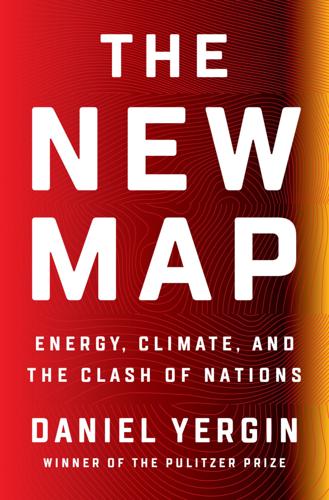
The New Map: Energy, Climate, and the Clash of Nations
by
Daniel Yergin
Published 14 Sep 2020
This signaled a momentous change in the world economy, the entry into the era of the BRICs—Brazil, Russia, India, and China. What had been known as “developing countries” were transmogrified into “emerging markets” by powerful forces—high economic growth, world trade, more open markets, technology and communications, the collapse of the Soviet Union, the opening of China and India, global supply chains, and the overriding power of globalization.4 The growth of the BRICs was dramatic. Between 2003 and 2013, China’s economy grew more than two and a half times over; India’s more than doubled. The world economy grew by just 30 percent, the United States by 17 percent, Europe by 11 percent, and Japan just 8 percent.

Your Computer Is on Fire
by
Thomas S. Mullaney
,
Benjamin Peters
,
Mar Hicks
and
Kavita Philip
Published 9 Mar 2021
Second-Order Large Technical Systems: Platforms as Fast Infrastructures A third temporality appears when we consider what the sociologist Ingo Braun named “second-order large technical systems” (LTSs) built on top of existing infrastructures.9 Braun’s example was the European organ transplant network, which uses information technology to integrate emergency services, air transport, and patient registries to locate fresh donor organs, match them to compatible transplant patients, and deliver them rapidly across the continent. Other examples include the global supply chains of huge enterprises such as Walmart, Ikea, and Alibaba, emerging systems of trans-institutional electronic patient records, and large-scale “enterprise management” software. Certain major infrastructures introduced since the 1970s are second-, third-, or nth-order LTSs. Software is the critical core element.
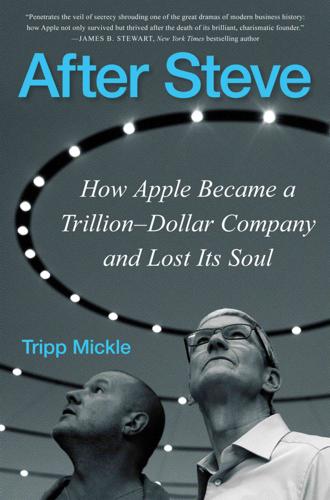
After Steve: How Apple Became a Trillion-Dollar Company and Lost Its Soul
by
Tripp Mickle
Published 2 May 2022
The administration installed two protectionists to lead trade policy. U.S. Trade Representative Robert Lighthizer took office eager to use tariffs to stop Chinese theft of U.S. technology, while Peter Navarro, a trade adviser, called China an economic parasite. They wanted to return portions of the global supply chain to the United States, a perilous prospect for Apple. Cook needed to find a way to show Trump that making an iPhone required more than just assembling it on a Chinese factory floor. In fact, U.S. companies supplied many critical iPhone parts. An idea bubbled up through Apple’s communications team.

The Rise and Fall of the Neoliberal Order: America and the World in the Free Market Era
by
Gary Gerstle
Published 14 Oct 2022
Western and Japanese corporations rushed in to take advantage of the economic opportunities that Deng had dangled before them, which included a huge number of Chinese laborers now in need of jobs and willing to work for a pittance of what parallel groups of employees in Japan, Europe, and the United States were earning. Across the 1990s alone, China’s exports quintupled, making its manufacturing sector a critical part of global supply chains. World trade in manufactured goods doubled in the 1990s and doubled again in the 2000s. Everywhere, except in Cuba, North Korea, and perhaps Albania, the once impenetrable Iron Curtain was disintegrating. Capitalism had become aggressively global in a way it had not been since before the First World War.11 Another consequence of communism’s fall may be less obvious but is of equal importance: It removed what remained in America of the imperative for class compromise.

Material World: A Substantial Story of Our Past and Future
by
Ed Conway
Published 15 Jun 2023
The White House alleges that the company has intimidated and threatened its workers. The Chinese producers, and Beijing itself, have in turn accused the US of imposing these sanctions in an effort to protect its own economy and stifle China’s. But here’s the thing: while China controls much of the global supply chain of metallic silicon and solar polysilicon, it has yet to crack the manufacturing techniques needed to create wafers for the most advanced silicon chips. In much the same way as it has yet to master the processes Wacker uses to turn out polysilicon with less than one in a billion atoms of impurity, it has not yet refined the Czochralski process enough to produce wafers as perfect as those pulled out of the crucibles at Shin-Etsu.

The Price Is Wrong: Why Capitalism Won't Save the Planet
by
Brett Christophers
Published 12 Mar 2024
In the case of solar PV, the percentage accounted for by upfront installation is even higher: usually around 90 per cent.9 That is to say, 90 per cent of the costs of a facility that can generate electricity for up to thirty years must be met before a single watt of power has been produced. Renewables’ cost structure, it will become clear, is terrifically important: it plays a hugely significant role in shaping investment decision making in the sector, in ways we shall explore closely in subsequent chapters. Consider, for instance, what happened when global supply chains buckled in 2021 as they failed to respond elastically to the resurgence in global economic activity associated with countries beginning to re-emerge from COVID-19 lockdowns. By the end of that year, the IEA reported, the prices of polysilicon, steel and aluminium – all materials that are indispensable for solar or wind technologies – had risen by approximately 200, 70 and 40 per cent respectively compared to the end of 2020.10 Needless to say, turbine and panel manufacturers passed on as much of these cost increases to their customers in the generation business as they possibly could, resulting in price rises for such equipment of 10 to 20 per cent.
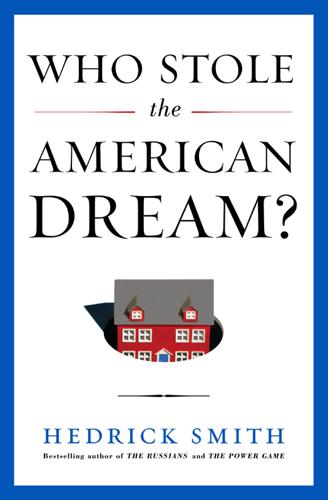
Who Stole the American Dream?
by
Hedrick Smith
Published 10 Sep 2012
“And as the item is scanned through the front checkout, the item is tracked, and you’re able to determine what flavor’s sellin’, how much you’re makin’ on that item … and an order is automatically generated that evening at midnight and it’s sittin’ back on the shelf the next night or the following night…. It’s just really incredible.” “Wal-Mart, as an efficiency machine, has just done better than any other U.S. retailer—or, perhaps, any other U.S. company in history,” observed Duke University professor Gary Gereffi, who studies global supply chains. “They were more single-minded in terms of global cost cutting and internal efficiency than any other U.S. retailer. And that helps us understand how and why they were able to pass companies like Kmart and Sears that were the early leaders in U.S. retailing and offshore sourcing.” The Shift from “Push” to “Pull” With its blinding informational efficiency, Wal-Mart became a world leader in logistics, number one in the science of just-in-time supply from a global network of suppliers.
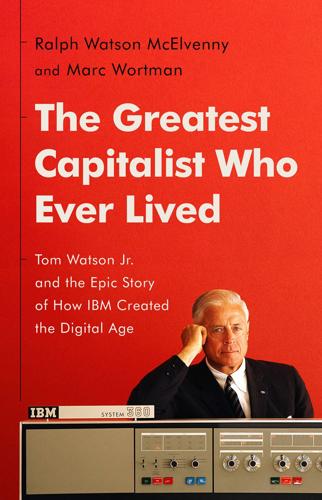
The Greatest Capitalist Who Ever Lived: Tom Watson Jr. And the Epic Story of How IBM Created the Digital Age
by
Ralph Watson McElvenny
and
Marc Wortman
Published 14 Oct 2023
Microsoft’s 1981 agreement with IBM made that company; Texas Instruments thrived as an IBM supplier; Oracle largely grew out of work IBM did developing relational database management systems, while some of Google’s and other cloud-based search tools make use of them as well. Take away optical scanners and UPC codes, then efficient global supply chains, massive warehouses of goods, logistical and delivery systems—and retail giants like Amazon and others might not exist. Without DRAM developed at IBM Research, perhaps there’d be no Apple iPhones. AI is sweeping the world and that, too, traces back in part to IBM’s “teaching” a computer to play checkers while Skipper ran the firm.

Deep Utopia: Life and Meaning in a Solved World
by
Nick Bostrom
Published 26 Mar 2024
So are larger vessels: losses from water resistance is lower, per unit of cargo, for bigger ships. Likewise, larger furnaces waste less of their heat. And so on. Running things at scale therefore tends to lower unit costs. More importantly, larger social scale enables greater specialization, which increases efficiency. Consider the global supply chain that is necessary for producing a leading-edge microprocessor, and the myriad forms of specialized knowledge and equipment that it involves. There needs to be a large customer base to support all these fixed costs. A world population of a hundred million people may not be sufficient to make it both possible and profitable to produce all the required inputs.
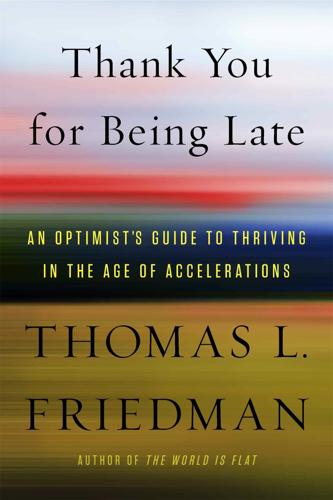
Thank You for Being Late: An Optimist's Guide to Thriving in the Age of Accelerations
by
Thomas L. Friedman
Published 22 Nov 2016
Physical technology innovations make new social technologies possible, like fossil fuel technologies made mass production possible, smartphones make the sharing economy possible. And vice versa, social technologies make new physical technologies possible—Steve Jobs couldn’t have made the smartphone without a global supply chain. But there is one big difference between these two forms of technology, he added: Physical technologies evolve at the pace of science—fast and getting exponentially faster, while social technologies evolve at the pace at which humans can change—much slower. While physical technology change creates new marvels, new gadgets, better medicine, social technology change often creates huge social stresses and turmoil, like the Arab Spring countries trying to go from tribal autocracies to rule of law democracies.

The Price of Time: The Real Story of Interest
by
Edward Chancellor
Published 15 Aug 2022
By the following summer, Evergrande, the country’s largest developer, with debts of around $300 billion, was on the verge of failure. Housing sales collapsed. The ‘bubble that never pops’ had popped. Bursting property bubbles are usually accompanied by deflation. In the West, on the other hand, the pandemic brought a gust of inflation. Global supply chains snapped as countries locked down. And once lockdowns were lifted, the United States and other Western countries faced labour shortages. Wage growth picked up. The price of a barrel of oil, which had briefly turned negative in April 2020, now surged past $75 and continues rising. Natural gas prices climbed too.

Power and Progress: Our Thousand-Year Struggle Over Technology and Prosperity
by
Daron Acemoglu
and
Simon Johnson
Published 15 May 2023
Technology does not have a preordained direction, and nothing about it is inevitable. Technology has increased inequality largely because of the choices that companies and other powerful actors have made. Globalization is not separate from technology in any case. The huge boom in imports from countries thousands of miles away and the complex global supply chains involved in the offshoring of jobs to China or Mexico are enabled by advances in communication technologies. With better digital tools to track and coordinate activities in faraway facilities, companies reorganized production and sent offshore many of the assembly and production tasks they used to perform in-house.
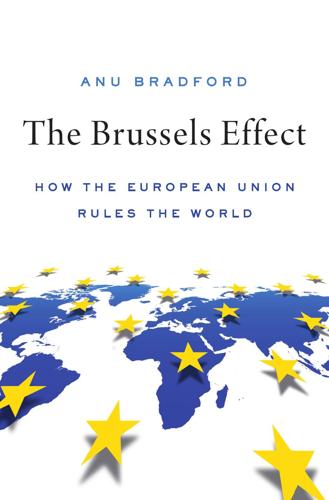
The Brussels Effect: How the European Union Rules the World
by
Anu Bradford
Published 14 Sep 2020
The pharmaceutical industry is the prime example of an industry where R&D is crucial, giving companies the incentive to merge in an effort to spread their R&D expenditures across a greater volume of sales. This leads to a higher incentive for production of largely standardized pharmaceutical products for the global marketplace.197 We also expect to see uniform production in capital-intensive industries, or in industries relying on highly integrated global supply chains or inward foreign direct investment (FDI) in technology. For example, the majority of FDI in developing countries’ automotive sectors originates from multinational corporations that also operate in developed countries’ highly regulated markets. These multinationals are unlikely to change their production processes that were engineered to comply with the more stringent standards prevailing in the markets of major developed countries.
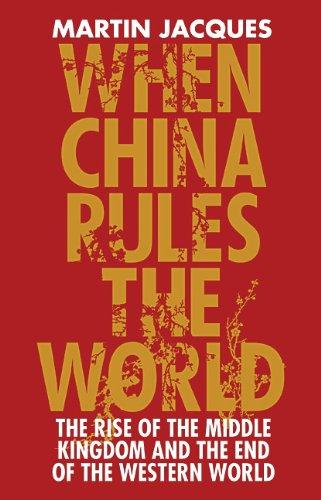
When China Rules the World: The End of the Western World and the Rise of the Middle Kingdom
by
Martin Jacques
Published 12 Nov 2009
An obvious area is commodities, with Chinalco’s stake in Rio Tinto, the Anglo-Australian mining group, an example.130 With many Western companies suffering from a serious shortage of cash as a result of the credit crunch, the takeover opportunities for cash-rich Chinese companies, the oil companies in particular, are likely to be considerable, with Western political opposition weakened by the recession.131 Meanwhile the establishment of the China Investment Corporation, armed with funds of $200 billion, of which some $80 billion is for external investment, could give China growing potential leverage over those foreign companies in which it decides to invest.132 Finally, we should not forget the increasing importance of Chinese subcontractors as ‘systems integrator’ firms in the global supply chain of many foreign multinationals, a development which might, in the long term at least, prove to have a wider strategic significance for these multinationals in terms of their management, research capability and even ownership.133 Crucial to the creation of international firms is overseas direct investment.
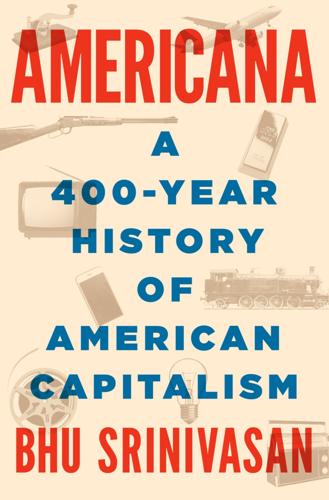
Americana: A 400-Year History of American Capitalism
by
Bhu Srinivasan
Published 25 Sep 2017
As people left the self-sufficient village farm, where shelter, food, and clothing were simple domestic responsibilities, the idea of losing one’s place in the specialized economy was a danger that few had been exposed to. • • • TO MAXIMIZE EFFICIENCY, just as people specialized in narrowly defined tasks in the English factories, nations fell into specific functions. America’s place in this global supply chain came about by accident on a 1792 boat ride. On it was the widow of Nathanael Greene, a notable general from the Revolutionary War. A woman of society, Catharine Greene was making her return home to South Carolina from her annual summer in Newport, Rhode Island. On the leg of the voyage from New York City to the port of Savannah, traveling with her family, Mrs.

Americana
by
Bhu Srinivasan
As people left the self-sufficient village farm, where shelter, food, and clothing were simple domestic responsibilities, the idea of losing one’s place in the specialized economy was a danger that few had been exposed to. • • • TO MAXIMIZE EFFICIENCY, just as people specialized in narrowly defined tasks in the English factories, nations fell into specific functions. America’s place in this global supply chain came about by accident on a 1792 boat ride. On it was the widow of Nathanael Greene, a notable general from the Revolutionary War. A woman of society, Catharine Greene was making her return home to South Carolina from her annual summer in Newport, Rhode Island. On the leg of the voyage from New York City to the port of Savannah, traveling with her family, Mrs.
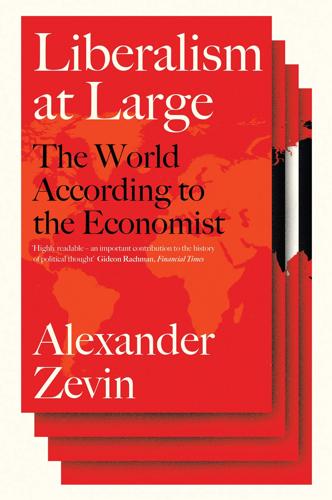
Liberalism at Large: The World According to the Economist
by
Alex Zevin
Published 12 Nov 2019
In alliance with the evangelical right, neocons not only showed great tactical nous. They demonstrated how religious observance went hand in hand with wealth creation, in a kind of generalized ethic of capitalism. Future Perfect opened in New York at a Bruderhof retreat, a community which embraced global supply chains and the internet for its toy business – proof that ‘if the modern marketplace can do the devil’s work, it can also do the Lord’s.’90 America was not just economically and militarily dominant (‘superpower is too weak a word’), crucially it was also the most devout state in the West. This explained the productivity gains of the New Economy.
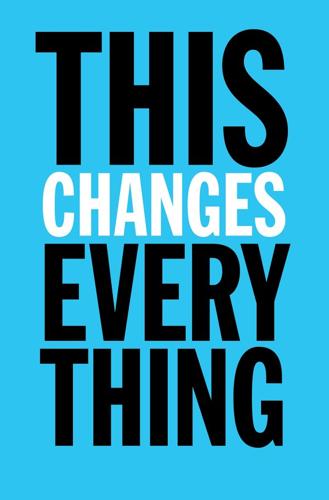
This Changes Everything: Capitalism vs. The Climate
by
Naomi Klein
Published 15 Sep 2014
Stacy Mitchell, “Walmart Heirs Quietly Fund Walmart’s Environmental Allies,” Grist, May 10, 2012; Stacy Mitchell, “Walmart’s Assault on the Climate,” Institute for Local Self-Reliance, November 2013. 42. “2011 Grant Report,” Walton Family Foundation, http://www.waltonfamilyfoundation.org; “Walmart Announces Goal to Eliminate 20 Million Metric Tons of Greenhouse Gas Emissions from Global Supply Chain,” Environmental Defense Fund, press release, February 25, 2010; Daniel Zwerdling and Margot Williams, “Is Sustainable-Labeled Seafood Really Sustainable?,” NPR, February 11, 2013; “Walmart Adds a New Facet to Its Fine Jewelry Lines: Traceability,” Walmart, July 15, 2008, http://news.walmart.com; Mitchell, “Walmart Heirs Quietly Fund Walmart’s Environmental Allies.” 43.

Public Places, Urban Spaces: The Dimensions of Urban Design
by
Matthew Carmona
,
Tim Heath
,
Steve Tiesdell
and
Taner Oc
Published 15 Feb 2010
Travel distances for leisure and vacation will also become shorter, with transatlantic and inter-continental holidays again becoming once-in-a-lifetime experiences. What will also be significant is shorter distances to supply and service cities and other urban areas. The highly integrated, global supply chains of companies such as Walmart, which ruthlessly exploit variations in labour costs, will not be sustainable in the face of steeply rising transport costs. Food supply and agriculture will also be affected – flying fresh fruit, vegetables, meats and fish thousands of miles will no longer be affordable, or even possible.
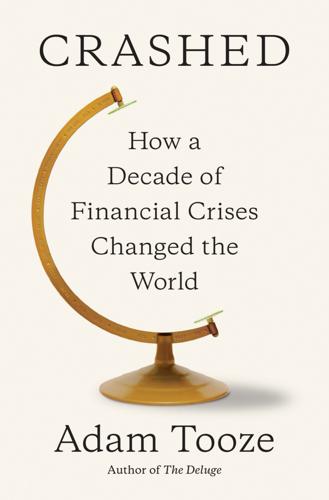
Crashed: How a Decade of Financial Crises Changed the World
by
Adam Tooze
Published 31 Jul 2018
Paul Krugman has vigorously and convincingly defended the 1930s-era IS-LM as essential to understanding the mechanics of the recession and the sluggish recovery; see P. Krugman, “IS-LMentary” (Conscience of a Liberal Blog), New York Times, October 9, 2011, and “Economics in the Crisis” (Conscience of a Liberal Blog), New York Times, March 5, 2012. 21. R. Baldwin, “Global Supply Chains: Why They Emerged, Why They Matter, and Where They Are Going,” in Global Value Chains in a Changing World, ed. D. K. Elms and P. Low (Geneva: WTO, 2013), 13–60. 22. H. S. Shin, “Globalisation: Real and Financial,” BIS 87th Annual General Meeting, https://www.bis.org/speeches/sp170625b_slides.pdf. 23.